
- Visa Application Helpline

Subscribe to our newsletter
Learn how to live a sustainable long-term travel lifestyle.
By signing up, you agree to the our terms and our Privacy Policy agreement.
Top 27 Places to visit in Darjeeling, Explore the Beautiful Hills of Darjeeling
Top 10 things to do when traveling to shimla: shimla travel guide, the ultimate paris travel guidelines for first timers | top attractions & things to do.

The Ultimate China Travel Guide: Unlocking China’s Splendors
China, a country of immense beauty and captivating diversity, is a destination that promises to leave you with an indelible impression on every traveler. With its rich tapestry of ancient history, breathtaking landscapes, vibrant culture, and modern marvels, this vast nation offers something for every type of adventurer.
In this blog, I will share with you the ultimate China Travel Guide to assist you in uncovering the most unforgettable experiences that this extraordinary country has to offer.
Find the best time to visit China, plan your trip, explore top destinations, and budget for your adventure to make the most out of your trip to China!
WHAT IS COVERED IN THIS ARTICLE?
The Ultimate China Travel Guide: How to Plan a Trip to China

A trip to China can be an exciting adventure, as it offers you a rich tapestry of cultural experiences, breathtaking landscapes, and historical marvels. However, to make the most of your journey and avoid unnecessary hiccups, thorough planning is essential.
But why should you put so much effort on planning this trip? Thorough planning is essential for a successful trip to diverse China as it:
- It maximizes your overall experience.
- It eases communication with locals.
- Planning simplifies the visa application process.
- It helps in optimizing your budget for the trip.
- It also allows customization of your visit to match your interests.
Step-by-Step Guide on Trip Planning
Here’s a step-by-step guide to help you plan your trip to China effectively:
Determine Your Travel Goals: Identify the regions and attractions you want to explore, whether it’s the Great Wall of China, the Terracotta Army, or the bustling streets of Beijing.
Set a Budget: Determine how much you’re willing to spend on your trip and allocate funds for different expenses such as flights, accommodations, food, and activities accordingly.
Check Visa Requirements: Depending on your nationality, China’s visa requirements may vary. Research and apply for the appropriate visa well in advance.
Choose the Best Time to Visit: China experiences different climates in different regions. Consider the weather and your preferred travel dates when deciding the best time to visit.
Book Flights: Search for flights to China, compare prices, and book your tickets. Major international airports like Beijing, Shanghai, and Guangzhou are common entry points.
Accommodation: Research and book your accommodations, considering your budget and preferred location. Options range from luxury hotels to budget-friendly hostels.
Create an Itinerary: Plan your daily activities and sightseeing. Include popular attractions, local experiences, and time for relaxation.
Learn About Local Culture: Familiarize yourself with Chinese customs and etiquette, which can enhance your travel experience.
Pack Smart: Pack suitable clothing and essential items for your trip, considering the weather and activities.
Stay Informed: Keep an eye on travel advisories and any specific travel restrictions or health-related guidelines related to China, especially if you’re traveling during unusual times.
By following these steps, you’ll be well-prepared for your adventure in China and can focus on immersing yourself in the country’s wonders!
Tips on Visas, Flights, and Accommodations
- Visas: Check the Chinese embassy or consulate website for the most up-to-date visa requirements. Ensure your passport is valid for at least six months beyond your intended departure date.
- Flights: Use flight comparison websites or apps to find the best deals on airfare. Be flexible with your travel dates to potentially score lower prices.
- Accommodations: Consider booking your accommodations through trusted platforms like Airbnb, Booking.com , or directly through hotels’ websites. Read reviews and select lodgings that cater to your preferences.
Best Time to Visit and Travel Restrictions
Here is a complete guide covering all the seasons:
Spring in China
Spring in China is a beautiful time to visit, with landscapes bursting into bloom. The weather is mild and sunny, with average temperatures ranging from 10 to 20 degrees Celsius. This makes it ideal for sightseeing and outdoor activities, such as hiking, biking, and visiting temples and gardens!
Some of the best places to visit in China during the spring include:
- Beijing : The Forbidden City, the Great Wall of China, and the Temple of Heaven are all must-see attractions in Beijing. During the spring, the city’s parks and gardens are also in full bloom.
- Shanghai : Shanghai is a vibrant city with a lot to offer visitors. In the spring, you can enjoy the city’s many parks and gardens, visit the Bund waterfront, or take a boat trip on the Huangpu River.
- Xi’an : Xi’an is home to the Terracotta Warriors, one of the most amazing archaeological discoveries of all time. In the spring, you can also visit the city’s many temples and mosques, or take a day trip to Mount Huashan, a sacred mountain known for its challenging hiking trails.
- Guilin : Guilin is known for its stunning scenery, including limestone karsts, rivers, and lakes. In the spring, you can take a boat cruise on the Li River to see the karsts up close, or visit the nearby town of Yangshuo for its laid-back atmosphere and scenic bike trails.
Summer in China
Summer in China can be hot and humid, especially in the south. Average temperatures range from 25 to 35 degrees Celsius, with high humidity levels. However, there are still many things to see and do in China during the summer, such as visiting beaches, hiking in the mountains, and attending festivals!
Some of the best places to visit in China during the summer include:
- Sanya : Sanya is a popular beach resort town in southern China. In the summer, you can enjoy the city’s many beaches, go swimming, snorkeling, or diving.
- Lijiang : Lijiang is a UNESCO World Heritage Site known for its well-preserved ancient town. In the summer, you can enjoy the town’s many canals and bridges, or take a day trip to Jade Dragon Snow Mountain.
- Harbin : Harbin is the capital of Heilongjiang province in northeastern China. It is known for its cold winters and its annual International Ice and Snow Festival.
Autumn in China
Autumn is another beautiful time to visit China. The weather is mild and sunny, with average temperatures ranging from 15 to 25 degrees Celsius. The leaves on the trees turn red and yellow, creating stunning scenery throughout the country.
Some of the best places to visit in China during the autumn include:
- Beijing : The Forbidden City and the Temple of Heaven are especially beautiful in the autumn, when the leaves on the trees turn red and yellow.
- Jiuzhaigou National Park : Jiuzhaigou National Park is a UNESCO World Heritage Site known for its stunning lakes, waterfalls, and forests. In the autumn, the park’s leaves turn red and yellow, creating a magical landscape.
- Huangshan Mountain : Huangshan Mountain is a sacred mountain in Anhui province. It is known for its towering granite peaks, pine trees, and clouds. In the autumn, the mountain’s leaves turn red and yellow, creating a breathtaking sight.
Winter in China
Winter in China can be very cold, especially in the north. Average temperatures range from -10 to 5 degrees Celsius, with snowfall common in many parts of the country. However, there are still many things to see and do in China during the winter, such as skiing, visiting hot springs, and attending festivals!
Some of the best places to visit in China during the winter include:
- Harbin : Harbin is known for its cold winters and its annual International Ice and Snow Festival. During the festival, you can see giant ice sculptures, snow castles, and ice slides.
- Yabuli Ski Resort : Yabuli Ski Resort is one of the largest ski resorts in China. It is located in Heilongjiang province and offers a variety of ski trails for all levels of skiers and snowboarders.
- Guilin : Guilin is also a popular winter destination, as the weather is mild and there are fewer tourists than in the summer.
No matter what time of year you choose to visit China, you are sure to have a memorable experience!
Top 10 Tourist Attractions in China
1. the great wall of china.

First on this list is The Great Wall of China , an architectural marvel that is etched into history. It beckons you to embark on an awe-inspiring journey through time. Located in northern China, this UNESCO World Heritage site is a testament to human ingenuity and perseverance.
You must visit here to experience the majestic allure of China’s rich history and resilience. Visiting this iconic structure allows you to walk in the footsteps of emperors and soldiers, offering a profound connection to the nation’s past.
The main attractions you must visit along the Great Wall include popular sections like Badaling, Mutianyu, and Jinshanling, each with its unique features and scenic vistas. You can hike along the wall, explore watchtowers, and capture breathtaking panoramic views of the surrounding landscape!
Best Time To Visit The Great Wall of China: The best time to visit is during the spring or autumn when the weather is pleasant, and the landscapes burst with color. To avoid the crowds, consider weekdays and early mornings for a more serene experience.
2. The Terracotta Army

Next is the Terracotta Army , an archaeological wonder nestled in Xi’an that invites you to delve into the fascinating world of ancient history and artistic mastery. This UNESCO World Heritage site is a testament to the power and legacy of China’s first emperor, Qin Shi Huang!
You must visit here to view this testament to human ingenuity and artistry. It’s an ancient marvel that showcases the craftsmanship of thousands of life-sized clay soldiers, horses, and chariots, created over two millennia ago to guard the tomb of Emperor Qin. A visit offers you a rare glimpse into the depths of China’s rich imperial history!
The main attractions you should visit within the site include the three massive pits containing the Terracotta Army, each revealing different aspects of the ancient soldiers’ roles and weaponry.
Best Time To Visit The Terracotta Army: The best time to visit is during the spring or autumn when the weather is pleasant and the site is less crowded. Arrive early in the morning to make the most of your visit and avoid the midday rush.
3. The Forbidden City

Another amazing place to visit in China is The Forbidden City , a UNESCO World Heritage site that beckons you to embark on a journey through the heart of imperial China. Located in the heart of Beijing, this historic palace complex is a must-visit destination if you seek a glimpse into the rich tapestry of Chinese history.
You must visit Forbidden City because it is an unparalleled repository of Chinese culture and heritage. As the former imperial palace for over five centuries, it offers you a unique opportunity to witness the grandeur and opulence of the Ming and Qing dynasties.
The main attractions within the Forbidden City you must visit include the Hall of Supreme Harmony, the Palace of Heavenly Purity, and the Imperial Garden. Don’t miss the Palace Museum, which houses countless treasures, or the awe-inspiring Meridian Gate!
Best Time To Visit The Forbidden City: The best time to visit is during the spring or autumn when the weather is mild, and the gardens are in full bloom. Avoid the peak summer and winter months to enjoy a more comfortable experience.
4. The Li River Scenic Area

The next best place to visit in China is The Li River Scenic Area . Here, You get to explore an enchanting natural landscape that has inspired poets and artists for centuries. Located in the Guilin, Guangxi Zhuang Autonomous Region of China, this destination beckons you to experience the sublime beauty of the region.
You must visit here to experience the otherworldly karst landscape, where picturesque limestone peaks rise dramatically from the water’s edge. As you drift along the river on a leisurely cruise, you’ll be surrounded by breathtaking scenery straight out of a traditional Chinese painting.
The main attractions you must not miss within the Li River Scenic Area include the unique karst formations such as Elephant Trunk Hill, Nine Horses Mountain, and the Yellow Cloth Shoal. The charming town of Yangshuo, with its vibrant street markets, is another highlight you must explore.
Best Time To Visit The Li River Scenic Area: The best time to visit is during the spring or autumn when the weather is pleasant, and the landscape is at its most picturesque. The lush greenery of spring and the golden hues of autumn enhance the region’s natural beauty.
5. The Zhangjiajie National Forest Park

Next place on this list is Zhangjiajie National Forest Park which is a natural wonder that invites you to step into a realm of surreal landscapes and captivating beauty. Located in Hunan Province, this UNESCO World Heritage site is a must-visit destination for nature enthusiasts and adventure seekers!
If you love nature, you must visit here to explore its towering sandstone pillars and lush greenery, which served as inspiration for the breathtaking landscapes in the movie “Avatar.” It offers an otherworldly experience that feels like a journey through a fantasy world!
The main attractions within the park you can explore include the Avatar Hallelujah Mountain, the mesmerizing Tianzi Mountain, and the awe-inspiring Golden Whip Stream. The Zhangjiajie Glass Bridge, the world’s highest and longest glass-bottomed bridge, is also a thrilling addition to your visit.
Best Time To Visit The Zhangjiajie National Forest Park: The best time to visit is during the spring or autumn when the weather is comfortable, and the landscape is at its most vibrant. To avoid crowds, aim for weekdays and early mornings.
6. Potala Palace
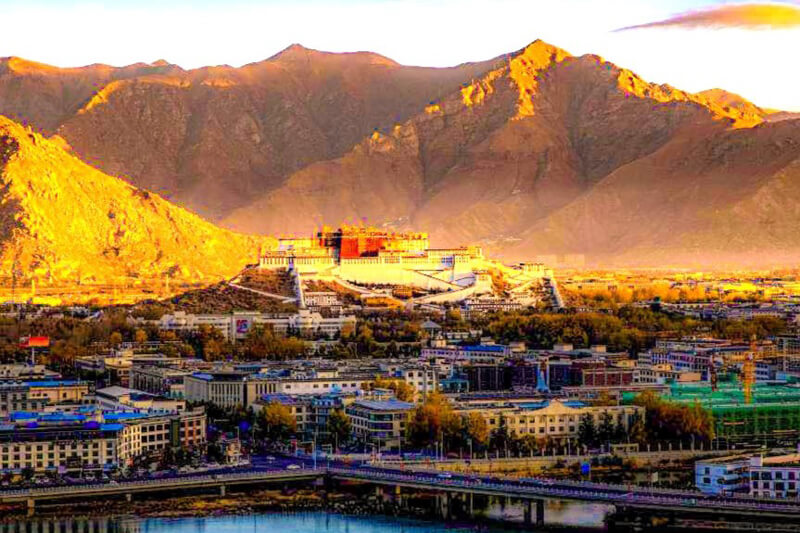
The Potala Palace , a UNESCO World Heritage site in Lhasa, Tibet, invites you to embark on a spiritual and architectural journey like no other. Perched on the Red Hill, this iconic palace is a testament to Tibetan culture, history, and the enduring legacy of Buddhism.
You must visit here to explore this symbol of Tibetan Buddhism and a reflection of Tibet’s rich heritage. It’s not only an architectural masterpiece but also a pilgrimage site for Buddhists worldwide. Visiting here is an opportunity for you to immerse yourself in the spiritual and cultural heart of Tibet!
The main attractions within the Potala Palace include the White Palace, the Red Palace, and the sacred chapels and shrines. The murals, sculptures, and ancient artifacts provide you a glimpse into Tibetan history and artistry.
Best Time To Visit The Potala Palace: The best time to visit is during the spring or early autumn when the weather is relatively mild, and the skies are clear. Be aware that the palace has limited daily visitor slots, so it’s advisable to book your tickets well in advance.
7. Emperor Qinshihuang’s Mausoleum Site Museum

The next amazing place to visit in China is the Emperor Qinshihuang’s Mausoleum Site Museum . Located in Xi’an, China, it is an archaeological wonder that invites you to journey back in time to the ancient Chinese empire. This UNESCO World Heritage site is a testament to the First Emperor’s grandeur and the rich history of the Qin Dynasty.
You must visit here as this museum is home to the renowned Terracotta Army, an army of life-sized clay soldiers and horses that were buried alongside the First Emperor to protect him in the afterlife. It’s also a remarkable display of ancient craftsmanship and an extraordinary historical artifact.
The main attraction within the museum is, of course, the Terracotta Army, but it also includes various other artifacts and exhibits that provide you insights into the life and times of Emperor Qin Shi Huang. The Bronze Chariots and Horses Exhibition Hall is a must-see addition.
Best Time To Visit Emperor Qinshihuang’s Mausoleum Site Museum: The best time to visit is during the spring or autumn when the weather is comfortable, and the crowds are less overwhelming. Be sure to arrive early to avoid the peak visitor hours.
8. The Bund

The Bund , a historic waterfront promenade in Shanghai, is another gorgeous place for you to experience the city’s rich past and vibrant present. This iconic destination is a testament to Shanghai’s evolution from a trading port to a modern metropolis.
You must visit here to experience this captivating juxtaposition of old and new. On one side, you’ll find a collection of colonial-era buildings showcasing European architecture, while on the other, you’ll be greeted by the futuristic skyscrapers of Pudong.
The main attractions along The Bund you can visit include the Peace Hotel, Customs House, and the Bund Sightseeing Tunnel, which takes you beneath the river to Pudong. The area comes to life at night when the buildings are illuminated, creating a breathtaking urban spectacle!
Best Time To Visit The Bund: The best time to visit is in the evening, as the Bund truly comes alive with its dazzling lights and stunning skyline views. The months of spring and autumn offer the most pleasant weather for exploring this iconic waterfront.
9. Leshan Giant Buddha

The Leshan Giant Buddha is another perfect place to visit in China. Located near Leshan City in Sichuan, It is a monumental masterpiece of ancient art and engineering that calls you to explore its serene majesty. This UNESCO World Heritage site is a captivating symbol of Buddhism’s enduring influence and a testament to human ingenuity.
You must visit here to see the largest stone Buddha statue in the world, standing at a towering 71 meters (233 feet) in height. Carved into the cliffside during the Tang Dynasty, it’s not just a testament to religious devotion but also an incredible engineering marvel. Visiting here offers a profound sense of reverence and appreciation for both history and culture!
The main attraction is, of course, the Giant Buddha itself, which you can explore from various vantage points, including a boat ride on the river. The surrounding area also includes temples, shrines, and stunning natural scenery, providing a well-rounded experience.
Best Time To Visit Leshan Giant Buddha: The best time to visit is during the spring or autumn when the weather is pleasant and the crowds are relatively smaller. Plan your visit in the morning to avoid the midday rush.
10. Chengdu Research Base of Giant Panda Breeding

The last, but certainly not the least, best place to visit in China is the Chengdu Research Base of Giant Panda Breeding , nestled in the heart of Sichuan. It offers you a unique opportunity for panda enthusiasts and nature lovers to witness the world’s most beloved endangered species up close. This renowned research facility is a sanctuary for giant pandas and is dedicated to their conservation and breeding.
You must visit here and get a rare chance to observe giant pandas in a semi-wild environment. As the leading center for panda research and breeding, it plays a crucial role in preserving these iconic creatures. Your visit not only supports their conservation but also offers a remarkable educational experience!
Of course, The main attraction is the giant pandas themselves. You can watch them roam, play, and even eat bamboo, which is their favorite food. The base is also home to other wildlife species, including red pandas, which adds to the experience.
Best Time To Visit Chengdu Research Base of Giant Panda Breeding: The best time to visit is during the morning when the pandas are most active and before the crowds arrive. Spring and autumn are ideal seasons, as the weather is comfortable, and the pandas are often more active.
The Best Part of China to Visit
China, a diverse and culturally rich country, offers a range of regions for you to discover, tailored to your preferences as a traveler.
- Coastal Cities:
- Shanghai : A modern hub where you can enjoy shopping and vibrant nightlife.
- Beijing : Immerse yourself in history at the Forbidden City and Great Wall.
- Hong Kong : Experience a unique blend of eastern and western influences in this bustling city.
- Scenic Natural Landscapes:
- Guilin : Delight in picturesque karst landscapes and explore ancient villages.
- Zhangjiajie : Hike among the breathtaking “Avatar Hallelujah Mountain.”
- Jiuzhaigou Valley: Find serenity in crystal-clear lakes and cascading waterfalls.
- Historical and Cultural Sites:
- Xi’an : Discover the Terracotta Army and walk along the ancient city wall.
- Chengdu : Experience history, culture, and savor delicious Sichuan cuisine.
- Pingyao : Step back in time in a well-preserved walled city from the Ming and Qing dynasties.
- Ethnic Minority Regions:
- Yunnan : Immerse yourself in unique cultural experiences and explore ethnic diversity.
- Tibet : Embark on a spiritual and adventurous journey to discover Tibetan culture and high-altitude landscapes.
In conclusion, the best part of China for you to explore depends on your specific interests as a traveler.
How Much Does It Cost to Visit China
The cost of visiting China can vary widely depending on your travel style, preferences, and the cities you plan to explore. Here’s a breakdown of typical expenses for a trip to China:
- Accommodation: Accommodation costs vary from budget to luxury options. In major cities like Beijing and Shanghai, a mid-range hotel might cost $80 to $100 per night, while luxury hotels can exceed $200. Budget travelers can find hostels or guesthouses for $30 to $50 per night.
- Food: Chinese cuisine is diverse and budget-friendly. Street food and local restaurants offer affordable meals for as little as $5, while dining in upscale restaurants can cost $20 or more. A daily food budget can range from $15 to $40, depending on your preferences.
- Transportation: Transportation in China is efficient and budget-friendly. Subway and bus rides are usually under $1, while long-distance bullet train tickets range from $50 to $200. Domestic flights cost $100 to $300, but consider economical high-speed trains for city-to-city travel when budgeting.
- Activities: Entrance fees to popular tourist sites vary, with some costing $10 to $30, and others being free. Cultural activities, shows, and guided tours may add to your expenses. Budget an extra $10 to $30 per day for activities.
Budgeting tips:
- Opt for local street food and eateries to save on food costs.
- Consider using public transportation and walking to explore cities.
- Plan your trip during the shoulder seasons to find better deals on accommodation and flights.
- Purchase a local SIM card or use Wi-Fi to avoid international data roaming charges.
China offers a wide range of options to suit different budgets, from affordable backpacking to luxurious travel. Careful planning and research can help you make the most of your budget and have a memorable experience in this diverse and culturally rich country.
China offers everyone a wide array of attractions, each steeped in history and culture. Planning a trip to China involves thoughtful consideration of expenses and preferences. From choosing accommodations to savoring the diverse culinary scene and utilizing efficient transportation, you can personalize their experiences to match their budgets and interests.
With all the incredible wonders and experiences China has to offer, doesn’t the charm of this country call out to you?
If you enjoyed reading about ways to make the most of your China trip, do check out our other travel inspiration blogs. If you have your own adventurous stories to share, we would love to hear from you.
Frequently Asked Questions (FAQ’s)
What are five fun things to do in china.
Five fun things to do in China include exploring the Great Wall, visiting the Terracotta Army, enjoying traditional tea ceremonies, experiencing vibrant street markets, and trying authentic Chinese cuisine.
Is China cheap or expensive?
China’s cost can vary, but it’s generally considered an affordable travel destination, offering both budget and luxury options.
What is China unique for?
China is unique for its rich history, diverse cultures, stunning natural landscapes, and the Great Wall, one of the world’s most iconic landmarks.
Is China tourist friendly?
China is generally tourist-friendly, with many English-speaking services and a growing tourism infrastructure.
Who visited China the most?
China’s most visited by tourists from within Asia, with countries like South Korea, Japan, and the United States also contributing significant numbers.
What is a popular activity in China?
A popular activity in China is practicing Tai Chi in parks, a traditional martial art that promotes health and relaxation.
What is China’s favorite food?
Popular Chinese foods include dishes like Peking duck, dumplings, and various regional cuisines, with rice and noodles being staples.
Related Posts
Maldives travel guide: tourist places, culture & budget breakdown to plan a trip to maldives, top 25 best countries to visit: your ultimate travel destination guide, the 20 best things to do in medina: make your pilgrimage even more satisfying, the top 13 highest motorable roads in the world: dangers & route details.
Save my name, email, and website in this browser for the next time I comment.
This site uses Akismet to reduce spam. Learn how your comment data is processed .
Type above and press Enter to search. Press Esc to cancel.

China Itinerary: The Perfect Two Week Itinerary in China
China, the second largest country in the world, is one of the most diverse and contrasting destinations on the planet. Ancient traditions and complex history are sharply contrasted with the modern and futuristic architecture and transport. China can be loud and chaotic, and also rustic and remote. Having travelled extensively through the country, it really is like nowhere I’ve even been. And planning our China itinerary was one of the biggest challenges.
The country is vast, with so many stunning national parks and natural wonders, bustling cities and ancient UNESCO World Heritage Sites. It’s certainly overwhelming to work out where to include in your China itinerary.
I travelled around China with my Dad, which was incredible. Despite the extreme July temperatures we faced, we kept up with each other and were definitely on the same page when it came to deciding where to go and what to do.

So here’s my suggested China itinerary. It’s ideal for first-time visitors who are keen to absorb as much as possible in two weeks. This itinerary will take in the bustling metropolises of Beijing, Shanghai and Chengdu, home to an awesome panda sanctuary. Away from the cities, it will take in Suzhou, known as the ‘Venice of the Orient’ and the magical riverside town of Yangshuo. It will also visit the otherworldly landscapes of Zhanjiaje National Park and the dizzying heights of Tianmen Mountain.
Let’s jump in!
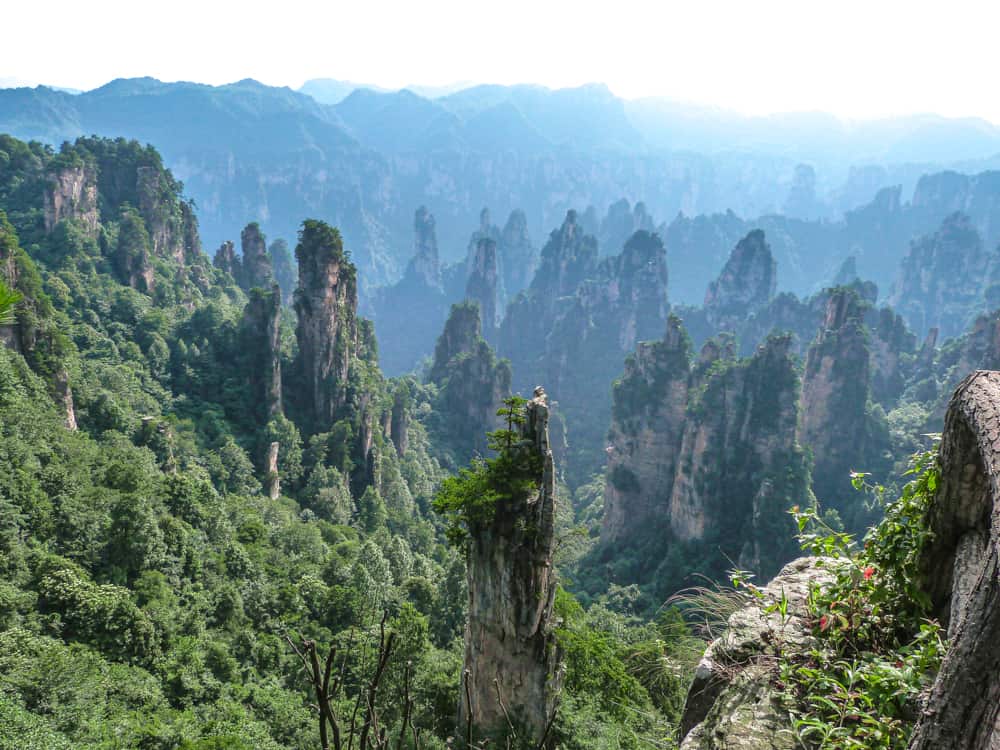
China Itinerary: Essential Information
Visa requirements for china.
First things first, how to travel to China!
Most nationalities need a visa to enter China, including those from the US, the UK, EU and Canada. It’s most likely you need to visit your nearest Chinese embassy to get this.
In the UK, the Chinese embassies are located in Manchester and London . Check the latest on China entry requirements on the FCO website here.
Top tip: Your passport needs to be in good condition in order to apply for visa. Mine had water damage from 5 years prior, and was rejected. Luckily, I had enough time to apply for another one!
Some countries’s citizens are exempt from needing Chinese visas, including Singapore and Japan. Definitely check the most up to date information at your relevant country’s travel advice page.
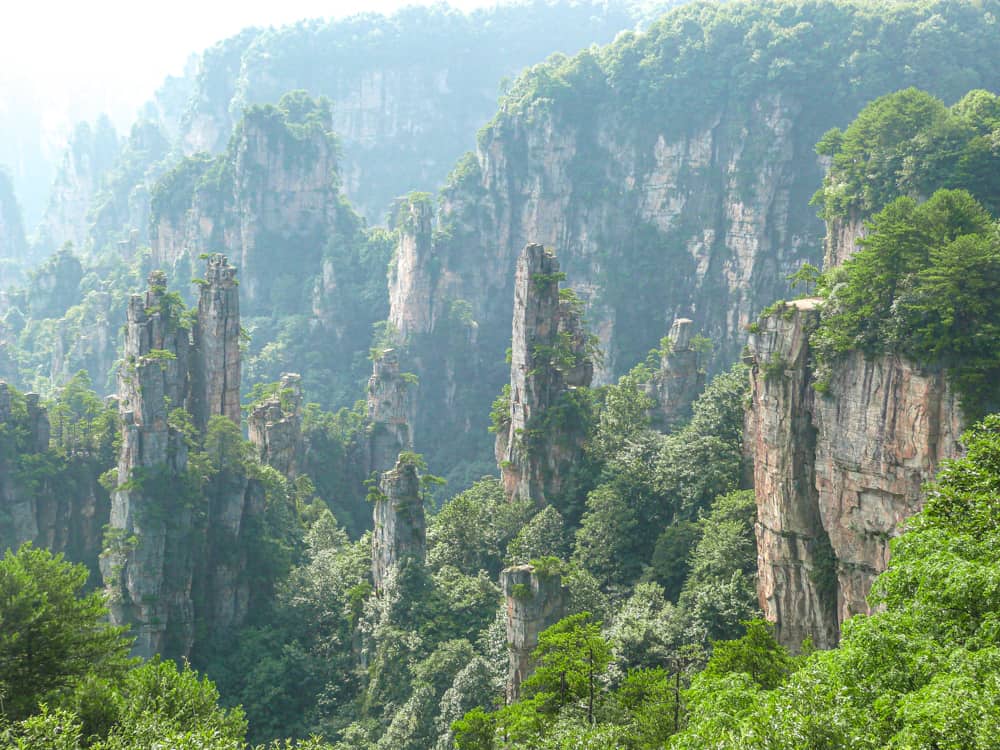
How to get to China
There are a large number of international airports in China, with many offering direct flights to the UK. However, for tourism purposes, it makes most sense to land into Beijing Airport (PEK) which is the capital of China. Alternatively, you could land into Shanghai Pudong Airport (PVG).
Other airports with direct routes to the UK, and other major international destinations include Chengdu and Guangzhou.
For this itinerary, I suggest flying into Beijing and departing from Chengdu. We found this straight forward to book with British Airways, who offers direct flights for both of these airports.
Other airports serving the main airports in China including:
- China Southern
- China Airways
- China Eastern
- United Airlines
- American Airlines

Getting around China
China is vast, but fortunately, well connected. Flying is the most efficient and convenient way to travel around China, and the domestic network is very comprehensive.
The main airlines covering domestic routes include:
- Shanghai Airlines
- Sichuan Airlines
- Shenzhen Airlines
To explore the country, we used a mixture of domestic flights and train travel to ensure an authentic experience. I’ve flown on Air China, Shanghai Airlines, China Southern and China Eastern. I can definitely recommend all these airlines for a safe and comfortable flight, but they can all be a little delayed sometimes.
Train travel
Trains in China are awesome – especially the high speed trains, many of which reach speeds of up to 400mph. I recommend including several trains throughout a China itinerary for the experience. It can also be more convenient as the stations are typically closer to the town/city centre than airports.
Whilst the train experience is often air conditioned and comfortable, the ticket purchasing experience is not.

You can book the tickets in advance online , but there’s two challenges here. Firstly, the official website is nearly entirely in Chinese. Then, there are tiny subtle differences in the language that can mean you book the wrong station. For example, Suzhou and Suzhou. One is the popular town consisting of beautiful waterways near Shanghai, and the other is in the middle of nowhere. But their names are the same.
Furthermore, the tickets either need to be collected at the station, or be delivered to a Chinese address. For many travellers this wouldn’t be feasible.

After making the above mistake, we chose to arrange the rest of our train tickets at the train station the day before. Some of the train stations in China are massive, particularly Beijing and Shanghai. So we found this to be a great way to familiarise ourselves with the station beforehand and without bags.
The high-speed trains in China aren’t cheap, but are efficient, comfortable and an exciting experience. You definitely pay a premium for business class too.
If you’re travelling around China on a budget, then consider opting for the older trains which still operate. They’re a fraction of the cost.
The Seat61 guide is the ultimate resource for booking all train travel in China.
The Maglev train
This train serves Shanghai’s Longyang Road Station to Pudong International Airport (PVG). It’s an 8 minute journey, covering 30km at a top speed of 430km/h (267mi/h).
The unique element of this train is that it runs on magnetic levitation and Shanghai is the only place in the world to have this kind of train.
The Maglev train reaches its ultra-high speeds by using magnets’ opposite poles on the railway track to create levitation. In fact, it is the world’s fastest train!
Fares for the Maglev train in Shanghai are CNY50 (approx. £5.75/USD$7) which is more expensive than subway the whole way. But for the unique experience of travelling by maglev train, I highly recommend!
You can buy tickets at a machine at Longyang Road Station, and the train departs every 15-20 minutes.

Travelling by bus is the cheapest way to get around China, but definitely the slowest. In a two week trip, I wouldn’t recommend opting for buses as it will highly impact the time you can spend in each place.
Furthermore, bus stations (particularly the one in Beijing) are huge and confusing, with few signs in English. It could easily become a stressful experience with luggage if you’re running late.
Buses within the cities are often modern, clean and frequent, but again the language barrier can prove challenging on the bus system.
The subway is an extremely efficient way to get around, and it nearly always has the station name translated into English. Subway trains are modern, clean and fast and easy to navigate for first time visitors.
We used the subway extensively in Beijing and Shanghai and found it to be excellent. And despite the sheer number of people using it, they manage to scan every bag and every person before you head underground on the escalator. Very impressive!
Like many cities around the world, you need a rechargeable smart card which you can buy from a machine or a cashier. The fares are super cheap (normally around 2-5 CNY) which is 20-50p or USD$0.30-0.70).

Taxis are plentiful and generally quite cheap. The drivers rarely speak English, even in Beijing or Shanghai so always take a business card from your hotel with the address on it.
We found some taxi drivers to be somewhat unwilling to take us as foreign tourists. We’re still unsure why, but one driver even refused to take us from the bus stop to the Great Wall of China, despite us pointing at a picture of it in a guidebook.
When is the best time to travel to China?
As China is such a vast country, spanning five different time zones and dozens of different climate zones, deciding when to go very much depends on what you’re planning to see and do, and personal preferences.
Generally, the best times to visit are during the transition seasons of spring (April and May) and autumn (September to October). During these months, the temperatures are warm but comfortable. Best of all, the crowds are lower!
The summer months, particularly July and August can be scorching hot, with extreme humidity and heavy rainfall. The crowds can also be high during this time.
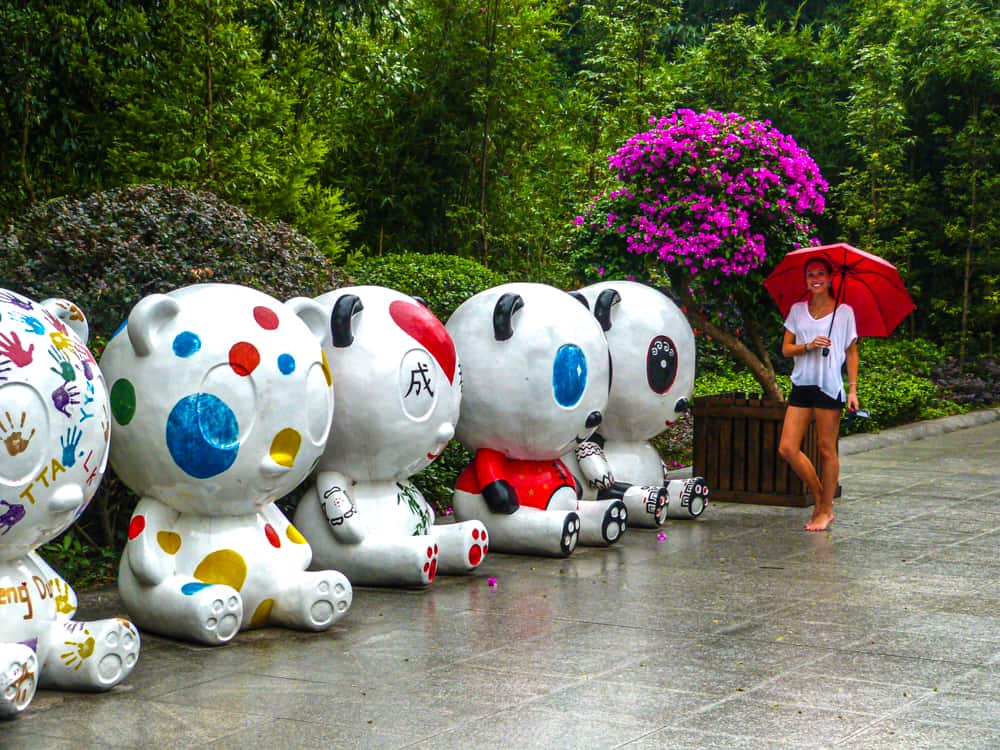
I wouldn’t necessarily say avoid visiting during these months. But I’d prepare for extreme heat and humidity. I went in July and although we experienced a heatwave with daily temperatures in excess of 45c (113 degrees), we had an amazing time.
A key time to avoid visiting is during the Chinese New Year, which depending on the lunar calendar, tends to fall in January or February each year. Lasting around 10 days, this is a major holiday period for Chinese people and everywhere gets seriously busy.
Visiting China in the winter means much of the country is very cold, particularly Beijing. However, if you want to see the Great Wall of China covered in snow, then this is a great time to visit!

Other useful information
It’s a well known fact that China is very strict on internet and social media use. Internet use is heavily controlled and sites such as Facebook, YouTube and Instagram are blocked. However, the way around this is to use a VPN (Virtual Private Network). You can set this up in your home country before arriving. Some of the best VPN apps for your phone or laptop are:
This guide here on the best VPNs in China may be useful, as well as this detailed guide to the best Apps in China .
In terms of WiFi on the go, I found it could be quite hit and miss. I would generally recommend a local prepaid SIM if you want to stay connected whilst travelling in China. You can arrange this in arrivals at the airport, as you need ID and you’d already have your passport on you.
You can arrange a 30-day SIM card to be delivered to your hotel using this service, which I highly recommend.
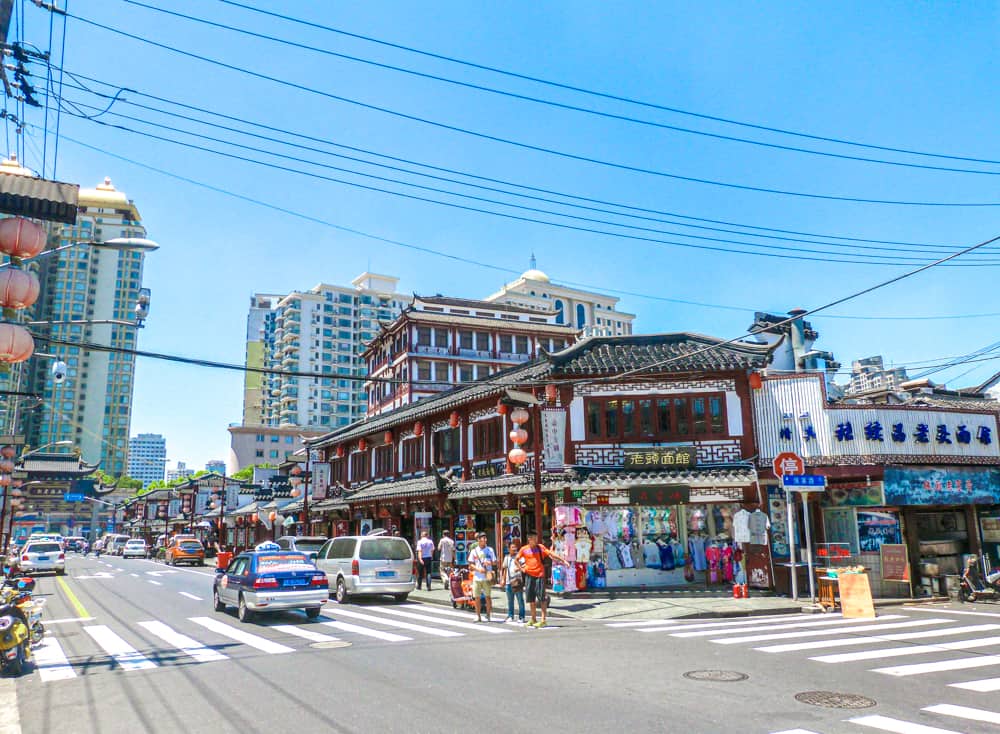
Food in China
Everyone in the world knows something about Chinese food. Whether it’s the familiarity of your local takeaway, or the much discussed fact that the Chinese eat meats such as dog.
I’m pleased to report that I found it fairly easy to avoid unusual meats I didn’t want to eat. You can avoid going to the markets that sell and prepare these meats, and you can opt for the vegetarian option on menus.
We often selected chicken with our meals, and as much as we certainly hope we only ate chicken, we can’t ever be 100% sure.
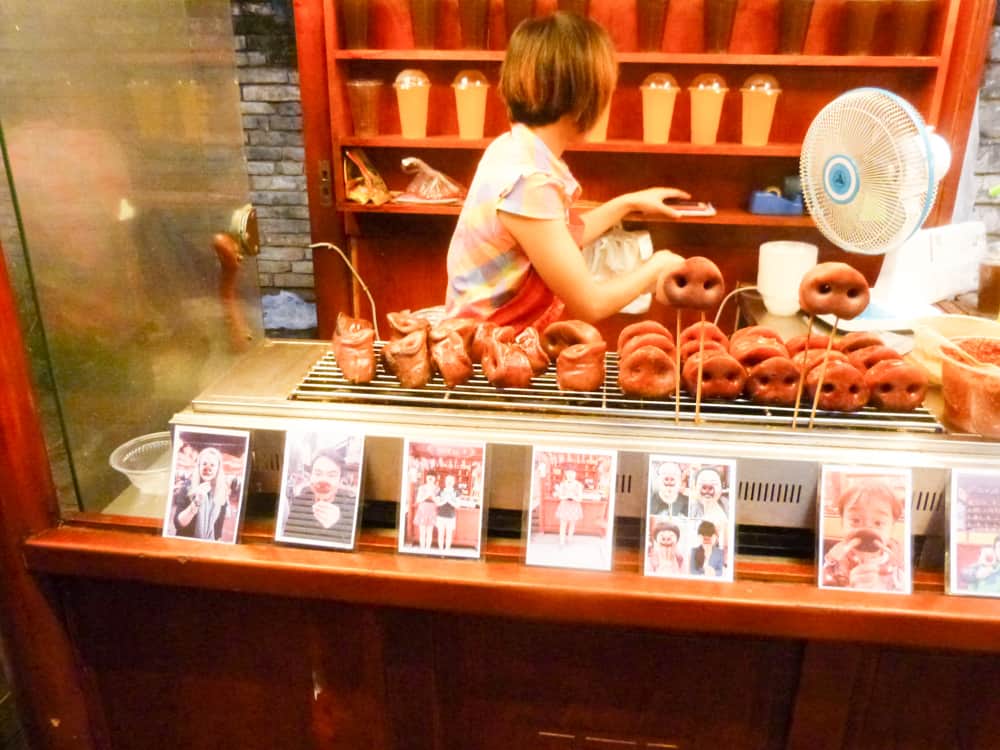
If you are very unwilling to eat anything too foreign, it’s best to politely refuse any gestures from locals to eat at their homes. This could happen, and if it does, you may run the risk of being presented with a meat you don’t want to eat.
You could join a foodie tour, such as this small-group Lonely Planet food in Beijing tour with a local guide. This is a great way to get to grips with the cuisine, with the guidance of a local!
We found a good mix of international and Chinese restaurants all over China. In some more rural places, such as Zhangjiajie, there was a short street of restaurants, so we picked one and hoped for the best. In other places, such as Chengdu or the other big cities, there is a great variety of restaurants.

Yangshuo, the penultimate place in my China itinerary is famous for mangos during the summer months. This charming town is packed with smoothie stands, so you can enjoy the most fresh and delicious mango drinks all day long.
Food is generally really affordable throughout China, but at major tourist attractions, such as the Great Wall of China, we found the food to be extortionate.
We also found beer was readily available throughout China, even in cafes during the day.
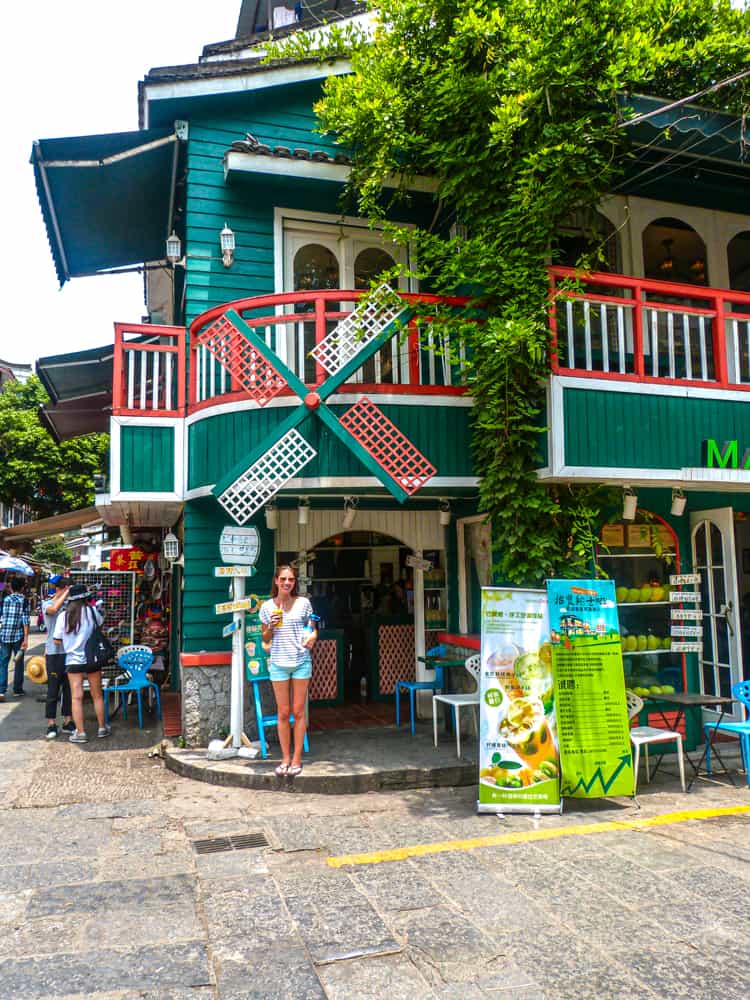
Language in China
One of the most challenging aspects of travelling in China is the language barrier.
The official language of China is Mandarin, which differs to Hong Kong, where the main language is Cantonese. There are also hundreds of dialects throughout the country. We quickly found out that actually, speaking English is quite uncommon, even in the big cities. In more rural areas such as Zhangjiajie, it was rare.

Unfortunately, we found more local people who didn’t want to try and help us than those that did. I don’t want to say this is a poor reflection of the Chinese people, but few people wanted to let us even attempt Mandarin using the translations from our guidebooks.
We also found entire receipts passed to us in Mandarin, and to be honest, we had no idea what they said or what the amount came to.
Overall, I would say China is the most challenging place I have travelled around. With so little written in English, and often little help from locals, there were times we spent totally lost and wandering around.
Google Translate app has definitely helped things along, you just need to find someone who’s willing to stop and help you.
Cultural customs
Although China isn’t conservative like the Middle East, I do recommend dressing without bearing too much skin if you’re a woman. I wore shorts and a t-shirt most days and this was fine.
In terms of the Chinese people, it depended where we were as to our interactions. At a colourful night fair in Yangshuo, a local family thrust their baby into my arms and crowded round me for a photo and were so friendly, despite the language barrier.
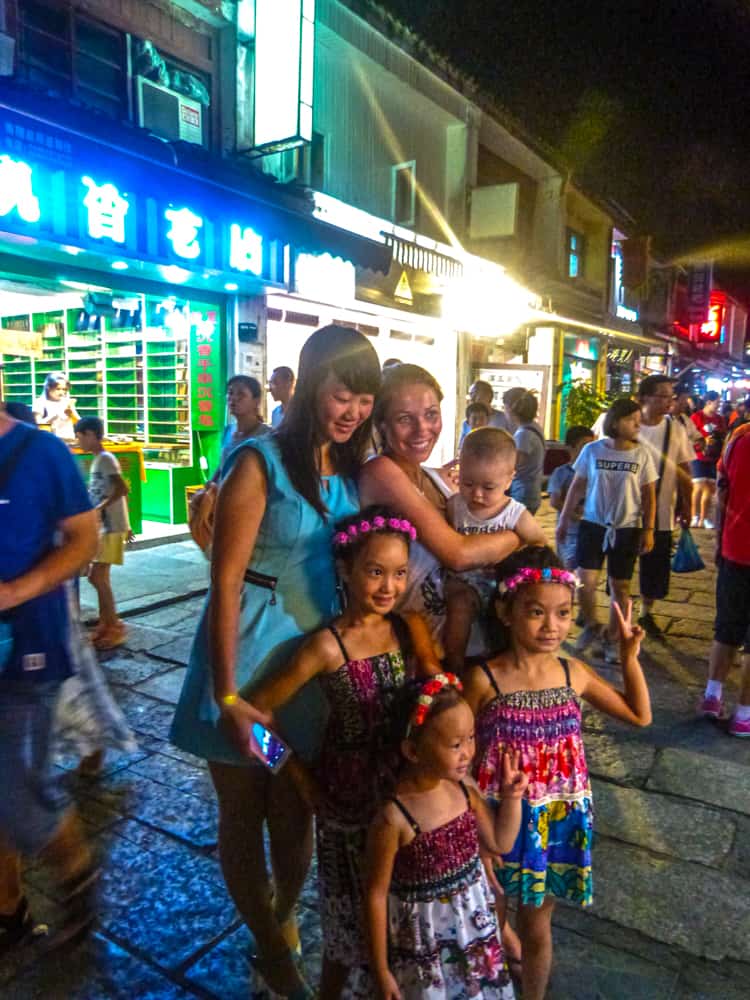
But in Zhangjiajie, we couldn’t get a single local to stop and help us with the walking routes on a map. In Ghangzhou, we had our only really bad experience where some airport taxi drivers were nasty verbally. They even put their middle fingers up when we asked how much to a hotel.
On the other hand, we had some wonderful experiences where despite the total language barrier, a train station steward patiently helped us when we had got on the train to the wrong Suzhou. He allowed me to type into Google Translate to ask questions and responded back by typing in my phone. Another man at an airport hotel which was fully booked in Ghangzou arranged for a friend to pick us up and take us to a hotel in town, for a very good rate.
You will also notice things like spitting in the street and throat hacking, but it isn’t normally as bad as you might have expected.
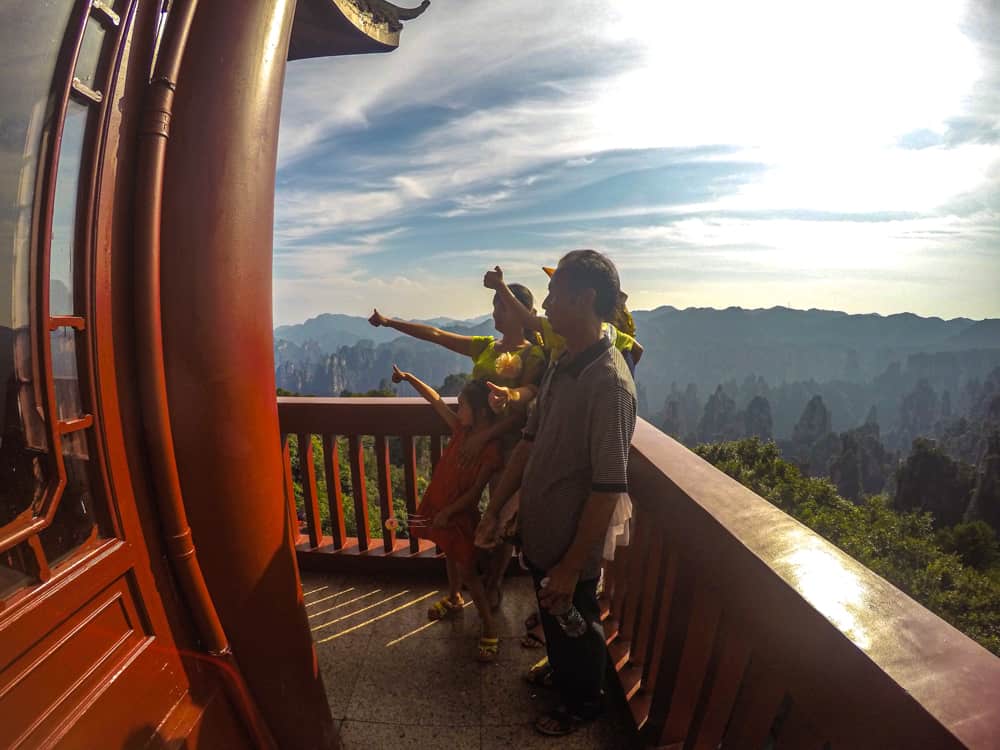
Travel independently or join a tour?
Joining a tour to explore China can be a great idea, especially to help you navigate the very tricky language barrier. With a local guide leading the way, it can be a great way to visit all of the top places without getting too lost or stuck along the way. You also have the added benefit of a wealth of local knowledge, particularly around the dinner table or at cultural attractions.
We travelled independently, which made for an exhausting but rewarding experience. It allowed us to also make last minute changes, such as deciding to forfeit a night in Guilin and add an extra night in Yangshuo, as it was so amazing. We were also able to add in down time when we needed to, or upgrade hotels when we urgently needed an extra good shower.
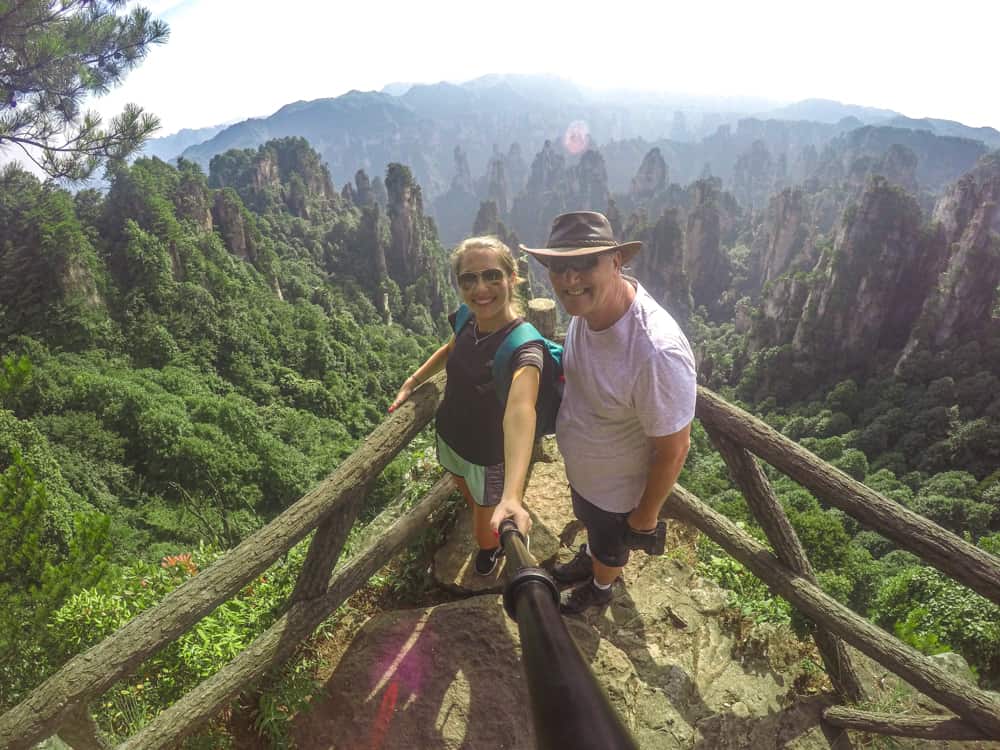
So it is definitely down to personal preference, and if you’re looking to travel around China solo, it may be nice to join a tour. We didn’t often see that many other Western tourists along our way.
Alternatively, you could travel around China independently, and joining guided tours to complement this. For example, the Great Wall of China is actually a bit of a headache to get to on local bus and taxi, and this is a great example of an activity best done as a tour.
Ultimate China 2 Week Itinerary
So let’s go! This China itinerary is aimed at first-time visitors who want to take in some of the country’s best known destinations, such as Beijing, Shanghai and Chengdu as well as lesser known charming corners. I’ve picked Zhangjiajie for its incredible landscape and scenic routes, as well as Yangshuo, my personal favourite place in China. However, I’ve also included some alternative destinations in China to visit.
I suggest using a mixture of trains and planes to keep the travel times lower, but this China itinerary will still be fast-paced and action-packed!
If you’d prefer to slow this itinerary down, I recommend removing one destination and spending longer in other places.
Here’s an overview of the route:
- Beijing: Day 1-3 (including a day trip to the Great Wall of China)
Suzhou: Day 4
Shanghai: day 5-6, zhangjiajie: day 7-8, tianmen mountain: day 9, yangshuo: day 10-12, chengdu: day 12-14.
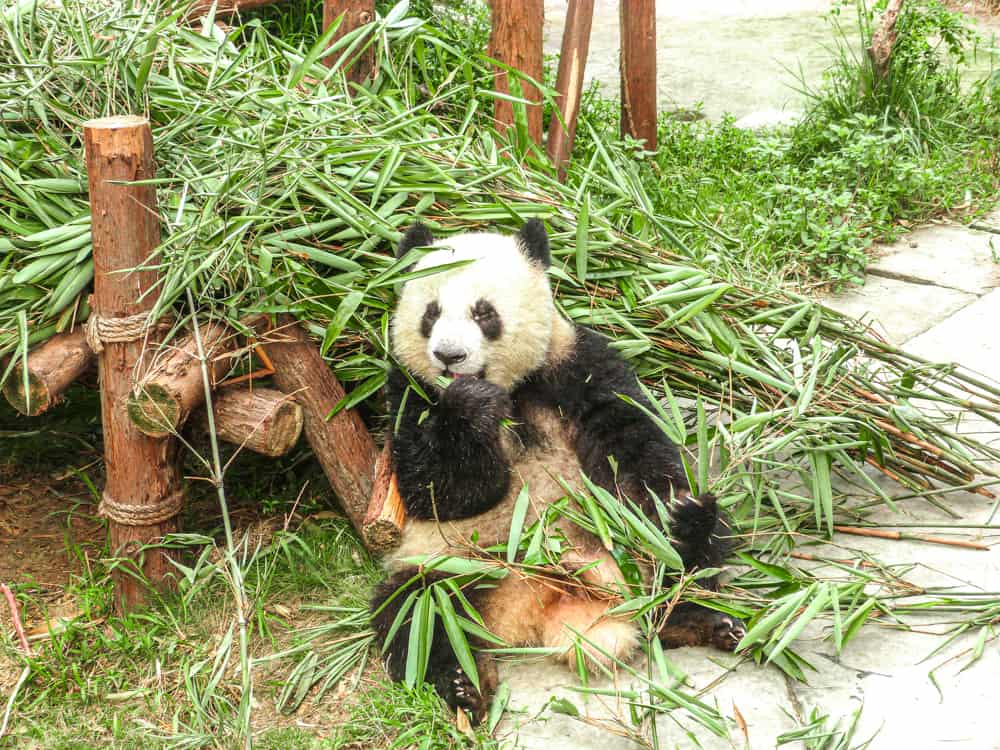
Beijing: Day 1-2
The capital of China and an ancient city dating back over 3,000 years. Today, Beijing is a city of extreme scale and size, both traditional and technologically advanced.
For one, it is the world’s most populous capital city with almost 21 million residents, but the second most populous city in China (after Shanghai). Beijing is also home to the world’s busiest and longest subway, as well as the second busiest airport in the world.
To put simply, Beijing is both vast and hectic, but also organised and contained. That being said, as a tourist, the main sites to see are in a fairly concentrated area in the heart of Beijing. It is easy enough to see the key tourist attractions over the course of two days, complemented by a day trip to the Great Wall of China . So let’s dive in on what there is to see in Beijing in three days.
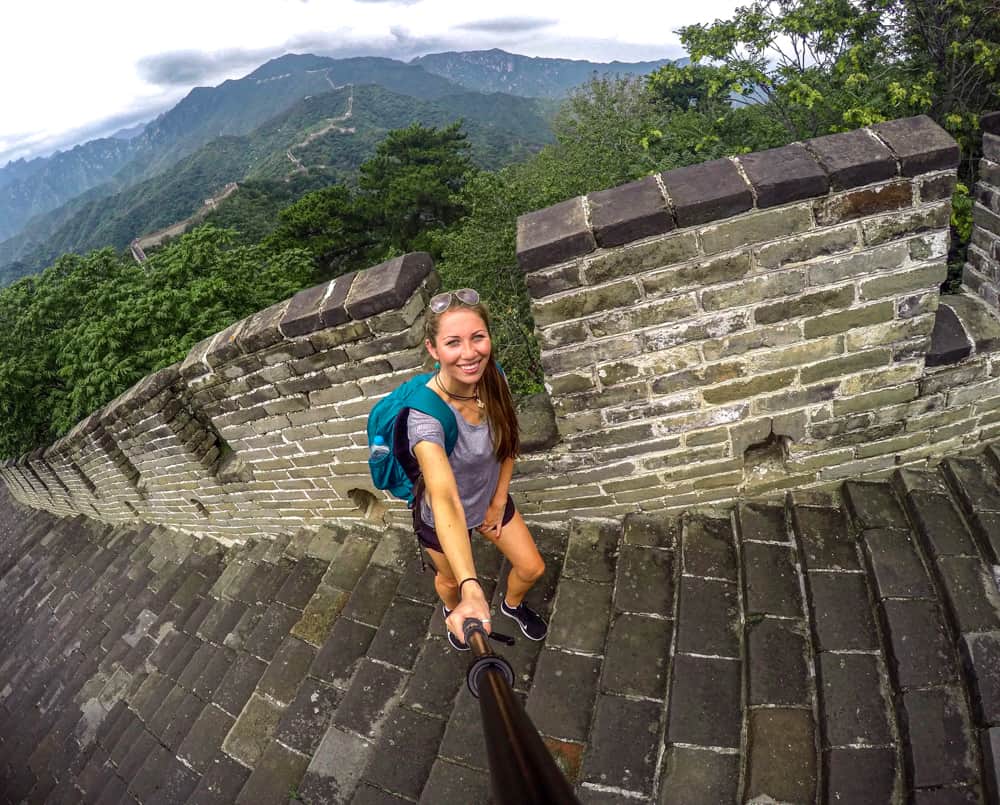
Forbidden City
This was the first attraction in Beijing that I visited after landing at Peking airport, and I found it fascinating, despite the poor weather we endured that day.
Visiting the Forbidden City was a great crash course in Chinese history, as this imperial palace has served as the home of Chinese emperors for almost 500 years. The whole complex is vast, but due to the extreme July heat and some impending jetlag, we managed to explore the highlights of the Forbidden City in a full afternoon.
Arriving at lunchtime, (which I wouldn’t normally recommend for a key tourist attraction), actually worked in our favour and we got through the line to buy tickets quite quickly.
However, if you are visiting in the morning for a full day, I would strongly recommend booking a guided tour which includes skip-the-line access too.

Tiananmen Square
Opposite the Forbidden City is the famous Tiananmen Square. Take in the huge Mao Portrait over the entrance to the Forbidden City. This has been the setting for many protests, particularly those in 1989 pushing for democracy. There is no entry fee here, and you may find yourself here several times throughout your visit, as it is located above a central and convenient subway station.
If you visit at dawn or dusk, you’ll have the opportunity to see the huge national flag raised or lowered by the guard, which is a great spectacle.
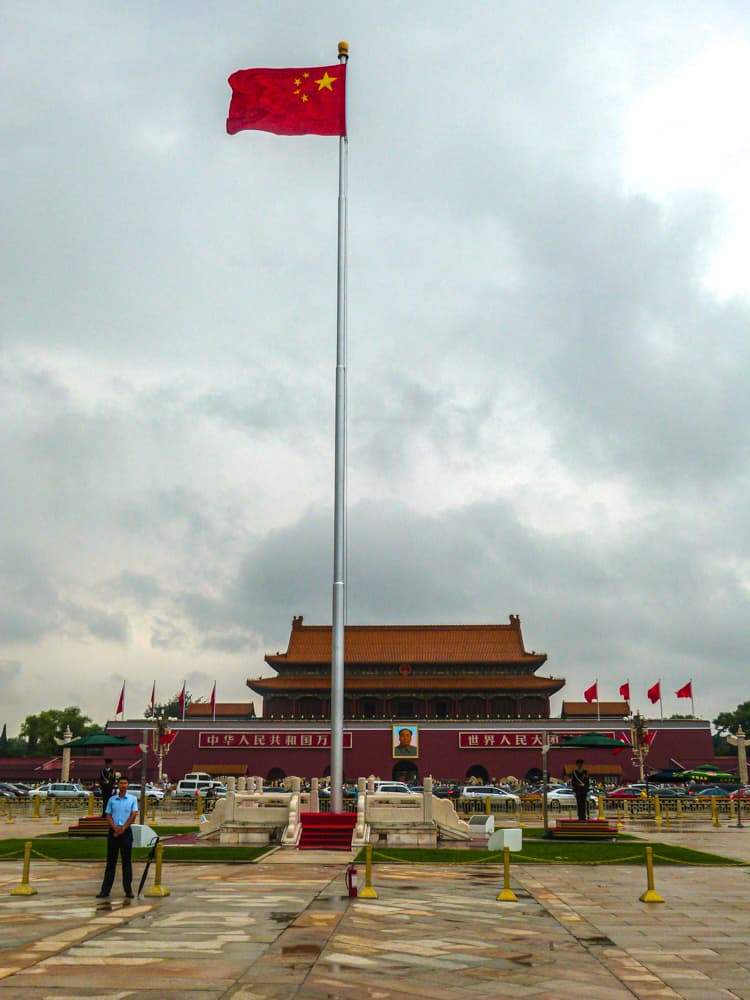
Jingshan Park
Located behind the Forbidden City is Jingshan Park, a former private imperial garden. There is no entry fee here either and you’ll regularly see locals practicing tai chi or walking in small groups.
Inside, there is also a small hill to climb for excellent 360 degree views of the city and the recently restored Shouhuang Temple, which was originally built in 1749.
This excellent tour here takes in the Forbidden City, Tiananmen Square and Jingshan Park with a local English-speaking tour guide over a half day.
Explore the Hutongs
Hutongs are older-style residential areas based around a network of traditional alleyways. There are several sprawling hutongs throughout Beijing, but some are more geared towards tourists.
We loved spending a half day exploring Nanluogo Xiang . It’s packed with boutique stores, cafes and restaurants, that is equally popular with locals and tourists. You’ll see lots of young cool Beijing locals and plenty of interesting fashion.
Nanluogo Xiang is the home of hip cocktails bars tucked away in hidden courtyards, alongside locals gossiping and catching up over xiangqi , a version of Chinese chess.
Another hutong area worth visiting is Wudaoying Hutong which is quieter and offers a more authentic experience.
These are easily self-explored, but you can join a local rickshaw driver for a guided tour which is awesome or a small group cycling tour .
Eat at the Wangfujing Street Market
We loved this market, although we stumbled upon it by accident as our hotel was very close. Turns out, this is one of the best places to go to in the evening in Beijing. The street food section is an curious array of insects and seafood on sticks, but there are some more normal options too, such as delicious fruit salads.
This market is loud and chaotic but a great way to feel part of local life.
Make sure to also try the famous Peking duck at a local restaurant such as Sheng Yong Xiang.
This awesome evening foodie tour by tuk tuk takes in the best of the Beijing food scene, from peking duck to street food and locally brewed beer.

Visiting the Beijing Olympic Park
As a huge fan of the Olympics, this was a must for me. Seeing the Bird’s Nest stadium was awesome, and this is now a popular area for locals to spend their evenings amongst the fountains and enjoying the light display.
You can also see the Water Cube venue, which came back into use for the 2022 Winter Olympics.
You can visit the Olympic Park and the nearby Beijing Zoo with this excellent tour here .

798 Art District
This neighbourhood is home to the burgeoning artistic scene in Beijing, and there are dozens of world-class art galleries here to peruse. Located within a former factory complex, this area has been transformed to house exhibitions from local artists, to world-famous artists.
Where to stay in Beijing
There are a huge number of places to stay in Beijing, covering all budgets and preferences. I’ve popped some suggestions here:
Budget hotels:
For those looking for great value, but authentic stays, one option is to stay in a small guesthouse along one of the narrow alleys of a hutong. My suggestion for this would be The Orchid , in the local hutong of Gulou, where a double room starts from £91 (USD$111).
Another option is LeZai Hotel located in Shajing hutong, where rates start at about £40 per night (USD$40).
Mid-range hotels:
We chose to stay in the Crowne Plaza Wangfujing for its excellent location and comfortable stay, and would highly recommend.
The Hotel Eclat offers amazing bang for buck, with 20 of the rooms offering private pools in the heart of the city. The rooms are also themed so book ahead for greater variety to choose from. Rooms start from £147 per night (USD$180).
Luxury hotels:
PuXuan , also in Wangfujing and opened just last year. It has a fabulous spa and excellent views across the city. Double rooms start from £215 per night (USD$263)
Or for the ultimate luxury stay, consider the Rosewood Beijing where double rooms start from £225 per night (USD$276).
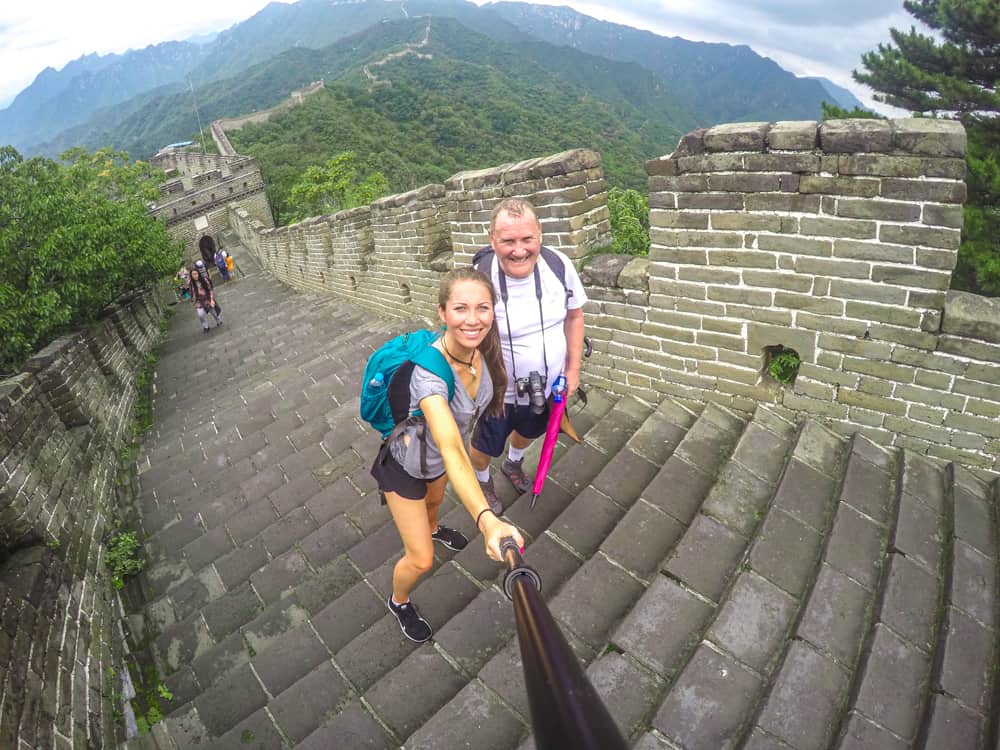
Great Wall of China: Day 3
The iconic Great Wall of China is highly likely to be top of your list of things to do and see in China. And for good reason. It’s an incredible day trip, and one I’d love to go back to do again. We chose to do it our trip entirely by public transport, which was quite fiddly however we were some of the first to arrive and therefore had an incredible experience of being some of the few people on the wall.
How to get to the Great Wall of China
There are several points where you can see the Great Wall of China – after all, it is over 13,000 miles long!
The area of Badaling is the closest to Beijing’s city centre, and unsurprisingly is the busiest section. It’s also very touristy.
Mutianyu is a little further, and although it is still really popular, it is far less busy than Badaling. There’s also the added bonus of a cable car to head up to the Great Wall, and the thrill of a luge to descend again.
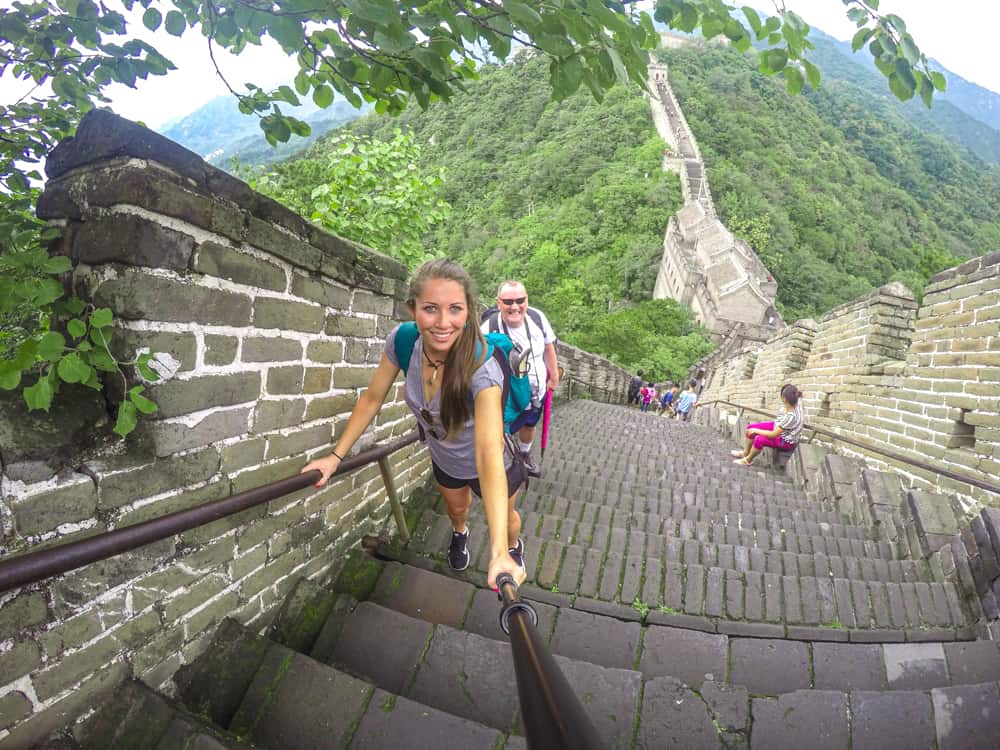
If you want to see the Great Wall with far less crowds, the sections you should consider are Jiankou, Simatai, Gubeikou, Jinshanling and Huanghuacheng. These take a little longer to get to, but a return trip can still be done in a day. You could also take a day trip to these sections:
- Badaling Great Wall and Ming Tombs Coach Tour from Beijing
- Beijing: Jinshanling Great Wall Group Tour with Lunch
- Simatai Great Wall and Gubei Water Town Transfer with Ticket
- Mutianyu Great Wall Full-Day Group Tour
- Great Wall Hiking: Small Group to Jinshanling and Simatai
- Jiankou to Mutianyu Great Wall Small Group Hike
- Ming Tombs Underground Palace & Mutianyu Great Wall Bus Tour
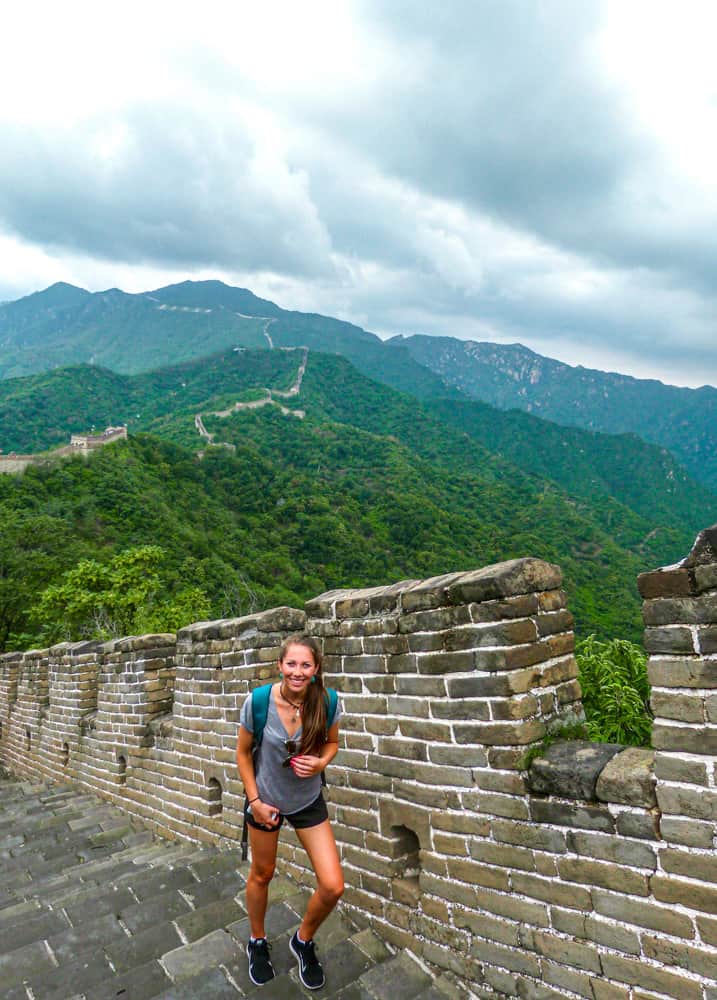
We chose to go to the Mutianyu section. Although we followed instructions to the bus station and onwards, we actually found it a very frustrating journey. The route is:
- Take the subway to Dongzhimen 东直门 Station.
- From here, head to ground level and to the Dongzhimen Bus Station (Jiaotongju 交通局) to take the #916 to Huairou 怀柔
- Take a taxi on the street to Mutianyu 慕田峪
So this sounds wonderfully straight forward, I know.. I wish it had been though.
We got to the Dongzhimen Bus Station fine, but spent probably 30 minutes or more on a wild goose chase around the station looking for the right bus stop. We asked locals and were sent in so many different directions. However, we eventually boarded and carefully watched for 怀柔 (Huairou) to come up on the electronic board at the front of the bus, so we knew when to disembark.
When we finally got to Huairou, we had a far harder job getting a taxi than we expected. We actually found a local hospital and waited to jump into a taxi there instead, but once in it, our taxi driver really struggled to understand where we wanted to go. Despite us pointing to a very clear picture of the Great Wall of China (that was displayed in his taxi..).
Somehow, we made it to Mutianyu fine, and fortunately were some of the first people to arrive that day. We were there well before the tourist buses. You can buy tickets on the day as the gates, before proceeding through to the tourist village. Naturally, there’s every kind of souvenir under the sun to buy.
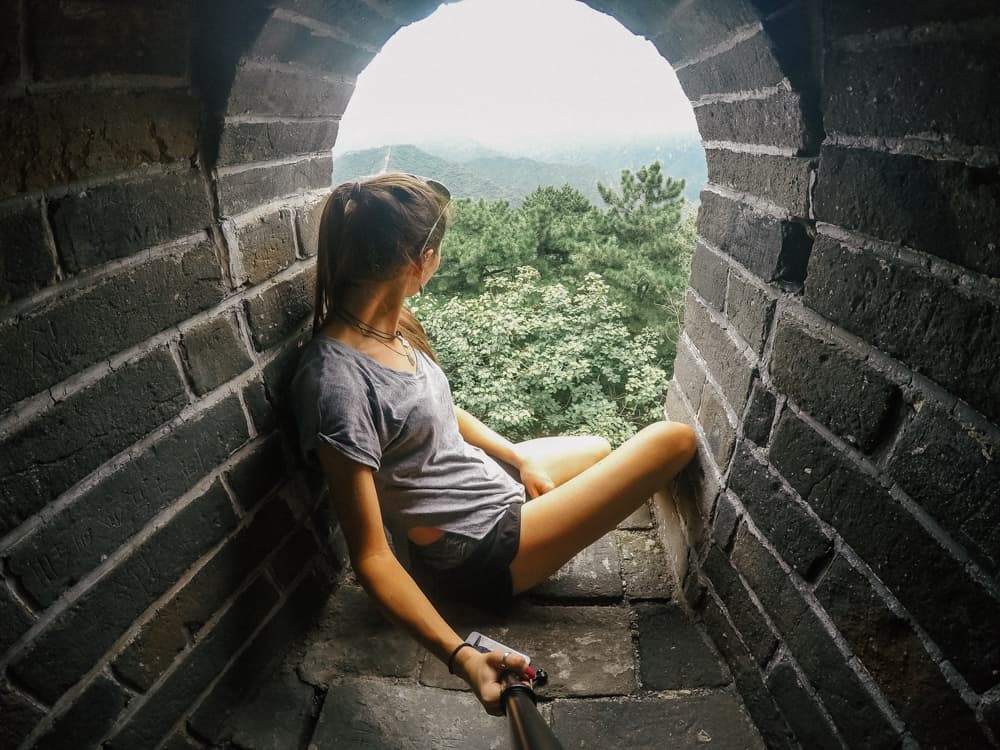
There is a cable car to take you from the tourist village at Mutianyu to the actual Great Wall which was awesome. The views were phenomenal. At the top, we explored in both directions, but there’s only so far you can go, as some of the wall has crumbled and the path has been destroyed.
Arriving early is definitely the way to go, as well as going on a midweek day. The proof is in my photos!
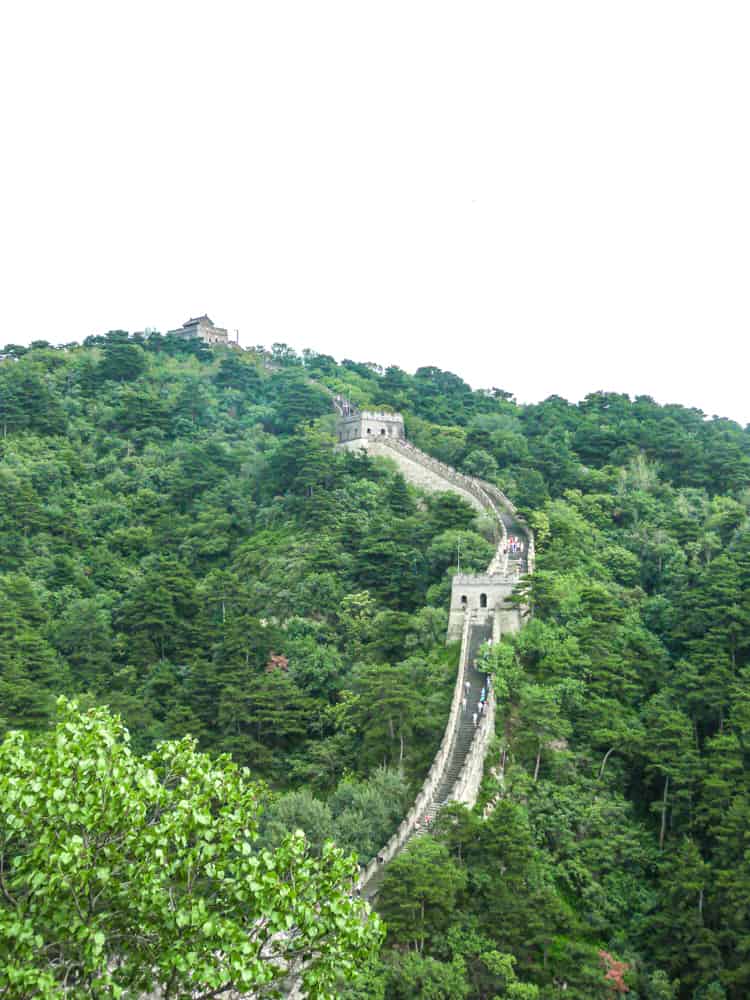
When we were ready to head down, we joined a short queue for the luge (like a toboggan on a metal shute). I highly recommend doing this – it was thrilling and a totally unexpected highlight of our day.
Back in the tourist village, we stopped for a very overpriced lunch before navigating the bus system back to Beijing city centre.
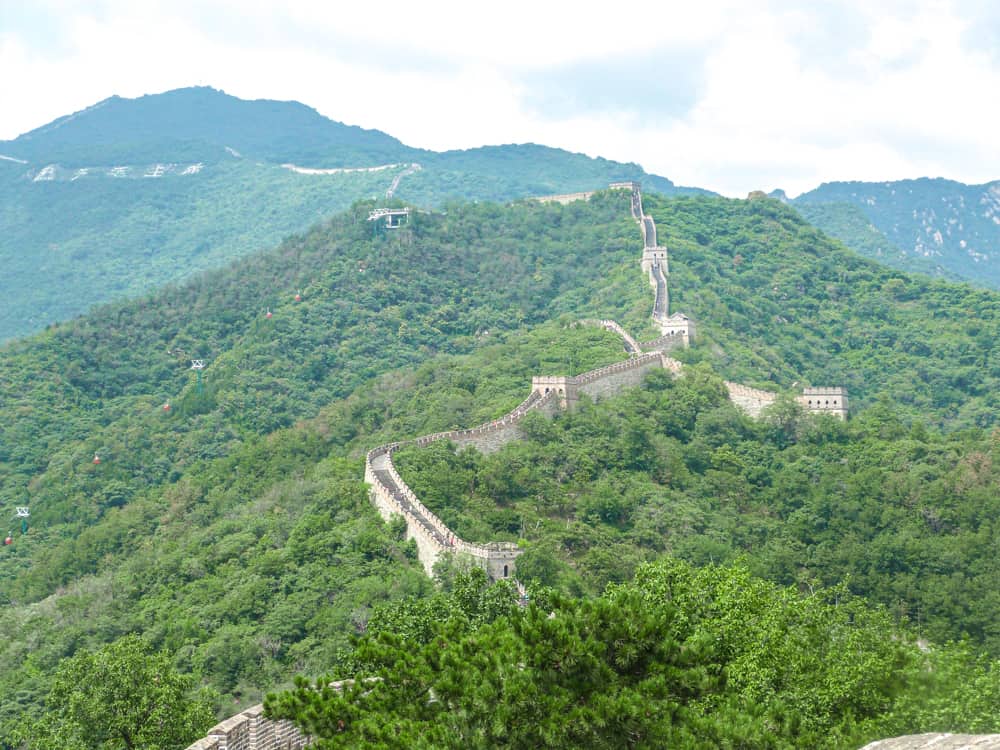
It’s time to leave the hustle and bustle of Beijing. Suzhou is a logical next stop as it is on the train route between Beijing and Shanghai.
This beautiful town is made up of waterways and is referred to as the ‘Venice of the Orient’. I personally thought it was a little bit like Hoi An in Vietnam.

I would recommend a full day and night in Suzhou, so you can explore this beautiful town in light and darkness, when all the red lanterns are lit up. You could alternatively visit as a day trip from Shanghai , but it means coming back on yourself if you travelled there from Beijing.
When leaving Beijing, ensure you have the correct Suzhou on your ticket so you don’t repeat the mistake we made (see travelling by train above).

Just under half of this city’s area is covered by water, including streams, ponds and waterways. The city dates back more than 2,500 years, with the traditional design of the city still preserved today.
The best things to do in Suzhou are centred around boat rides on the Shantang River or exploring one of the 60 beautifully kept gardens, with the Humble Administrator’s Garden being my favourite. It dates back to 1509 and was built under the rule of the Ming Dynasty. The entrance fee is CNY90 (£10/USD$12.50).

Suzhou is also a wonderful place to soak up day-to-day life by stopping by local teahouses, sampling the local Jiangsu Style dishes or buying some of the best silk products in the world.
I recommend staying in the Holiday Inn Express Suzhou New District .

Wow, Shanghai. What a city. Shanghai is China’s largest city and is positioned on the Yangtze River Delta. It serves as the economic and trade centre in China, and is one of the key economies in Asia.
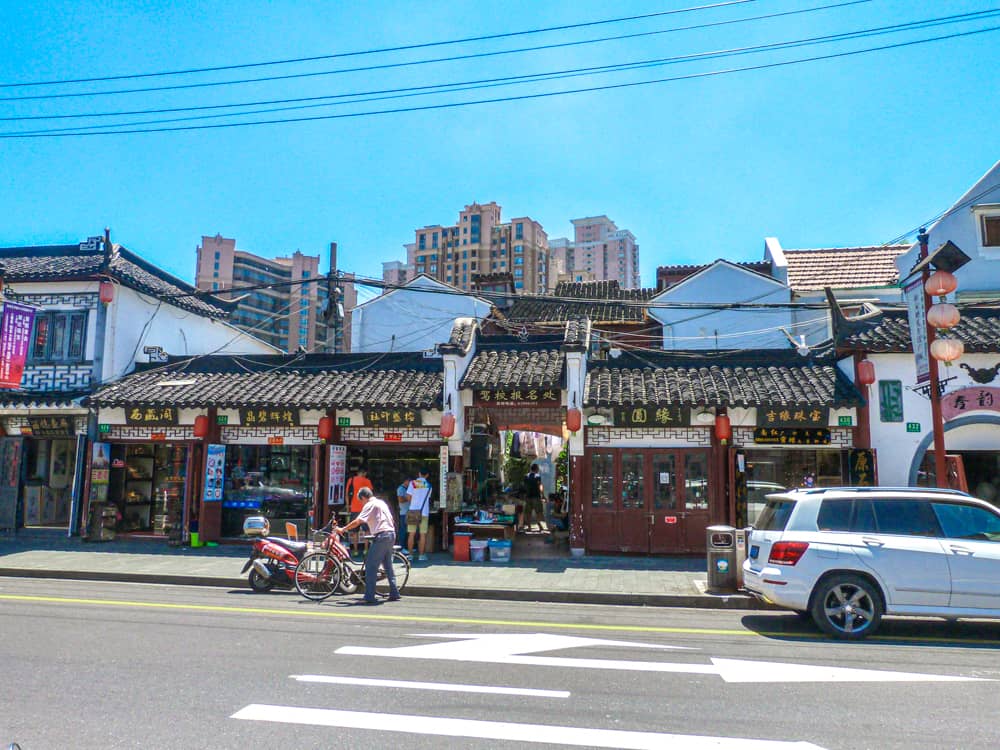
People say you either love or hate Shanghai. I really liked it and preferred it to Beijing. Although I enjoyed my time in Beijing, and particularly all the sightseeing, I did find the city felt rather grey.
Shanghai on the other hand is full of colour and light, and there is a real a buzz and energy around this cosmopolitan city.

Whilst there are less historic attractions in Shanghai, the city is considered one of the cultural hubs in China with a world renowned opera and popular cuisine.
A really nice way to see the city is on a hop-on hop-off bus tour , which will give you live commentary from a guide on board as you drive around the city.
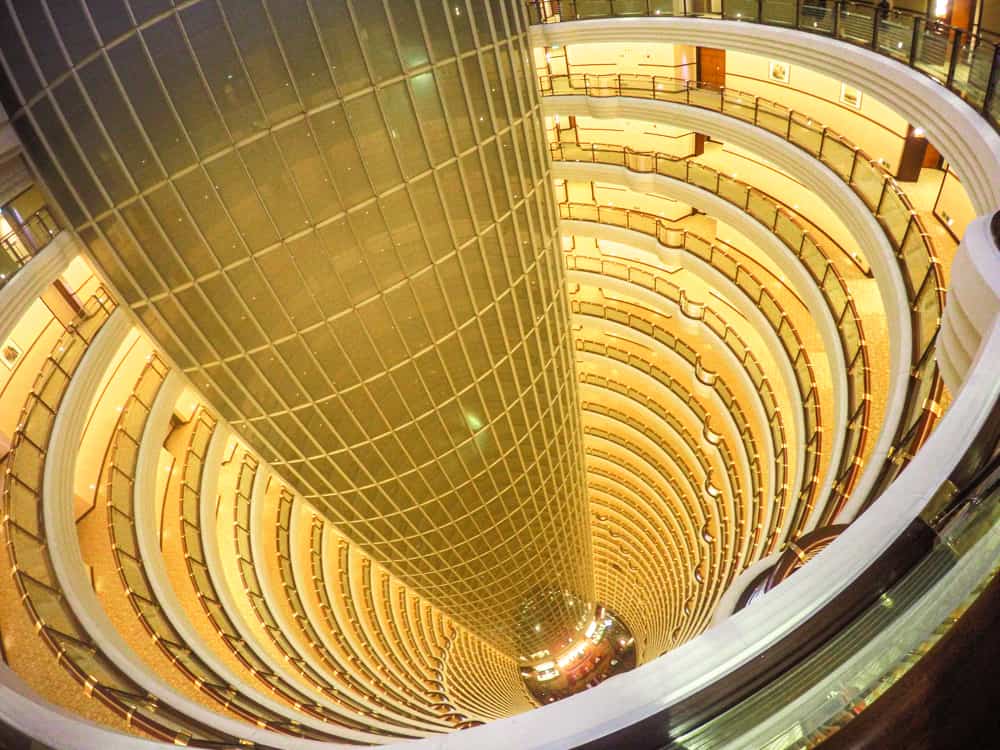
Visit the Bund and Modern Shanghai
The Bund is a wide promenade along the river, where visitors can experience stunning panoramic views of the city. On one side is the futuristic skyline, comprising some of the tallest skyscrapers in the world and the dazzling Oriental Pearl TV Tower. Did you know, you can go to the top of this awesome building? Buy your skip-the-line ticket to its viewing platform here .
On the other side, behind the promenade are beautiful colonial buildings, offering a true contrast of old and new.
Book a half-day Bund sightseeing tour here.

Explore the French Quarter
One of the oldest parts of Shanghai is the Former French Concession (FFC), an area known for its unique architecture blending European style with old-style Chinese homes, called Shikumen.
This area is big (almost 8km wide), and stretches west from the Bund. One of my favourite aspects of the French Quarter are the beautiful tree-lined avenues, which also provide some much needed shade. There’s also countless cafes, bars, restaurants, boutique stores, art galleries and antique stores to browse, and even some hip breweries. This area is popular with expats in Shanghai and also with tourists.

In my opinion, one of the most beautiful streets is Wukang Lu, which has cafes with plentiful outdoor seating and is very charming. Other highlights of the FCC include Fuxing Lu, which is full of cool art galleries or Wulumuqi Road, which has some awesome antique stores.
The French Concession can easily be explored on a self-guided tour using a paper map, but it’s also an excellent idea to consider a guided tour to learn more about the history of the area. Here’s a few suggestions:
- Craft Beer Tasting in Former French Concession
- Evening Walking Food Tour in the FFC
- Half-Day Old Shanghai Small Group Bike Tour (Day & Night)
- Shanghai French Concession 2-Hour Walking Tour
- Shanghai 3-Hour Afternoon Tea Tasting and Dessert Tour
- 3.5-Hour Old Shanghai City Tour
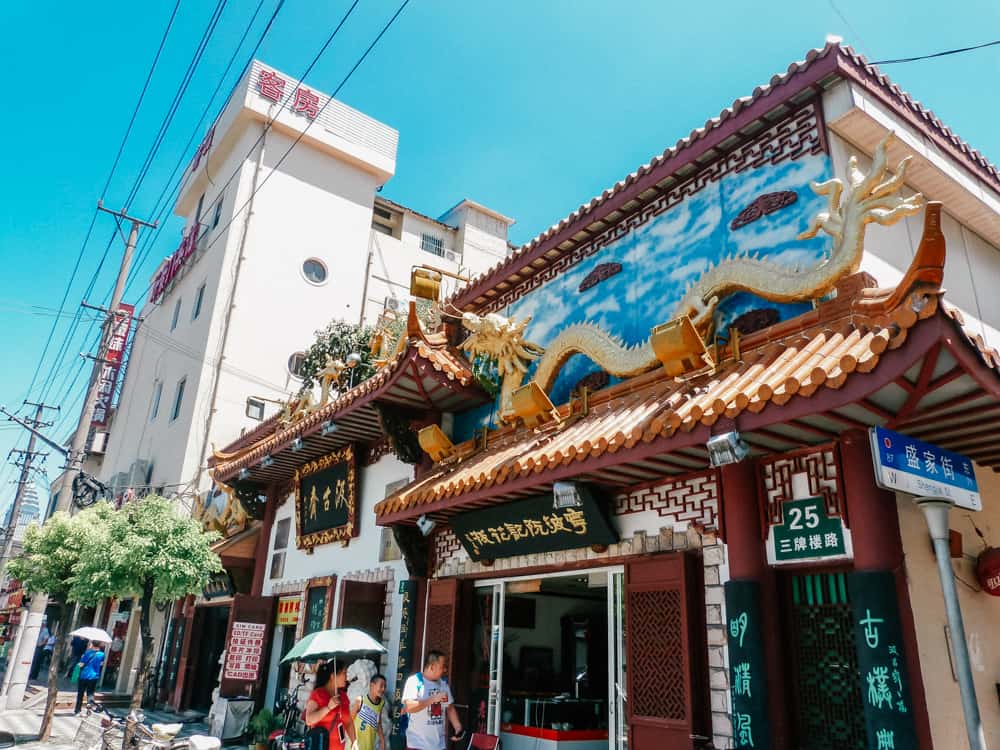
Find zen in Shanghai’s Gardens and Temples
Shanghai, like most cities in China has countless gardens, each housing traditional Chinese buildings or classic temples.
Some of the gardens are like finding an oasis in the heart of the city, and one of the best is Yu Yuan (Happiness Garden). Another highlight is visiting the serene Jade Buddha Temple, surrounded by peaceful Chinese Gardens.
Arrange a 2-hour walking tour of the beautiful Yu Yuan gardens here.
Where to stay in Shanghai
If your budget can stretch to a stay in one of the hotels lining the Bund, then this certainly would make for an incredible stay. Not only is this close to many of the main attractions in Shanghai, but is an amazing opportunity to sleep in one of the beautiful buildings.
We stayed in the InterContinental Shanghai Pudong , which is an amazing luxury stay near the main train station, which is also an excellent location. Make sure to read my review of the Intercontinental Shanghai Pudong here .
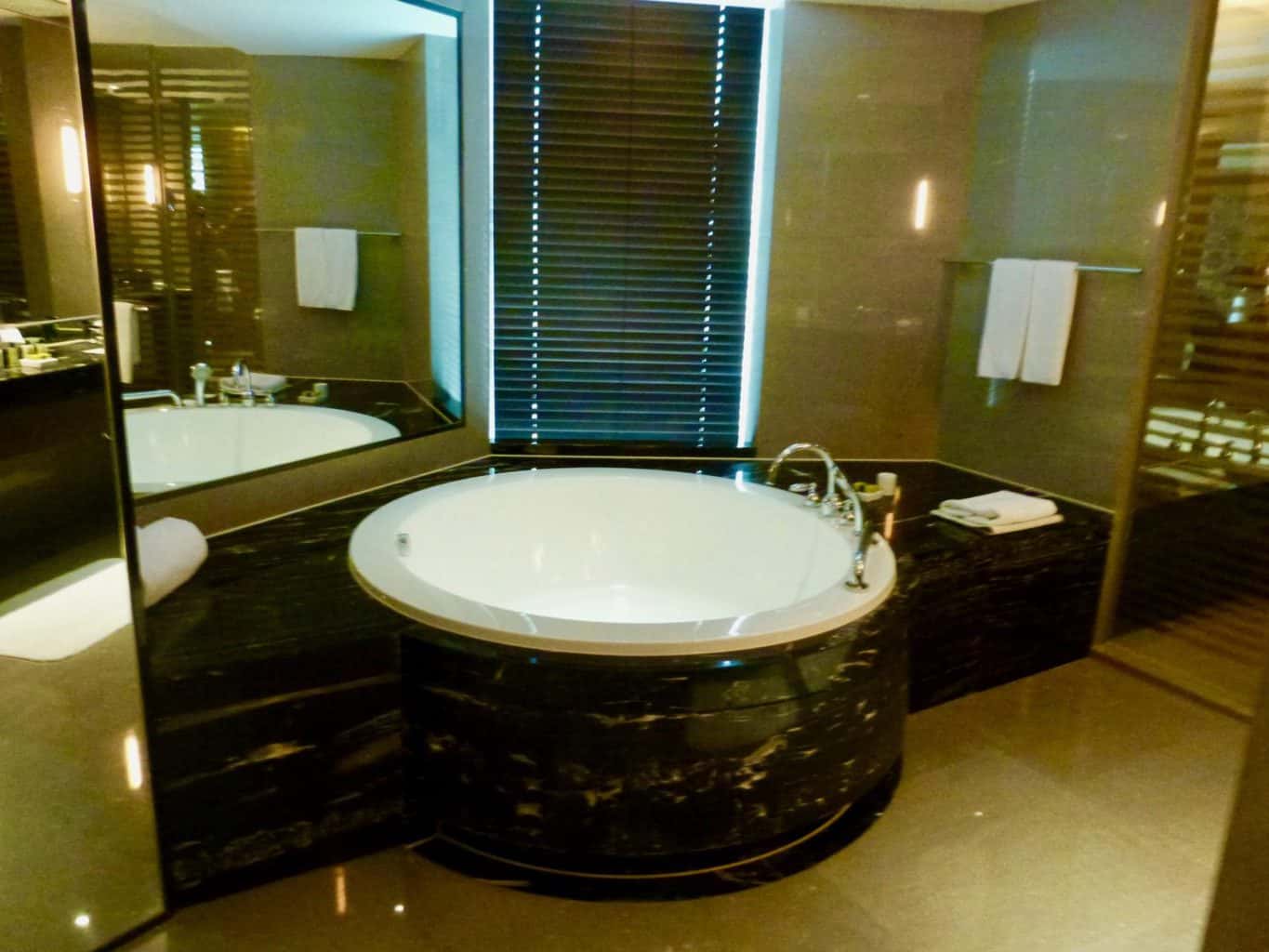
Here are my suggestions of the best hotels in Shanghai, covering all budgets:
Affordable: Shanghai Fish Inn East Nanjing Road . At around £11 per night, this is a great value stay, in an excellent location with some very good reviews. Also, the Bund Riverside View also has some great reviews (from £26 per night).
Mid-range: The Radisson Blu Shanghai New World Hotel (£64 per night) or the Ji Hotel (£63) a night for comfortable stays, with a few extra amenities.
Luxury: There’s no shortage of luxury hotels in Shanghai. As well as the Intercontinental Shanghai Pudong , these are some of the best:
- Waldorf Astoria
- The Peninsula
- Mandarin Oriental Pudong
- The Ritz Carlton Pudong

We knew with our two weeks in China that we wouldn’t want to spend the whole time visiting different cities. We researched for hours to decide which natural wonder or national park to visit in China.
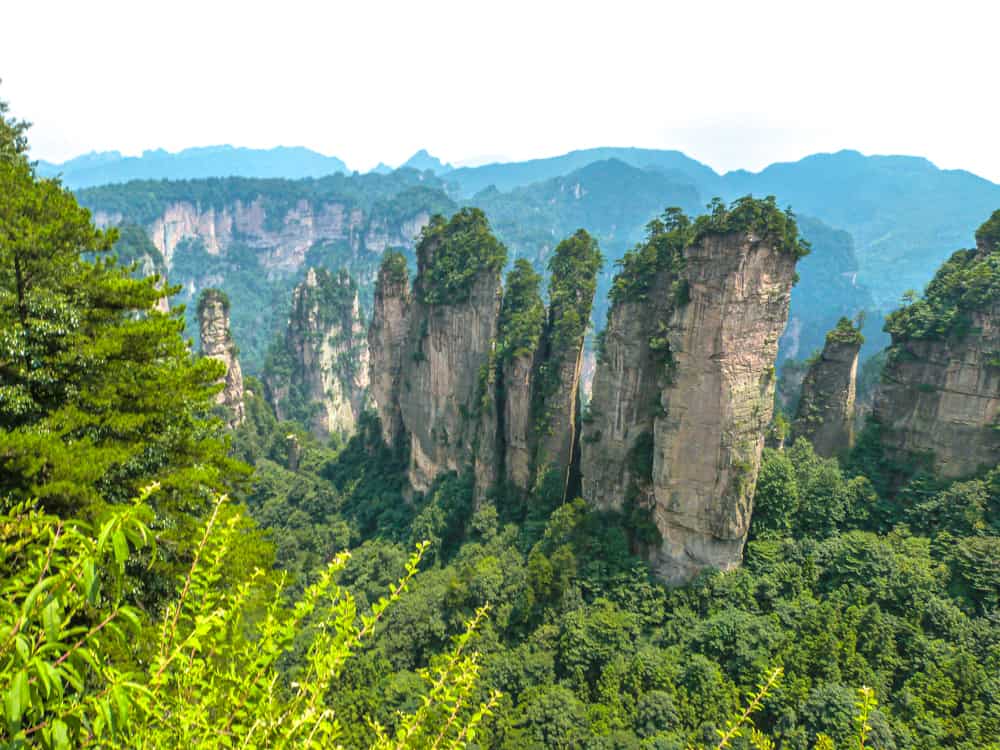
Zhangjiajie was chosen in the end for its otherworldly landscape, which are huge towering karst pillars, some of which reach dizzying heights of over 1,000m. This national park is also said to have been the inspiration for the popular movie ‘Avatar’, although this has led to a huge increase of daily tourists to the park.
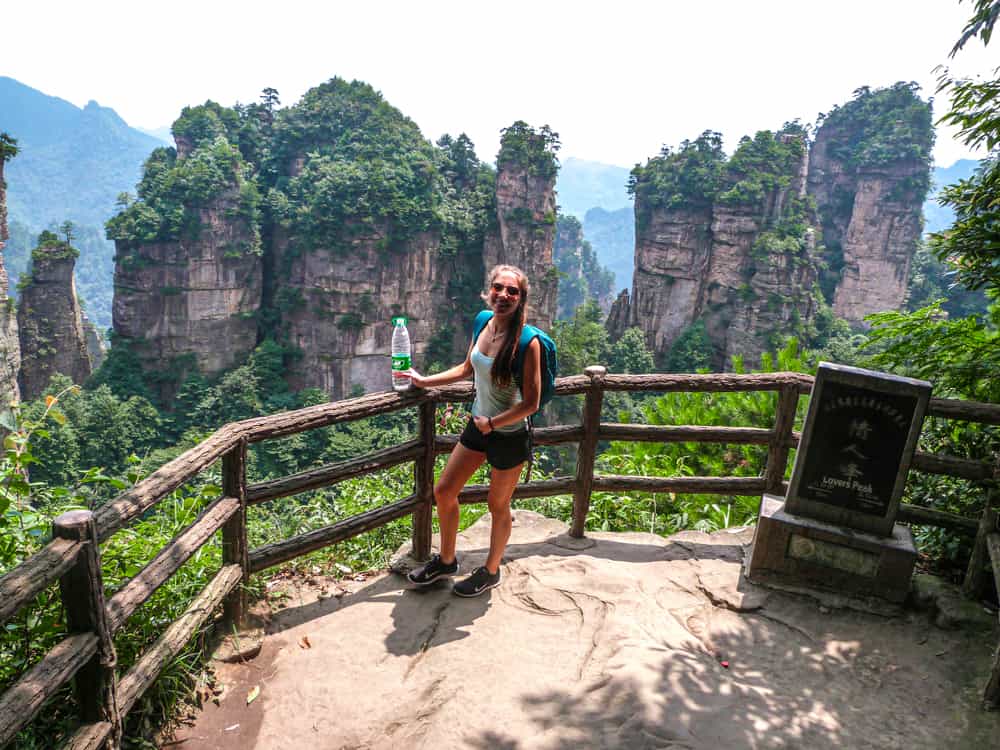
Zhangjiajie is actually China’s first designated national forest park (awarded in 1982), and it clear to see why. Spread across 30sqkm within the wider Wulingyuan Scenic Area of Hunan Province, days in Zhangjiajie national park can easily be spent exploring and hiking through this magnificent natural wonder.
We flew from Shanghai to Zhangjiajie, so this section of the trip could easily be switched for another national park in China, if you prefer.
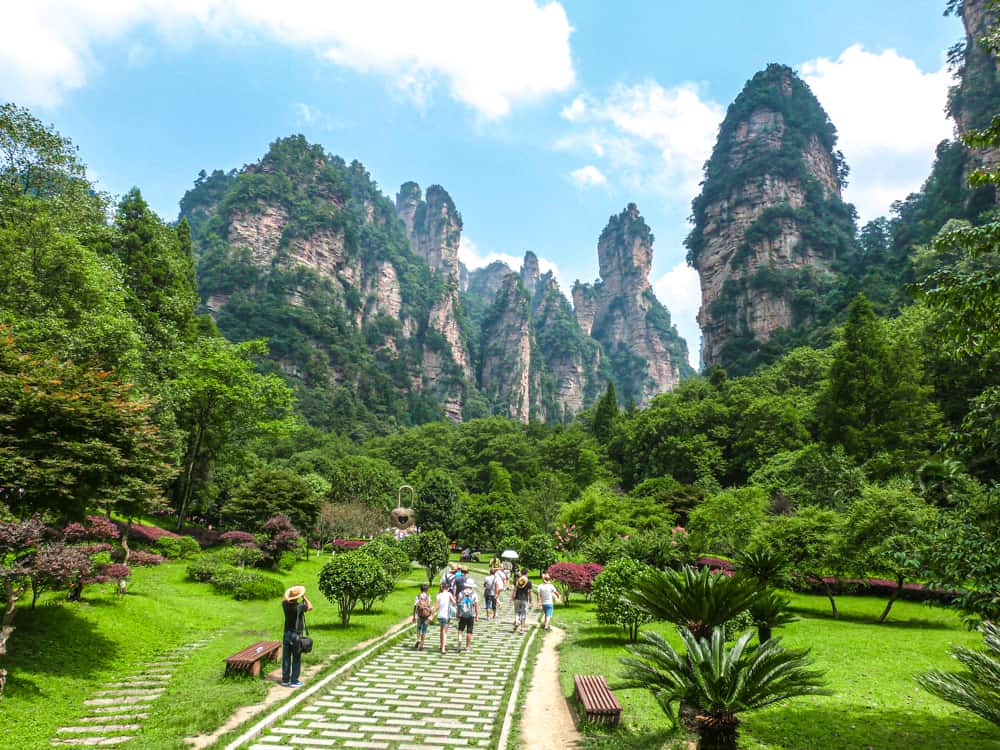
Hiking in the national park
Our days in Zhangjiajie were some of our most challenging, as it was very hard to know where to go and how to do it. For example, the maps have very little English on them, and a lot of the routes are inaccurate. There are also shuttle buses to jump on, but these were not clear which route they were going to and as mentioned, few people were keen to stop and help us. The queuing system was also hectic with a bit of pushing and shoving.

In the end, we spent two full days hiking in Zhangjiajie. We chose to start early and make long full days of exploring. At the entrance were always huge Chinese groups waiting to start walking and they always had a guide with a flag on a stick and a huge speakerphone. We just felt we had to get away from the sheer number of people and noise quite quickly. It would take just 10 minutes to be in complete peace and quiet. Honestly, despite trying to use the map/incorrect signage and work out the shuttle bus systems, we never really knew where we were going.
But somehow, we managed to hike nearly 35km each day, plus more than 50,000 steps and saw all of the amazing sites. The temperature was around 35c in July, and it was definitely exhausting work as most the paths are staircases. It can be very tiring and taxing on the legs, especially in the heat. But there are plenty of local stalls on the paths selling food, snacks, water, ice lollies etc, so you don’t need to carry too much with you.
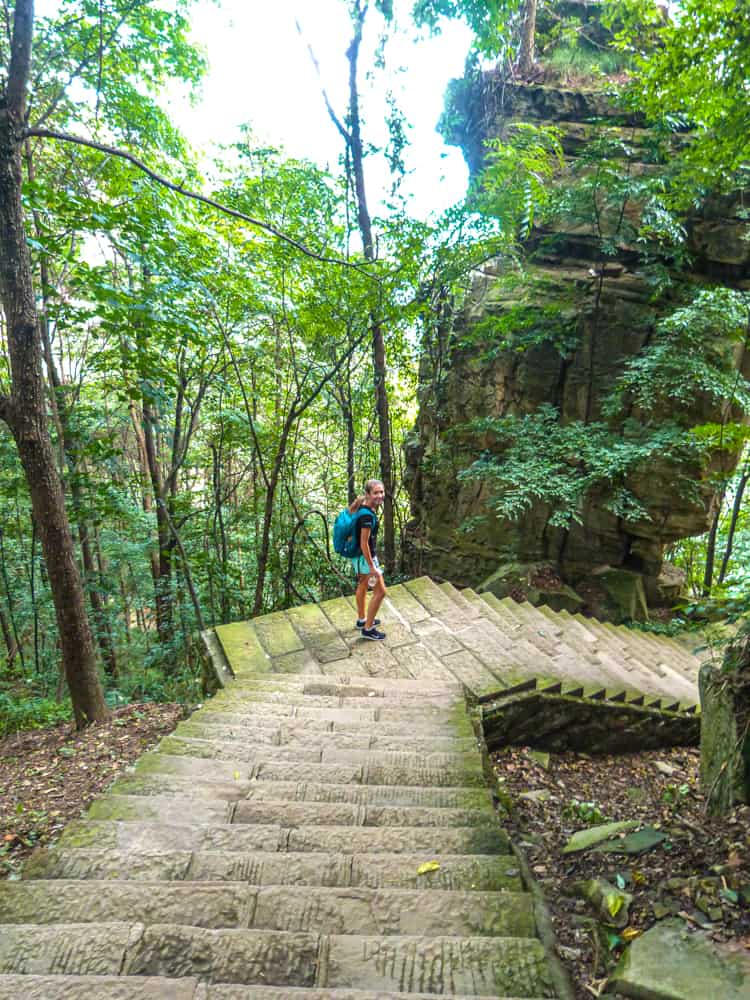
On the second day, we did end up finding a cablecar to take us all the way back to the entrance which saved our legs, but cost a little extra. There is also a huge elevator (lift), called the Bailong Elevator. It’s said to be the longest outdoor elevator in the world, stretching nearly 330m up the cliffside. We considered it for a while, but at 72 CNY (£8.50/USD$10) each way, we chose to walk. I don’t think we fully appreciated the extent of walking we were set to do in Zhangjiajie National park, but it was sure worth it – especially to avoid the crowds.
There is also the world-famous glass bridge at Zhangjiajie National Park. We didn’t do this, but you can read a full guide to the bridge walk here .
You can definitely arrange day tours to Zhangjiajie in advance, which could be a good idea if you don’t do well with getting lost or confused! Here are a few ideas:
- 3-Day Tour to Zhangjiajie National Forest Park (from Zhangjiajie city)
- Full-Day Private Tour of Zhangjiajie National Forest Park
- Zhangjiajie Grand Canyon Ticket with Glass Bridge and Cruise
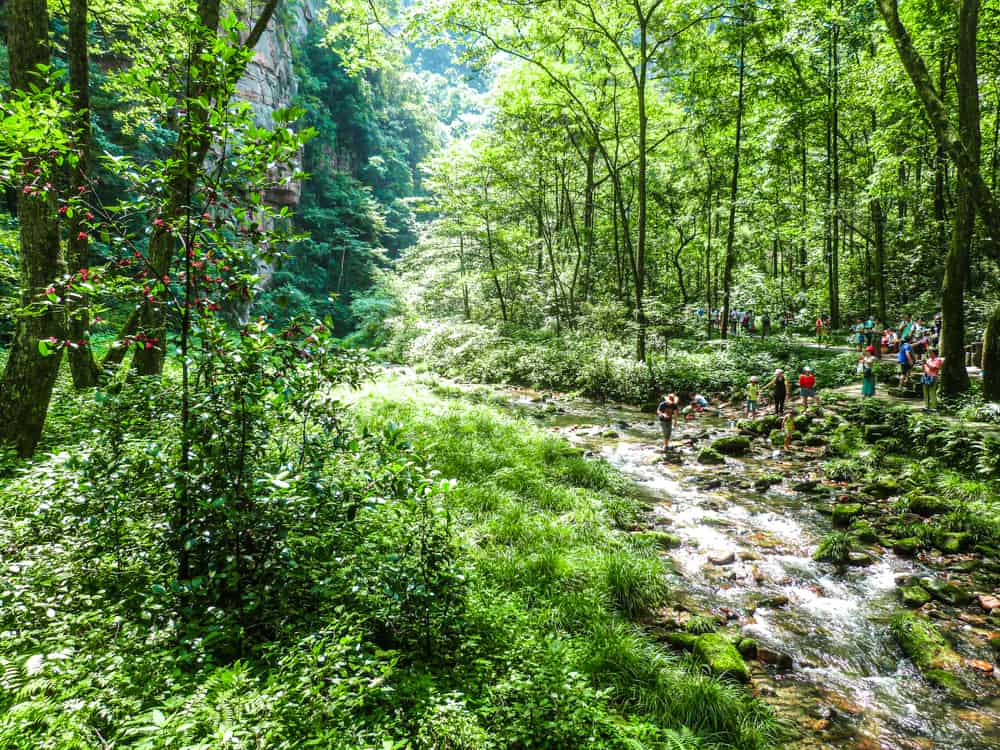
Or, if you don’t fancy walking, you can pay for a lift on one of these seats carried by local guides (when they’re not napping!).

Entrance fee
The entrance fee to Zhangjiajie national park is CNY245 (£28/USD$35). Although the ticket covers you for unlimited entry over 3 days, you’re likely to only use it for a couple of days. The entry fee, together with the elevator ticket can make it a more expensive few days. But, I really do believe it’s well worth the cost and the landscape is like nowhere else on the planet.
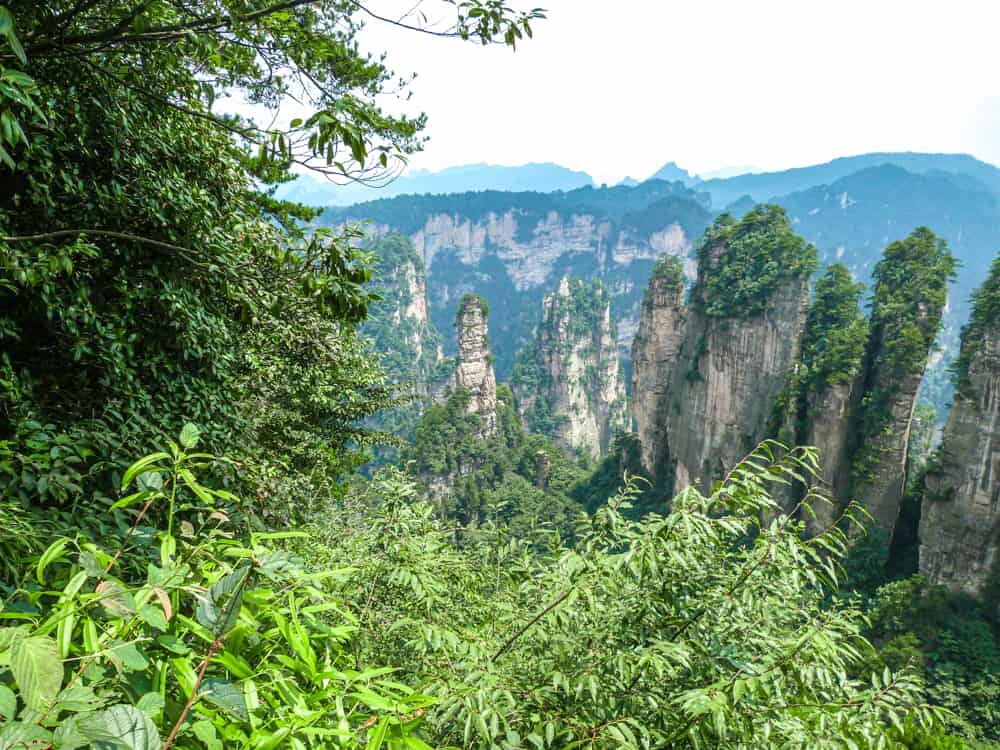
Which routes to take?
Our favourite day was following the Golden Whip Stream trail. It took us straight away from the crowds, and pass trickling streams, crystal clear lakes and along the base of the huge towering cliffs. The path was flat for the first few kms, going over stunning bridges before ascending steeply into the mountains. Choosing to hike means you’ll also see far fewer people on the route, but we did see a few elderly Chinese locals actually speed past us in both directions which was quite disconcerting!
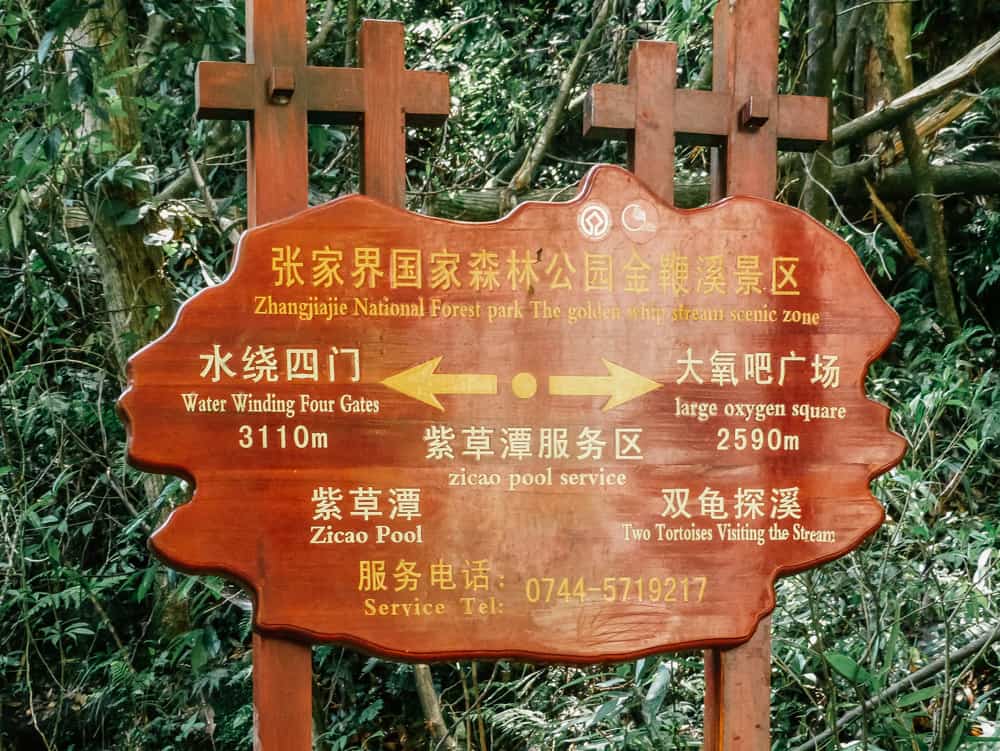
Where to stay in Zhangjiajie National park
You can’t actually stay in the park, but the main accommodation area is in the nearby town of Wulingyuan. From here, it’s a 20 minute walk to the park entrance.
I would really make sure to pick a comfortable hotel here, even though you’ll only be in the hotel to sleep. You’re likely to come back from the hiking so exhausted, hot and sweaty, you’ll want a proper shower and a comfortable bed.
My top suggestions would be:
- Pullman Zhangjiajie (£48 per night)
- Crown Plaza Zhangjiajie Wulingyuan (£71 per night)
- Whispering Mountains Boutique Hotel (£29 per night)
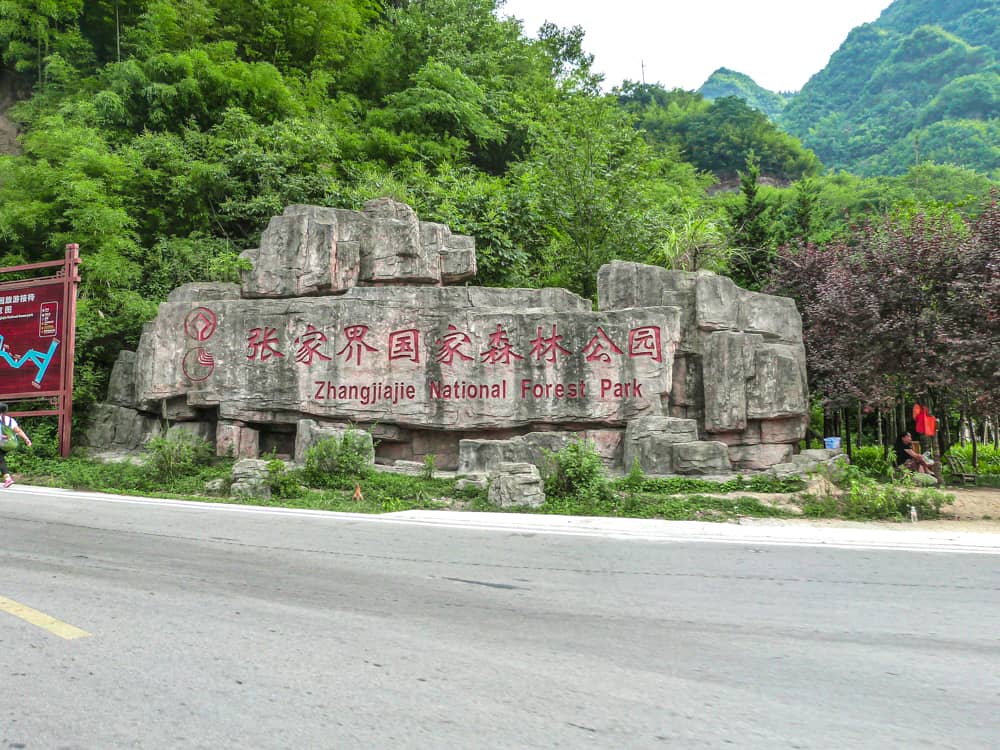
This beautiful mountain is located back in Zhangjiajie and is well worth visiting during your time in the area. It is not in Zhangjiajie National Park.
We managed to visit Tianmen Mountain as a full day outing, before heading onto the airport in the evening. So therefore we didn’t need to stay in Zhangjiajie overnight. We simply took a taxi arranged by our hotel in Wulingyuan back to Zhangjiajie early in the morning, which took around 40 minutes. Then we left our bags at a local hotel right by the cable car ticket office (for a small cost), before collecting them at the end of the day and before going to the airport. The cable car ticket office is very close to the bus station and train station, so this works really well.

Although left luggage is not a formal service they offer, they were happy to do so and others had done the same thing.
Tianmen Mountain is also known as ‘Heaven’s Door Mountain’, due to the huge opening at its summit. It’s the largest hole of its kind, almost like a giant doorway at the top of the mountain. Known as the ‘Stairway to Heaven’, there are 999 stairs up to this huge hole, and it’s a challenging climb!

The main things to do at Tianmen Mountain is to enjoy the journey to the summit (an adventure in itself), as well admire the stunning views from the top. There’s a cliff edge walkway, which winds its way around 1.6km along the cliff face with a drop of more than 1,400m. The railing is pretty sturdy, but this is not for those with a fear of heights! This one has a solid floor, but there are two other glass walkways for those looking for a thrill!
There are two options to ascend to the summit: take the world’s longest cable car or one of the world’s most precarious drives – with 99 hairpin bends! If you are prone to car sickness, I do not recommend doing this drive!
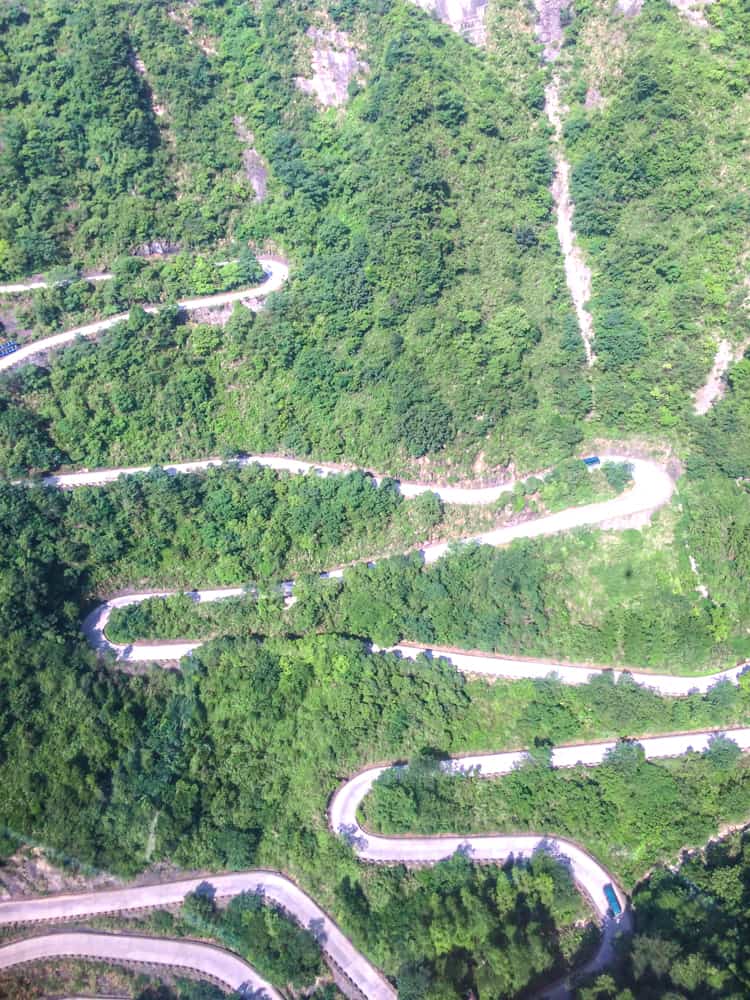
We chose to jump in a minibus for the drive up (doing this road downhill seemed way too scary), and then take the cable car for the descent. The cable car is very steep, and covers 7kms in about 30 minutes.
The cable car starts at 7.30am in the summer months (8am in winter) and I strongly recommend getting there at least 30 mins before this opens. The lines can get very long and the Chinese tour groups join en masse, making it very noisy and chaotic.

My favourite place on this China itinerary! We initially planned to do one night in Yangshuo, and one night in Guilin. But upon arrival, we were just so blown away by Yangshuo, we decided to cancel visiting Guilin.

Yangshuo is like a South East Asia backpacking town, but in China. It is charming, quaint and a wonder to explore, but the best bit is the humour of the locals. At some point, someone must have decided to place a giant stuffed teddy bear at a bar stool at the front of their restaurant. And before long, all other venues in Yangshuo followed suit. So now as you explore the pretty town, nearly every bar or restaurant has an oversized bear sitting at the front! Sometimes he has his big paw wrapped around a beer glass or he might be sitting at a table waiting for you to join. We even saw one bear with his head in his paws. He must have had too much to drink…
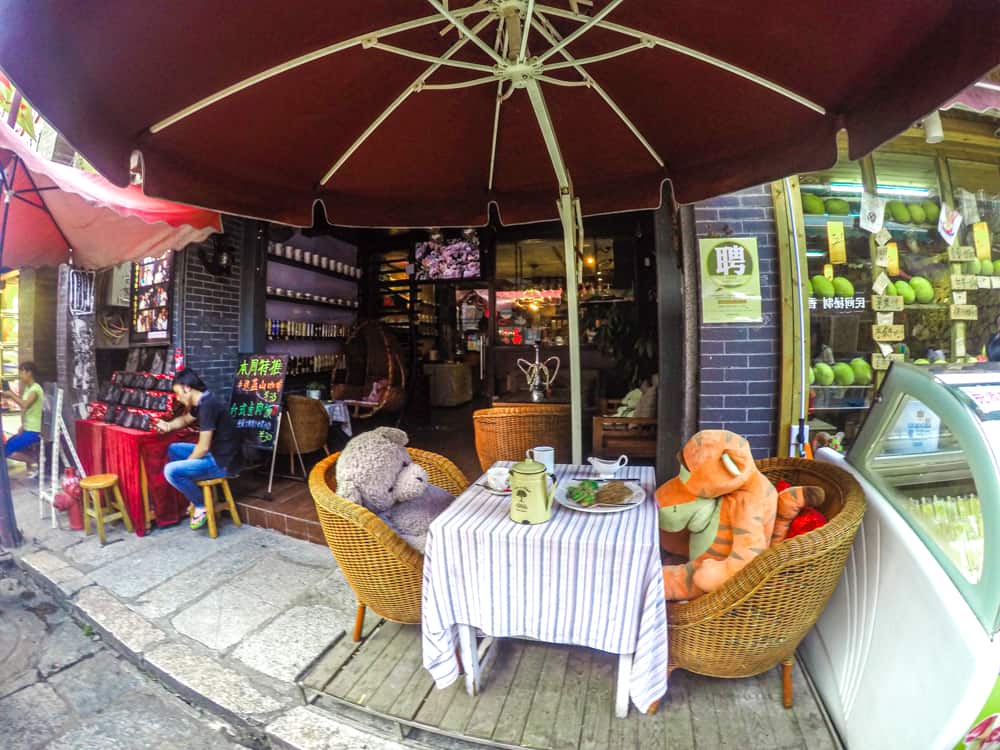
Aside from the local humour, and the charming laneways, Yangshuo has a lot to offer. The mesmerising Li River winds through both Guilin and Yangshuo. It is flanked on both sides by towering limestone karst mountains, and teeny villages.
Days in Yangshuo can be spent exploring the beautiful countryside and calming riverside settings backed by the magnificent karst scenery. We chose to hire bikes to cycle alongside the river to rice terraces. It was a lovely, relaxing day where we jumped in the river to cool off.
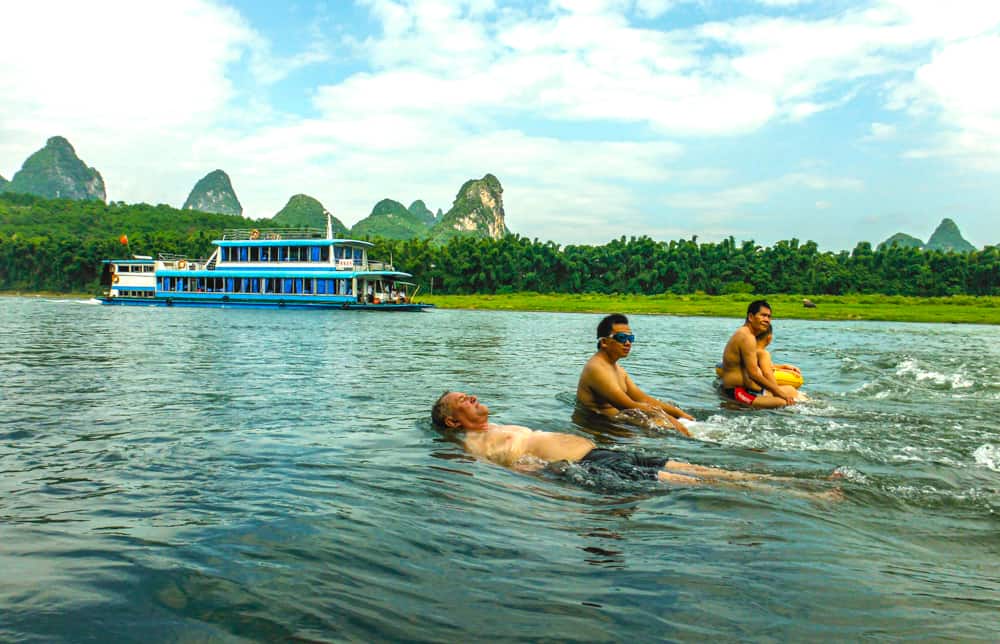
In the evenings, make sure to head back to the river at sunset to watch the local fisherman . The age-old technique uses their beautiful cormorant birds who assist them in the fishing.
We explored ourselves but we did get quite lost at times along the river and amongst the karst towers. One idea would be to join a guided hiking tour with a local English-speaking guide . Not only can you take in the scenery whilst following them, but they will share interesting facts about the area.
If you end up being short on time you can visit Yangshuo from Guilin on a full day guided tour along the Li River .

Longji Rice Terraces
An iconic image of China is of course, the rice terraces located a few hours from Guilin. Construction of the Longji Rices Terraces started back in the late 1200s during the Yuan Dynasty. However, they were not completed until the Qing Dynasty in the early 1500s.
We chose not to visit after deciding to spend more of our time in Yangshuo, but these are highly impressive and often a highlight on visitors’ itineraries in China.
A day at the Longji Rices Terraces can be spent hiking along the maze of trails between the terraces. There are stunning viewpoints along the way.
If staying in Yangshuo, it’s likely to be easier to join a tour to the Longji Rices Terraces to take care of the logistics and planning.

Where to stay in Yangshuo
As a huge fan of the Banyan Tree group, I highly recommend staying at Banyan Tree Yangshuo (£226 per night) for the best luxury stay in Yangshuo.
Other great options covering all budgets in Yangshuo include:
- Yangshuo Mountain Retreat
- The Bamboo Leaf Yangshuo
- Yangshuo 11 Hostel

Another city we loved in China was Chengdu. Famed as the home of spicy Sichuan cuisine, Chengdu is also the place to go in China to see pandas!
Together with the Great Wall, seeing the pandas in Chengdu was one of things I was most excited about. It was an incredible day out, and even better than I expected. Chengdu itself is also a great city to spend some time in too, with some awesome shopping and markets.

Chengdu Panda Reserve
Where do I start! This is one of the best things to do in China, and in my opinion, totally unmissable.
The panda centre is easy to get to from Chengdu . Simply jump on bus #198 or #198A from the Chengdu zoo stop in the city. Or grab a taxi for CNY 50, which takes 30 minutes from the heart of Chengdu, depending on traffic. Or arrange a 4-hour private your with drop-off and pick-up here .
Ensure to arrive early in the morning in order to see the pandas at their most active. They’re lazy creatures and after spending the morning tumbling, rolling around and chomping on bamboo, they often snooze for the rest of the day. The park opens at 7.30am and ticket entry is CNY 58 (£7/USD$8.50) per person, with children under 1.3m free.

The panda reserve in Chengdu is awesome, and you can easily spend a full day here. There are plenty of huge enclosures to see the pandas, and they have lots of climbing frames and toys. My favourite part was the baby enclosure, were we even saw tiny baby pandas in an incubator!
If you want to interact and hold pandas, you can visit as a volunteer for the day. However, it is rather expensive and we didn’t do this. You can book this online here , and it is approximately £285 per person for the full day interaction.

Explore Chunxi Lu
This 1km long pedestrianised shopping street is a must-visit in Chengdu. From authentic antiques and local goods, to boutique stores, there are 700 shops to tackle. Make sure to also visit the six storey Chunxi Road Market too.
An evening foodie and beer tour is a great way to explore Chunxi Lu.
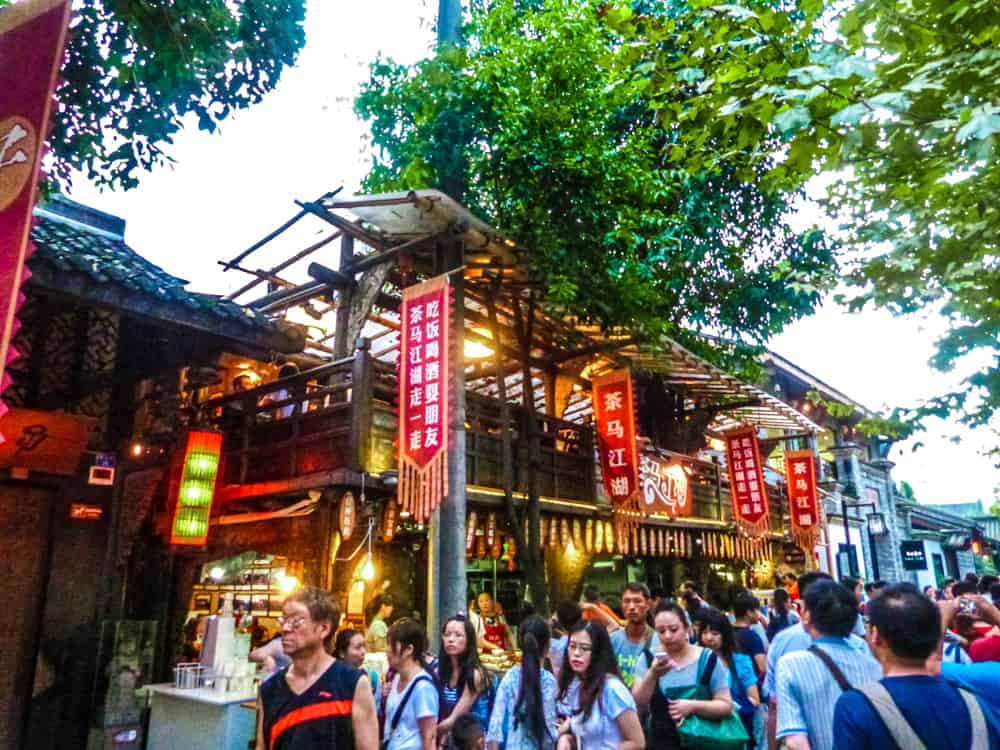
Leshan Buddha
Leshan, which is a 1.5hr bullet train ride from Chengdu, is home to the world’s largest carved stone Buddha in the world. You can visit this as a day trip yourself on one of the tourist buses, or book onto a local tour such as this one .
The sheer size of the Buddha is overwhelming, as he stretches more than 71m into the sky.
Where to stay in Chengdu
As with the other big cities in China, there’s a huge number of places to stay in Chengdu. You can definitely find some excellent value hotels in Chengdu. Here’s my pick of the best:
- The Temple House (from £188 per night)
- Crowne Plaza City Centre (from £47 per night)
- InterContinental Century City Chengdu (from £76 per night)
- Shangri-La Chengdu (from £79 per night)
- Renaissance Chengdu (from £46 per night)
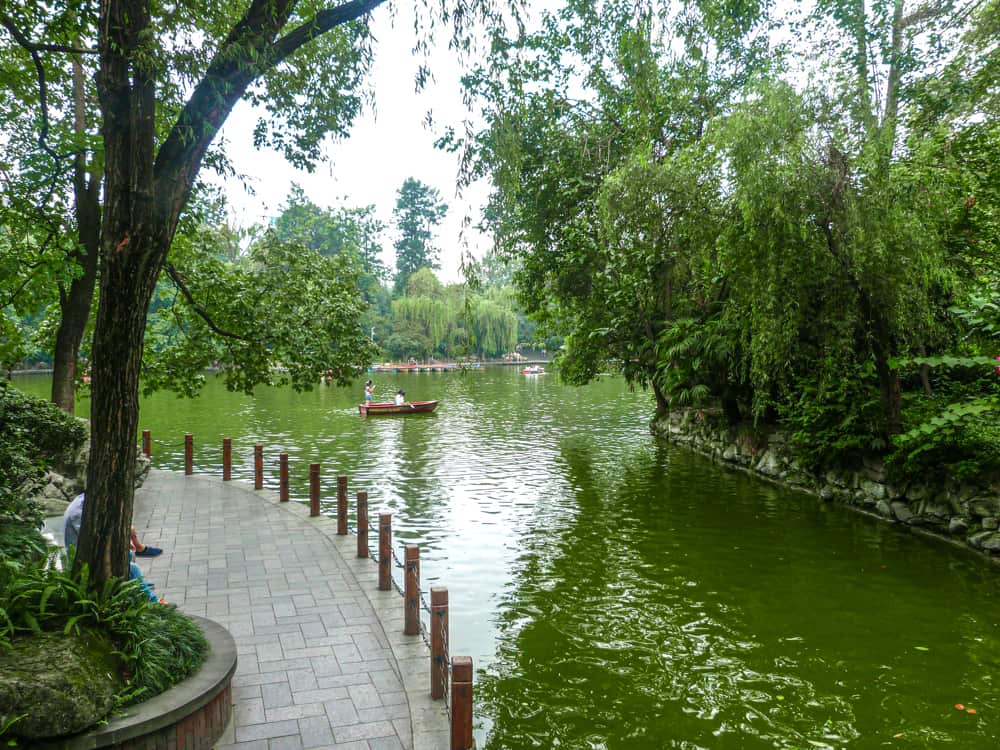
Other Places to Visit in China
In my opinion, this suggested two week China itinerary covers a number of the key highlights. If you have 3 weeks in China or longer, or if Zhangjiajie or Yangshuo do not appeal perhaps, then you could consider the below destinations:
Xi’an was once known as the gateway to the Silk Road, today it is best known for the Terracotta Warriors. There are over 8,000 life-size statues who were created during the reign of China’s first emperor to guard his tomb. Another highlight in Xi’an is to explore the old city walls and enjoy the view across the city and of everyday life.
You can book your train ticket easily online using this tour service from Beijing to Xi’an here.
Mt. Hua Shan is a great place to visit for thrill-seekers, and visiting here can be easily done as a day trip from Xi’an. The infamous Hua Shan plank walk is located here, where you side step along a plank fixed to the side of a cliff. This is considered the world’s most dangerous hike and supposedly over 100 people have died here. If anything, the mountains themselves are worth visiting even if you don’t do the plank walk and you can ascend to the summit of Hua Shan by cable car. You can visit all five peaks which each having stunning views and provide glimpses of the Yellow River below on several different hiking routes.
Jiuzhaigou and the Jiuzhai Valley National Park
Located north of Chengdu in Sichuan is this magnificent world of crystal clear alpine lakes, stunning cascades and ancient forests. At the heart of the national park is the multi-coloured, striking Five Flower Lake.
There is a limit of 5,000 people per day to this national park, so it could be a good idea to join a tour from Chengdu or to arrive very early.
The national park is both a UNESCO World Heritage site and a UNESCO Biosphere Reserve.
To get to the national park, you need to fly to Jiuzhaigou from Chengdu (or other cities in China). As it is located high in the mountains, there is no train here but there are long distance buses going from cities around China to Jiuzhaigou.
You can also arrange this excellent 4-day tour in advance from Chengdu taking in both Jiuzhaigou and Tibet.
Two weeks in China
So there’s my guide to two week China itinerary for a first-time traveller. As you can see, there are some amazing experiences on offer in this China itinerary and that’s just selecting a handful of places to see in China.
There are countless destinations to visit in China, but we picked each of our places for very distinct reasons. Beijing and Shanghai to visit the two biggest cities in China, both of which are packed with history and culture. Zhangjiajie and Yangshuo to explore rural China and enjoy some outdoor adventures, and then Chengdu for the pandas, of course!
And Suzhou and Tianmen Mountain were included in our China itinerary as they slotted in nicely to our plans.
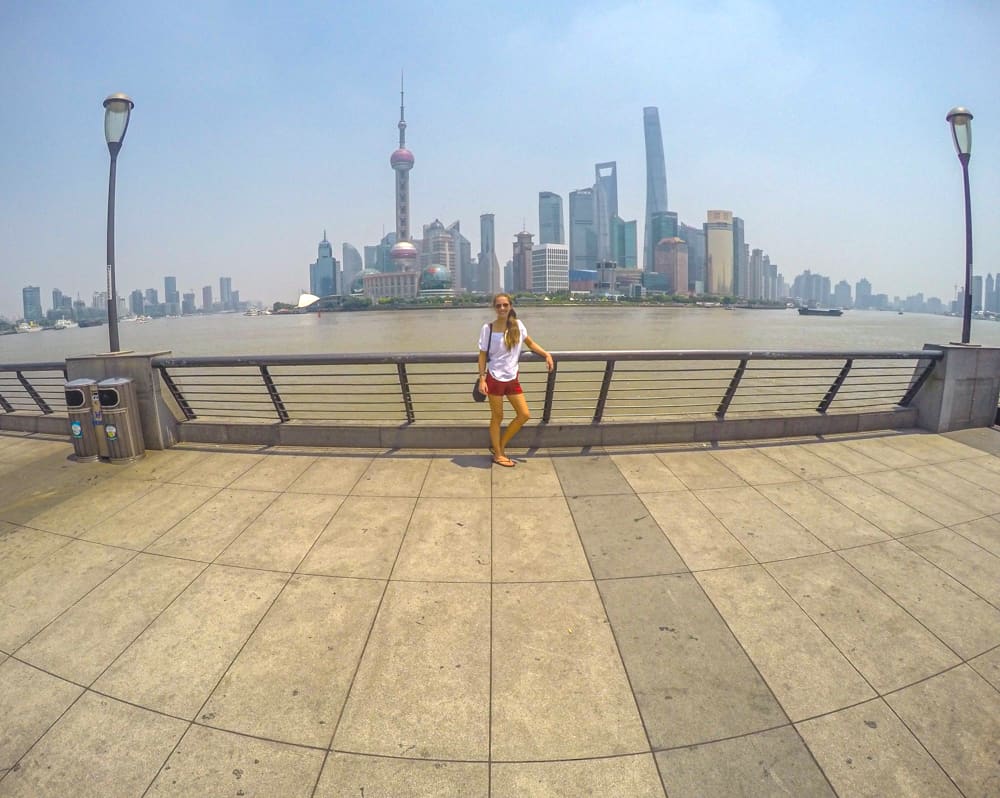
I hope this proves useful in planning for your trip to China!
Feel free to drop me a line if you would like any further advice on anything to do with travel in China. And if you’ve enjoyed this guide, then please do share using the below links!
Wanna see more? Check my Instagram here , my Facebook here or my Twitter here !
Disclaimer: This visit to China was entirely paid for by myself, and there was no involvement from the tourism board or a hotel. This is an independent guide.
Enjoyed my China itinerary guide? Pin it!
You may also enjoy:
The suite life at the intercontinental …, maldives hotel review: one week at …, guide to el nido: the best …, singapore travel guide: the best things ….
Hi, thankyou so much for sharing your trip. your blog is amazing also all the pictures makes me want to visit there very soon. your blog is very helpful 🙂
Thank you so much for sharing your 2 week Itinerary!
It’s made me super eager to get back to Beijing as I loved it so much and would love to explore more and see how things are now. You’ve included some amazing`ing sounding ideas which I’d love to do!
China is really one of the most beautiful country filled with lots of modern and historical attractions. I had a chance to visit China with tourist group from Abu Dhabi and we had a great stay their, we especially liked the Great China Wall. I am planing to visit again with next group.
Hi, Thanks for the detailed explanation and tips. I’ve been reading a lot about the country and your posting is the most helpful and inspiring. I am planning to travel solo to China next November starting in Shanghai and ending in Beijing, for two weeks. is it safe for a solo female to travel around China? Thanks again
Great tour. Thanks so much. We are planning for May 2024.
Quick question: How did you get from Zhangjiajie to Yangshuo or Guilin? I did some research and it’s not easy by train or plane.
Sorry for the late reply! I flew between the two, with a stopover in Guangzhou – it wasn’t overly easy! Landed in Guilin and travelled by bus to Yangshuo!
Great Itinerary!!!
Leave a Reply Cancel reply
Your email address will not be published. Required fields are marked *
Let’s connect
China Experience
19 days | experience the nuanced essence of china from beijing to hong kong.

Experience the breadth of cultures, flavours and landscapes that make up the vast Middle Kingdom on one our most popular tours through China. Marvel at iconic attractions like the Great Wall and the Terracotta Warriors, then find a quieter side of the country with a cruise along the Yangzi River and a stay in a Buddhist monastery tucked into the mountains of Emei Shan. Discover a land of epic history, vibrant cultures and dramatic vistas on this 19-day China Experience.
Trip overview
- This is one of our most comprehensive trips in China, covering huge distances and taking in key destinations from north to south with plenty of variety in experiences and sights along the way
- Zip through the country from north to south on its efficient high-speed rail network.
- Take through the iconic scenery of the Yangzi River as you meander through the dramatic Three Gorges on a three-day cruise
- No matter how many guide books you have read, nothing truly prepares you for the grandeur and immensity of historic sights like the Great Wall, Tiananmen Square, Forbidden City, Leshan Big Buddha and the Terracotta Army. However, the country's modern man-made sights refuse to be outdone, and you can see the modern equivalence of those ancient feats in the skyline of Hong Kong and the Yangzi River's Three Gorges Hydroelectric dam
- Get up close to giant pandas in Chengdu and learn about the preservation work required for this ancient species.
- Beyond adorable, endangered giant pandas, Chengdu is one of our favourite cities in China. Find out why our travellers end up falling in love with this emerging travel hotspot here: intrepidtravel.com/adventures/chengdu-china-travel-guide
- Escape the cities to discover China's natural beauty. Trek up the misty forests of Emei Shan for a stay in a monastery, waking to the sound of drums and prayers in the morning Buddhist ritual.
- Cycle through the Chinese countryside with backdrops that resemble paintings – the picturesque limestone karsts of Yangshuo, for example, grace the walls of conference rooms and Chinese embassy's around the world
- This trip is a true journey in the sense that we are covering huge distances and visiting many destinations along the way. Be prepared for long days of travel in between days packed with sightseeing.
- With walks on the Great Wall and up Emei Shan (both which have many steps!), you'll need a good level of fitness to get the most out of these activities. Don't worry, you'll have plenty of more relaxing days too, such as on the Yangzi River cruise or in the picturesque town of Yangshuo.
- There is a variety of accommodation on this trip including hotels, guesthouses, monasteries, and riverboats. They might not always be as comfortable as home, but each accommodation site will give you a different perspective on China.
- While we finish in Hong Kong, due to our late afternoon arrival we do not include much free time or activities here. We highly recommend staying a few extra days post trip to make the most of this exciting city. Here's some tips to get you started: intrepidtravel.com/adventures/what-to-do-in-hong-kong
Ni Hao! Welcome to Beijing, capital of the most populous country on earth. With plenty of places that give an insight into the China's ancient history, as well as newer sights that showcase contemporary culture. Your adventure begins with a welcome meeting at 6 pm where you'll meet your tour leader and fellow travellers. Please look for a note in the hotel lobby or ask reception where it will take place. We will collect/check your passport, insurance and next of kin information at the group meeting, please have these on hand. After the meeting maybe head out to explore the Beijing streets – with your hotel located centrally, a walk in any direction will unveil all sorts of wonderful surprises. Perhaps kick off your China adventure with a taste of an iconic dish – Peking duck.
- Hotel (1 night)
There are no meals included on this day.
If you wish to arrive a few days early in Beijing, we'll be happy to book additional accommodation for you (subject to availability).
Today you’ll explore two of the most popular sights in Beijing on foot and using public transport. While this can be crowded, it's the best way to immerse yourself in the local culture. Make your way to the centre of the city – Tiananmen Square, the symbolic centre of Chinese power. Framed by the Gate of Heavenly Peace with its Mao portrait, Mao's Mausoleum, the Great Hall of the People, the National Museum, and with elaborate flag raising and lowering ceremonies at dawn and dusk, it's a place of pilgrimage for the Chinese tourists who consider it the heart of their nation. From here you will enter the enormous Forbidden City. Built more than 500 years ago and off limits to commoners for almost all that time, the Forbidden City looks much like it always has. As you explore the great halls and courtyards you’ll be able appreciate the might and grandeur of the Imperial Chinese court during the height of its power in the Ming and Qing dynasties. This evening is free to explore the Beijing street food scene; the quiet hutongs (historic narrow streets and alleys) come to life with lights and noise in the evening full of eateries to try the local treats.
- Beijing - Forbidden City
- Beijing - Tiananmen Square
- Beijing - Temple of Heaven (entrance fee) - CNY40
- Beijing - Summer Palace (entrance fee) - CNY60
- Beijing - Kungfu Show (ticket) - CNY280
- Beijing - Lama Temple (entrance fee) - CNY25
- Beijing - Hutong family visit - CNY100
- Beijing - Acrobat show (ticket) - CNY290
- Beijing - Beijing Opera show (ticket) - CNY300
The maximum capacity for the Forbidden City has been reduced from 80,000 visitors a day to 30,000 a day after the pandemic. This now has a big impact on the availability of Forbidden City tickets to both tour groups and individual visitors, especially during high domestic travel season from March to October. The local team will try their best to secure the entrance tickets to the Forbidden City, however, in the odd cases where the visit becomes impossible, you'll visit Temple of Heaven instead which is another exemplary ancient architecture complex that’s a must see in Beijing.
This morning you’ll take a private bus to visit Mutianyu Great Wall (around 2 hours) and spend some time exploring, taking photos and learning the history of this mighty site. An incredible piece of engineering, the wall stretches 6000 km west from the mountain ridges north of Beijing. It was originally constructed to protect Chinese empires from nomadic northern tribes, and even though it failed in this purpose it's still one of the country's most remarkable achievements and an iconic destination. The walk is generally on the restored section of the wall, but this still means walking on steep, uneven terrain with multiple steps, so reasonable fitness and comfortable shoes are needed. The walk is approximately 5 kilometres and will take 2 to 3 hours depending on your level of fitness. You can choose how you access the wall, with options including cable car, chairlift or even toboggan to come down (at your own expense). Being perched on this incredible engineering feat and surveying the spectacular surrounding countryside is an unforgettable experience. Return to Beijing by private bus, and then enjoy a free evening to either relax or explore further.
- Beijing - Mutianyu Great Wall
Today you'll travel to Xi'an by high-speed train (around 5.5 hours). The capital of Shaanxi Province, Xi’an is the largest city in northwest China. Once the imperial centre of China for nearly 2000 years, Xi'an is now a vibrant, modern city dotted with many interesting historical sites and is a great place to explore. Join your leader on a short walking tour to uncover what was once the start of the ancient trading route of the Silk Road. The city has a wonderful Muslim Quarter, and you’ll wander the narrow streets past shops, lively markets, and groups of white-bearded men in skull caps sipping tea in cafes. In your free time, maybe visit the ancient City Wall, the most complete in China, running over 13 kilometres (8 miles) around the city (and cycling on top of it is a great option). Or visit the Bell and Drum Towers, the former built (according to legend) to restrain the dragons that were causing earthquakes, the latter is (unsurprisingly) full of drums, once used to mark time and warn in emergencies. Xi’an’s Silk Road history means it has an exciting mixture of cultures, exemplified by its food options. So in the evening, perhaps visit the night markets and try many of the tantalising local specialties such as pao mo (lamb broth that you break flat bread into), hand pulled noodles, hot pot and barbecue.
- Xi'an - Muslim Quarter Walking Tour
- Xi'an - City Wall bike hire - CNY45
- Xi'an - Bell & Drum Towers (entrance fee) - CNY50
- Xi'an - Little Wild Goose Pagoda - CNY50
- Xi'an - Big Goose Pagoda (entrance fee) - CNY80
- Xi'an - Great Mosque (entrance fee) - CNY25
Today we will travel by public transport (around 2 hours) to visit what is undoubtedly one of the man-made wonders of the world – the Terracotta Warriors. You’ll learn all about this incredible archaeological find, rediscovered in 1976 by farmers digging a well after being buried for 2000 years. These clay statues of soldiers, horses and chariots (originally all painted) were commissioned by the emperor Qin Shi Huangdi as part of his mausoleum after he ascended to the throne in 264 BC. Three main pits are open for you to view, where just under 2000 of the warriors – each individually sculpted from clay and with a different costume, height, and even facial expressions – stand in battle formation. The scale is incredibly impressive. Return to Xi’an for you final evening in the city.
- Xi'an - Terracotta Warriors Tour
- Xi'an - Tang Dynasty Show - CNY290
Take a 3.5-hour high speed train ride to Chengdu. The capital of Sichuan Province, Chengdu is most famous for two things – the pandas living in the mountains, and the food. Chengdu's signature spicy cuisine is largely regarded as the best within China. In such a food-focused country, this is no mean feat. Maybe sample a Sichuan hotpot this evening. Go on a walking tour with your leader and check out Tianfu Square and People's Park, arguably the most lively park in China, full of locals singing, dancing, doing tai chi or even modelling! It might be one of China's biggest cities, but Chengdu has preserved plenty of its traditional flavour, and you'll get a taste of it during this tour and your free time. Don't miss out on the teahouses – pull up a stool and sample the local's favourite green and jasmine tea. Don't be surprised if someone offers to give you a head massage or clean your ears while you sip!
- Chengdu - Leader-led walking tour
- Chengdu - People's Park & Tianfu Square
- Chengdu - Wenshu Monastery (entrance fee) - CNY5
- Chengdu - Sichuan Opera (ticket) - CNY280
Find out more about why Chengdu is an Intrepid favourite here: intrepidtravel.com/adventures/chengdu-china-travel-guide/
Visit the Giant Panda Breeding Research Base today, where you're able to witness the conservation efforts being made to save this endearing species. There are only around 1000 pandas left in the world and 80% of them are found in the mountains in Sichuan. The facility was set up 30 years ago to help protect this animal, and they now have the biggest number of giant pandas in the world living at the base, along with red pandas. The pandas have over 600 acres of parkland to live in, and today you'll have the honour of getting up close to these gorgeous creatures. Watch them play, eat bamboo and climb the trees. If you’re lucky enough (and travelling between July and September) you might get to see newborns taking their first steps in the nursery. Afterwards, return to downtown Chengdu for some free time. Perhaps take in a performance of traditional Sichuan Opera, visit the Wenshu Temple, or take a cooking class. Ask your leader for details.
- Chengdu - Giant Panda Breeding Research Base (entrance fee & transport included)
Travel by private bus to the sacred mountains of Emei Shan. Along the way, stop in the town of Leshan to visit the World Heritage-listed Leshan Giant Buddha. Facing the river, the 71-metre-tall Buddha was carved out of a cliff face and took almost a 100 years to finish about 1300 years ago, in order to subdue the violent flood that the Leshan town had to suffer in ancient times. Depending on the volume of visitors, you may either choose either to climb up and down Leshan Mountain or take the river boat to experience the Giant Buddha, although the river boat is the best option if you want see the statue's entirety and wow at its magnificence. Then continue to Emei Shan (approx. 40 min) where you'll spend the next three nights.
- Leshan - Giant Buddha (boat ticket & transport included)
Read more about Emei Shan here: https://www.intrepidtravel.com/adventures/emei-shan-china/ If you are travelling in the months of October-April, while we still visit Emei Shan and the surrounding areas there may be some changes to the activities and accommodation available depending on the weather conditions. We advise you to bring very warm clothes (waterproof shoes, windproof coat, hat, scarf, gloves) as there can be snow and sub-zero temperatures in the mountains in March/April or November. You'll leave your main lugggage at the hotel and only take an overnight bag with essentials for your hike to the monastery stay up in the mountain.
Today will be spent exploring the landscape surrounding Emei Shan, one of China’s four sacred Buddhist mountains. In the morning, travel by the park bus and then cable car (about 3 hours total), to the Golden Summit. The views from the 3099-metre/10,170-feet peak at Emei Shan are truly spectacular, especially on clear days. Take a public bus down the mountain, where you’ll start your 3-hour trek with a local guide to your accommodation at a monastery. Expect plenty of steps and steep paths, and dress accordingly. Sturdy footwear will help you to enjoy this challenging but rewarding day on the mountain.
- Monastery/Guesthouse (1 night)
- Emei Shan - Scenic Area Hiking
- Emei Shan - Cable car & Golden Summit visit
Today continue to explore the beautiful countryside at the base of the mountain, which provides ample opportunity for leisurely walks. It may be possible to visit some local hot spring resort to relax and revive from your hike, or take a tour of some nearby villages. You can also visit the Crouching Tiger Monastery, hidden deep in the forest, and see its seven-metre copper pagoda inscribed with Buddhist images and texts.
- Emei Shan - Crouching Tiger Monastery - CNY6
- Emei Shan - Hot Spring Resort - CNY128
Travel back to Chengdu and then onto Yichang by train (approximately 7 hours). Yichange, the gateway to the Yangzi River, is also where the Three Gorges Dam is located. From here, you'll start your 4 days cruise up the magnificent Yangtze River.The gorges are spectacular and most travellers enjoy their time on the Yangtze boats but some words of warning are necessary. The Yangtze River region is one of the most industrialised and rapidly developing areas in China. We travel on Chinese tourist boats rather than luxury tourist vessels. We like to call it a river trip, rather than a traditional cruise. Cabins are twin-share with private bathroom facilities. While all meals are included during your time on the boat, the buffet-style Chinese cuisine can be quite plain, but there's a chance to visit the supermarket before boarding in order to stock up on some favourite snacks, drinks or fruit for your journey.
- Overnight Boat (1 night)
Please note that depending on the composition of the group you may be required to share a cabin with your leader or a traveller from outside of your group on a same gender basis as tour groups are not permitted to book single rooms on the Yangtze boats. The Chinese authorities oversee the travel of all boats on the Yangtze. We do everything we can to ensure standards are maintained for our river trip but some things are outside our control. We use a range of different boats, depending on availability and the date of our departure. All boats comply with our required safety standards, although the size and age of boat varies from trip to trip. As the departure times of the boats are subject to frequent change this can mean that we need to make some changes to our itinerary and at times we've been unable to see all three gorges due to the boat schedule or poor visibility. Any changes made will be done with the aim of giving you the best possible Yangtze experience but we'd like to forewarn you of the possibility. Your leader will update you of any known changes at your group meeting.
This morning, enjoy a tour of the incredible feat of engineering that is the Three Gorges Dam. The world’s largest hydroelectric project, the dam generates power and prevents the major flooding that had long threatened the people of the area (though the impact on displaced people and archaeological sites should not be ignored). Continue your cruise along the Yangtze River. The Yangtze has inspired numerous poets, writers and travellers over the centuries. You will travel along one of the most picturesque sections, through the renowned Three Gorges. The dramatic 'Sanxia', as they are known in Chinese, stretch for 200 kilometres and vary from 100 metres to 300 metres in width. As well as relaxing and taking in the sights (now much changed since the implementation of the Three Gorges dam), you may have opportunities to visit some riverside attractions and towns on optional group excursions, including leaving the river boat to take a side trip down a tributary of the Yangtze River. If you prefer to stay on-board, perhaps take the chance to learn some Mandarin words or how to write characters from your leader, how to play mahjong, sing some Chinese songs, catch up on your travel diary or just relax and chat with your group members and local travellers.
- Overnight Boat (3 nights)
- Breakfast (3)
- Yichang - Guided Three Gorges Dam Project tour
Your Yangtze boat trip will end in Chongqing this morning, the biggest city in China with a population of over 20 million in the city centre and suburbs that spraw along the river and up the steep hills behind it. From here you’ll take a private bus to the train station and board the bullet train to Guilin (approximately 5 hours). Then transfer to Yangshuo, your final stop of the day (approximately 2 hours). When you arrive, take the time to rest and soak up the charm of this little town, popular with the Chinese and Western travellers alike, who come for the beautiful landscape and stay for the great cafe and bar culture. It's also one of the best places in the country to get a feel for local culture and traditions, while having plenty of fun at the same time. The countryside around Yangshuo is immortalized in many traditional Chinese paintings – picture immense limestone karsts dotting the rural landscape and towering spectacularly over rice paddies and the meandering Li River, all celebrated on every 20 yuan note.
Today you’ll shake out your train legs and experience the dramatic limestone karst landscape during a bike ride, where you’ll gain a real insight into rural Chinese life. Stop for lunch at the house of our local friends for a tasty meal made from locally grown produce. This is an absolutely stunning region to explore, as every turn in the road brings you to another postcard-worthy location. You’ll have a local guide during the ride, and helmets and bike rental are included in the trip price. The evening is free for you to explore Yangshuo's lively cafe and bar scene. Maybe grab a bowl of pork stuffed tofu or beer fish (simmered fresh water fish).
- Yangshuo - Cycling tour (local guide & bike hire included)
- Yangshuo - Moon Hill (entrance fee) - CNY15
Today is as clear as a Yanghsuo spring day, but there are plenty of optional activities to choose from. You could begin the day by focusing your body and mind with a morning tai chi class or kung-fu lesson. Perhaps try your hand at Chinese calligraphy, or simply sit back and relax as you enjoy a relaxing cruise down the Li or Yulong River. Maybe visit the market to shop with the locals and get a feel for the regional produce. You can then put this new knowledge to use in a cooking class at the Yangshuo Cooking School. Learn to cook Chinese dishes with recipes that are easy to make and ingredients readily available outside of China, so that you’ll soon be wowing friends and family back at home. Or take a tour to the much loved viewpoint at Xiangongshan for a birdview of Yangshuo's amazing landscape and visit a local tea farm to learn about tea picking and brewing. In the evening, perhaps watch an outdoor light show staged by 2008 Beijing Olympics’ Opening Ceremony director Zhang Yimou.
- Yangshuo - Xianggongshan & Tea Farm Visit (Minimum 6, transport and entrance fee) - CNY300
- Yangshuo - Impressions Liu Sanjie light show (minimum 4 people) - CNY298
- Yangshuo - Tai Chi/Kung Fu class - CNY100
- Yangshuo - Cooking School & Market Tour - CNY230
- Yangshuo - Li River Cruise - CNY200
- Yangshuo - Massage/Hot cupping - CNY100
Take a private bus from your Yangshuo Hotel to Guilin West Station, and then board a bullet train to West Kowloon station in Hong Kong (approx. 4 hours). Once you arrive mid-late afternoon, follow your leader on an orientation walk near your hotel. Hong Kong's cityscape is spectacular and its modern fast-paced life is only minutes from picturesque islands and beaches. The locals are very proud of their Cantonese culture and history, so step out of the shopping malls and off the main streets to discover another side of the city. This evening, enjoy an optional final farewell dinner to sample some of the best Cantonese dishes.
- Hong Kong - Victoria Peak & Tram - HKD90
- Hong Kong - Star Ferry - HKD15
- Hong Kong - Nightly Light Show - Free
There are no activities planned for the today and the trip ends this morning. Check out time is 12 pm but you'll be able to leave your luggage at the hotel reception if you can't find a flight until the evening. However, we highly recommend you to spend a couple of extra days here so that you can make the most of Hong Kong. If you're interested, we can help you book additional accommodation (subject to availability). Please consult your booking agent if you are interested.
See our travel guide to Hong Kong here: https://www.intrepidtravel.com/adventures/what-to-do-in-hong-kong/
4 breakfasts, 4 lunches, 3 dinners
Private Bus, Public Bus, High-Speed Train, Overnight Riverboat, Subway, Taxi, Bicycle
Hotel (13 nights), Monastery (1 nights), Overnight Riverboat (4 nights)
Dates and availability
Important notes.
1. A single supplement is available if you’d prefer not to share a room on this trip. The single supplement excludes Days 11,12,13, 14 (Overnight boat) where you will be in shared accommodation and is subject to availability. Please speak to your booking agent for further information. 2. A scanned copy of the personal details page of your passport needs to be sent to your booking agent no later than 45 days before departure in order for us to purchase your train tickets.. Fees may apply for amendments to details within 45 days of departure, and in some cases, you will be required to cover the cost of issuing new tickets. 3. Please note while traveling through mainland China you will not be able to access some popular internet websites.
Want an in-depth insight into this trip? Essential Trip Information provides a detailed itinerary, visa info, how to get to your hotel, what's included - pretty much everything you need to know about this adventure and more.
Filter by rating
A great four-week China itinerary: guide & practical tips
Exploring the best of China in four weeks is a mission impossible. Honestly, it is not enough time. You will only scratch the surface. If you really want to get to know this country, you should at least go for two or three months. China has so much to offer as a travel destination. Rice terraces, metropolis, karst mountains, desserts, temples. This is one of the most versatile destinations in the world, without a doubt! I loved every bit of my time in China. In this blog post, we will look back on my first trip to China with a comprehensive four-week China itinerary and practical tips.
Day 1 – 5: Shanghai & Suzhou
We started our China itinerary in Shanghai. From Pudong airport, we got on the Maglev train (300 kilometers in 8 minutes, single fare is 50 CNY) to the city center. We had booked a tiny apartment at Jiangsu Road. Our host had sent us some handy directions. Sadly, we still got lost when we chose the wrong metro exit. Welcome to China where metros have exits A to N. Luckily, our host was so nice to meet us and to guide us to the apartment. We filled our days in Shanghai with a bicycle tour, checking off the tourist spots, street art in M50, and a day trip to Suzhou .
Where to stay : Campanile Shanghai Bund Hotel or YaTi by Artyzen Hongqiao Shanghai .
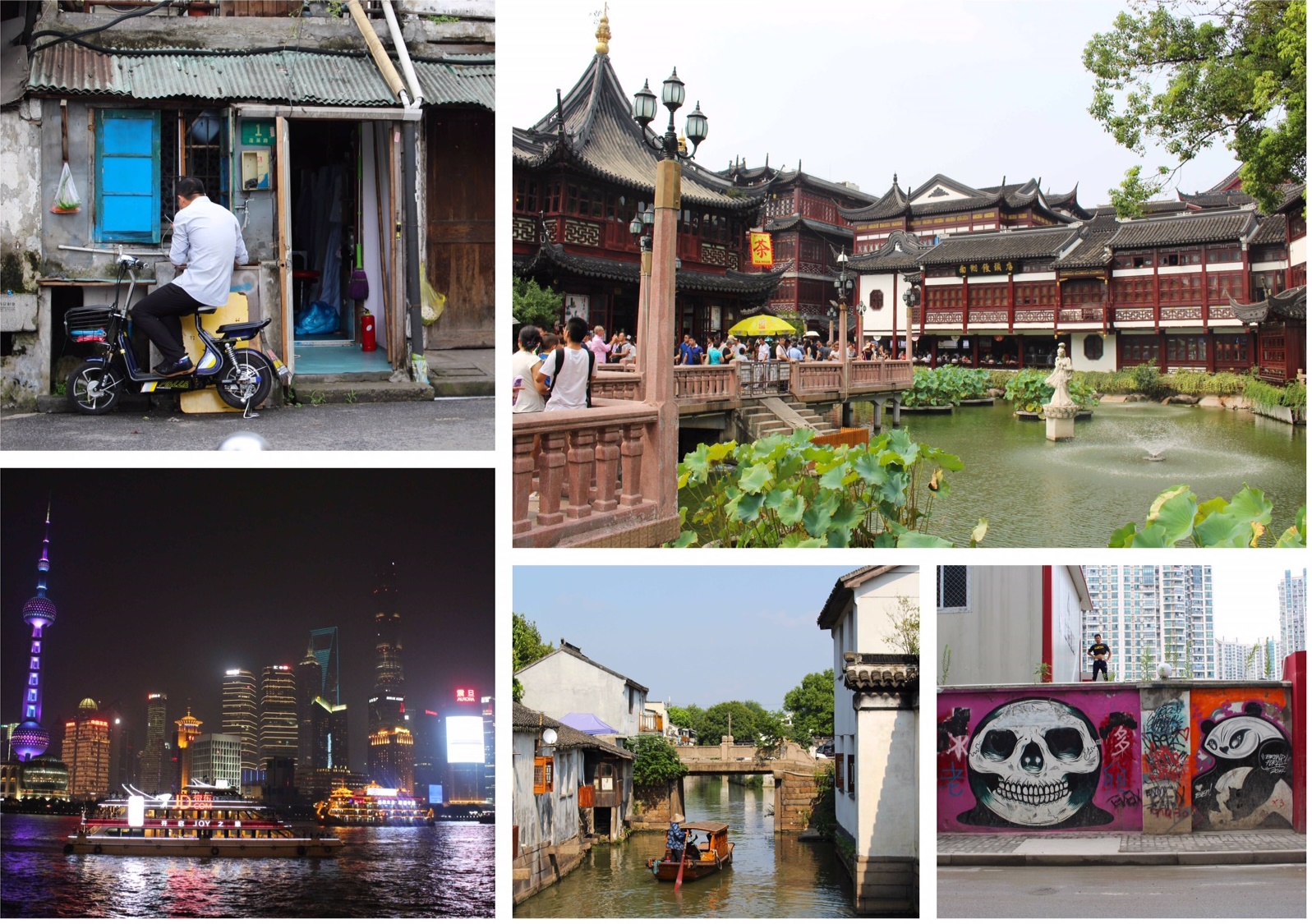
Day 6 – 9: Beijing & Huanghuacheng
With the high-speed Shanghai – Beijing train, we traveled in 5 hours from metropolis to metropolis. Beijing is a very different type of city than Shanghai. Beijing is full of history, while Shanghai is a business city. Furthermore, Beijing attracts a lot more international tourists and also the air is dustier. We spent our time in Beijing by joining a walking tour in the hutongs , taking a bicycle tour, and hiking a beautiful part of the Great Wall. We went to Huanghuacheng (the only part of the Wall with a lake) and it was worth all the sweat and tears. Sadly, I failed at my mission to visit Art District 789. While finding street art in Shanghai was a piece of cake, in Beijing, it didn’t work out.
Where to stay : Yue Xuan Courtyard Garden Hostel .

Day 10 – 12: Xi’an
After Beijing, we boarded a night train to our next stop on our China itinerary: Xi’an. Maybe the name doesn’t ring any bells, but it should when I say Terracotta Army. My visit to this historical underground paradise was on the same day as my birthday, so it was twice the fun. Though I loved seeing the Terracotta army, it didn’t blow me away. I was more excited to go on a bike ride on top of the city walls of Xi’an. Also, the vibrant Beiyuanmen Street Food Quarter was a big surprise for me. The roots of the Muslim community that lives here can be traced back to the ancient Silk Road. Back then, Xi’an was the most eastern stop of this trade route. This area is a great place for a late afternoon to fill up on street food.
Where to stay : Campanile Xi’an Bell Tower.
Day 13 – 15: Xiahe
Sounds the same as Xi’an, but it is very different: the mountain town Xiahe. A place of Tibetan and Uyghur influences. The population of this city is a mix of shepherds, monks of the Tibetan Gelukpa group, and the Hui Muslims. I really enjoyed my time in Xiahe. It was very different than any other place we have seen in China. Even the money is different and is not accepted outside this region. In Xiahe we visited the largest Tibetan monastery outside Tibet, we watched the locals on their traditional kora and drove from temple to temple through the hilly grasslands.
Where to stay: Overseas Tibetan Hotel.
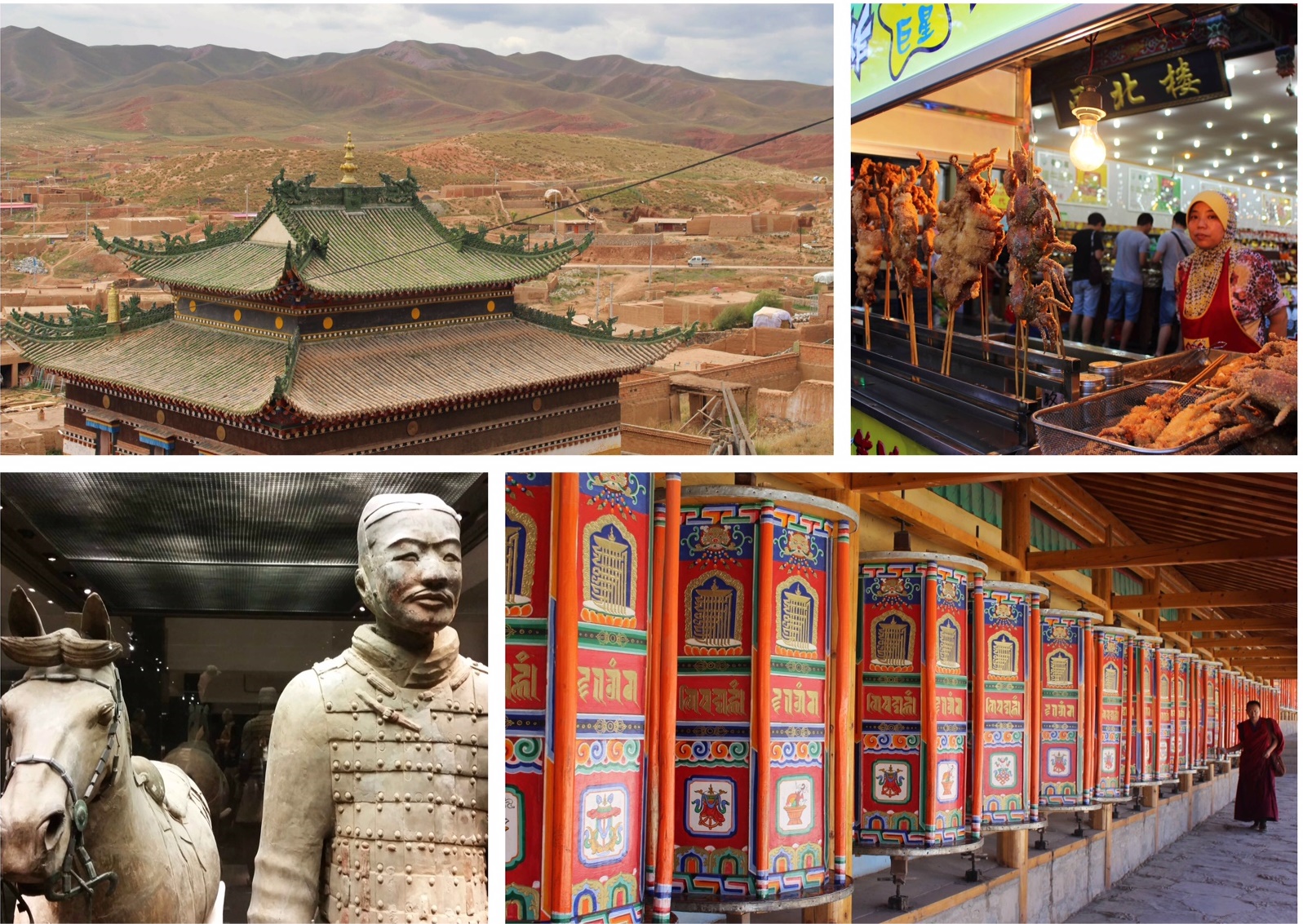
Day 16 – 18: Chengdu
We returned to the civilized world and visited the city of Chengdu. This time we didn’t take the train, but instead, we got on a plane. The train ride to Chengdu would take us more than 20 hours, so that was nothing we wanted to do. Taking a short flight was our best option. We were very surprised by the greenness of Chengdu. Though the city itself doesn’t offer that much, it does offer a lot in terms of day trips. We visited the Research Base for Giant Panda Breeding and the Giant Leshan Buddha. Both I can highly recommend!
Where to stay : Buddha Zen Hotel or Poshpacker Tea Hostel .
Day 19 – 20: Yangshuo
Change of scenery: we headed into the mountains. In the Yangshuo area, you can visit mythical karst mountains and these were very high on my wishlist. We explored the Li river with a raft , cycled through the rice fields, and climbed Moon Hill with a temperature of 35 degrees Celsius. The weather was extremely unpredictable. One day we were melting away in the sun, the next day it didn’t stop raining. And what do you do on a rainy day? We joined a cooking class and learned how to make beer fish and eggplant stew.
Where to stay : Snow Lion Riverside Resort or Yangshuo River View Hotel .

Day 21 – 23: Ping’an
Close to Yangshuo (about 50 km), there was a second nature highlight on our China itinerary that we did not want to miss: Ping’an. Home of the famous Longji rice terraces, also known as the Dragons Backbone. Our hotel was at one of the hills of the rice terraces where we woke up each morning to a gorgeous view. We made a photogenic hike through the rice fields , from the ‘Seven stars around the moon’ to the ‘Thousand layers’ terraces and the Dazhai village. Hands down, this is one of the most beautiful hikes I have ever made.
Where to stay: Longji Holiday Hotel or Terrace Villa .
Day 23 – 26: Hong Kong
We ended our trip the same way as we started it: in a metropolis. This time it was Hong Kong. For the first time in weeks, we could talk in English again and someone would understand it. We spend our days in Hong Kong visiting the highlights. We took the red cable tram up to Victoria Peak , got on the Star Ferry to go to the other side of town, hiked over the Dragon Back, and got on the cable cart to Lantau island. Hong Kong is such an amazing city, I loved it!
Where to stay: Travelodge Central or OZO Wesley .

Practical tips for preparing your China itinerary
Crowds & trains.
- Booking train tickets: one of the best ways to discover China is by train. I recommend buying your train tickets at least one month in advance. There are several websites available to buy train tickets. I have good experience with Trip.com . Please know that when you buy train tickets online, you still need to exchange it at the train station for a paper ticket. You can show the e-ticket pickup info on your phone and bring your passport because they’ll ask for it.
- Avoid traveling during the Golden Week: the first week of October is the Golden Week in China. Chinese will celebrate the foundation of the Republic of China. All of China is off work and will travel around the country. Result: it is super crowded and many trains will be sold out. We traveled during the month September through China and we made sure we left the country before the 1 st of October.
- Get used to the crowds: almost everything has been discovered by tourists and is heavily visited by the domestics tour groups. Cruising around the Li river with 15 other rafts or staring at the Leshan with 200 other people is no exception. You are never alone and the Chinese tour groups with their umbrellas, a tour guide on speaker and dozen of selfie sticks are everywhere! Try to get used to it.

No English & VPN
- Nobody speaks English: personally I don’t mind this. I like a challenge and with some effort anything is possible. But be prepared. For instance we downloaded a Google Translate App before we went to China. This way we could tell the train staff that we needed clean sheets.
- Use public transportation: Chinese cities are huge, so think twice about walking everywhere. Your feet will hurt, because you can walk forever. My advice is to take the metro to move around the city. It is cheap, easy to understand and quick.
- Download a VPN app: in China you have limited access to social media, but with a VPN app there is a way to get around it. Through this app you connect with a server in a different country and you are online! Sadly, the internet speed in China is not that good, so we still had to wait before we could upload anything.

Chinese habits & photos
- You are extremely fascinating: we felt like superstars in China. With our blond or brown hair and light skin we attracted so much attention and were often asked (or not) to take a photo. For instance people take a quick photo of you in the metro or people just stand next to you while a friend takes a photo. Just handle it with a smile and let it go.
- Handling the Chinese habits: spitting, gargling, peeing kids on the street: in the beginning it is something to get used to, but after while you get over it. At least I did. It is part of China and you can get really upset about, or you could just accept is. That is what I did.
And there you have it: a four-week China itinerary and a few practical tips. Which places do you want to visit in China?
This blog post contains affiliate links. If you book something through these links, I earn a small commission without you paying extra for it. You can read more about it in my disclaimer.
"Don't let your dreams be dreams. Go live your dreams. Go travel".

Historical Culemborg: what to see, do and eat

Discovering the Dutch province of Gelderland
Related posts, 5 reasons why you should visit kuala terengganu, malaysia, capturing the street art alleys of kluang, malaysia, bali: 10 wonderful places to visit from ubud or canggu.
Great itinerary, Thanks for sharing!!!
Write A Comment Cancel Reply
Save my name, email, and website in this browser for the next time I comment.
This site uses Akismet to reduce spam. Learn how your comment data is processed .
- Bosnia and Herzegovina
- Great Britain
- Netherlands
- United States
- Privacy policy

An Awesome 2 to 4-Week China Itinerary
January 23, 2020.
Welcome to China – one of my favourite countries on Earth.
China is an extremely beautiful and diverse country, and you could spend years travelling around it and still not see everything.
I’ve spent over 3 months total backpacking around China, and have learned a lot about the country.
In this post, I’ve created an awesome 2 to 4-week travel itinerary for China to help you plan your trip. Let’s get right into it!
- 1.1 Beijing (Days 1 to 4)
- 1.2 Xi’an (Days 5 to 7)
- 1.3 Chengdu (Days 8 to 10)
- 1.4 Yangshuo (Days 11 to 14)
- 2.1 Beijing – Xi’an – Chengdu (Days 1-10)
- 2.2 Shangri-La (Days 11 and 12)
- 2.3 Tiger Leaping Gorge (Days 13 and 14)
- 2.4 Dali (Days 15 and 16)
- 2.5 Travel to Yangshuo (Day 17)
- 2.6 Yangshuo (Days 18-21)
- 3.1 Days 1 to 21: Same as above
- 3.2 Hong Kong (Days 22-25)
- 3.3 Shanghai (Days 26 to 28)
- 4 Other China Travel Destinations
- 5 China Travel Itinerary Wrap-up
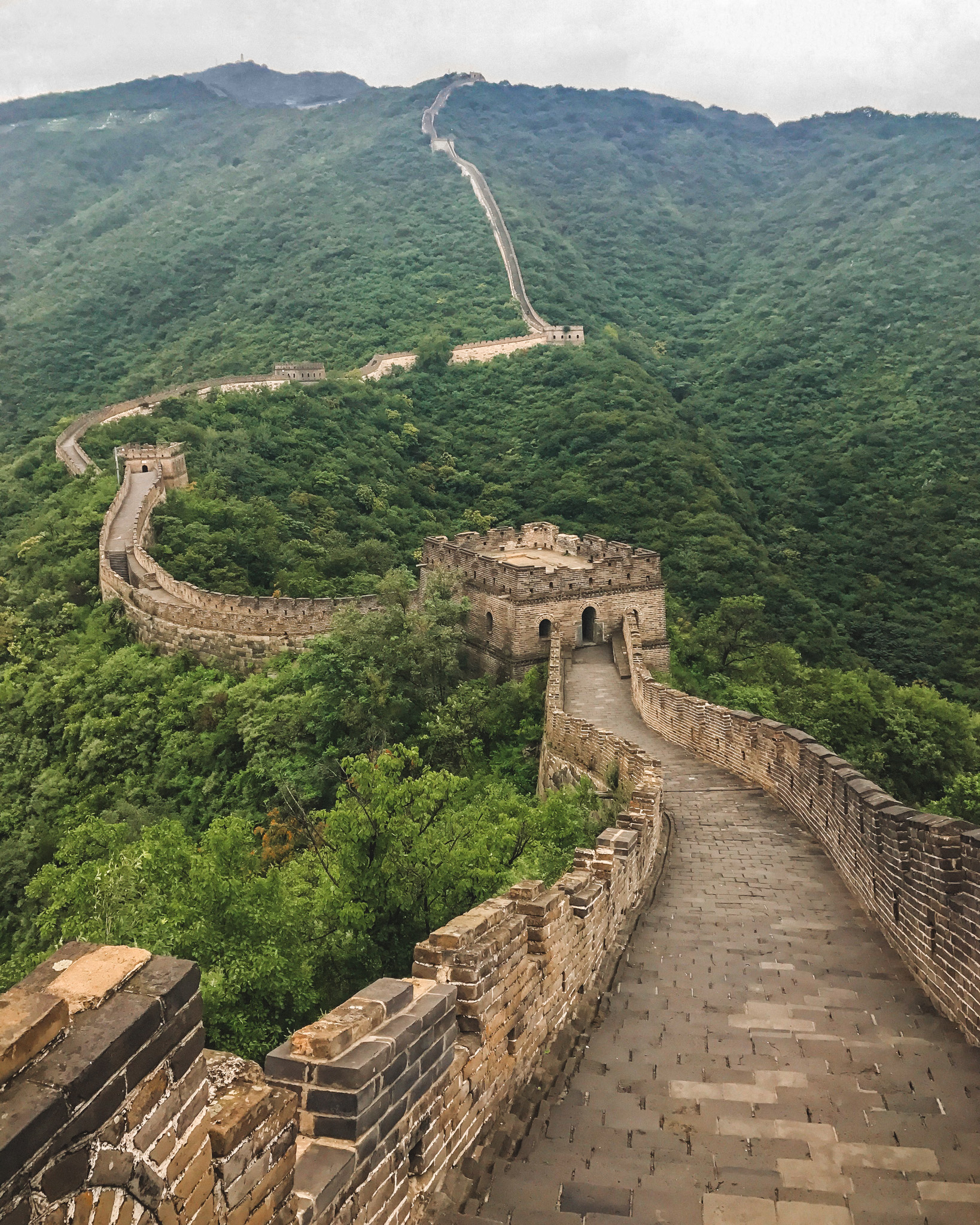
A 2-Week China Itinerary
Beijing (days 1 to 4).
Beijing is a city full of interesting history and delicious food making it the perfect place to start off your China itinerary.
With four days in Beijing, you’ll have time to check out the Forbidden City and Tiananmen Square, the Summer Palace, and even make it out for a trip to the nearby Great Wall. If you really want to be adventurous, you can even try camping on the great wall .
Be sure to try out some Peking duck and spend some time exploring the city’s hutongs.
Where to stay in Beijing
There are countless hostels and hotels in Beijing. I stayed at the Leo Hostel and highly recommend it. It’s in a great location, and has a nice common area to meet other travellers.
Getting around Beijing
Beijing has an extensive metro system, and I used it to get everywhere. Many of the main tourist sites are located within walking distance of Tiananmen Square.
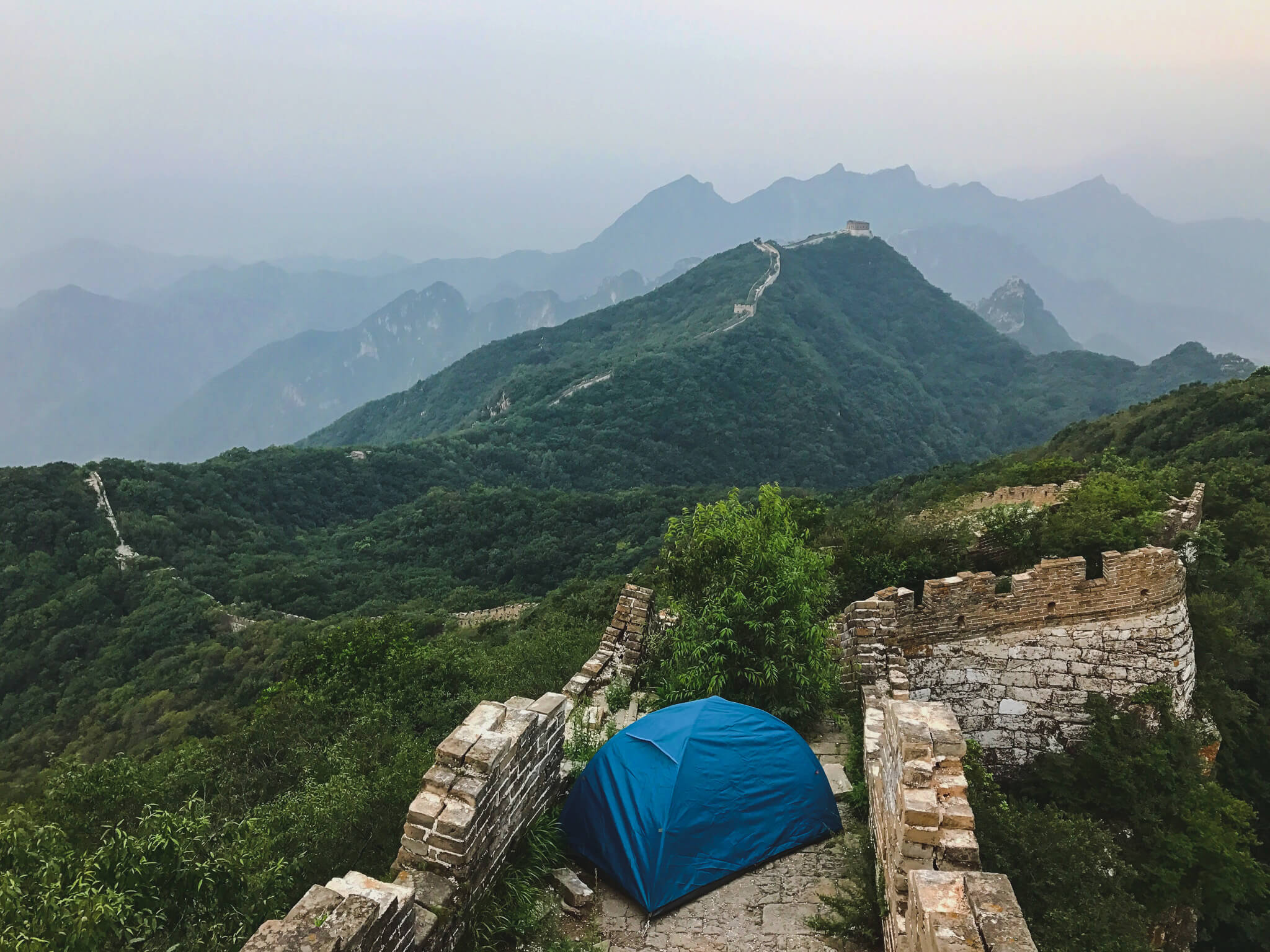
Xi’an (Days 5 to 7)
Xi’an is the Eastern end of the Silk Road and home of the famous Terracotta Warriors .
The city is also home to a large Muslim Quarter that’s filled with delicious street food. You seriously can’t miss the food here, it’s some of the best in all of China. I recommend visiting in the evening, it’ll be packed with vendors and people and you’ll definitely have a good time.
Xi’an also has a 13.7-kilometre city wall surrounding the city center, and biking around it was a highlight of my time there. You can rent bikes at booths on the wall for 45¥ per 3 hours.
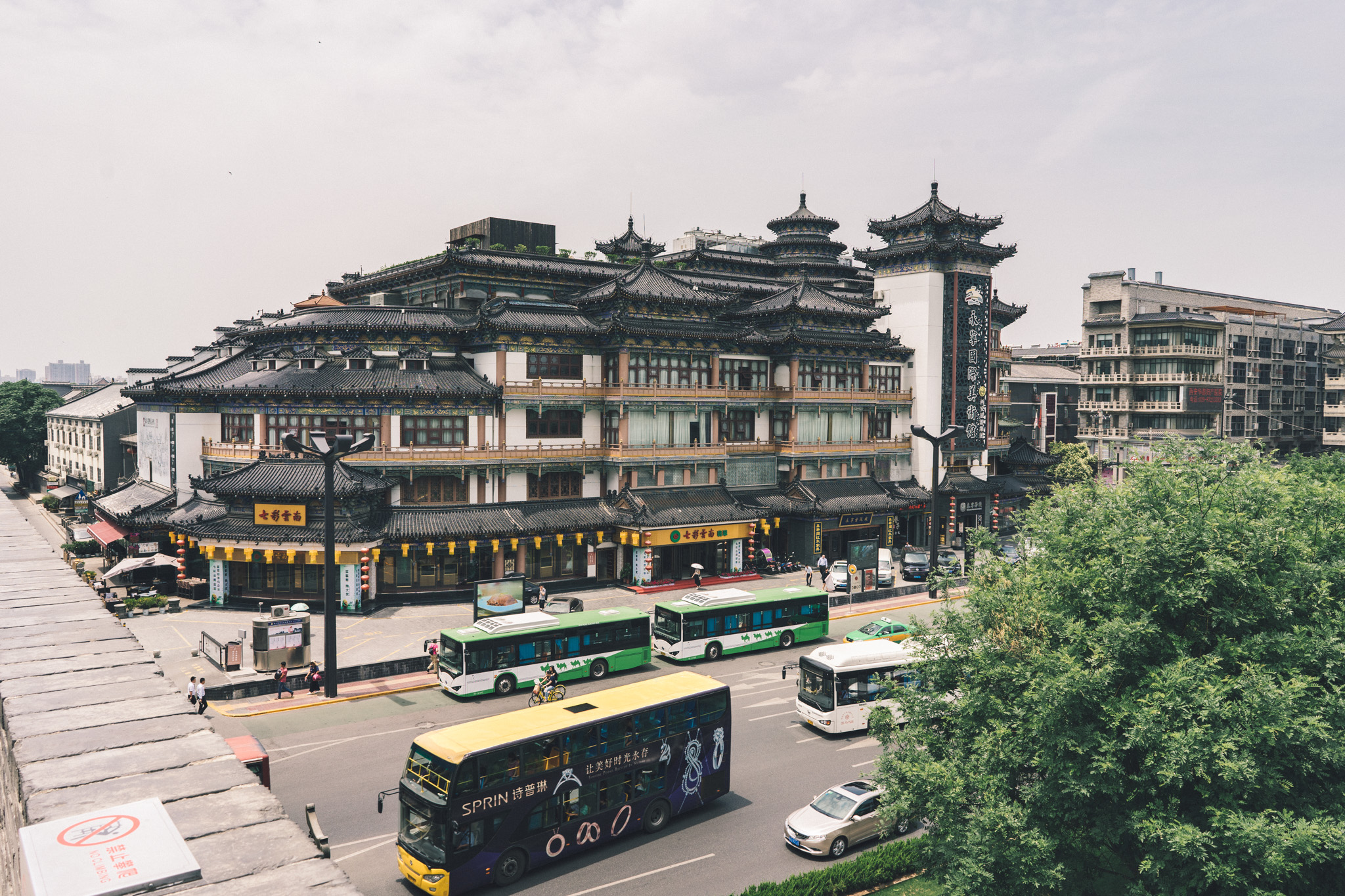
Getting to Xi’an from Beijing
China has the world’s largest high-speed rail network, so why not check it out? A ride between Beijing and Xi’an on the HSR will take 5 or 6 hours. If you want to save some cash, take an overnight hard sleeper train.
Where to stay in Xi’an
Most of the main sites (other than the terracotta warriors) are inside the city walls, so choose a place to stay located inside the walls. I stayed at the Hantang Inn and loved it. There’s a delicious and cheap BBQ restaurant right across the street that I ate at a few too many times 🙂
Getting around Xi’an
Most attractions are located inside the city walls, so walking is the best way to get around. To visit the terracotta warriors, you’ll need to take a one hour ride on tourist bus line 5 from the east square of the Xi’an Railway Station. The city also has a metro system that can be useful for getting to certain places.
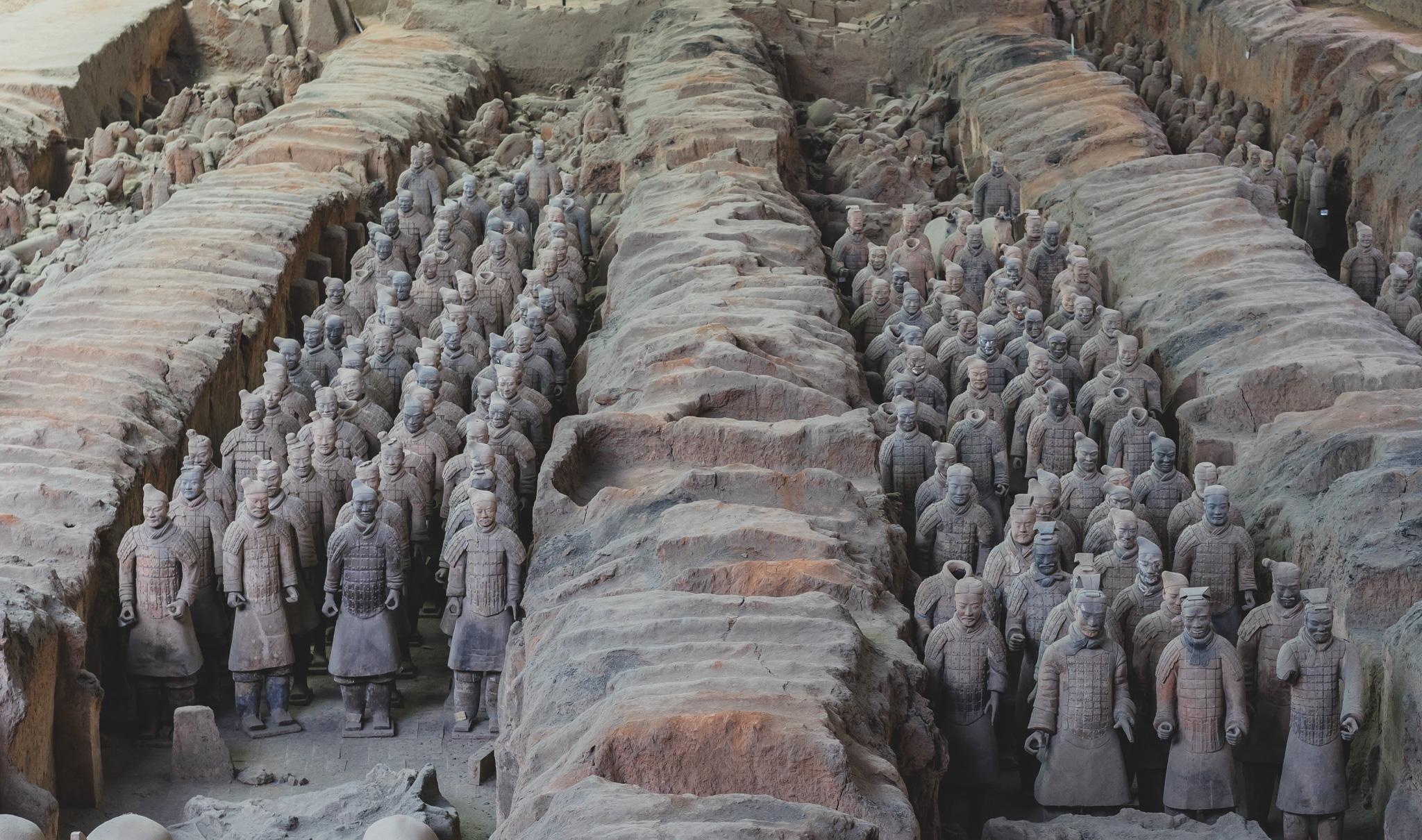
Chengdu (Days 8 to 10)
Chengdu is my favourite city in China – you definitely can’t miss it.
It’s known for two things – pandas and spicy food. But, Chengdu is also just a pleasant city to hang out in. People in Chengdu are a bit more “chill” than the rest of China, and the city has growing cafe and art scenes.
The Panda Research Base is accessible by a short metro and bus ride combo. You should try to visit early in the morning, as that is when the pandas are most active. Another good day trip is the Leshan Buddha, which is only 1 hour away by high-speed rail. Make sure to try hot pot while you are in Chengdu.
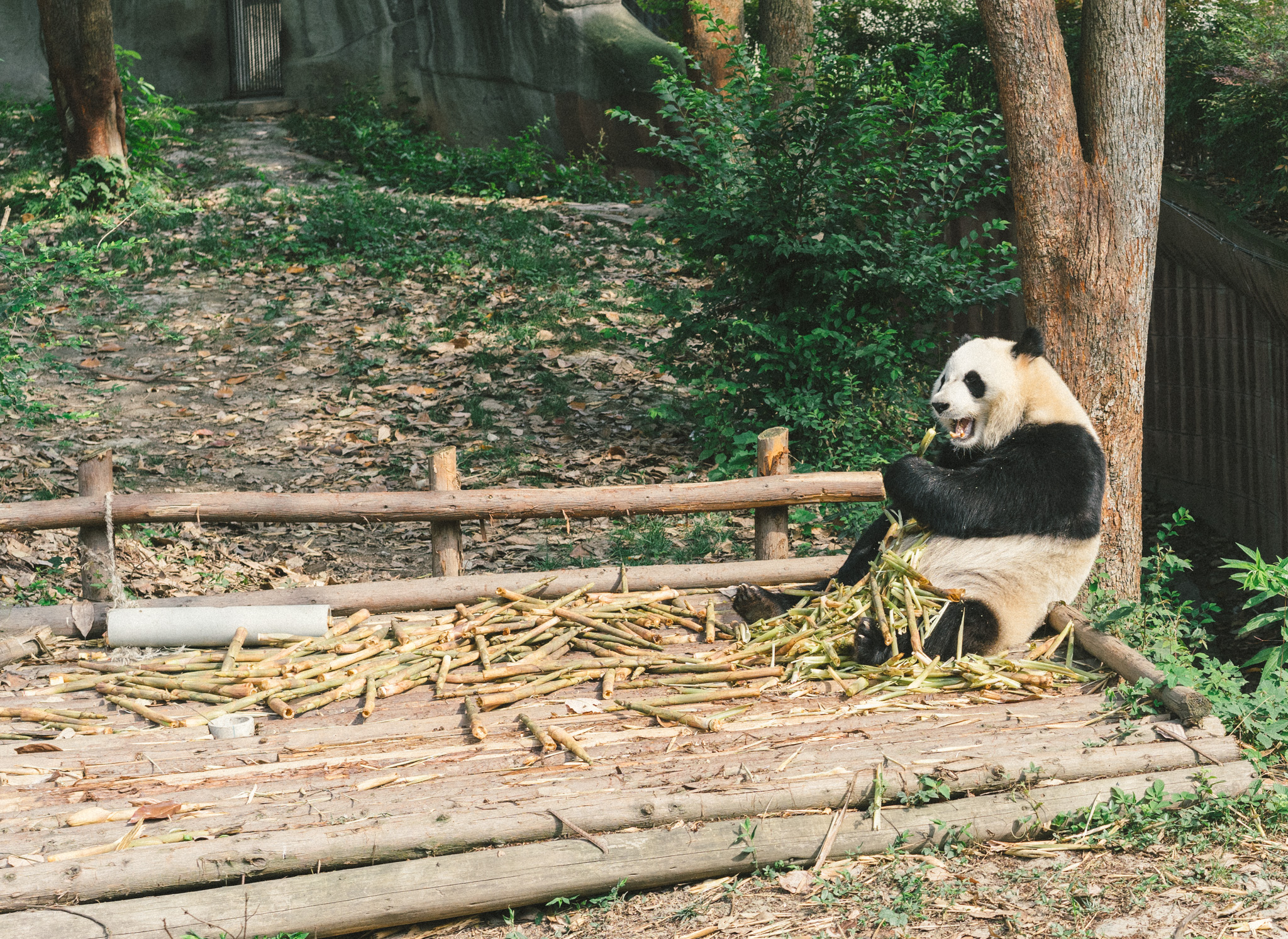
Getting from Xi’an to Chengdu
I recommend taking the train. You can take a 3-4 hour high-speed train for about $40.
Where to stay in Chengdu
I recommend the Flipflop Hostel – it has a great downtown location and friendly staff. I made some great friends here!
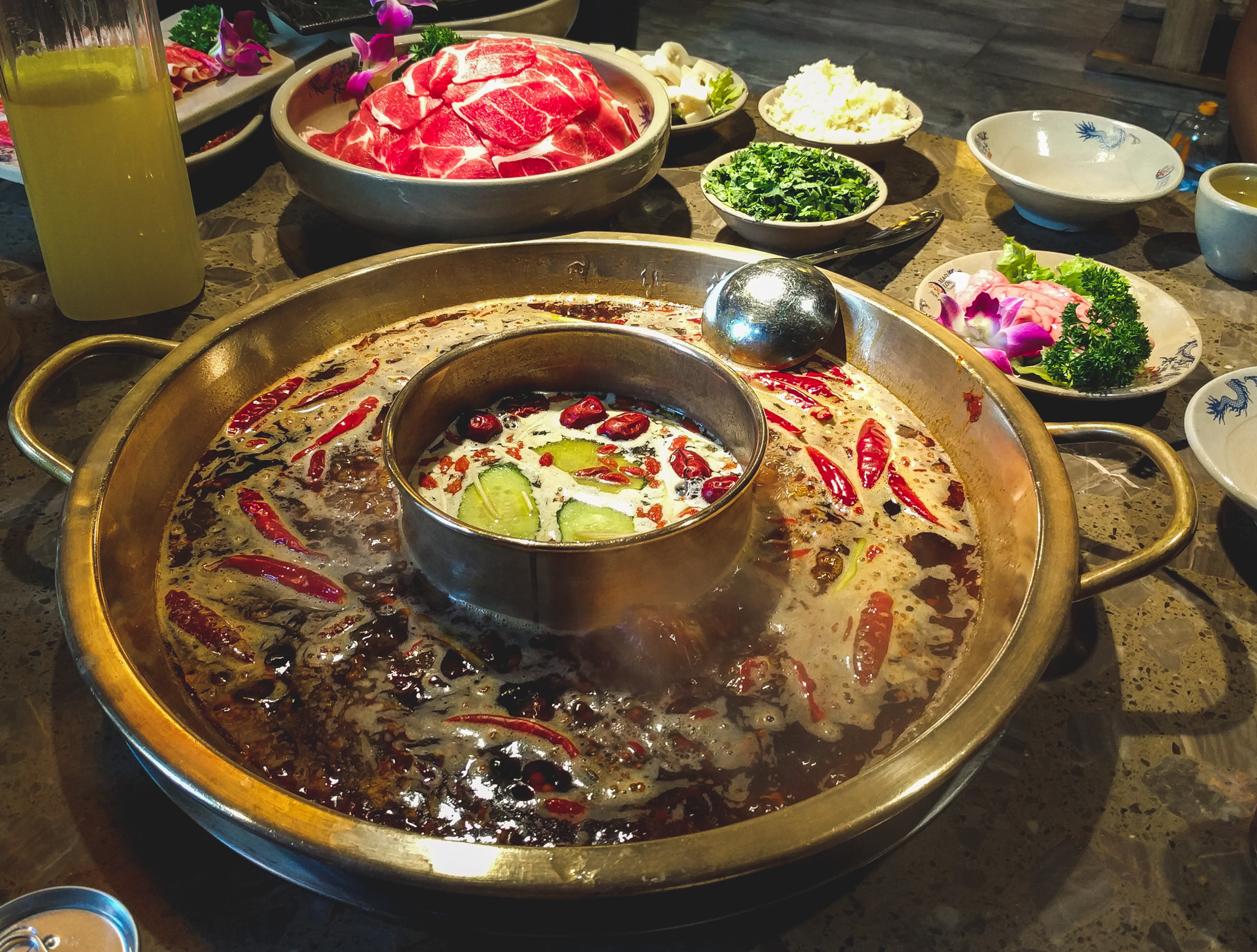
Yangshuo (Days 11 to 14)
Yangshuo is a stunning destination and a must-have on any China backpacking itinerary. It’s a very popular destination for both domestic and foreign travellers, so there’s a ton of tourist infrastructure that makes visiting easy. Yangshuo itself is a pretty big and busy town now, so if you’re looking for a more relaxing time, check out the nearby Xingping village.
In Yangshuo, rent a bicycle or electric scooter and do some riding around the beautiful countryside, take a boat ride on the incredible Li River, and climb one of the karst pillars for incredible views of the area.
Getting to Yangshuo from Chengdu
Getting to Yangshuo from Chengdu is pretty simple. Yangshuo now has an HSR station, and there are direct trains there from Chengdu. The journey will take about 7 hours, and there are a number of different trains per day.
Where to stay in Yangshuo
I stayed at the Wada Hostel and enjoyed its very central location. Consider also checking out the rooftop bar at Monkey Jane’s hostel while you’re in Yangshuo.
Things to do in Yangshuo
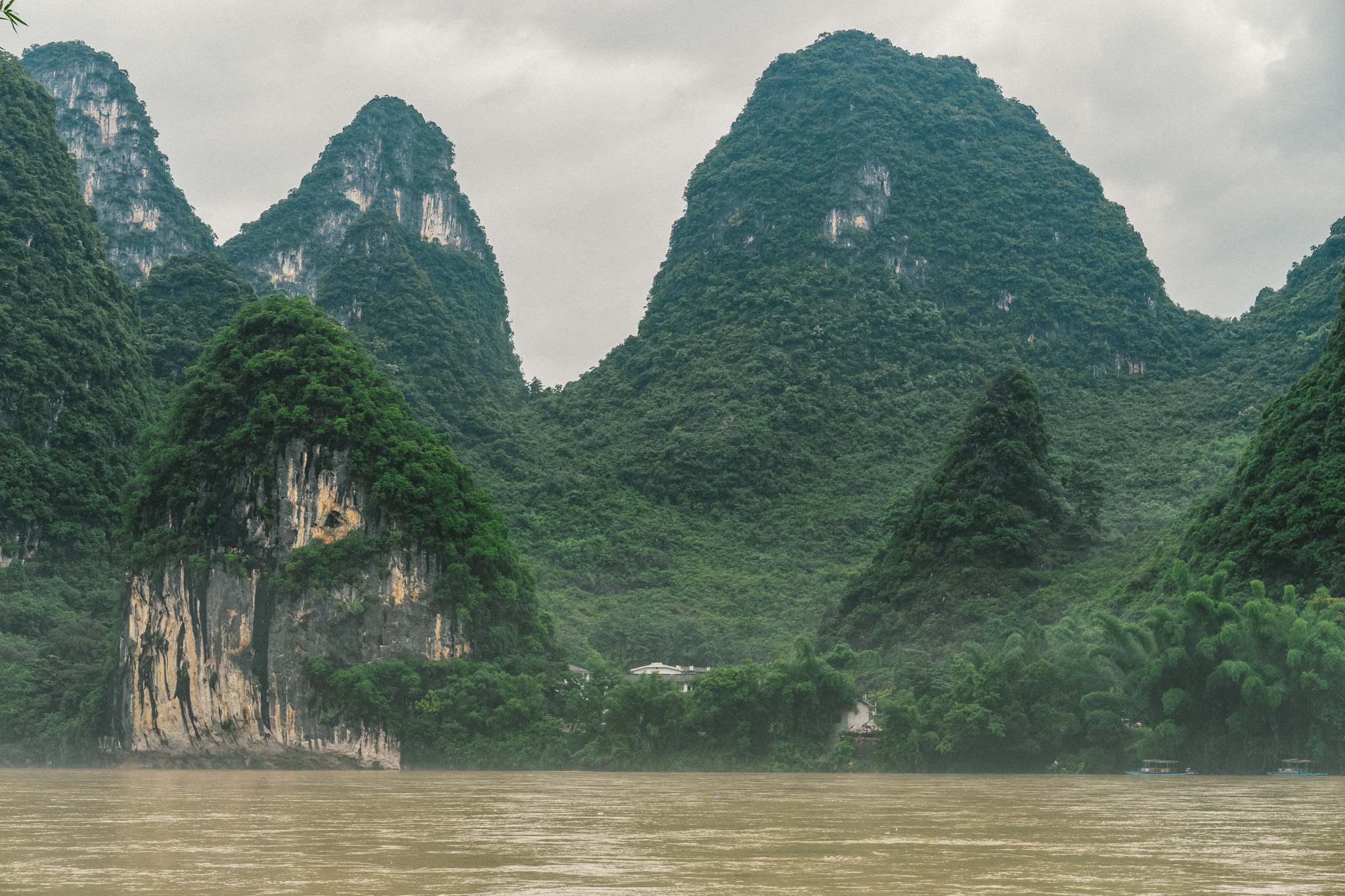
A 3-Week China Itinerary
Beijing – xi’an – chengdu (days 1-10).
The first 10 days of this itinerary are the same as the 2-week itinerary outlined above. Check it out for the details.
Shangri-La (Days 11 and 12)
Shangri-La is a historically Tibetan town located in northwestern Yunnan. The town has a beautiful monastery and an old town that’s been mostly rebuilt after a devastating fire in 2014. At a little over 3000 meters in altitude, you’ll definitely feel a bit short of breath walking around town.
Check out my post on travelling in the Tibetan parts of China without a tour for some more info on the Tibetan parts of China that are easily accessible.
Getting to Shangri-La from Chengdu
With a short amount of time, the only way to get between the two is by plane. There are daily flights with both China Eastern and Tibet Airlines, taking about 2 hours. I would fly to Shangri-La on day 11 and spend the afternoon of day 11 and all of day 12 visiting the sites.
There is an alternative overland route from Chengdu to Shangri-La, that takes you through some seriously remote Tibetan parts of Sichuan. Unfortunately, this route takes a little more time than we have, but if you’re able to give yourself an extra week in China, I highly recommend checking out my guide to travelling overland from Chengdu to Shangri-La .
Where to stay in Shangri-La
Tavern 47 was a nice hostel. They have cool Tibetan-style decor and great breakfasts.
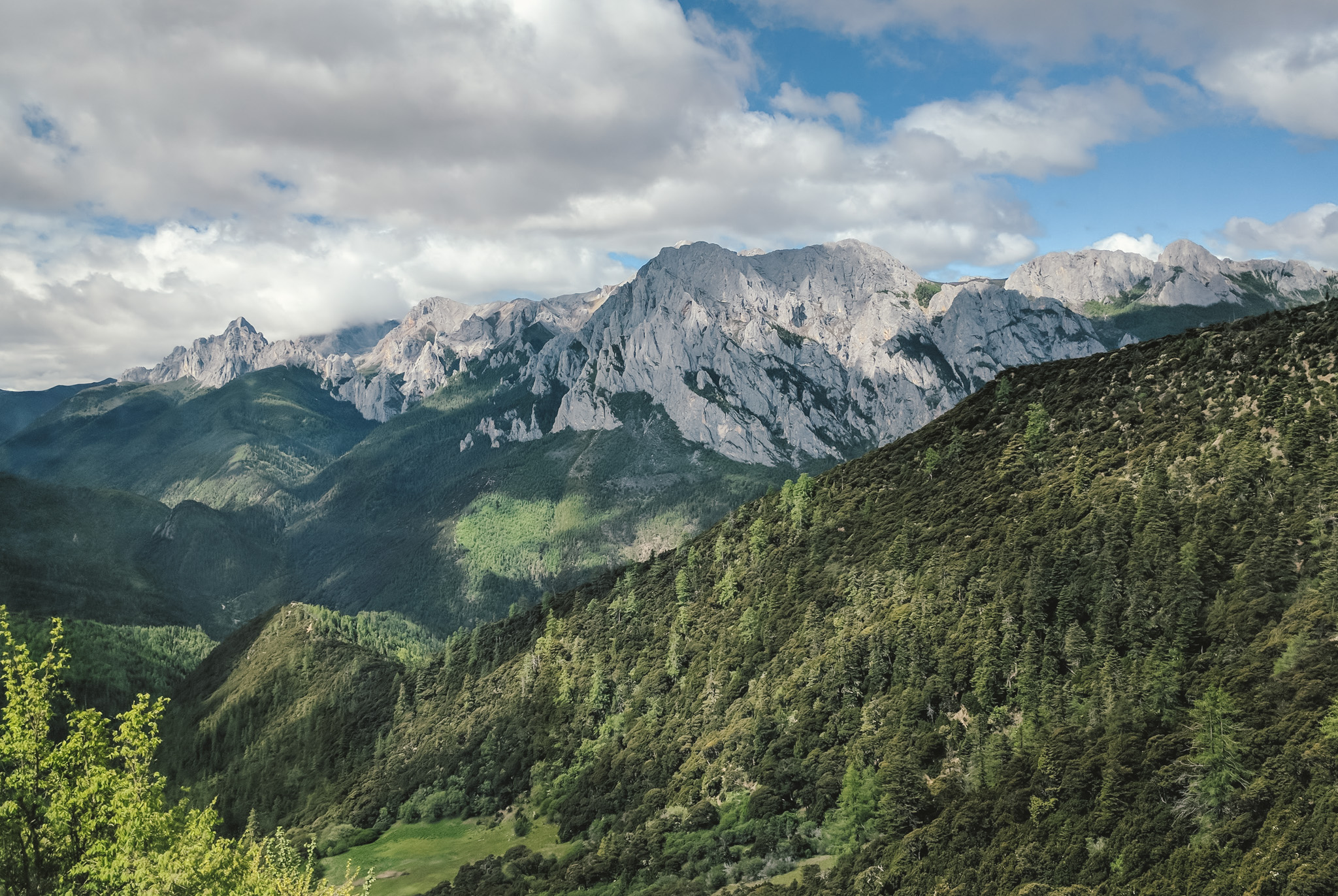
Tiger Leaping Gorge (Days 13 and 14)
Tiger Leaping Gorge is one of the most insane landscapes in China. There’s a trail running along the northern side of the gorge that typically takes two days to complete. Check out this page on WikiVoyage for more info on the Tiger Leaping Gorge hike.
Getting to Tiger Leaping Gorge from Shangri-La
The hike starts in Qiaotou, which is 3 hours by bus from Shangri-La. Leave Shangri-La early enough so you are able to hike to the halfway guesthouse that same day.
Where to stay in Tiger Leaping Gorge
You’ll need to spend one night in the gorge if you choose to do the two-day hike, but don’t worry, there are plenty of comfortable guesthouses near the middle of the hike. The Halfway Guesthouse is the most popular, and it’s got one of the most incredible squat toilet views you’ll ever have the pleasure of seeing 😉
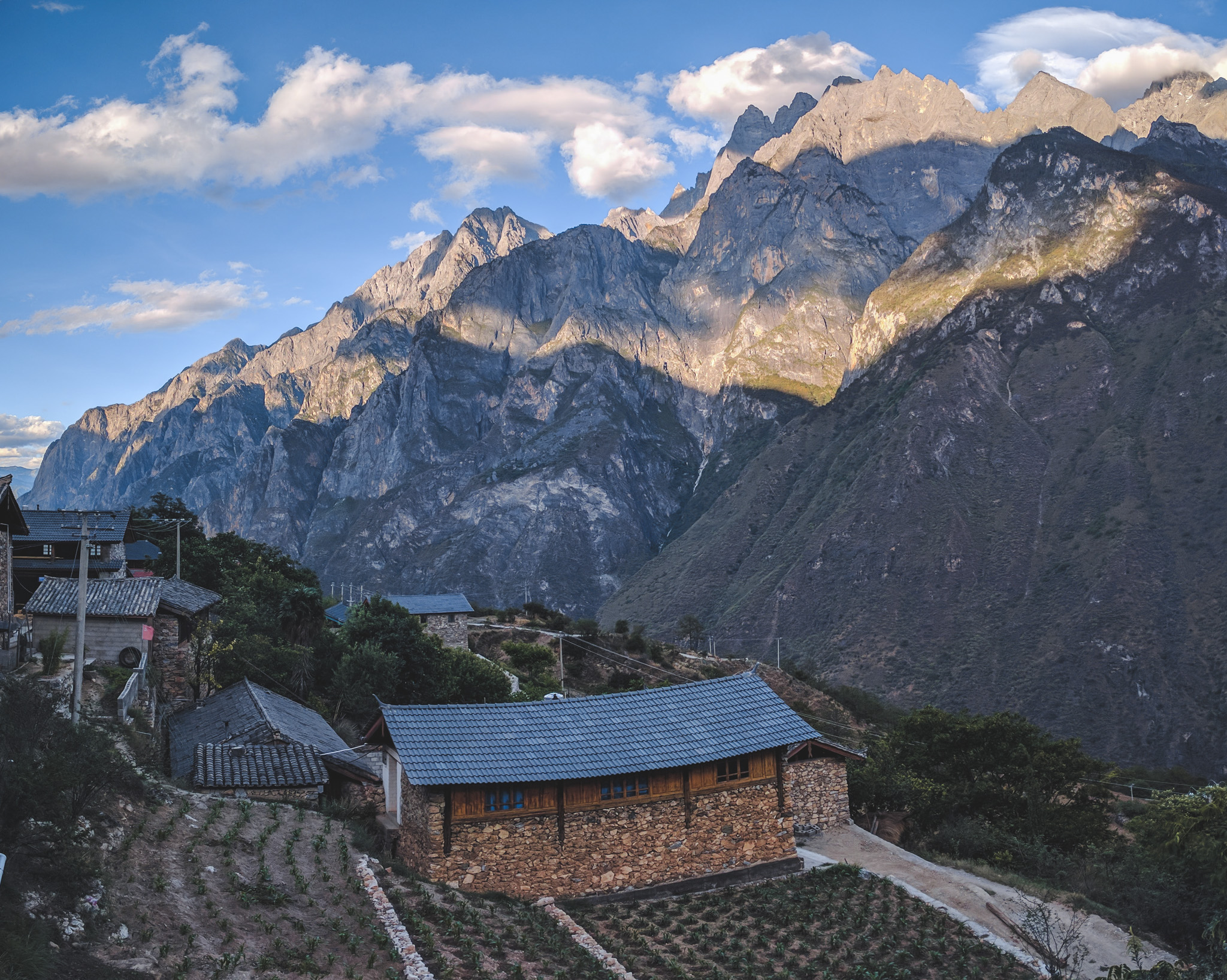
Dali (Days 15 and 16)
There are very few places in China that have a real South East Asia ‘backpacker vibe’, and Dali is one of them. It’s home to an impressive old town, countless cafes and bars, and beautiful natural surroundings. In Dali, I recommend visiting the Three Pagodas and renting an electric scooter to ride the road along Erhai Lake (but please wear a helmet).
Getting to Dali from Tiger Leaping Gorge
Getting to Dali will require a quick transfer in Lijiang (another popular destination, but very touristy). From Tiger Leaping Gorge to Lijiang, it’s a three-hour bus ride. Lijiang to Dali can be done via bus or train – your choice. The train will be slightly faster, but since you’re getting to Lijiang by bus, it may be easier to just take another bus. The train will take about two hours, whereas the bus will take three.
Where to stay in Dali
The Jade Emu is an awesome place to stay. They have a great common area with a pool table, ping pong, foosball, and darts. There’s even a bookshop next door that sells books in English!
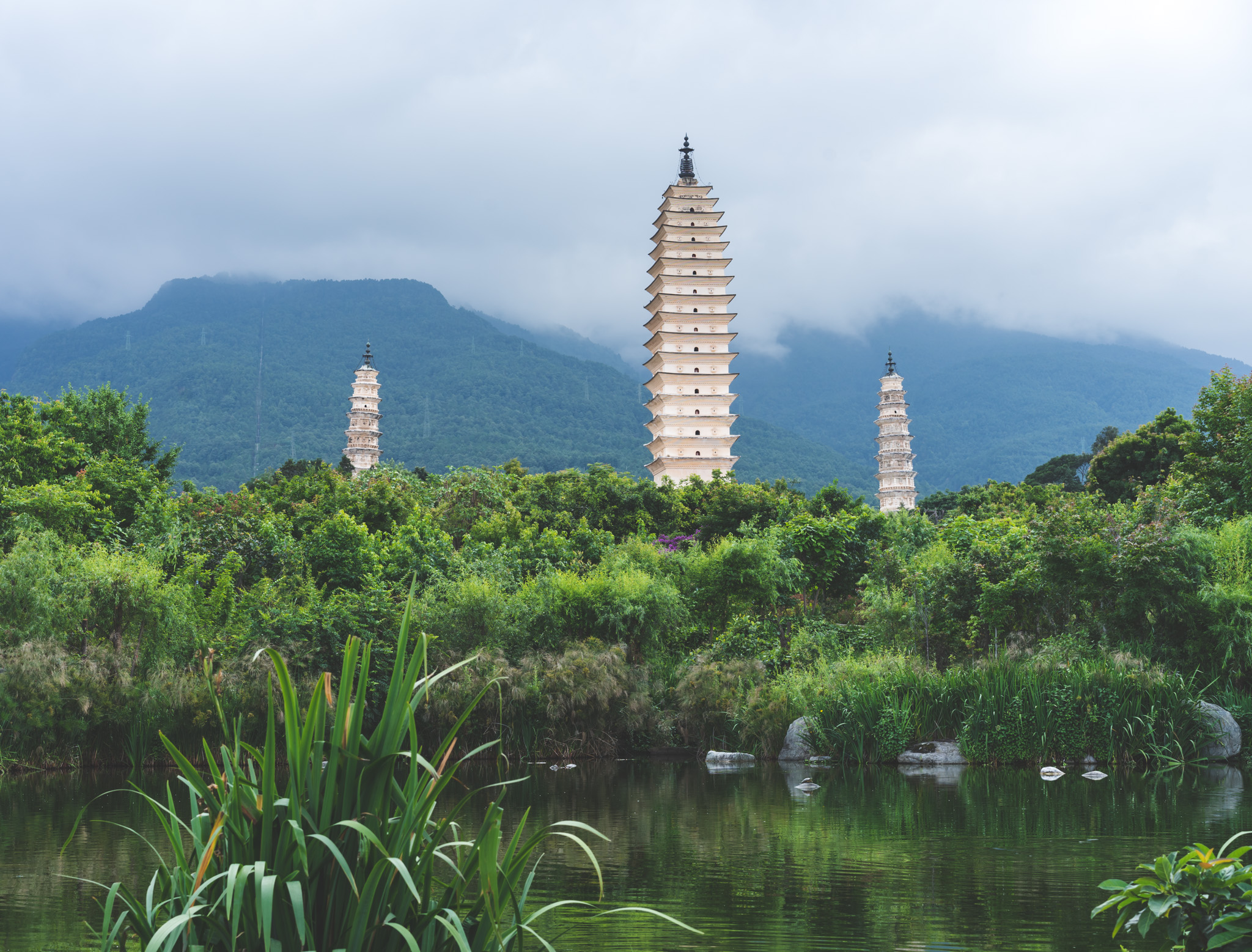
Travel to Yangshuo (Day 17)
From Dali, it’s a bit of a trek to Yangshuo, but it’s doable in a single long day if you’re up for it. You’ll need to transfer in Guilin.
Getting from Dali to Guilin
In the morning, take a two-hour high-speed train to Kunming. Next take an early afternoon high-speed train from Kunming to Guilin, which will take four and a half hours. Spend the night in Guilin, or continue onto Yangshuo if you’re up for it.
Getting to Yangshuo from Guilin
Getting to Yangshuo from Guilin is very easy – there are extremely frequent busses and the ride is only one hour. You can also take a river cruise for more money, but I didn’t bother. The river cruises are popular amongst domestic tourists.
Yangshuo (Days 18-21)
Wrap up your 3 weeks in China with a few days in Yangshuo! See the 2-week itinerary for more details on where to stay and things to do in Yangshuo.
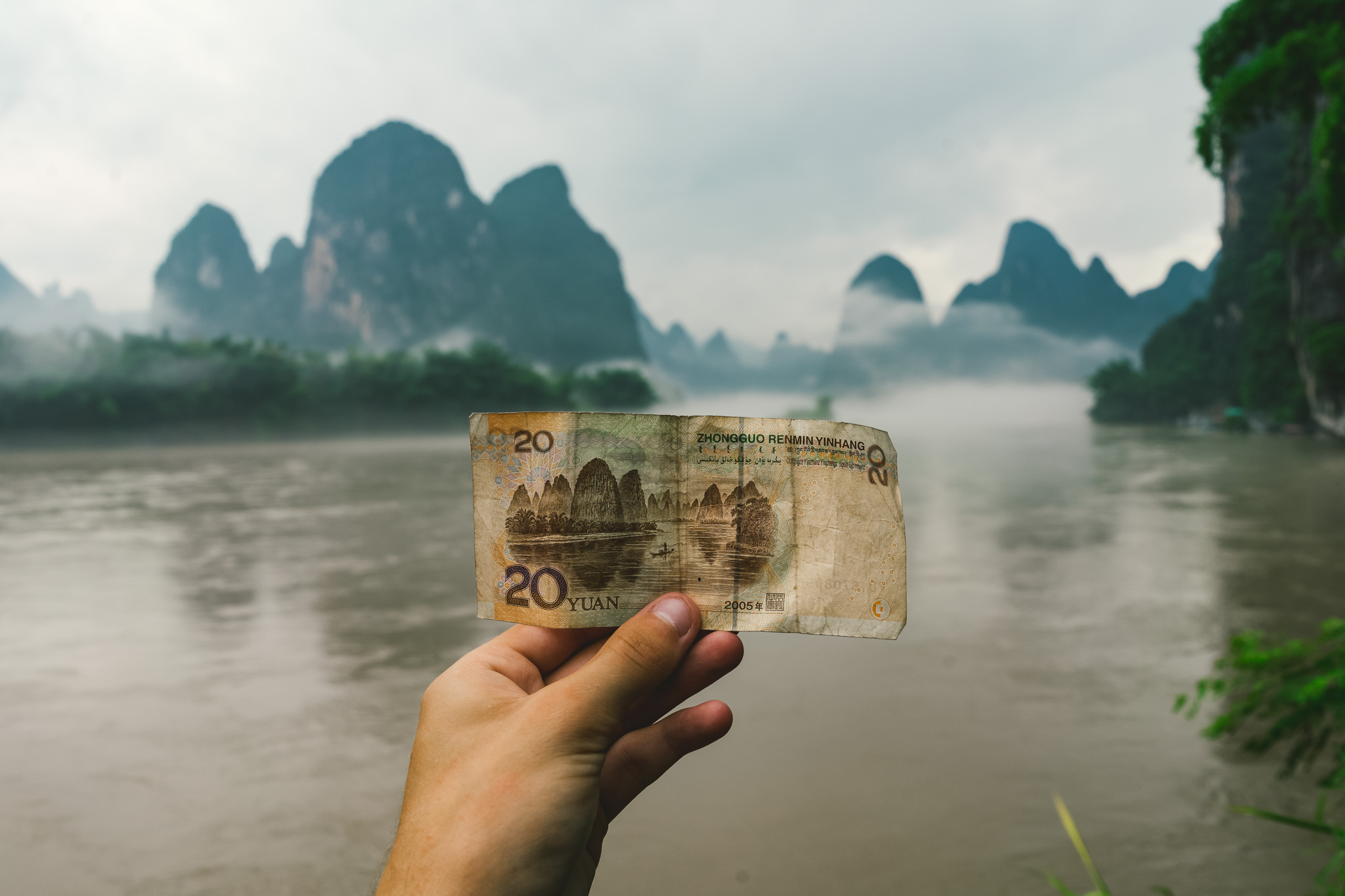
A 4-Week China Itinerary
Days 1 to 21: same as above.
Follow the 3-Week itinerary for the first part of your month in China.
Hong Kong (Days 22-25)
Hong Kong needs no introduction – it’s a massive, globalized city that one could spend a lifetime in and not finish exploring it. Hong Kong feels very different from the rest of China due to its history. Clerks in 7/11 speak English, and everything costs a whole lot more. Hong Kong is definitely worth visiting if you haven’t been before, but if you have, consider checking out the nearby Chinese megacities of Guangzhou and Shenzhen.
Visa note: To enter Hong Kong, you have to “leave” China (on your passport). This means that if you have a single-entry Chinese visa, you won’t be able to enter again without getting a new one. If you still want to spend more time in China, consider skipping Hong Kong and visiting Guangzhou and Shenzhen.
Getting to Hong Kong from Yangshuo
With the recent opening of the Hong Kong – Guangzhou high-speed rail line, getting between Yangshuo and Hong Kong has never been easier. Simply take a high-speed train from Yangshuo to Guangzhou and then transfer onto another train from Guangzhou to Hong Kong. The overall travel time will be about four and a half hours. Check out Travel China Guide for a detailed schedule.
Where to stay in Hong Kong
I stayed at the Causeway Bay Yesinn hostel, it’s a nice hostel located right downtown. It’s located only two minutes from a metro station, and there are so many restaurants and shops around.
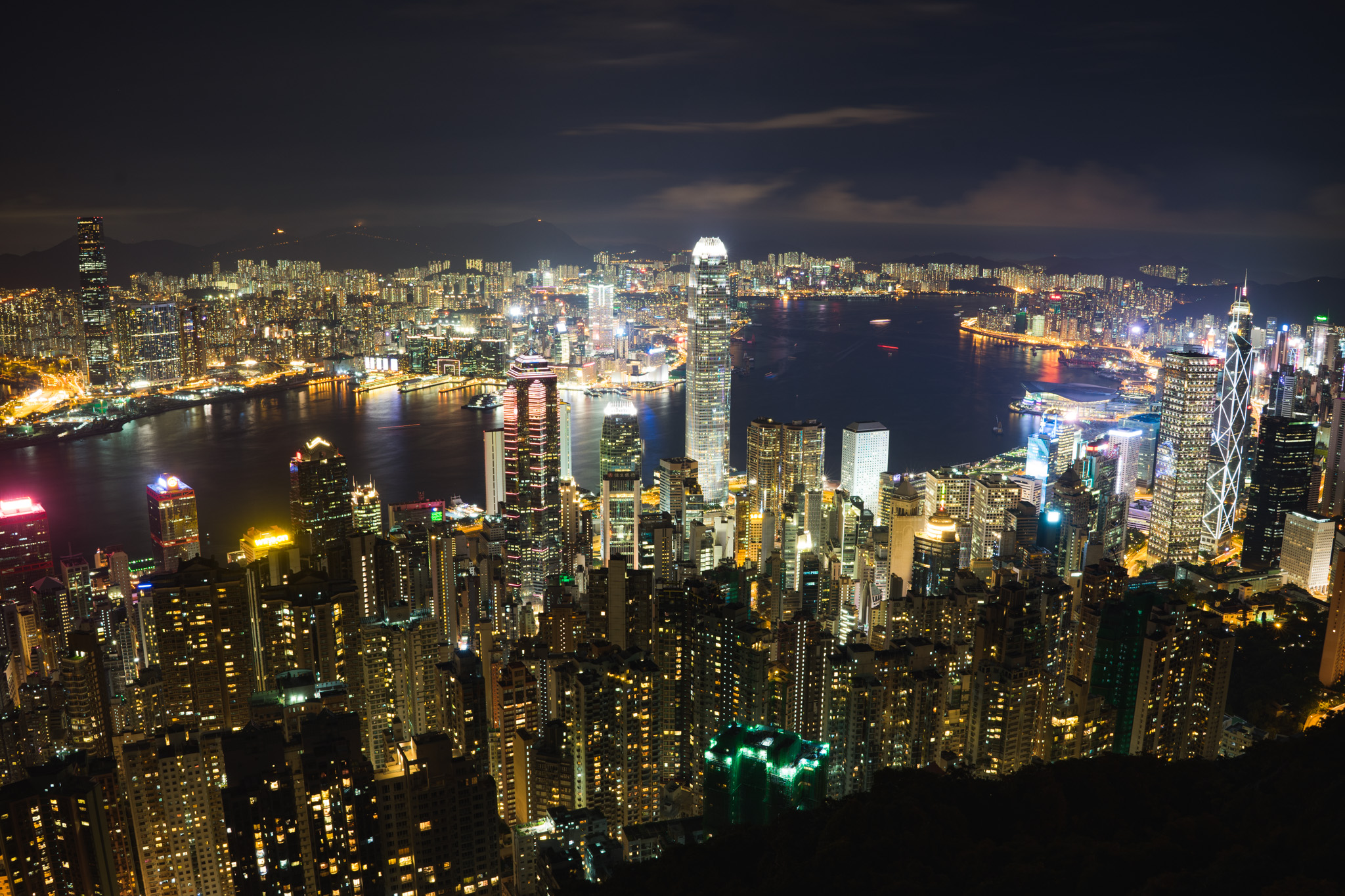
Shanghai (Days 26 to 28)
The last stop on this itinerary is my favourite Chinese city. Shanghai has an endless amount of things to do, foods to eat, and people to meet. Not including Hong Kong, Shanghai is by far the most westernized Chinese city, and people living in Shanghai are open-minded. When in Shanghai, spend some time checking out its cool art scene, nightlife, and parks. Take a trip to the top of the Shanghai Tower (world’s second tallest building) for some insane views of the city.
Also consider a day trip to one of Hangzhou, Suzhou, or even Nanjing. They’re all incredible cities and are very accessible from Shanghai via high-speed rail.
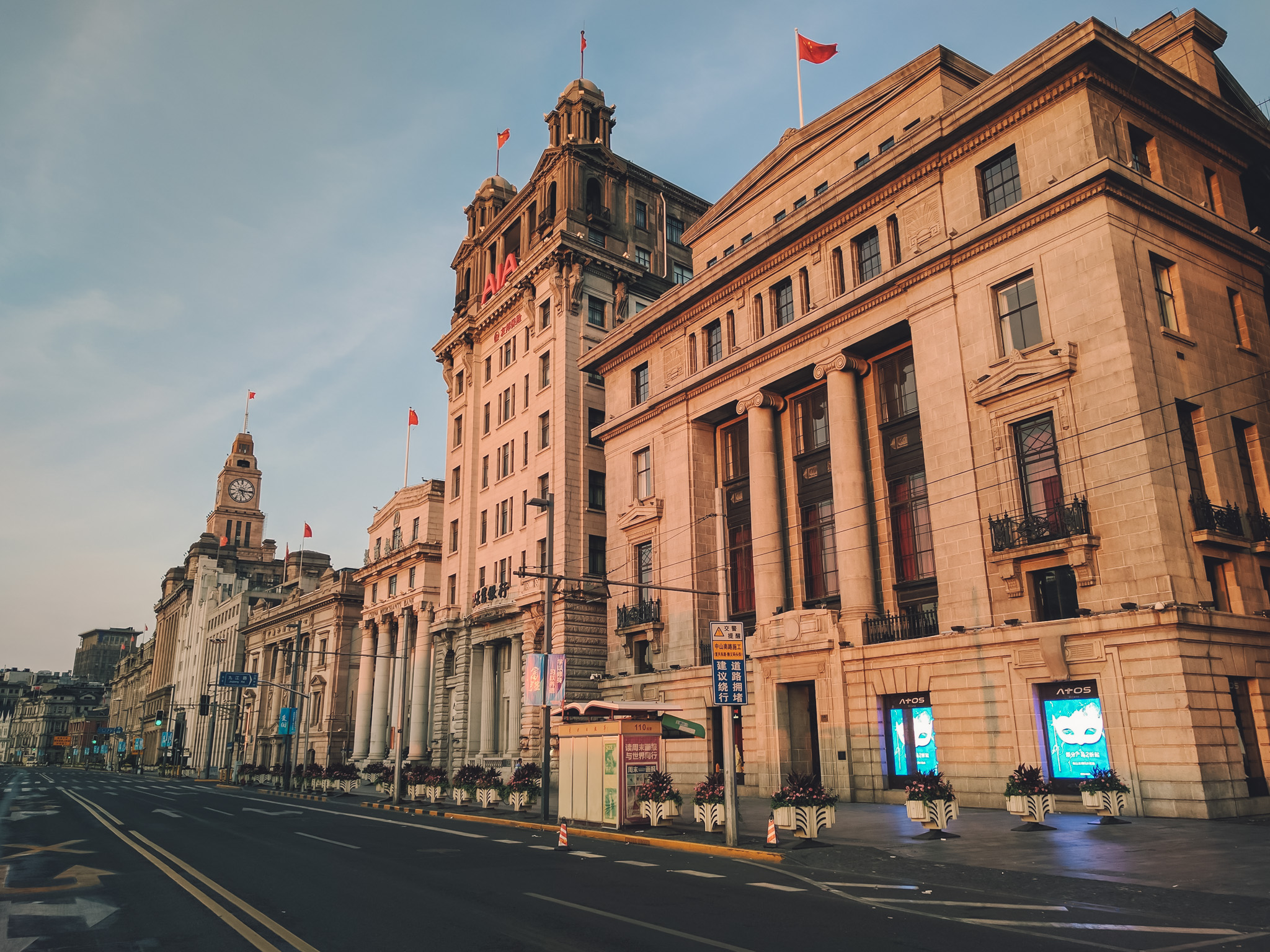
Getting to Shanghai from Hong Kong
There’s a decent amount of distance between these two cities, so flying is something to consider. You can take the high-speed train, but the trip will take over eight hours and cost about $150 USD for a second class seat.
Where to stay in Shanghai
I stayed at the Blue Mountain International Youth Hostel for its location. East Nanjing Road and the Bund are the most popular tourist areas in Shanghai, and the hostel is less than a ten minute walk from both.
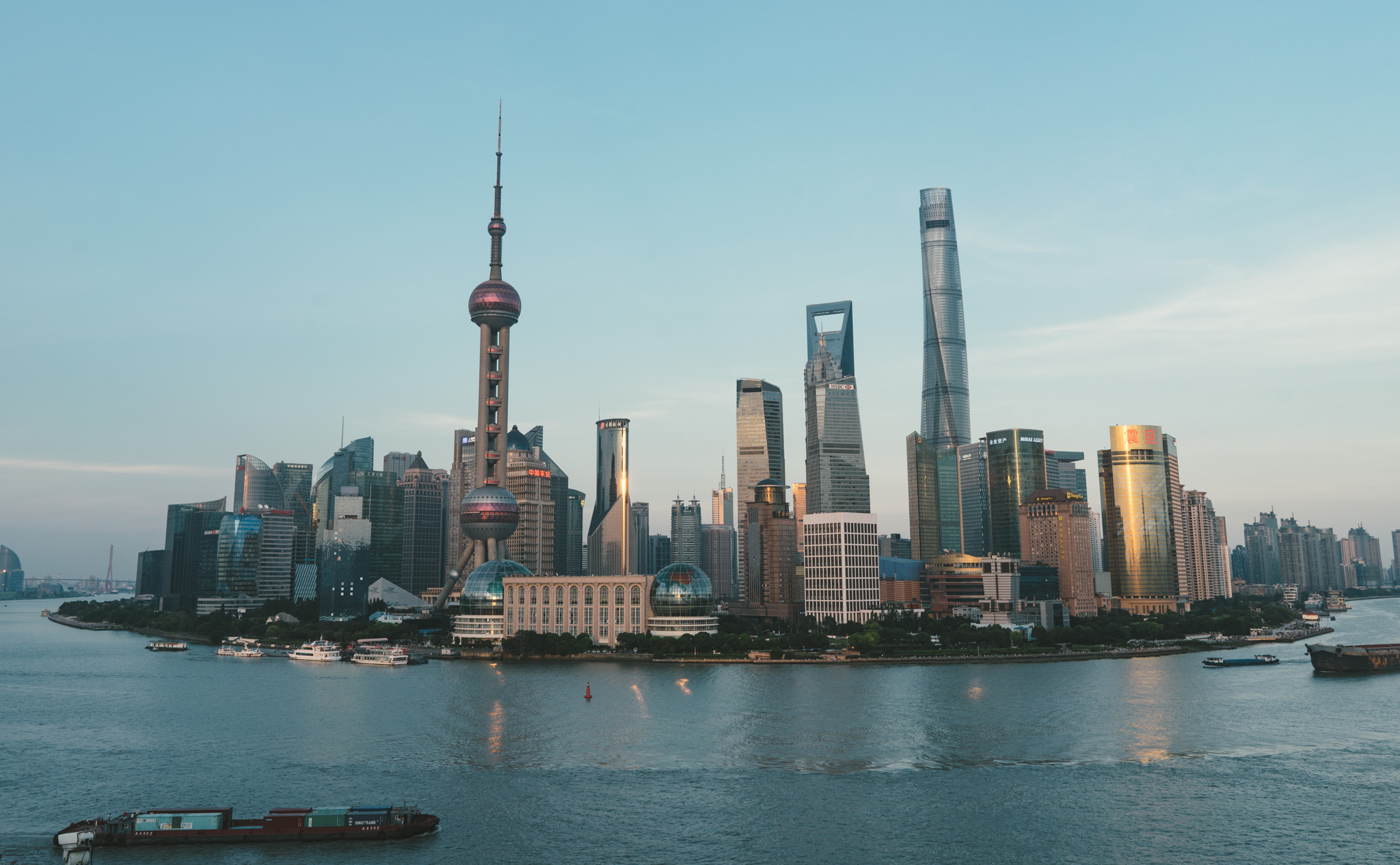
Other China Travel Destinations
If you want to skip certain parts of this itinerary for something different, or have more than four weeks to travel around China, consider some of the following destinations.
Jiuzhaigou and Huanglong
Beautiful Tibetan scenery located north of Chengdu. From Chengdu, you’ll need four days to get a good taste of both parks (including travel time).
Longji Rice Terraces
If you want to spend more time in the Yangshuo area, I highly recommend visiting the Longji Rice Terraces. They’re only two hours north of Guilin and are some of the finest terraces in Asia. Check out my guide to hiking in the Longji Rice Terraces for more details.
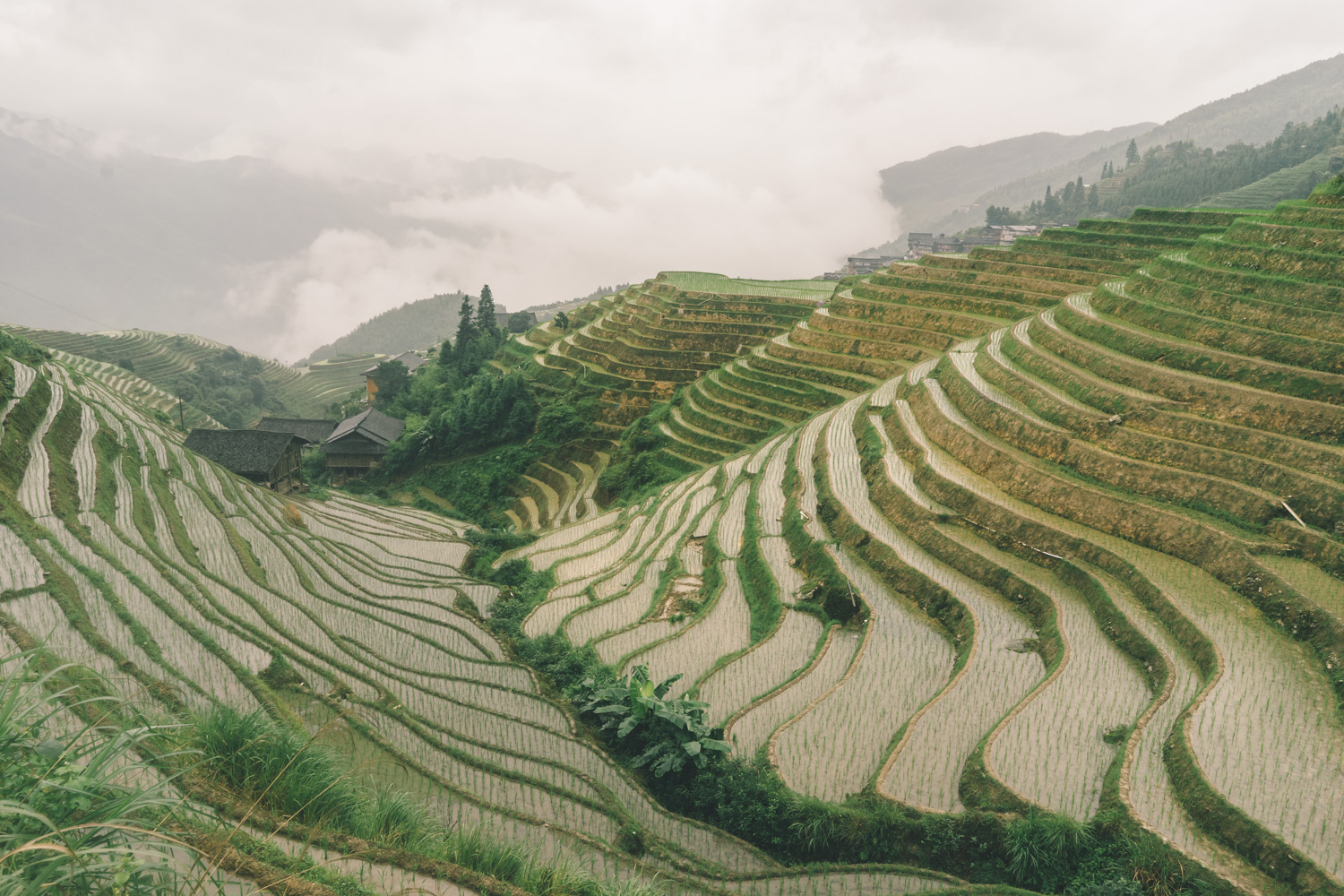
Western Sichuan
Rather than flying between Chengdu and Shangri-La, there’s an overland route you can take between the two cities. The route goes through some seriously remote parts of Tibetan Sichuan. I wrote a detailed post on how to travel the route .
Zhangjiajie
This is where Avatar got the inspiration for its incredible landscapes. Zhangjiajie is a great place to visit for a few days but is a bit out of the way from other destinations.
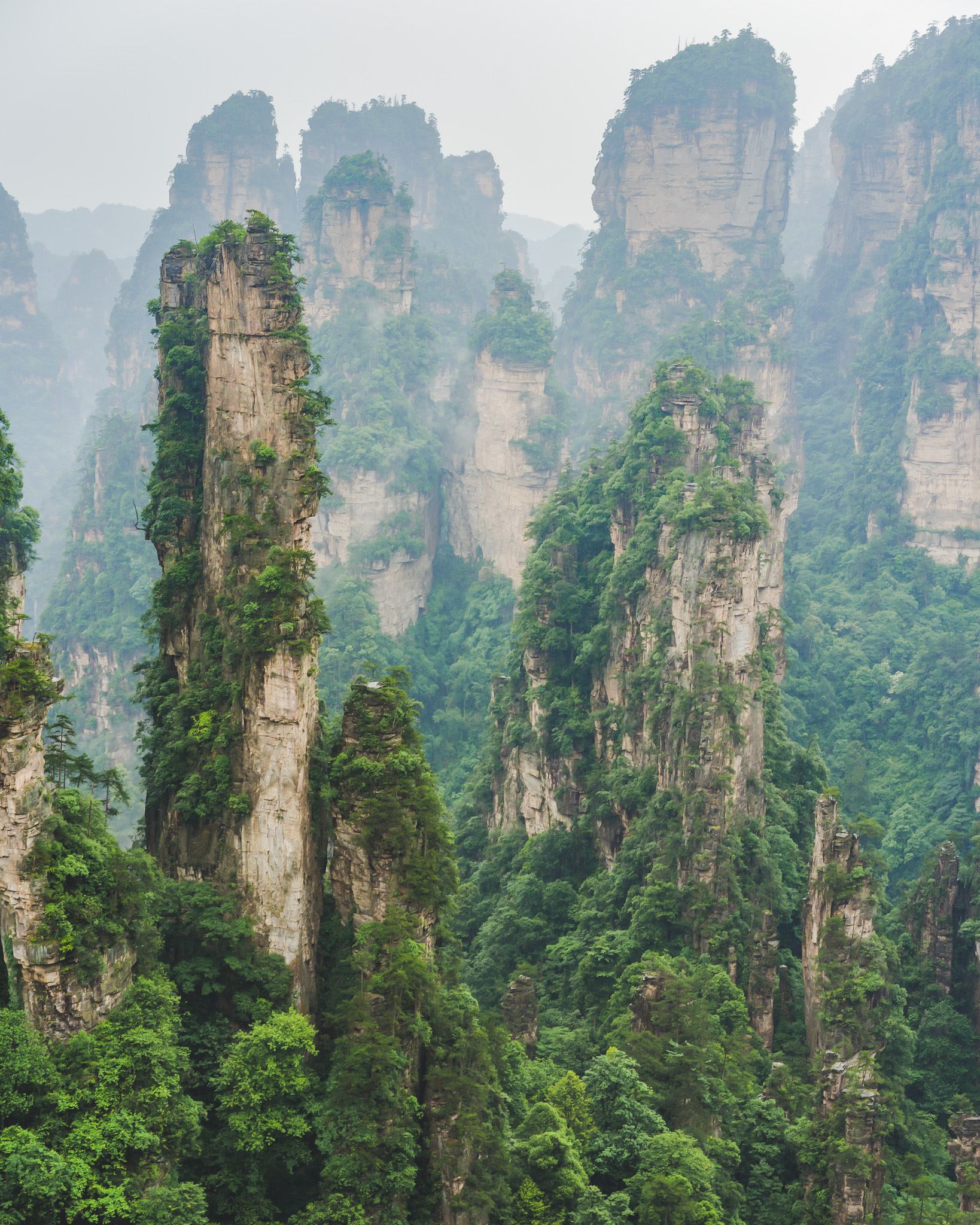
Tibetan Autonomous Region
Unfortunately, to visit Tibet as a foreigner you must be on a guided tour. I decided to take one and enjoyed it, although it was expensive. If you’re into amazing mountains and Tibetan culture, consider visiting.
I’ve been to parts of Xinjiang (Kashgar and Tashkurgan), and honestly can’t recommend it at the moment. Unless you’ve got an interest in seeing what a modern police state looks like, I’d recommend sticking to other parts of China for now.
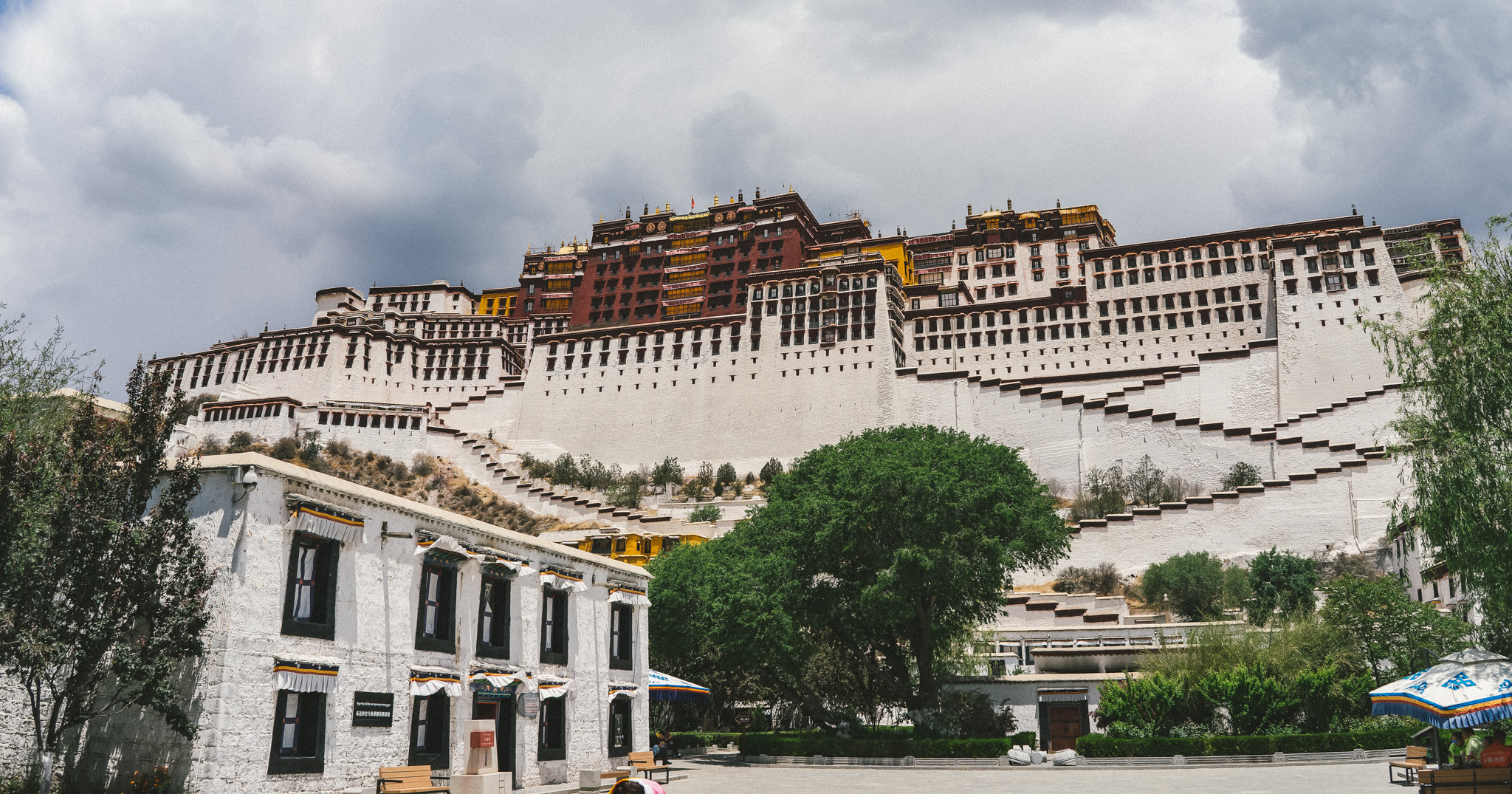

China Travel Itinerary Wrap-up
I hope this itinerary has helped you better plan your China backpacking adventure. You’ll have a great time no matter where you choose to visit, it’s an awesome country.
Feel free to contact me with any other questions and I’ll get back to you. If you liked this post, consider sharing it!
Subscribe to my mailing list to be notified of my future posts. I’ll be travelling a ton in 2019, and will have a lot of great content coming out.

Yay transparency! There are affiliate links in this guide. If you book or buy something using my links, I’ll make a bit of money at no extra cost to you.

21-year old Canadian dude who loves to visit off-the-beaten-path places, climb tall mountains, and try delicious foods.
Read more about me
Want more like this?

One thought on “ An Awesome 2 to 4-Week China Itinerary ”
Having lived and travelled 4+ years in China, I can only say these are great itineraries. If you haven’t seen China yet, by all means start from here. Zhangjiajie is unbelievable so you should try to squeeze it in, and if you can you should also really visit an ancient small town like Pingyao (en route to Xi’an) or Fenghuang (en route to Yangshuo).
Leave a Reply Cancel reply
Your email address will not be published. Required fields are marked *
China Tours 2024/2025: Private and Tailor-Made China Vacations
From December 1st, 2023 to November 30th, 2024, visitors from France, Germany, Italy, Netherlands, Spain, Singapore, and Malaysia can stay in China for up to 15 days without a visa for travel, business, transit, or visiting friends and family.
Starting March 14th, travelers from Austria, Belgium, Hungary, Ireland, Luxembourg, and Switzerland can also enjoy this visa-free entry.
We design private and tailor-made China tours based on your style of travel at reasonable local prices. We are Chinese travel experts who know what your guidebook and foreign agencies don't. To turn your China dreams into amazing experiences, we'll support you 1:1 with a dedicated China expert as you plan, book, and travel!
We would be honored to tailor-make your flexible private China tour. Do not hesitate to contact us at any time to discuss your travel plans.
- Top 10 China Tours
- China Family Tours
- China Panda Tours
Make the Most of Your Time in China
- China Tours from HK, Shanghai, Beijing
- To China Tour Destination
FAQs on China Tour Planning
Top 10 china tours 2024/2025.
Look no further - these are our most popular China tour itineraries. 80% of first-time visitors choose these tour plans.
- A time-smart choice
- Make your own Terra-Cotta warrior
- The best choice for first-timers
- Discover the picturesque rural China
- The best choice for panda fans
- Be a panda keeper
- The best choice for nature lovers
- Witness the Hallelujah Mountains
- The best choice for cruise lovers
- Witness the great Three Gorges of China
- The best choice for foodies
- Learn to cook the famous Sichuan dishes
- Specailly designed for culture fans
- Explore a lovely water town
- The best for a bucket list trip
- A grand trip including China's highlights
- Best for retired couples
- Main cities and core destinations of Silk Road
- Best for culture fans
- Meet Chinese ethnic minorities
Top China Tours for Families
The tours below are recommended for families of travelers who would like to have interesting, educational, exciting, adventurous, or relaxing experiences in China. We are happy to customize any of them according to your preferences.
- Best for kids in a Mandarin Program
- Practice mandarin in a market
- Top family itinerary
- Experience China's countryside life together
- Best for the adventurous families
- Stay in a Tibetan tent on a highland pasture
- The most cost-effective China family tour
- Be like a Chinese child in a hutong
Top China Panda Tours
These are the most popular China tours with panda experiences for panda lovers. We have designed various itinerary including Chengdu and the other main cities of China to meet your requirements. All can be customized.
- Best for panda fans and hikers
- Explore the habitat of wild pandas
- Best for a family tour in summer
- Cover the most famous sights in China
- A good choice for panda and culture fans
- All the highlights of Chengdu
- A good choice for panda fans and foodies
- Experience the local lifestyle
China Tours from Hong Kong, Shanghai, Beijing
Top china tour destinations.
Here are the most popular cities for a China tour. Click for more information about each destination and tours there.
- 4-Day Beijing Private Tour
- 4-Day Beijing Highlights and Great Wall Night Tour
- 2-Day Shanghai and Watertown
- 5-Day Shanghai, Hangzhou and Watertown
- 3-Day Xi'an Tour with Must-sees and Unique Experiences
- 4-Day Mt Hua and Xi'an Essence Tour
- 1-Day Once-in-a-Lifetime Panda Volunteer Experience
- 3-Day Panda and Giant Buddha Tour
- 3-Day Essence of Guilin Tour
- 4-Day Guilin Scenic and Ethnic Discovery
- 5-Day Lhasa Classics and Lake Yamdrok Tour
- 8-Day Lhasa to Everest Base Camp Tour
Here are some expert planning tips to help you get started:
1. What is the best way to tour China?
China is a very large country, but it has built a comprehensive transportation system of airports, trains, highways, subways, ports, and waterways that is world class in many places.
For Western travelers, we suggest traveling between destinations by air or by high-speed railway. For journeys of more than 1,200 km (720 miles), it is probably better to take a plane. For less than that, a bullet train may be a more convenient and comfortable choice.
For traveling in the remote areas of China, a private transfer is recommended if there is no flight or bullet train.
2. How many days should I spend in China?
For first-timers, we recommend at least 8 days for the classic Beijing–Xi'an–Shanghai route, but a 14-day tour would allow you to experience a cruise on the Yangtze River and see the scenery of Guilin as well.
If you are planning a return trip, we will suggest the optimum number of days according to the destinations you are interested in.
3. How much does a tour of China cost?
The cost ranges from 220 to 350 USD per person per day, based on a private China tour for two persons. This includes domestic transportation, private guides, private transfers, hotels, attraction tickets, and lunches on touring days.
Get Inspired with Some Popular Itineraries
More travel ideas and inspiration, sign up to our newsletter.
Be the first to receive exciting updates, exclusive promotions, and valuable travel tips from our team of experts.
Why China Highlights
Where can we take you today.
- Southeast Asia
- Japan, South Korea
- India, Nepal, Bhutan, and Sri lanka
- Central Asia
- Middle East
- African Safari
- Travel Agents
- Loyalty & Referral Program
- Privacy Policy
Address: Building 6, Chuangyi Business Park, 70 Qilidian Road, Guilin, Guangxi, 541004, China
Your Best Guide to China
Visiting China soon? Start here

- Best China VPN
- Chinese culture
- Banned apps
- Apps in China
- Love in China
- Teach in China
- Provinces and regions
- Special offers
- 6 steps to get started
- Best places to visit in China
- What to bring to China
- What not to bring to China
- China packing list
- Tips for your first trip
- Tips for solo travel

Top 16 do’s and don’ts of texting Chinese girls
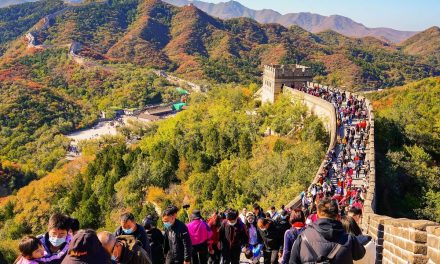
Best time to visit the Great Wall of China (2024)
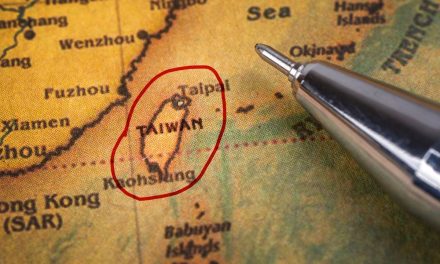
What are the main differences between China and Taiwan?
- Travel agencies
- Learn Chinese in China
- Learn Chinese online
- Study programs
- Internships
- Recruitment agencies
- Teacher recruitment agencies
- TEFL courses
- Volunteer programs
- Dating sites
- Travel insurance
Select Page
10 tips for your first trip to China
Posted by Fiona Davies | Updated October 17, 2021 | Travel

Are you traveling to China for the first time?
There’s a common perception that travel in China can be difficult in comparison to many other places.
People often bring up the language barrier as a major obstacle, as well as differences in cultural and social norms compared with the West.
But these things shouldn’t put you off visiting China.
With some preparation, an open-mind and a healthy dose of patience, you’ll have a ball in China.
For this list, I’ve focused on things I had no clue about beforehand, but certainly wished I had!
OK, so here are 10 tips for your first trip to China.
1. Use a translation app
The language barrier can occasionally lead to confusing, frustrating and embarrassing situations.
While they’re not always practical to whip out every time the need to communicate arises, there are times when phone-based translator apps can be a godsend.
Google Translate has been available in China for several years and is widely used among tourists.
You’ll find restaurant staff and shop assistants will usually be able to engage in a simple conversation using Google Translate.

Its real-time camera feature is also handy.
This allows you to scan Chinese characters and translate them to another language. It’s awesome for reading menus – even if the translations aren’t always entirely accurate!
You should also check out these other great apps for China .
2. Learn the Chinese version of queuing
It’s a well-known fact that the Chinese aren’t fans of forming orderly lines.
A typical Chinese ‘queue’, rather than being single-file, more closely resembles a football scrum.
Queue-jumping is extremely common and takes on various forms, from all-out body barging to stealthy squeeze-ins and even verbally asserting one’s right to go in front of every other person in the room.
This part of daily Chinese life can be pretty stressful, especially if you’re traveling to China for the first time.

Get used to queues like this on your first trip to China. Image by Humphery on Shutterstock.
However, like most things, to learn to queue like a local, all you need is a bit of practice, and preferably, a healthy sense of competition.
A few essential tips:
- Never stand still – the second you stop moving, five people will have crammed themselves into the space left by the person in front of you.
- Keep close – glue yourself to the person in front and don’t open any gaps.
- Stand wide and angle your elbows out – even if there are no gaps in front of you, someone will probably still try and squeeze in. Don’t be afraid to use your arms or body to block them. Wear a backpack to provide a bit of extra cushion for the pushin’ if you like!
- Don’t wait for the cashier to call you – as soon as they’re done serving the person in front of you, go straight up, hand them the money/passport/tickets/whatever and start talking to them. Occasionally people will try to butt in just as you’re about to be served. But don’t feel bad about pushing them aside either.
Remember, Chinese have a different concept of personal space.
Definitely don’t get aggressive, but asserting your intentions by physical means really isn’t considered rude at all.
3. Pay attention to those tones!
Many Westerners see Chinese as difficult to learn.
That’s partly because Chinese is a tonal language – an unfamiliar concept to most European language speakers.
Just being able to say few words can go a long way towards making your first trip to China easier and more enjoyable, even if you’re on a package tour.
Download a Mandarin phrasebook app with recorded sounds. Listen to the words and tones and then repeat, repeat, repeat.
Whether you’re learning basic Mandarin from an app or a native speaker, absolutely do not ignore the tones. These are the changes in speaking pitch.

Getting the tones right is crucial to being understood. Image supplied by The Helpful Panda.
The simplest strategy for beginners is to mimic each word as it’s said, as closely as possible – both in the pronunciation and the intonation.
Even if your pronunciation is dead-on, utter a word without the correct tones to a native Chinese speaker, and you’ll likely receive an uncomprehending blank stare.
If you have time before you leave for your trip, you could learn Chinese online which would give you a confidence boost, especially if you’re going to be traveling China on your own.
Otherwise, you might want to learn some strategies for travelling in China without any Mandarin skills .
4. Walk away from crowds
Too many crowds at that famous tourist spot? Just walk away!
Any popular attraction in China is bound to draw in large crowds of domestic tourists.
The best strategy for avoiding crowds is visiting earlier or later in the day. You should also avoid national holiday periods.
If you’re on a package tour though, you probably won’t have a choice.

The panda research base in Chengdu is usually super-crowded. Image supplied by Mike Cairnduff.
Sometimes you’ll arrive at the exact same time as 10 busloads of excitable local tourists.
This isn’t always the huge problem it’s made out to be.
The values of a typical Chinese group tourist are different to most crowd-averse Western tourists.
Local tour buses usually drop passengers off at designated spots where they can snap an iconic photo.
Rarely do the selfie-stick wielding masses wander far from the tour bus, their group or the main path.
Walk a few minutes away from the madness in any direction, and often the crowds all but disappear.
Of course, depending on the site, this doesn’t always work. But you’d be surprised how often it does!
5. Use a VPN
I’d say this is one of the best tips for your first trip to China.
Most people have heard of the Great Firewall of China , a tool employed by the Chinese Government to block citizens from accessing certain online content.
You might think a couple of weeks’ break from Facebook is a good thing. However, the list of banned apps and blocked sites is far more extensive than you might have realized.
It includes Instagram, Twitter, WhatsApp, YouTube, Gmail, Uber, Reddit and Dropbox. It also includes many international news outlets, not to mention Google and anything Google related.

Having a VPN app on your phone will give you access to Western sites like Facebook. Image by Pixabay.
Fortunately, the firewall is pretty easy to get around, with the help of a Virtual Private Network (VPN) app. A VPN anonymises your identity online by masking your IP address and assigning you a temporary IP located in another country.
Not all VPNs work in China. For an up-to-date list of VPNs that do work in China, check out this helpful blog .
6. Try to stay calm in Chinese train stations
Chinese train stations can be crazy!
The single most mind-blowing and stressful moment of my first trip to China was crossing the border from Hong Kong to Shenzhen North train station.
It’s one of the biggest and busiest rail transport hubs in the country. Boy, was I unprepared.
I’d bought my high-speed train ticket in advance and all I knew was I had to swap out the receipt I’d received from an online agent for an official China Railway ticket.
English signage was non-existent. No official-looking person I accosted either spoke English or seemed to understand what was printed on my booking confirmation.
I was stranded, utterly without help.
After wandering around the colossal terminal building for what seemed like forever, I finally spotted people walking away from a series of cashier windows with tickets in their hands.

You may experience a busy train station on your first trip to China.
Joining the back of a 50-person strong queue, I hoped and prayed I was in the right place.
Over an hour later, my prayers were answered and I returned from the ticket booth triumphant.
My saving grace was that I had arrived four hours before my train’s departure time. This turned out to be slightly excessive, but I never worried about missing my train.
If you’re with a tour group, you will be fine. But if you’re traveling solo like I was, make sure you buy an online train ticket from an official agent like Trip so you don’t have to do anything at the station.
7. Take care when crossing the road
The only road rule in China is size matters. That means trucks, buses and cars are king.
Pedestrians? Way, way down the bottom of the pecking order.
You’ll most likely come across zebra crossings painted at some intersections.
While pedestrians do use them, motorists seem to regard them mainly as decorations. Stopping at them is completely optional.
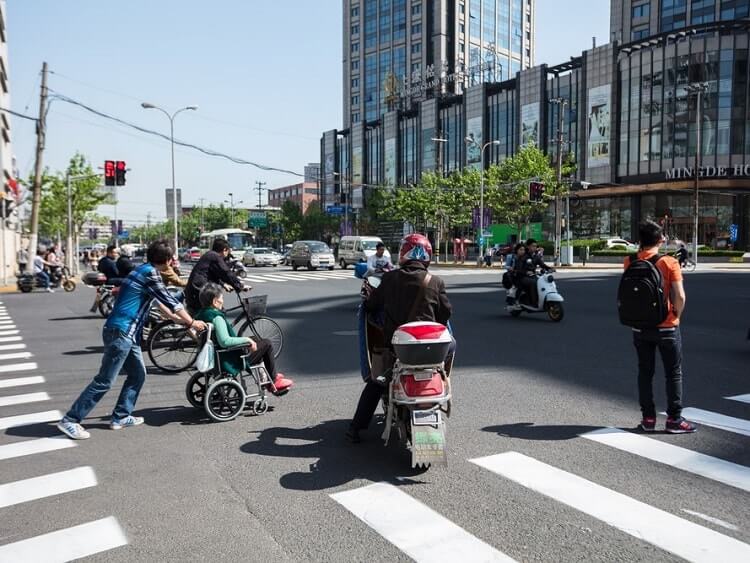
Pedestrian crossings in China are a free for all. Image by J. Lekavicius on Shutterstock.
Traffic light crossings tend to have a slightly better strike-rate when it comes to cars actually stopping, but even a green pedestrian light doesn’t guarantee right of way.
A red light means nothing to a Chinese motorist on a mission. It’s always up to you to get out of the way.
I think it’s fairly safe to say that pedestrian rights are non-existent in China!
So, how do you cross a Chinese road and survive?
The best advice is to follow the locals and seek safety in numbers.
Cross in a group whenever you can. But if you are on your own, try to cross only at intersections.
Keep scanning the road for a break in traffic until you have enough of a gap to walk swiftly through.
If you see a driver speeding up to get through an intersection – wait, because he ain’t stopping! Only continue when the coast is clear.
8. Get used to smoking and spitting in public
Indoor smoking, but free-range spitting in China even more so, are two things plenty of foreigners find impossible to get used to.
But if you’re aware of how common these practices are beforehand, witnessing them in the flesh hopefully won’t come as a shock when you’re traveling in China for the first time.
Nearly one-third of China’s population are smokers. This is one reason why many Chinese people often feel the need to hack up a chunk of lung whenever the urge arises.
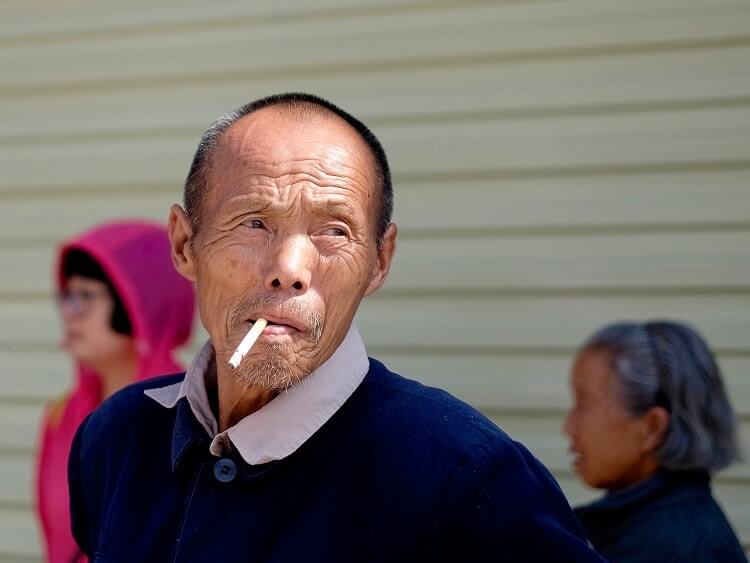
Lots of people smoke in China, particularly older men. Image supplied by Doctor X.
The combination of tobacco smoke and pollution contributes to the common Chinese pastime of hocking up phlegm onto footpaths, along with the traditional belief that “out is better than in”.
As a foreigner, you’ll find this rather unsavory. But remember, every culture has its own idea of ‘normal’.
For example, blowing your nose into a handkerchief and stuffing it back into your pocket is considered deeply disgusting by many in Chinese society.
9. Get the right visa
Getting a visa for China isn’t as hard as it used to be. In some cases, you don’t even need one.
You can now see many parts of China for a few days without getting a visa before you leave home.
Known as Visa-Free Transit, it’s a great way to enjoy your first trip to China without the hassle or expense of a traditional visa.
You simply apply for it when you arrive in China, e.g. at the airport.
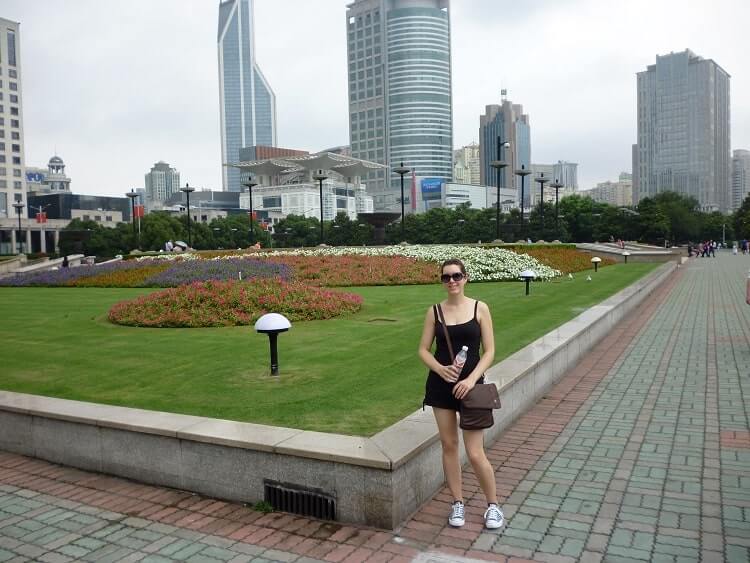
Make sure you get the right visa for China. Image supplied by Mike Cairnduff.
There are some rules with this visa exemption. For example:
- You need to be transiting through China on the way to another country (e.g. your itinerary is Los Angeles – Shanghai – Tokyo – Los Angeles)
- You can stay for up to 144 hours depending on where you arrive in China (different cities have different rules)
- And you must be from an approved country.
To find out if you’re eligible for Visa-Free Transit, use the Chinese government’s online checker .
However, if you’re traveling in China for more than a few days, you’ll need a visa so apply for it early.
Here’s a good guide for getting a visa for China.
10. Avoid Chinese beer at bars
I could turn a blind eye to the spitting, tolerate the pedestrian crossings and learn to enjoy the ‘sport’ of competitive queuing in China. But this one… this one got to me on my first trip to China.
I was at a bar, looking forward to my first cold, thirst-quenching beer of the evening.
I ordered my drink, and upon taking my first sip, the shock to my system was immediate. The cool, refreshing beverage I’d been craving was neither cool nor refreshing.
In fact, nowhere in this entire bar did there seem to be a fridge in sight!
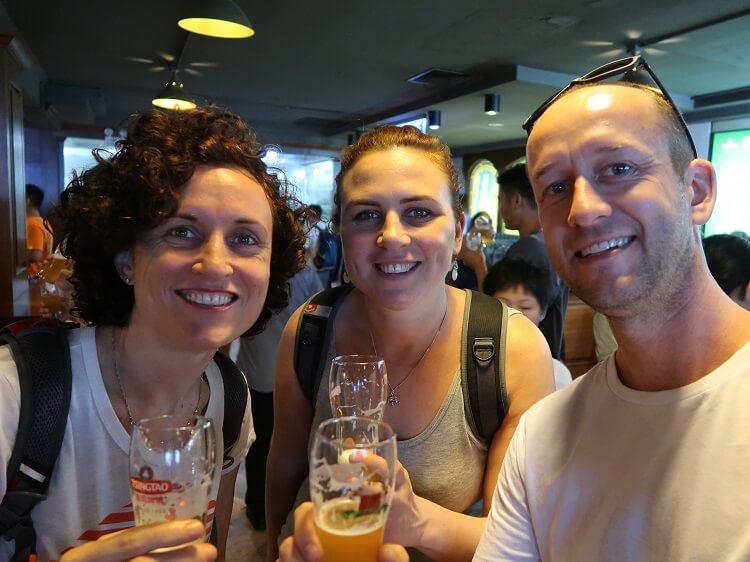
Like cold beer? You may need to ask for ice! Image supplied by Mike Cairnduff.
Drinking ice-cold beverages isn’t particularly common in China. Conventional wisdom has it that cold drinks are bad for digestion.
Many Chinese will opt for warm or even hot water and beverages, as warmer liquids aid in breaking down and digesting fats.
See also: Craft beer in China
From what I’ve read, this is an idea which has some scientific merit behind it.
Since there are few health benefits to sinking copious amounts of beer at a KTV joint in any case, I really didn’t see the point in even beer being served warm!
But while cheap, warm beer certainly doesn’t sit well with my palate, my Chinese friends seem to like their lukewarm lager just fine.
If you really can’t stomach warm beer, try some authentic local liquor instead, like good quality baijiu (white spirit) or Chinese whiskey.
So there you have it – 10 tips for your first trip to China. I hope you learned a thing or two! If you have another few minutes, check out my blog on the truth about China .
Or head over to Mike’s ultimate list of China travel tips .
Want more helpful information about China?
Then hop on the monthly newsletter!
One more step: You must click the link in the email we just sent you to confirm your email address.
Commercial relationship disclosure: The Helpful Panda has commercial arrangements with organizations that may appear on this page, such as affiliate links. See our terms for more info.

Fiona Davies
Fiona is an avid traveler, having visited many corners of the globe. She rates China as one of her favorite places to visit. Fiona is from Sydney, Australia.
Got a question or comment?
We welcome relevant and respectful dialogue. See our terms for our comment policy.
More Great Content

Spring in China – weather, tips and places to visit
Updated August 26, 2023

Top 12 things to do in Yinchuan (I’ve been three times!)
Updated November 25, 2023

What to bring to China (11 essential things)
Updated June 7, 2023
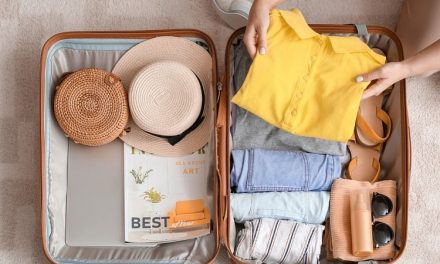
China packing list: what to pack for a successful trip
Updated May 1, 2023
Recent Posts

Recent Comments
- Kim Ooi March 18, 2024 on Living in China: the good, the bad, and the bloody ugly
- lgeng March 18, 2024 on Living in China: the good, the bad, and the bloody ugly
- Mike Cairnduff March 10, 2024 on 40 China travel tips for 2024 (I swear by every one)
Ads space (New)
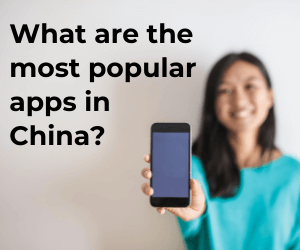
Explore China
Do you want to build your career in China?
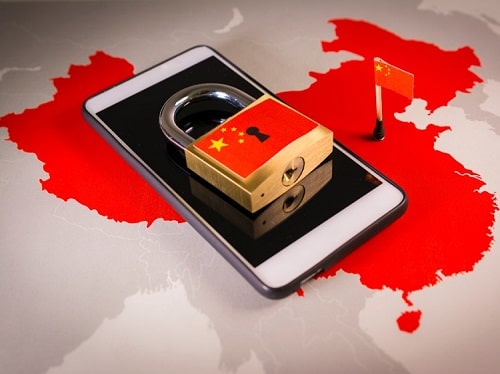
Our writers have all experienced China in person. Support them by subscribing to the free monthly newsletter about visiting China.
- 86-19138970032 (GMT+8 18:00~09:00)

- Beijing Xian Tours
- Shanghai Beijing Tours
- Hong Kong Guilin Tours
- Hangzhou Suzhou Tours
- Kunming Lijiang Tours
- Shanghai Yangtze Cruise Tours
- Chengdu Tibet Tours
- More Short Stay Tours
- China Tours in January
- China Tours in February
- China Tours in March
- China Tours in April
- China Tours in May
- China Tours in June
- China Tours in July
- China Tours in August
- China Tours in September
- China Tours in October
- China Tours in November
- China Tours in December

- High Speed Trains
- China Yangtze Cruise Tour
- Photography
- Desert Adventure
- Ethnic Villages
- Biking Tours
- Kung Fu Tours
- Heritage Sites Exploration
- China Spring Tours
- China Summer Tours
- China Autumn Tours
- China Winter Tours
Notice! 2024 available cruise routes include 4~5 days Chongqing-Yichang(most classic) and 11~12 days Chongqing-Yichang-Shanghai(limited).

- Best-value Yangtze Cruises
- Top Family-friendly Cruise Ships
- Top 3 Luxury Yangtze River Cruises
- Yangtze River Highlights
- Yangtze River Cruise Routes
- Upstream or Downstream?
- Dining & Drinking
- Accommodations
- On-board Activities
- Yangtze Cruise Booking Steps

- Inner Mongolia

- Fanjingshan
- How to Plan Your First China Tour
- How to Plan Beijing Tour
- How to Plan Xian Tour
- How to Plan Shanghai Tour
- How to Plan Guilin Tour
- How to Plan Sichuan Tour
- How to Plan Family Tour
- 2024 China Travel Ideas
- Best Time to Visit China
- What to Pack for Your China Journey
- Make Payment in China
- Updated China Travel News
- Ultimate Chinese Visa Guide
- Chinese Visa Types
- Chinese Visa Requirements
- Do I Need a Visa for China
- Chinese Visa Application
- Chinese Visa Exemptions
- 144-hour Visa Free
- Shenzhen Visa on Arrival
- Hainan 30-day Visa Free
- Embassies & Consulates
- Invitation Letter
- Useful Visa FAQs & Tips
- Entry Regulations
- Baggage Allowance
- Customs Declaration
- Exit Regulation
- How to Book Train Tickets
- How to Collect Train Tickets
- How to Cancel & Alter Train Tickets
- How to Read Train Tickets
- China High Speed Train Types
- Seats Class & How to Choose
- Friendly Facilities on the Train
- The Train Station Departure Process
- Available Food and Drinks on the Train
- Western Toilets on the Train
- Luggage Racks & Baggage Allowance
- Beijing Train Stations
- Shanghai Train Stations
- Guilin Train Stations
- Xian Train Stations
- Chengdu Train Stations
- Hong Kong West Kowloon Railway Station
- Beijing - Xian
- Beijing - Shanghai
- Guangzhou - Shanghai
- Shenzhen - Shanghai
- Chengdu - Xian
- Shanghai - Hangzhou
- Shanghai - Xian
- Chengdu - Chongqing
- Kunming - Lijiang
- Beijing Capital International
- Beijing Daxing International
- Shanghai Pudong International
- Shanghai Hongqiao International
- Guangzhou Baiyun International
- Hangzhou Xiaoshan International
- Chengdu Tianfu International
- Chengdu Shuangliu International
- Xian Xianyang International
- Shanghai - Beijing
- Hong Kong - Shanghai
- Guangzhou - Beijing
- Chengdu - Lhasa
- Shanghai - Guilin
- Shanghai - Sanya
- Travel in Spring Season
- Travel in Summer Season
- Travel in Autumn Season
- Travel in Winter Season
- Weather in January
- Weather in February
- Weather in March
- Weather in April
- Weather in May
- Weather in June
- Weather in July
- Weather in August
- Weather in September
- Weather in October
- Weather in November
- Weather in December
- Top 10 China Destinations
- Top 15 Things to Do
- China World Heritage Sites
- Top 10 Best Natural Beauties
- Top 10 Museums in China
- Top 10 Old Towns & Villages
- Five Great Mountains in China
- Top 10 Monasteries & Temples
- Top 10 Ski Resorts
- Top 10 Beautiful Lakes in China
- 7 Best Beaches in Sanya
- Top 6 Beautiful Waterfalls
- Panda Volunteering
- Having fun on Ice and Snow Festival
- About Us Who We Are Our Team Why Travel with Us Feedback & Reviews Travel Stories Travelers' Gallery Payment Guide Customer Support Contact Us
- Tour Experiences
Destinations
- Travel Guide

Meaningful Cultural Trip in Two Ancient Capitals of China
-- mr. & mrs. thor’s 4-day xi’an & luoyang cultural trip with friend.

- Departure Date 2020-09-26
- Travel Length 4 Days
- Travel Theme Culture, Nature, History, Friends
- Group Size 3
- Travel Route Shanghai - Xian - Luoyang - Xian - Shanghai
- Highlights Terracotta Warriors, Longmen Grottoes, Ancient City Wall, Muslim Quarter, Da Ci'en Temple, Giant Wild Goose Pagoda, Shaanxi History Museum, etc.
- Story Tags #Xian #Xian Tour #Terracotta Warriors #Luoyang #Luoyang Tour #Longmen Grottoes #Ancient City Wall #Muslim Quarter
China is a vast country that you can explore in many ways such as hiking on the mountains, trekking in the forests, cruising on the rivers, and strolling in the ancient villages. Many people have slowed their pace down in 2020 because of the COVID-19. After months’ of hard work, life is gradually coming back to normal in China and people can travel to other cities if necessary pandemic prevention requirements are met such as getting a health code (green), wearing masks, and taking temperature.
On July 7, 2020, I got an e-mail from Mr. Per Thor consulting the river cruise from Shanghai on the Yangtze river. But at that time, Yangtze River cruise was not open due to the pandemic ( Yangtze River cruise is available now). Only Chengdu and around areas such as Yunan, Gansu and Henan are allowed for foreign tourists, so I recommended 2 other routes respectively to Luoyang and Chengdu for Mr. Per Thor’s choice.
Luoyang . in Henan Province is one of the birthplaces of Chinese civilization with a history of more than 5000 years. It’s a treasure place for people who are into culture and history. Chengdu . in Sichuan Province has long been renowned as the “Land of Abundance” and is the hometown of pandas. Here you can meet both the ancient and modern China. Both destinations are good choices for a China trip. Mr. Per Thor replied to me soon and was interested in traveling Luoyang. But his wife had already planned another trip. So the Luoyang trip was put aside for a while.
Then in middle August, Mr. Per Thor contacted me again for the 4 Days Xian Highlights Tour with Sidetrip to Luoyang Longmen Grottoes . Mr. Per Thor has been working in Shanghai and is very interested in Chinese culture. Xi’an and Luoyang can well meet his demands. So I arranged this 4 days tour for Mr. Per Thor and his wife and a friend. The trip is from September 26th - 29th, right before the national holiday of China to avoid the crowds.
Day 1 Xi’an Arrival
As Shanghai is nearly 1400 km from Xi’an, it is most recommended to travel by flight, which is about 2.5 hours. Mr. Per Thor arrived in Xian Xianyang International Airport in the afternoon. Our professional guide and driver were already at the airport and then picked them up to hotel.
Day 2 Xian Highlights Visit: Terracotta Warriors, Ancient City Wall, Muslim Quarter
Today in the early morning, Mr. Per Thor and his group visited the famous Terracotta Warriors and Horses built by the first emperor of China - Qin Shihuang. Over 8,000 life-size warriors, horses and chariots have been buried for more than 2,000 years and were uncovered by a local farmer in 1974. After lunch, return to Xian to take a wonderful stroll on the Ancient City Wall , the largest and best-preserved ancient city wall in China. The nearby Muslim Quarter is the most popular food street and they tried many local snacks there.
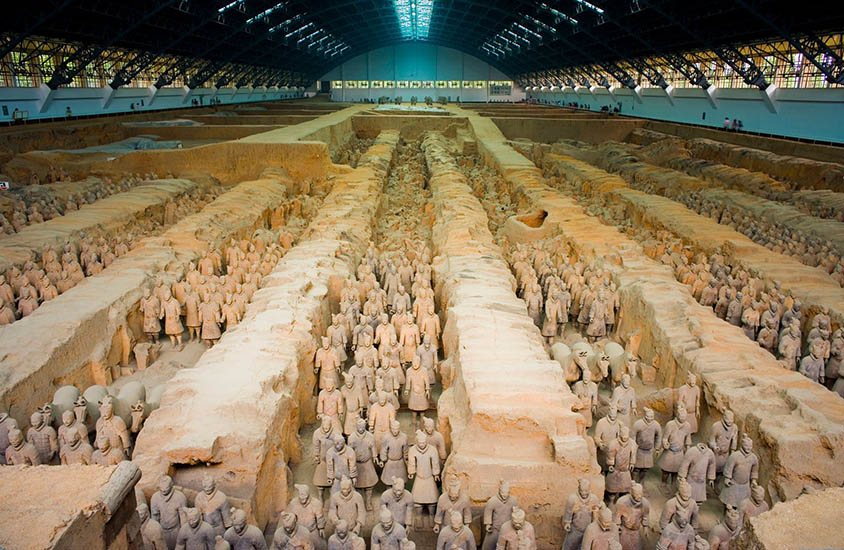
Terracotta Warriors in Xian
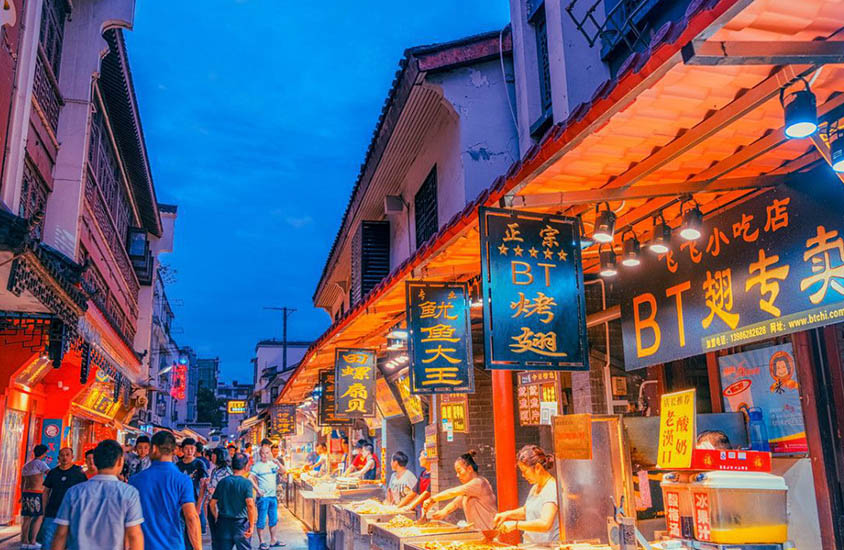
Busy Musilim Quater - Famous Snack Street in Xian
Day 3 Luoyang Highlights Visit: Longmen Grottoes
After breakfast, Mr. & Mrs. Thor and their friend took a morning high speed train (about 1.5 hours) to Luoyang. The highlight Longmen Grottoes is only 5 km from the high speed train station. It is a UNESCO World Heritage Site where you can appreciate amazing stone carving art and have a taste of the Buddhist culture in ancient China. After the visit, they took a high speed train back to Xian.
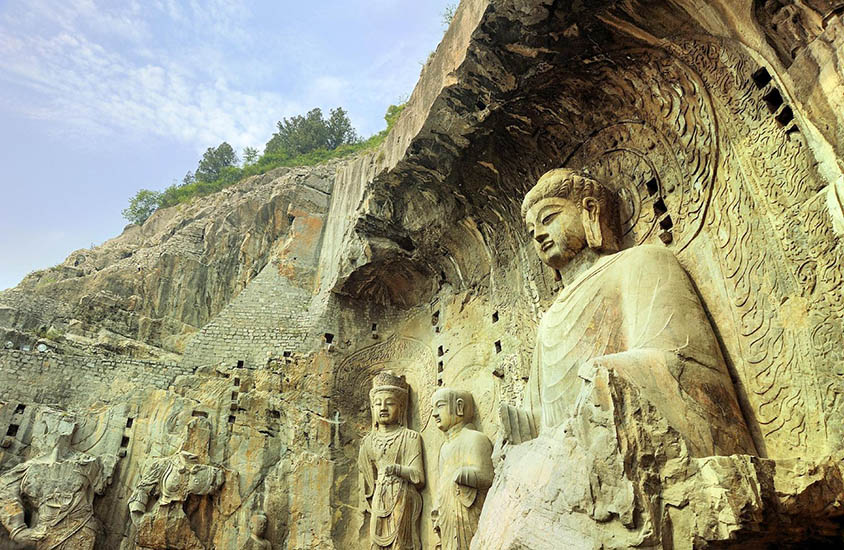
Vairocana Buddha in Longmen Grottoes
Day 4 Xian City Visit: Da Ci'en Temple, Giant Wild Goose Pagoda, Shaanxi History Museum & Departure
On the last day, they visited more sites in Xi’an such as Da Ci'en Temple, Giant Wild Goose Pagoda , and Shaanxi History Museum . They are all landmarks of Xian and treasures left after thousands of years. At the Giant Wild Goose Pagoda, Mr. & Mrs. Thor and their friend tried on traditional Hanfu (Han Chinese Clothing), which was quite a unique memory. In the afternoon, they were escorted to the airport to catch the flight back to Shanghai.
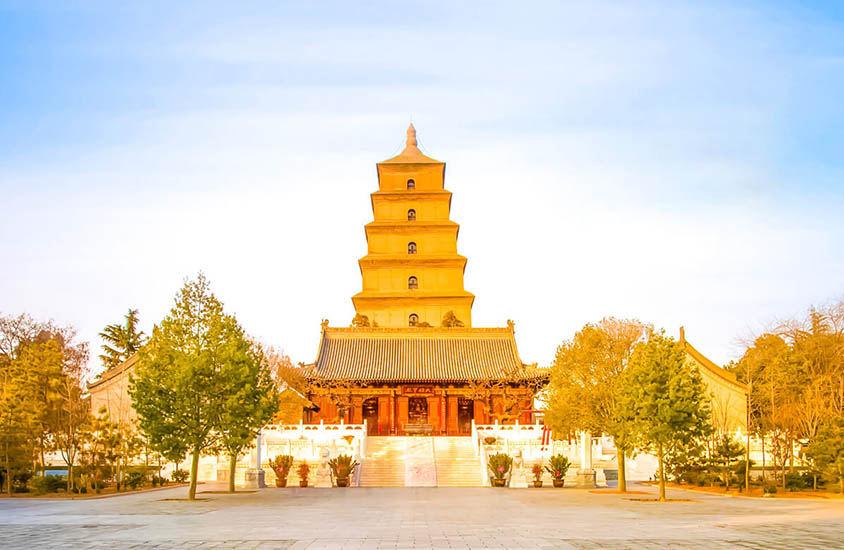
Giant Wild Goose Pagoda - Landmark of Xian
After the trip, Mr. Per Thor sent me an e-mail: Thanks for the excellent arrangement for our trip to Xian and Luoyang. I am really happy to know that he has a satisfactory Xi’an & Luoyang trip. Later, Mr. Per Thor also wrote a feedback on Trip Advisor to share his travel experience with more people.
Here is the feedback Mr. Per Thor wrote on Trip Advisor:
Custom-made Guided Tour in Xian:
If you want to have a custom-made guide tour in China. I can really recommend Yangtze-River-Cruises.
I got help from one of their agents Tracy to custom-made my trip to Xian to see the terracotta warriors with Side trip to Luoyang Longmen Grottoes.
She solved and booked everything from pickup at the airport, hotel, guides, ticket for entrance and high speed train to Luoyang etc.
And the guides she hade booked was excellent, they had a great knowledge and was really good in English.
I will use Tracy at Yangtze-River-Cruises for more trips in China.
A very satisfied customer/ Per
Mr. Per Thor Recommended His Friends for a 3-day Xi'an Tour
Then in late October, I got an e-mail from Mr. Per Thor’s friend Therese. She was recommended by Mr. Per Thor and was planning a 3-day Xi’an trip for 6 people. I am very grateful for their trust in me and quickly arranged this tour for them. After they traveled back from Xi’an, Therese sent me a message on WeChat:
"Good morning Tracy, I just want to tell you that we had a great trip. Our guide Timo is the best guide we have had. He made this trip perfect with his nice personality, very good English and his very good knowledge about everything. His choice of lunch and dinner places was perfect. He took really good care of us! Thank you for all your support. Everything went without any problems."
She also wrote a feedback on Trip Advisor:
Visit Xi’an for Three Days:
We were three couples that used China discovery for guide in Xi’an. We contacted the firm and got a proposal on itinerary for three days. We wanted to do some changes to fit our purpose and wishes and that was no problem and easy done. CD proposed a hotel and could have booked it for us but we decided to book hotel by ourself and that was no problem at all. (Hilton in city center Xian, very good). The guide (Timo) met us at the air port and guided us over the three days. Very professional and listed to our wishes and really tried to give us the best support. Really good! His English was fantastic and he guided very well and explained I the right level. He also explained what was going to happen so there was no misunderstandings. It is not so common that this works so well with Chinese guides is our experience from earlier trips.
Since this trip was during the COVID pandemic and there were local restrictions in different areas China. We needed support to understand if the Hotel and the sights was possible for us to visit. CD supported this very well and made sure that everything was ok.
We can really recommend this company. A little pricey maybe, but you got what you pay for.
2020 is a tough and unforgettable year. We have met many difficulties in our life and work. But it is also a year of hope. After nearly a year’s endeavor, more and more cities and attractions are open to visitors. I have also helped many tourists to make their trips happen in this special period. I will always be here at your service to answer your questions, solve your problems and provide a satisfactory tour to you.
Hi, I'm Tracy, Mr. Per Thor’s travel consultant. Are you interested in Mr. & Mrs. Thor and their friend's 4 days trip to Xi'an and Luoyang? Please feel free to contact me for more details of their travel such as trip itinerary, accommodation or other arrangements. If you want to take a similar trip or customize your own China tour, just e-mail me. It's my pleasure to invite you to our country and join us in appreciating this charming land.

“Only You” - Couple’s Resounding 69 Days Private China Journey
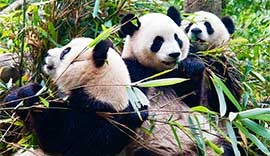
Say Hello to Cute Panda and Travel Around Chengdu
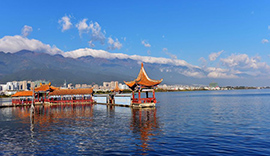
Plants-Enthusiastic Couple Indulged in Beauty of Yunnan

Enjoy Northern China Cultural Trip and Summer Cruise with Bestie
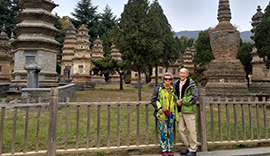
Sweet Couple's 21-Day Northern China Exploration
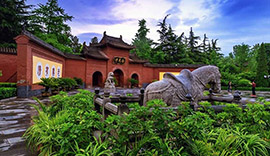
Cultural Immersion Trip in Ancient Capitals of China

More Travel Stories by Destination
- Beijing Travel Stories
- Shanghai Travel Stories
- Xian Travel Stories
- Guilin Travel Stories
- Chengdu Travel Stories
- Huangshan Travel Stories
- Yangtze Cruise Travel Stories
- Yunnan Travel Stories
- Tibet Travel Stories
- Gansu Travel Stories
- Henan Travel Stories
Our Real Customers' Travel Photos
- Beijing Travel Photos
- Shanghai Travel Photos
- Xian Travel Photos
- Guilin Travel Photos
- Zhangjiajie Travel Photos
- Huangshan Travel Photos
- Yunnan Travel Photos
- Tibet Travel Photos
- Yangtze Cruise Travel Photos
- Panda Volunteer Travel Photos
- All Customer’s Travel Photos
Recommended Tours
Top 3 tours chosen by most customers to explore in the best way. Check the detailed itinerary, or tailor your own trip now with us.
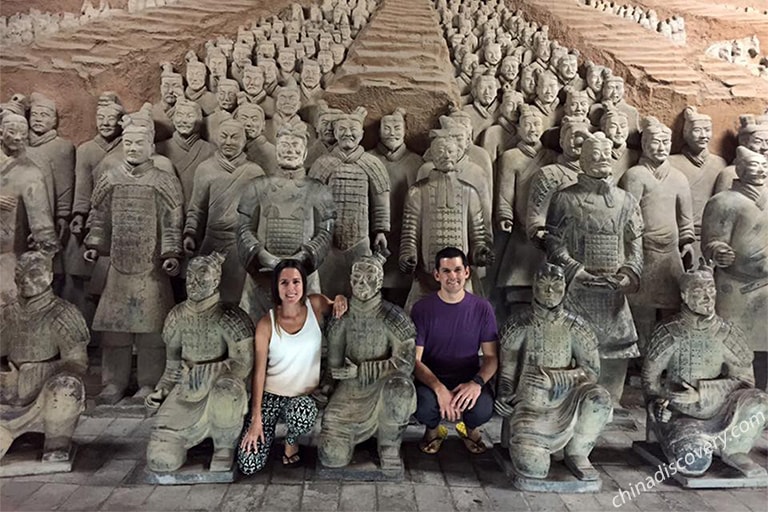
3 Days Classic Xian Tour (Best Highlights Plus Enjoyable Pace)
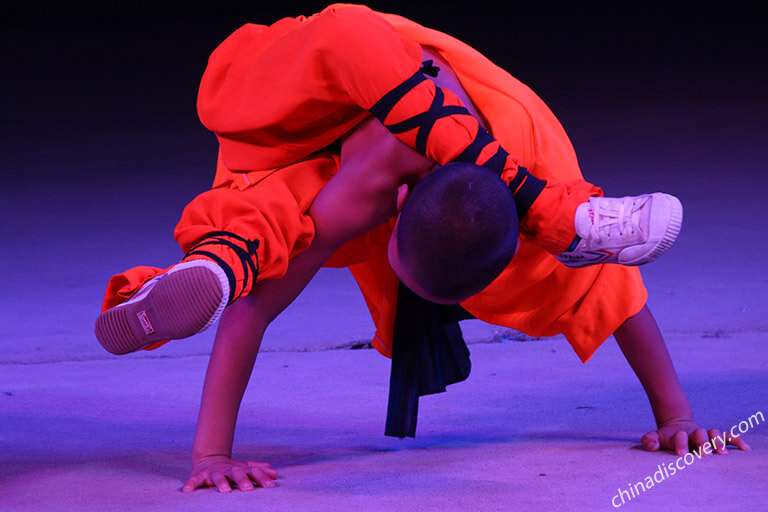
6 Days Xian to Luoyang Highlights Tour with Sidetrips to Mount Hua & Shaolin Temple
Xian / Huashan / Luoyang
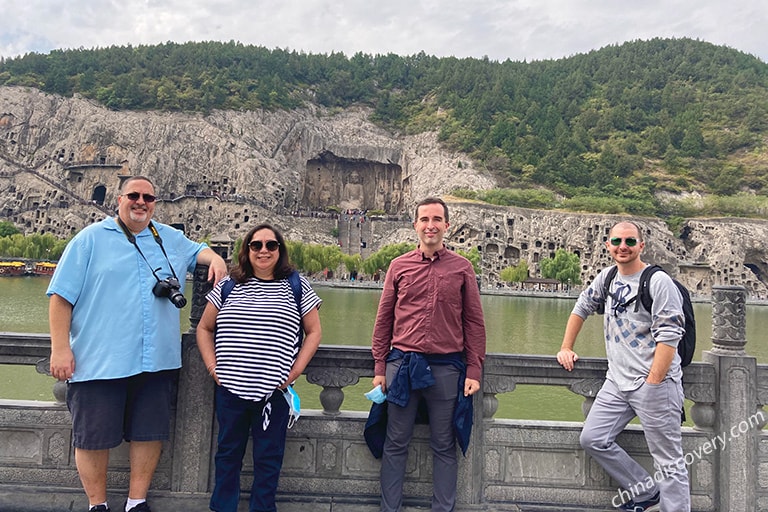
4 Days Xian Highlights Tour with Sidetrip to Luoyang Longmen Grottoes
Xian / Luoyang Longmen Grottoes / Xian
Have a question? Get answers from our travel experts or guests
- Your Question:
- Your Email:
Start planning your tailor-made holiday to China by contacting one of our specialists. Once inquired, you’ll get a response within 0.5~23.5 hours.

Want a Quick Question?
Our friendly, warm and professional China travel consultant is here working for you at any time. Feel free to ask a question or customize a tour with the help of him/her. You will get an efficient reply within 24 hours.
- Affordable and valuable price
- 100% tailor-made packages
- Highly rated customers reviews
- Efficient customer support
China Tours
- Top 10 China Tours
- Classic China Tours
- China Tours from Beijing
- China Tours from Shanghai
- China Tours from Hong Kong
- China Tours from Chengdu
- Short China Trips
- Customize China Tour
- China Panda Tours
- Family Tour with Kids
- High-Speed Train Tour
- Silk Road Travel
- Yangtze River Cruise
- Hiking & Trekking Tours
- Photography Tours
- China Minority Travel
- Beijing Shanghai Tours
- Shanghai Yangtze Tours
- Chengdu Jiuzhaigou Tours
- Chengdu Lhasa Tours
- Suzhou Hangzhou Tours
- Guilin & Yangshuo
- Zhangjiajie
“Very good experience”
“WONDERFUL 25 DAYS IN CHINA - PRIVATE TOUR”
“Awesome China tour from northeast to southwest”
Any questions, please email us at: [email protected] or call us at: 86-19138970032 (Monday-Friday 9 a.m. to 6 p.m. GMT+8)
- Terms & Condition
- Privacy Policy
- Customer Support
Copyright © 2011-2024. All rights reserved.
Cookie policy
We use cookies to give you the best experience on our website. Continue using our website means you agree with our cookie policy. For more info, please read here .

A Beijing Itinerary | 4 days in China’s bustling capital
Beijing is massive. Third largest city in the world kind of massive. So how do you fit all that you need to see in the ancient city, formerly known as Peking? Well, we hope that we’ve put together the perfect 4 day Beijing itinerary that will help you plan your trip; a complete guide to Beijing if you will. We’ve also included a bunch of useful information, travel tips and some handy recommendations to make sure you’re fully prepared for a trip to China, which isn’t always the easiest place to travel for foreigners.
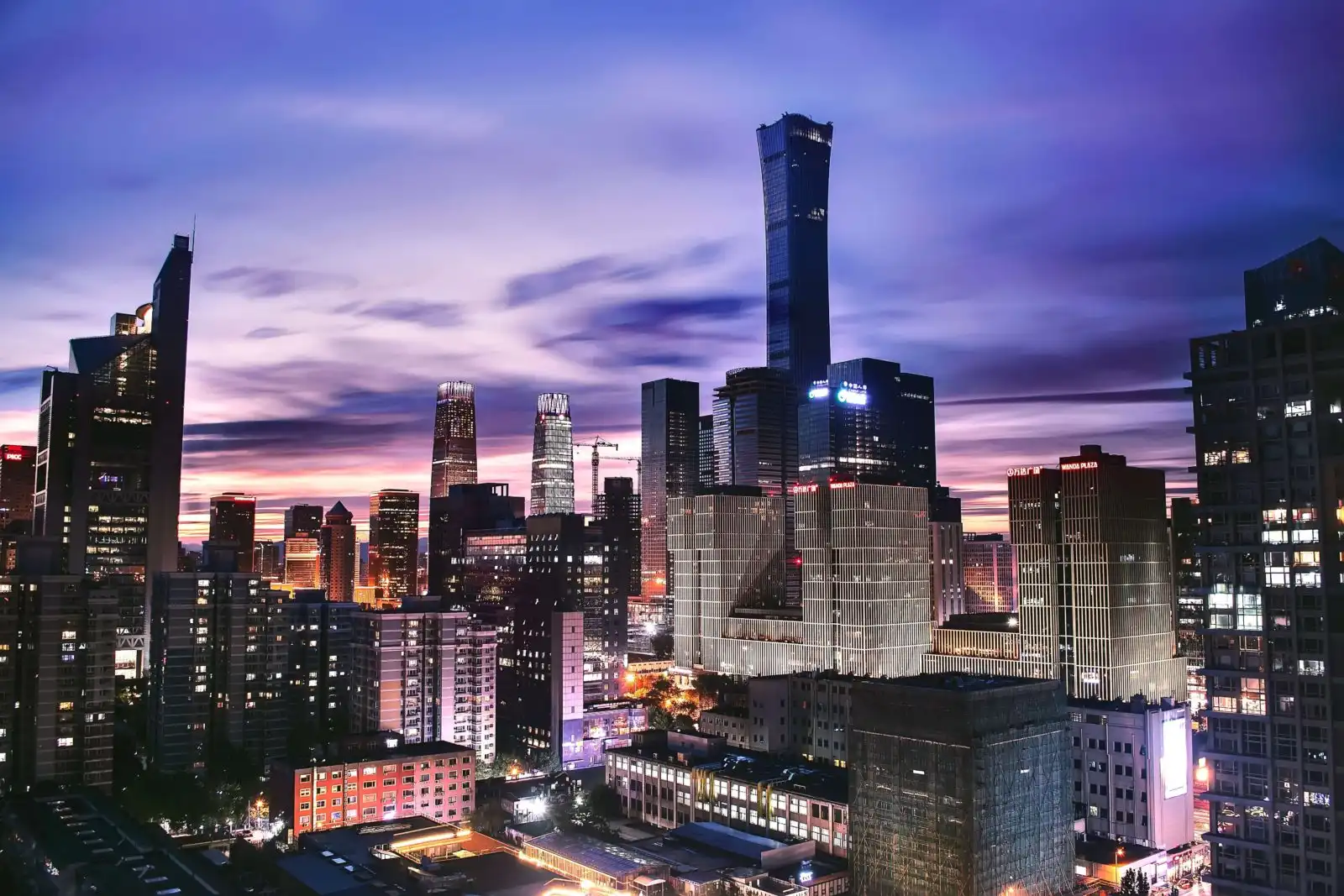
Why go to Beijing?
When we decided to add China to our list of must go places on our world trip, there was a hint of trepidation and a touch of scepticism. We had heard from the few other travellers that China travel is challenging and to pretty much expect the worst. And based on our experiences, it made us question if they had actually been! It was not at all what we had been led to believe and with Beijing being the capital city, it makes it the perfect place to start a trip in China. So before we get into our Beijing itinerary here is why you should make Beijing a must stop destination.
- If you are looking to see some of the most famous sights in the world, then look no further then Beijing. The city is littered with iconic landmarks and Chinese culture .
- I’m pretty sure you’ll be a fan of Chinese food. Let’s be honest, who isn’t? So what better than to experience first-hand where Peking duck pancakes come from? And if you are interested in experiencing cuisine that you most likely won’t have ever tried before, then this is your place. Duck blood soup anyone? Go on, tantalise those taste buds with some strange foods in China !
- We were a little concerned that getting around Beijing wouldn’t be that easy. How wrong we were! One of the best Metro systems in the world, it is cheap, clean and efficient. Plus all the ticket machines and stations are in English.
- If I’m comparing the cost for accommodation, food and travel to any other major city in the world, then your money goes pretty far. Don’t expect South East Asia prices, but it’s not wildly off. You can easily stay very comfortably on a 100 GBP / 120 USD a day budget.
- Now one thing we found we actually loved was the language barrier. Yes, there definitely is one. English isn’t widely spoken. But it makes you feel like you’ve really achieved something when you manage to order the correct dinner or find your way to the right place. It’s almost taking you back to the days of romantic travel, when you just had to get by. And let’s be honest, if all else fails – Google Translate.
- The local people are lovely and we found them to be super helpful. We won’t forget the time we tried to purchase a new phone, and were using Google translate to chat through with the sales assistant. And without any hesitation another customer who spoke fluent English came and helped us out.
Read next: Here is the perfect 2 week China itinerary.
Our Beijing itinerary for 4 days
- Day 1 – Forbidden City | Jingshan Park | Tiananmen Square | Qianmen Walking Street
- Day 2 – Summer Palace | Temple of Heaven
- Day 3 – Day trip to the Great Wall of China
- Day 4 – Ming Dynasty Tombs | Lama Temple | Hutongs | Ghost Street
How long should you stay in Beijing?
There is so much to do in Beijing that you could easily stay in the city for more than a week seeing the sights (there are 7 UNESCO World Heritage sites alone), hitting the hutongs, trying some of the 12,000+ restaurants and even shopping till you drop. But we would recommend spending 4 days exploring the city. And hopefully we have the perfect Beijing tour itinerary below.
We actually spent 5 days in Beijing, but as part of a longer one month trip, and so split this into two and three days with a trip to the Great Wall of China bang in the middle. We didn’t go there, but many people also travel from Beijing to neighbouring Mongolia .
Read next: The ideal Xian city guide.
Travel Insurance for China
Got your travel insurance booked? We promise to never push a brand or product we don’t personally use, and the travel cover from Safety Wing is a policy we don’t just use, but we highly recommend. They offer some of the most flexible policies, amazing customer service and are affordable too.
Check out the latest travel insurance prices with Safety Wing here.
Day 1 Beijing Itinerary – Exploring the most famous sites
Forbidden city.
So, what to do in Beijing? We are kicking off the itinerary with the big one: The Forbidden City. This has to be one of the most impressive city or palace complexes that we have ever seen. There are over 1.8 million pieces of artwork, over 8,500 rooms across 900 odd buildings. So you need to leave yourself a good couple of hours to explore. We’d suggest you wear comfy shoes as the complex is almost a square kilometre!
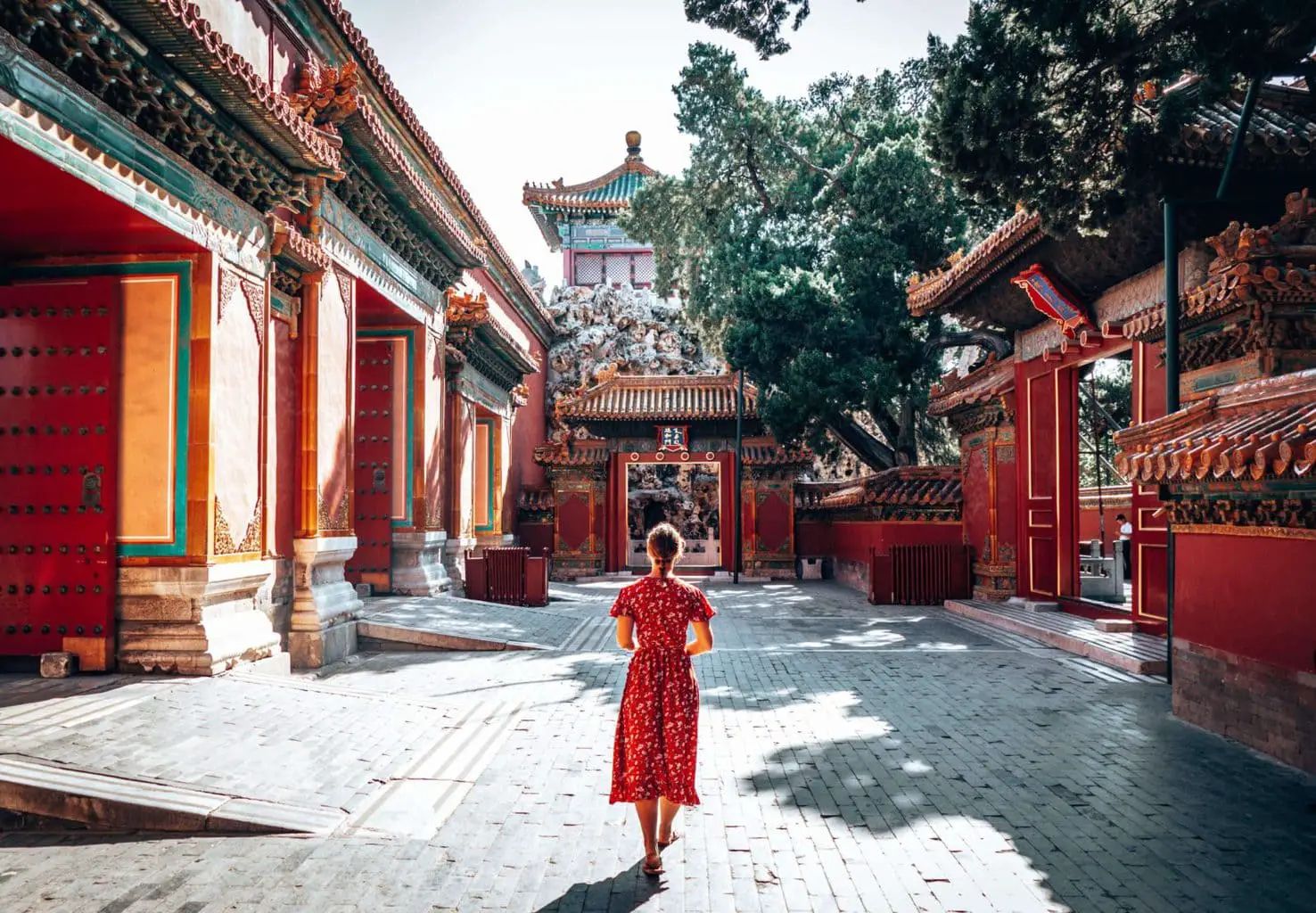
Make sure you book your ticket online beforehand. You’ll have to use a third party as you need to have a Chinese mobile number, ID and understand Mandarin to book directly!
We booked our Forbidden City Tickets here , which was seamless. Cost for entrance was 65 RMB (9 USD/7.50 GBP) Don’t forget to take your passport with you, you need it to get in.
There are also some good walking tour options, with the added benefit of understanding more of the history about the Forbidden City from your tour guide.
If you are taking the Metro, get off at either of the Tiananmen Square stations on line 1 (red line).
Top tip: If you are keen Instagrammers or photographers, then our best advice is get to the city entrance before 8.00am, enter over the bridge and wait around for 30 minutes until the ticket booths open. Then as soon as you are in, head to the left of all the crowds and walk quickly through the first couple of buildings. Miss them out for now – you can head back to them later. You’ll almost be doing the route in ‘reverse’. They limit ticket numbers to 80,000 per day, so there are only certain times/places where you can have it all to yourself. But it is so worth it!
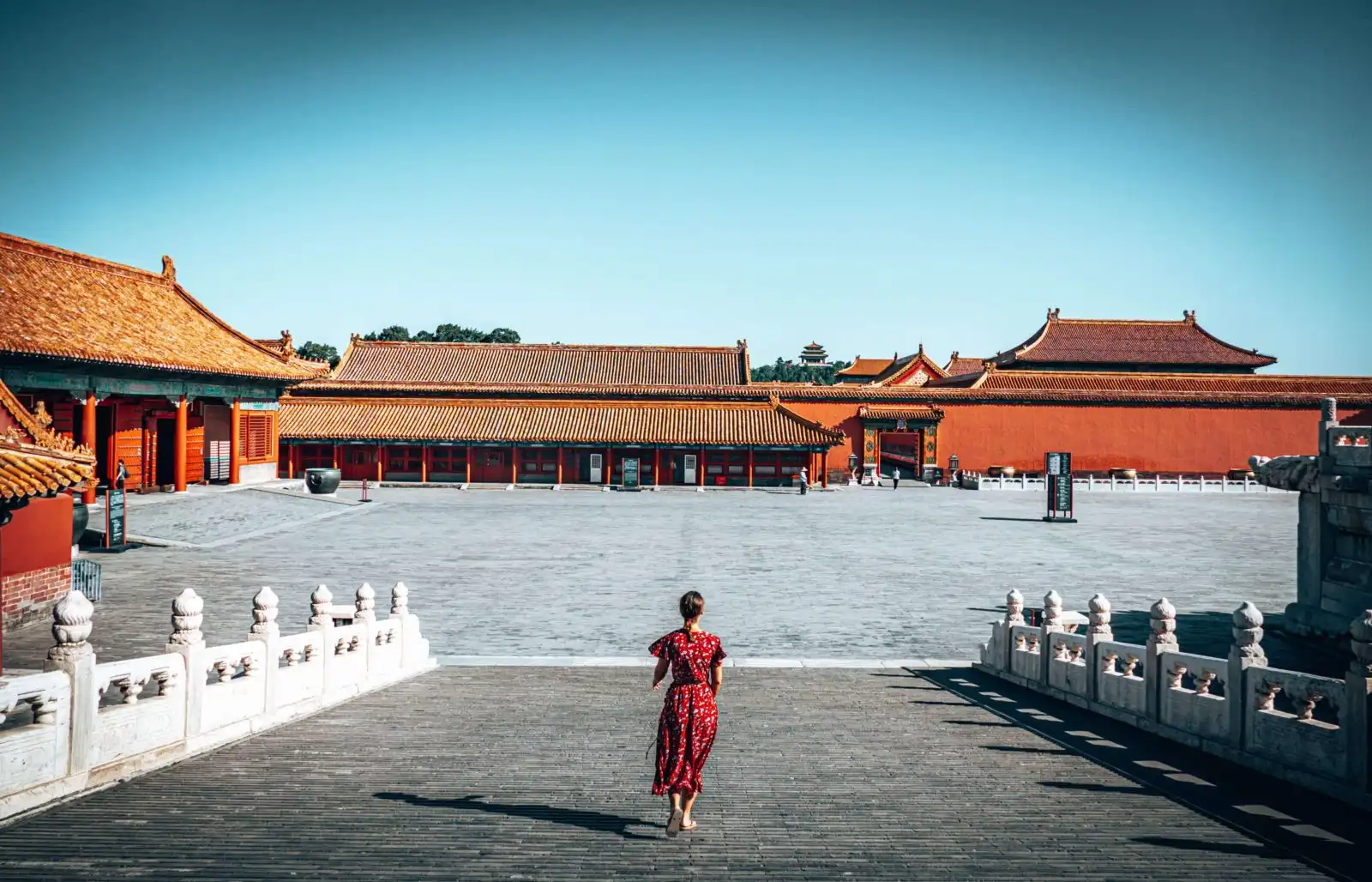
Location: 4 Jingshan Front St, Dongcheng Qu, Beijing
Open: 8.30am to 5.00pm (April to October) and 8.30am to 4.30pm (November to March) – Closed on Mondays!
Jingshan Park
You’ll have to exit the Forbidden City on the opposite side to where you entered. Which is great, as right across the road from this exit is Jingshan Park. One of the must do things in Beijing is to take a short walk up Prospect Hill, you’ll be afforded the best view back down over the Forbidden City, as well as a 360 degree view of the whole city. It’s a great way to understand the size and scale of Beijing.
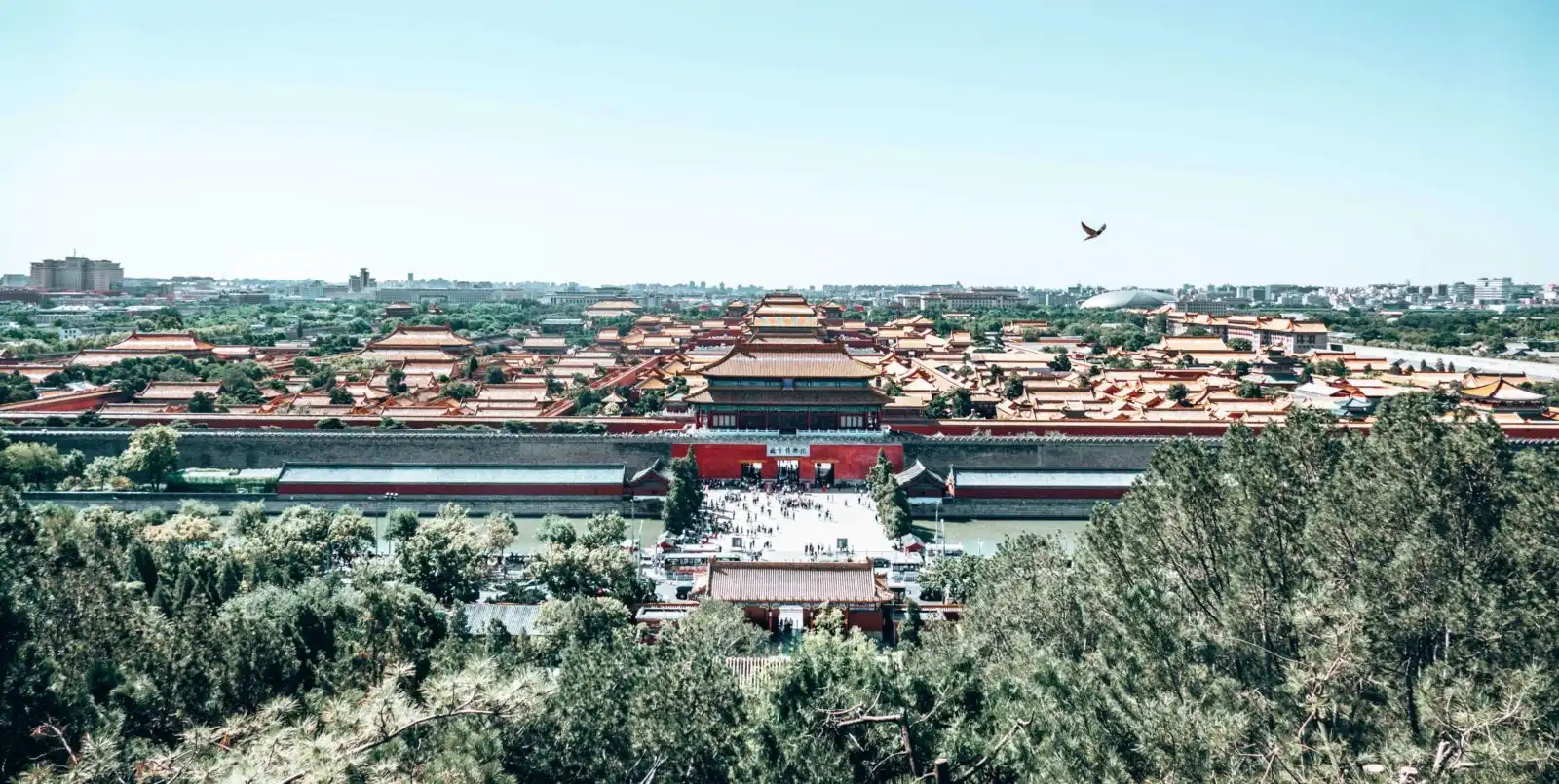
It’s only 2 RMB to enter (about 0.30 USD/0.25 GBP), so cheap as chips. It’s also open from early morning, so if you’re looking to get some shots of the Forbidden City in the morning, then it may be good to start your day with Jingshan Park.
Location: 44 Jingshan W St, Xicheng Qu, Beijing
Open: 6.00am to 10.00pm
Tiananmen Square
After heading back down Prospect Hill, it’s then worth heading back along the walls of the Forbidden City (around the outside) towards Tiananmen Square. As you may have gathered, China doesn’t do small, and this square is no exception, being one of the top 10 largest city squares in the world. The square is really impressive, obviously overlooking the Forbidden City, but also the location of the Monument to the People’s Heroes, the Great Hall of the People, the National Museum of China and the Mausoleum of Mao Zedong.
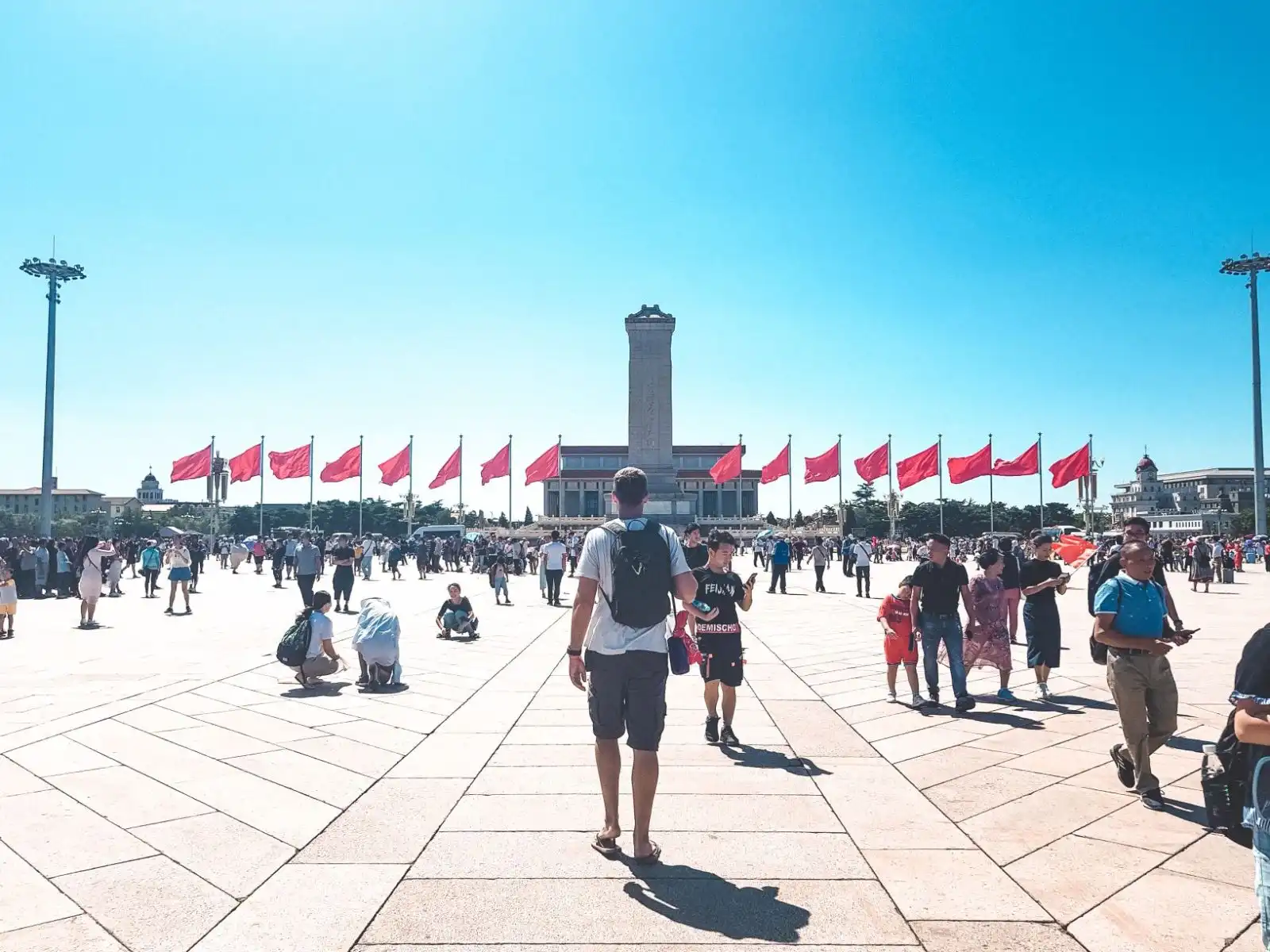
You may be pretty knackered after all the walking and not have the energy for exploring these other sites, but we just enjoyed walking around the square. Don’t forget that you’ll also need your passport to enter into Tiananmen Square!
Location: Tiananmen Square
Open: Times vary, but even though it is closed at night, you can still walk around it.
Qianmen walking street
If you continue heading south when you depart Tiananmen Square, you will eventually hit Qianmen walking street, which is a great place to rest up and grab some food or coffee. The area was redeveloped to look as it did in the 1920’s and has a number of courtyards and hutongs to explore – quite touristy, but a great area to wander.
Location: Qianmen Street, Dongcheng, Beijing
Day 2 Beijing Itinerary – Summer Palace & Temple of Heaven
Summer palace.
For the morning of Day 2 of your Beijing itinerary, we recommend heading to the UNESCO World Heritage site of the Summer Palace, the imperial gardens and palaces from the Qing Dynasty. The near 3 square kilometre park is centred around Longevity Hill and Kunming Lake. The Summer Palace is really accessible from the city, all you have to do is take Line 4 north to Xiyuan or Beigongmen Stations. The cost for the gardens is 30 RMB (4 USD/3.50 GBP) during summer months (April to October) and 20 RMB (2.75 USD/2.25 GBP) for the rest. There are several add on costs for access to different areas, but you can also purchase a combo ticket for 60 RMB/50 RMB (8.25/7.00 USD or 7.00/5.75 GBP) depending on the time of year.
If you’d like to take a guided tour why not try this one (makes it all a little easier).
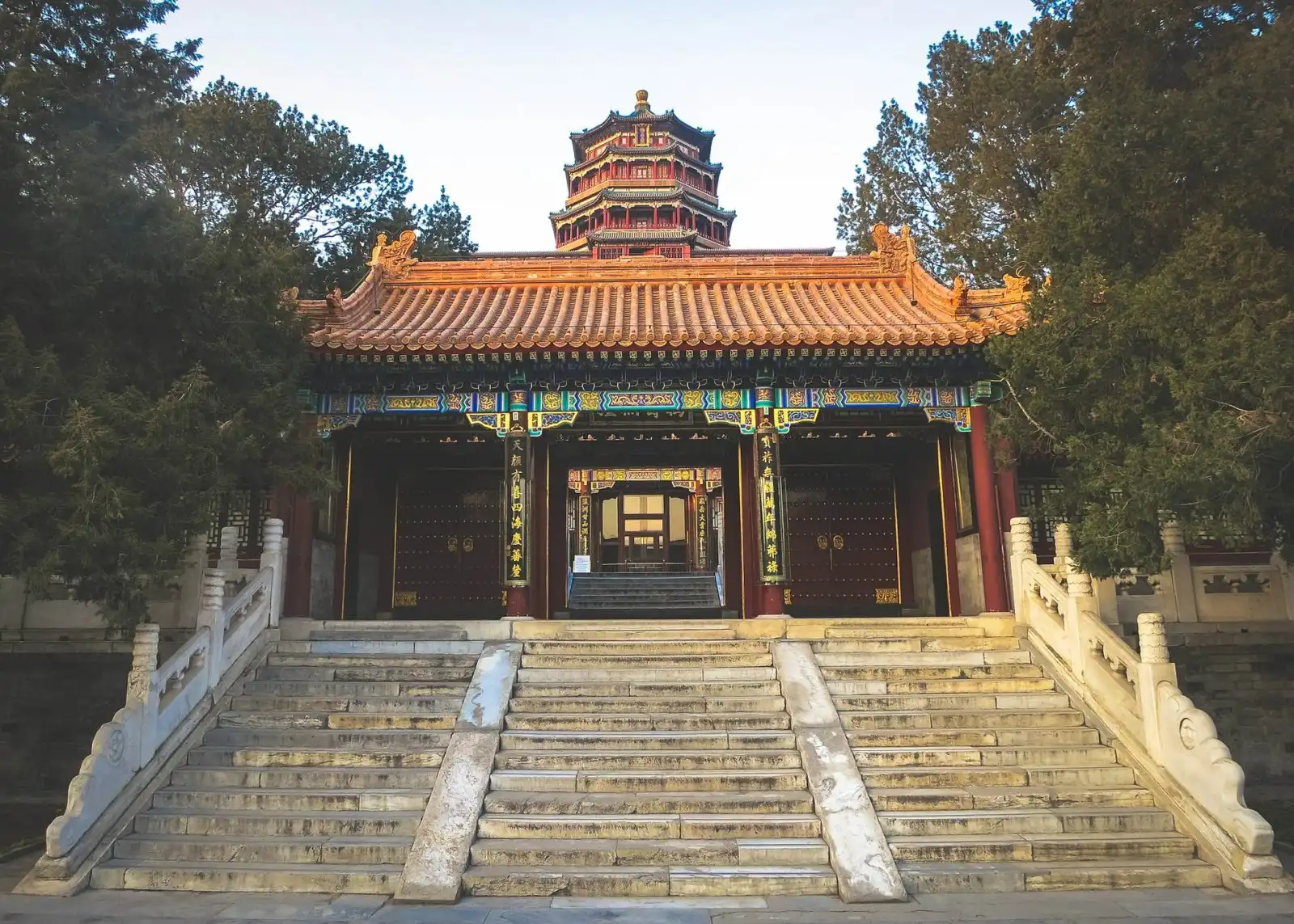
Location: 19 Xinjiangongmen Rd, Haidian Qu
Open: April to October – 6.30am to 6.00pm and November to March – 7.00am to 5.00pm
Temple of Heaven
After some well-deserved lunch (you will have done a lot of walking in the morning), jump back on Line 4, change at Xidan onto Line 1 (red) and 4 stops later at Jianguomen change onto line 5 (purple) getting off at Tiantan East Gate. As here is the location of your afternoon attraction, the Temple of Heaven.
Book your tickets for the Temple of Heaven here.
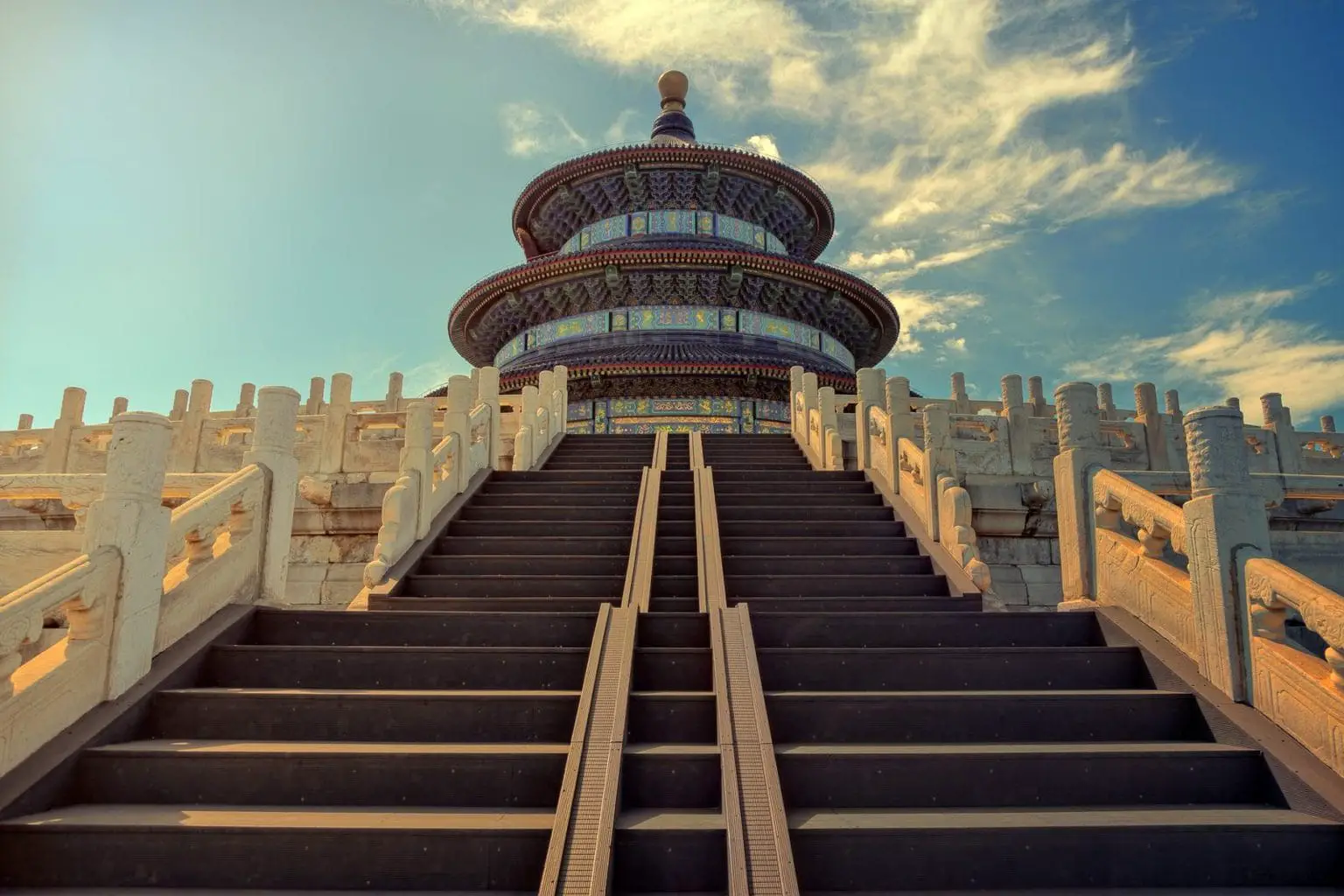
The temple complex, constructed in the early 1400s, was where emperors from the Ming and Qing Dynasties held their Heaven Worship ceremonies. It was enlarged over time and opened to the public as a park in 1988. The temple grounds cover nearly 3 kilometres and has three main areas: the Hall of Prayer for Good Harvests, a beautiful circular building that stands 38m tall; the Imperial Vault of Heaven which is a smaller version and the Circular Mound Altar, which boasts incredibly sculpted dragons.
Note: Like the Forbidden City, it can get quite busy so do be prepared for crowds, but it’s well worth the visit. As with other attractions in China, make sure you have your passport handy. Actually, it’s worth carrying it at all times.
Location: 1 Tiantan E Rd, Dongcheng Qu, Beijing
Open: 6.00am to 8.00pm daily
Day 3 Beijing Itinerary – Day trip to the Great Wall of China
The most impressive manmade thing that we have ever seen. The Great Wall of China is one of the 7 wonders of the world and when you get to see it first hand, you understand why. The wall just goes on and on – in total there is over 21,000km of wall. That’s over half the circumference of earth! It’s an incredible feat of building/engineering given that parts of it were started over 2000 years ago. And you really can’t come to Beijing without spending at least one day visiting it.
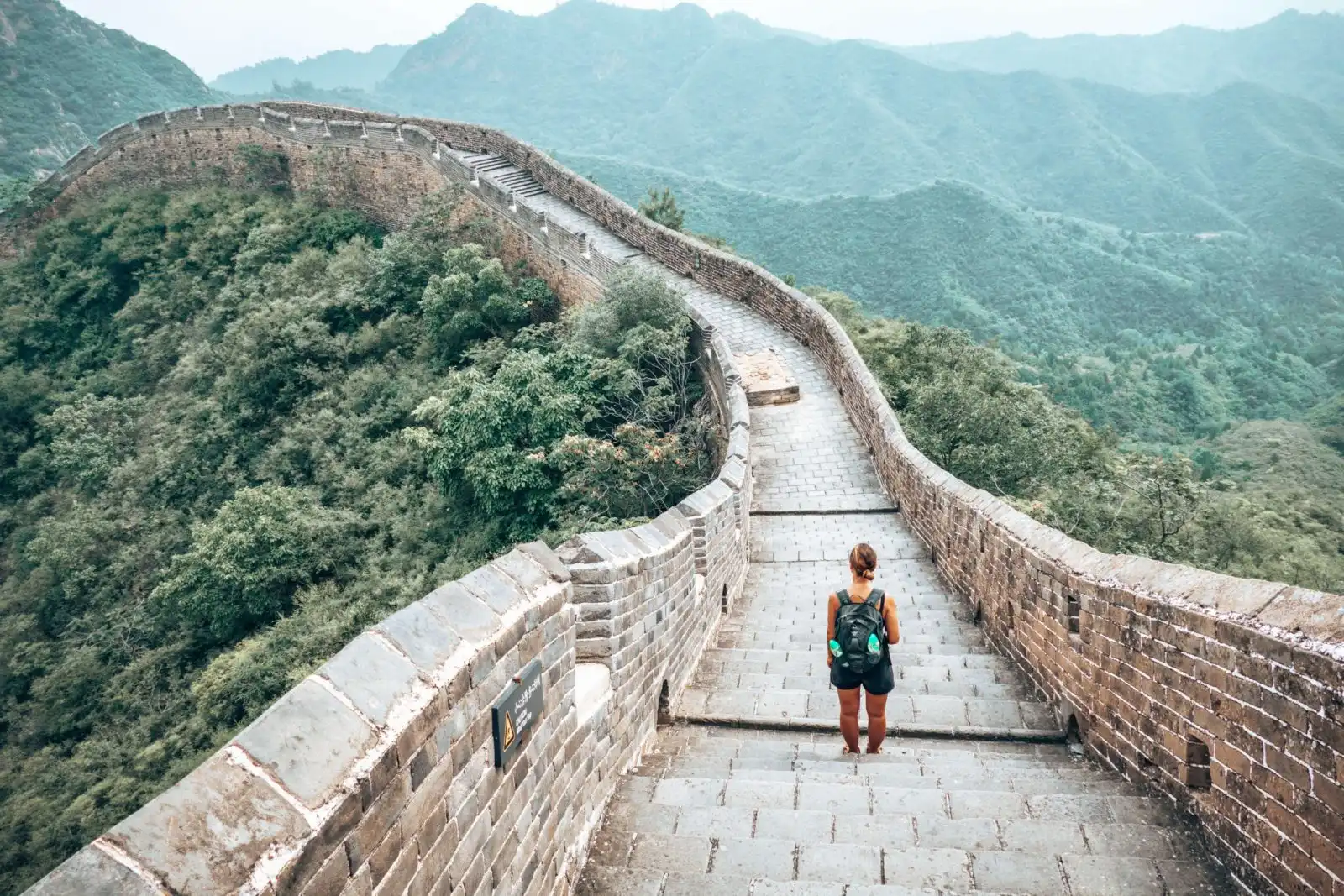
If you can only afford to spend one day on the wall as part of the Beijing itinerary, then we would suggest heading out to Simatai , via the Gubei Water Town bus and taking the cable car up to the wall. You could also head to Badaling or Mutianyu sections as part of a Great Wall Tour as these are closer to the city but, of course, busier.
Cost for entry to Simatai is 40 RMB (5.50 USD/4.50 GBP), if you take the cable car it’s 180 RMB/110 RMB, either both ways or one way (25/15 USD or 20/12.50 GBP). Entrance to the Water Town is 150 RMB (20 USD/17 GBP). A number of combo tickets are also available.
How to get to Simitai/Gubei Water Town:
Head to Dongzhimen station (Line 2 & 13), exit via B1 and then walk to the bus departure area .
Note that this is not actually at the bus station but around the corner. You’ll find a host of parked buses, and just jump onto one that has Water Town marked on the front. You only pay for your ticket when on your way and should cost 48 RMB (6.75 USD/5.50 GBP) a person.
Departures to Gubei Water Town: 9.00am, 12.00pm & 3.30pm (although good to note that they depart whenever they are full – our midday bus departed at 11am)
Return to Beijing departures: 1.00pm, 4.00pm & 9.00pm
Gubeikou & Jinshanling
However, you could definitely make this a standalone trip of its own rather than part of your Beijing itinerary, if you have more time. We were lucky enough to spend a couple of days at the Great Wall of China – and if you are a keen hiker, we highly recommend walking from Gubeikou, an unrestored section of the wall, through to Jinshanling an area which has been restored. During our time walking along the wall at Gubeikou we encountered two other families – it is deserted. Jinshanling is a little busier but still not the crazy crowds that you can experience elsewhere on the wall.
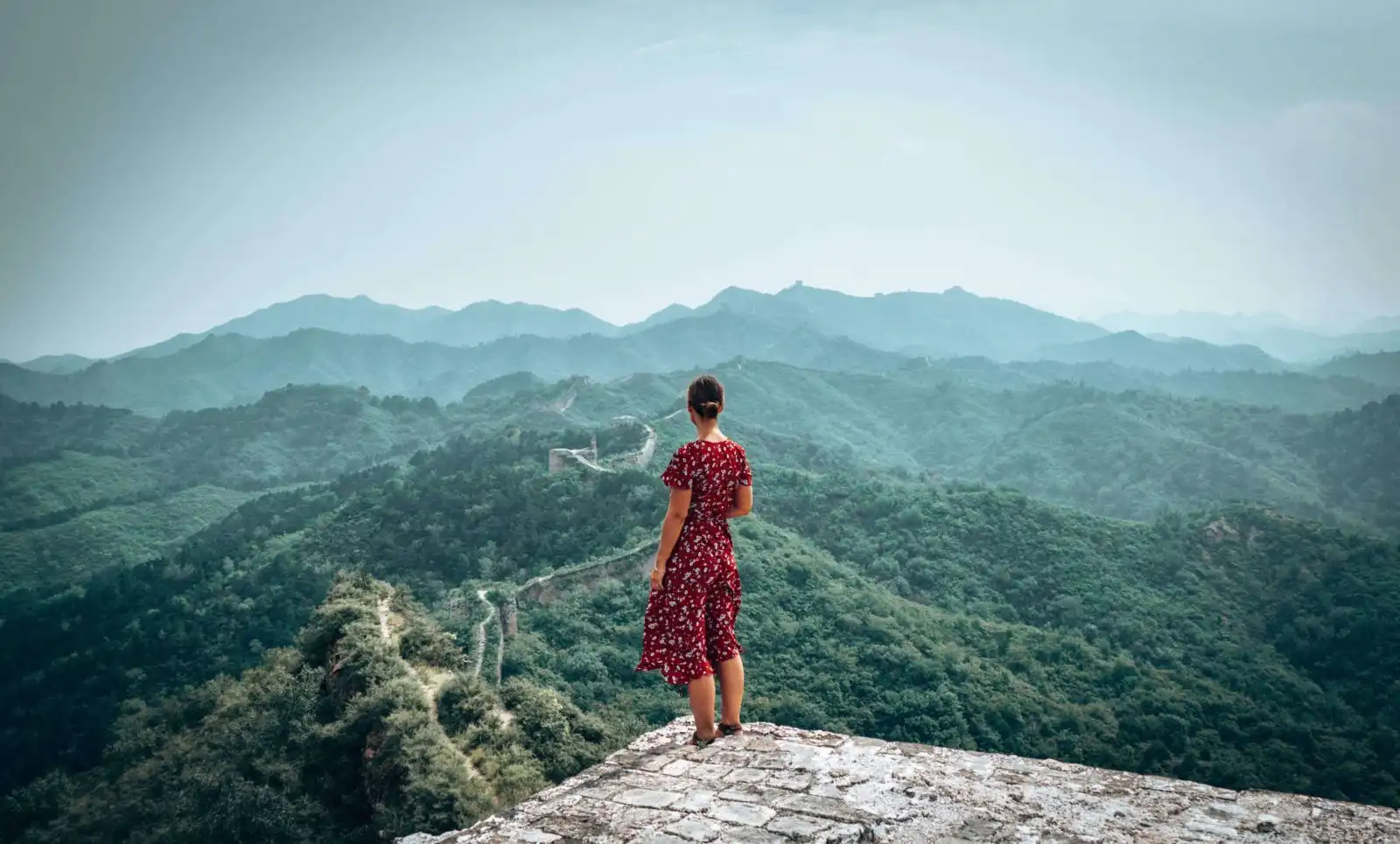
This hike takes around 6 – 8 hours depending on your speed, and getting from the end of Gubeikou to Jinshanling you have to head off the wall and walk around a large military zone. Although not very clearly marked, just follow the red marks on the rocks and you can’t get lost.
The cost for entrance at Gubeikou is 25 RMB (3.50 USD/2.80 GBP) and Jinshanling is 65 RMB per person (9 USD/7.50 GBP). Although the cost of Jinshanling is a little more, it is really worth going…
There is also an option to do a day tour to Jinshanling on its own, which would also be a great alternative.
Getting to Gubeikou/back from Jinshanling:
Exactly the same way as heading to Simitai, but at Gubei Water Town jump in a taxi which takes about 20 minutes and should cost 80 RMB (11 USD/9.20 GBP).
Accommodation option:
If you decide to stay longer at the Great Wall, we’d recommend basing yourself in Gubeikou at the Great Wall Box House . It’s a great hostel, food is good, is located about 5 minutes walk from the gate at Gubeikou and if you love cats, they have about 15!
Day 4 Beijing Itinerary – Tombs and Temples
Ming dynasty tombs.
The thirteen tombs of the Ming Dynasty are a short day trip from Beijing (around 50km), and the best way to start off your last day of your Beijing itinerary. You’ll either need to take a private car or a bus, and then walk around the massive area that houses the thirteen emperors of the Ming Dynasty, which ran between 1368 and 1644. It’s a huge area so either choose a guide or pick a few of the Ming tombs, else you’ll be there all day!
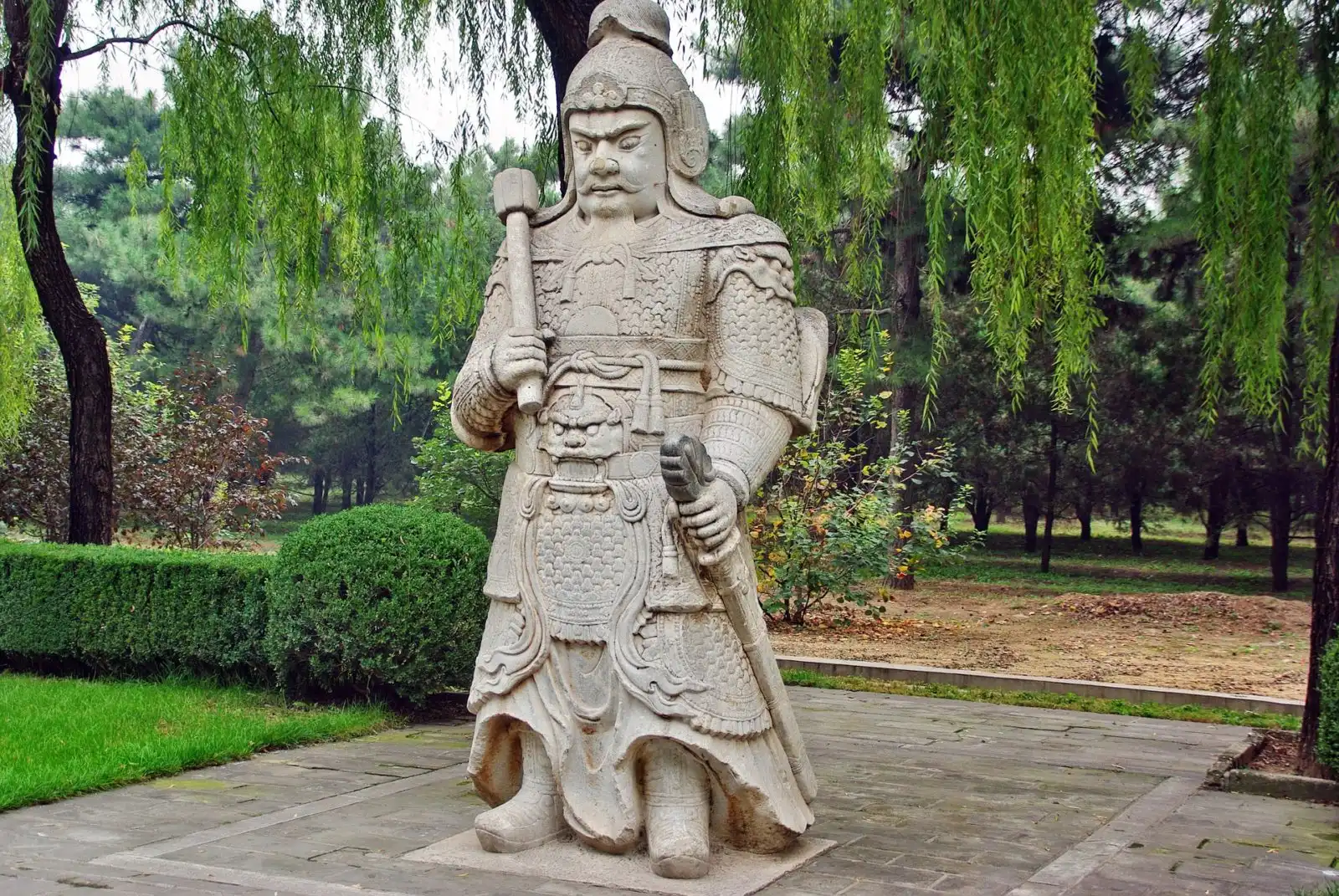
Lama Temple
A temple of many names – Lama, Yonghe, Harmony and Peace Palace – this temple in the north of Beijing is one of the most beautiful lamaseries (monastery for buddhist teachers) in all of China, and a great place to visit in Beijing. It was built in 1694 as the residence of Emperor Yongzheng but later became a lamasery in 1744, which it still operates as today.
This is a great stop after the tombs to take in a bit of peace and quiet, punctuated by the sound of monks and the smell of burning incense.
Round the corner is also the Confucius Temple, if you’re keen to see another temple in the area – it’s the second largest Confucius temple in the country.
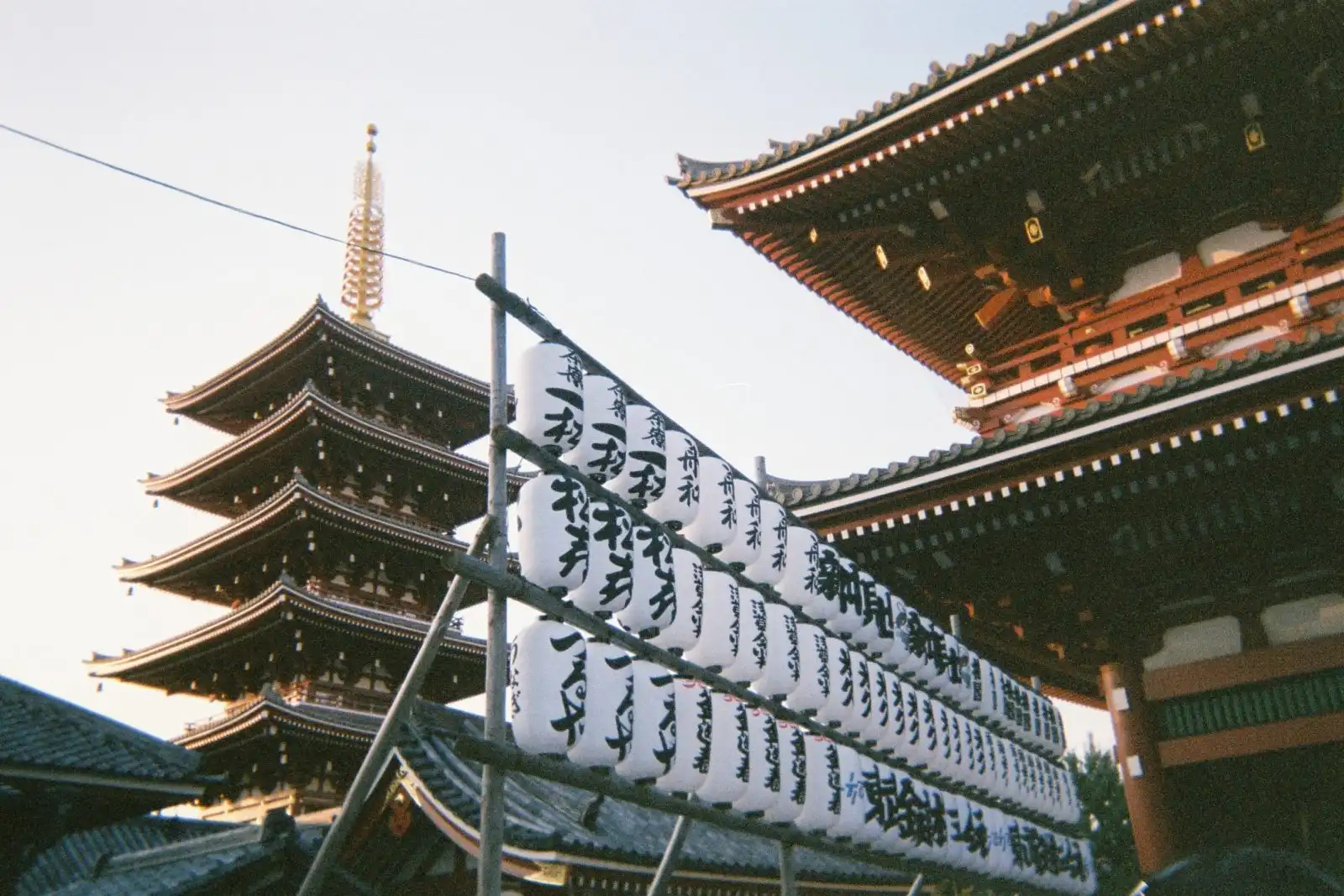
Location: 12 Yonghegong St, Dongcheng Qu, China, 100007
Open: 9.00am – 5.00pm daily
Wandering the hutongs
Loosely known as ‘neighbourhoods’ but technically a narrow street or alley, a ‘hutong’ is the best way to see real Chinese life in action, forming the heart of Beijing. Take your time walking through some of the more famous ones , or even rent a bicycle and cycle through them.
We suggest enjoying the hutongs near the Lama temple in the Yonghegong area, like Andingmen Xi Jie and Cangjinguan, and ending up at Ghost street.
Ghost Street ( Gui Jie street)
The epicentre of Beijing’s food scene, this street has literally hundreds of restaurants dotted on either side, many of them open 24 hours. It’s not a street food alley; more geared towards traditional restaurants selling everything from sizzling hotpot to the renowned Peking Duck. It’s also known for it’s spicy crayfish dishes and even bullfrogs! Our pick is Xiaolin Hotpot but just wander up and down and look out for the busier restaurants; you can’t go wrong.
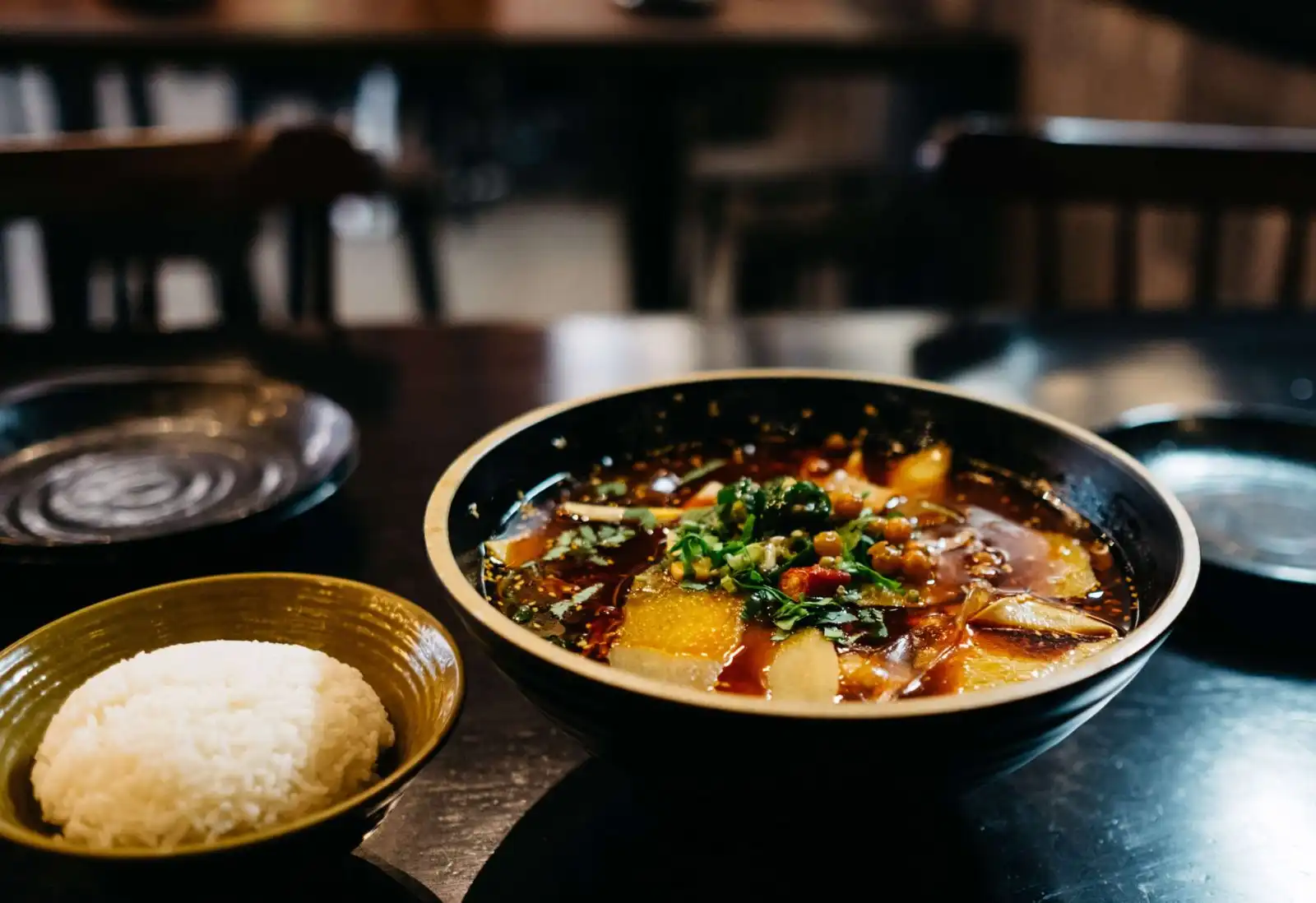
The street has nothing to do with ghouls by the way – it used to be home to coffin stores and the English name seems to have stuck around…
So those are our recommendations for your 4 days in Beijing itinerary, but let us know below in the comments if there are any other must see attractions that we have missed! And we’ve also been asked what if you only have one day in Beijing? Well just use our Day 1 itinerary and, if you still have the energy, head to the hutongs and Ghost Street for a well-deserved dinner!
Bonus – more things to see in Beijing
Need some more things to do in Beijing? Perhaps you have a 5 day Beijing itinerary to fill? Here are a few other options to add to your Beijing trip:
Olympic Park – National Stadium
A leftover from the Beijing 2008 Olympic games, the Olympic Park is more than just one stadium. In fact it’s an enormous area covering more than 200, 000 square metres and includes three areas: the Northern, Central and Southern regions. Most interesting is the ‘Birds Nest’, the gorgeous national stadium that is the main attraction in the Central region.
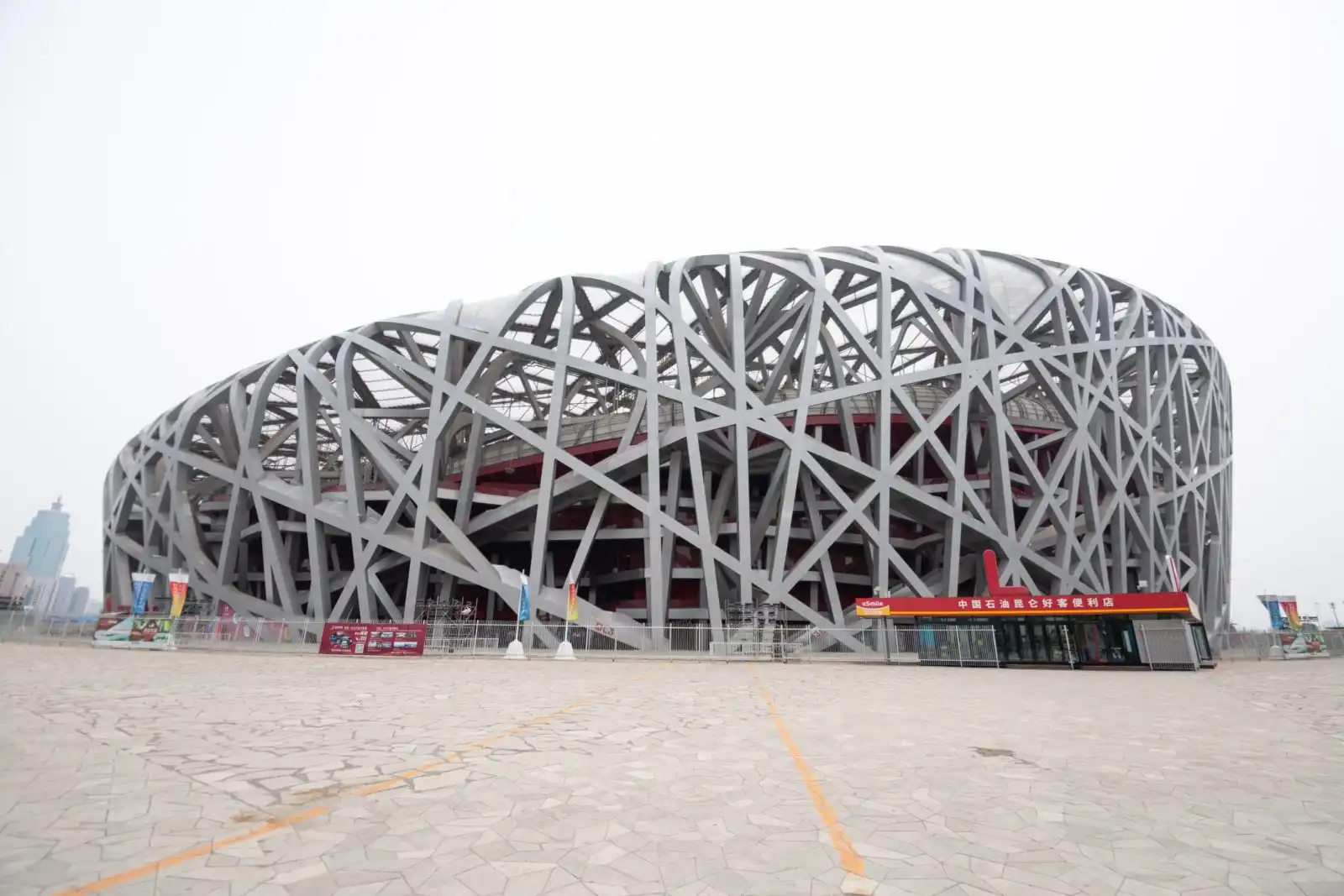
Location: 1 National Stadium S Rd, Chaoyang Qu, China
Open: 9.00am – 7.00pm daily
National Museum of China
So if you have the time when you’re done waking around Tiananmen Square, you could also head into the National Museum of China. It’s hugely impressive. In fact, did you know that it’s the second most visited art museum in the world, after Le Louvre in Paris, France?
It’s also massive. 65,000 square metres of art means you really need to pick your galleries, using the handy map you can pick up when you arrive.
Location: 16 E Chang’an Ave, Dongcheng Qu, China
Open: 9.00am – 4.30pm, closed on Mondays
Shopping – Wangfujing
Still lusting after a handbag or an authentic Chinese brand? Look no further than this bustling area which is the largest commercial shopping area in Beijing, only rivalled by the mega malls in Shanghai . Flanked by brands like Apple, Prada and Zara, you’ll find modern Western and Chinese department stores as well as international fast food chains like Mcdonalds and KFC rubbing shoulders with local food stores. This pedestrianized street also has a ‘snack street’ alongside it where you’ll find heaps of authentic Chinese stalls selling weird and wonderful foodstuffs, great as a night market if you’re keen to eat in the evening.
798 Art District
This district, known locally as Dashanzi, is home to some trendy creative spaces all housed in former military factories. You can browse around and find both new and established Chinese artists, peppered with funky boutiques, cool fashion and, of course, delicious coffee.
What’s the best place to stay in Beijing?
Luxury: Want to see the Forbidden City from above? You’ll get a killer view at the PuXuan Hotel and Spa , a gorgeous luxury hotel Beijing. It’s a stone’s throw from the Forbidden City and of course then the other sights of Tiananmen Square and the National Museum.
Mid-range : We stayed at the Park Plaza Science Park , and absolutely loved it. It’s quite affordable for this chain of hotels, has wonderful staff, a great gym and while the rooms might be a little dated, it’s got a great location and atmosphere.
Budget: Most backpackers and budgeteers choose the Peking Yard Hostel . It’s quite sociable, has great areas to relax, has wonderful activities like dumpling parties and the restaurant food is pretty good too.
Looking for more options on where to stay in Beijing? Try this list with choices for every budget .
When is the best time to go to Beijing?
The best times to visit Beijing are between March to May and September to October. The weather during that time will be cooler than June to August. And summer holidays in July & August can make some of the attractions unbearably busy! From November to February it’s winter, which obviously brings much colder weather.
Getting from Beijing International airport
So we’re assuming that you’re likely to be flying into Beijing International Airport – but just in case you haven’t yet booked your flights, check out the latest deals to Beijing on Skyscanner .
By Train: Departing from both Terminal 2 & 3 the Beijing Airport Express Train is a really great option. The trains depart every 10 minutes and it takes about 20-30 minutes and arrives into Dongzhimen station, where you can transfer onto Metro lines 2 and 13. The cost for the train is 25 RMB (3.50 USD/2.85 GBP).
By Taxi: Make sure that you head to the taxi rank outside the airport – anyone approaching you in the arrival hall will be looking to inflate prices! Ensure that you agree up front for the taxi driver to use the meter (this is where a translation app comes in very handy). The journey into the city centre should take around an hour, traffic depending, and will cost around 200-250 RMB (28-35 USD/23-28.75 GBP). So definitely the more expensive option!
Using the Beijing Metro
The Beijing Metro is the best way to get around the city. It is clean, efficient and cheap. A ticket anywhere on the metro will cost you no more than 5 RMB (0.70 USD/0.55 GBP). It’s really easy to use, but we’d recommend downloading the Metro Man app ( Google / Apple ), which is in English and gives you journey options and times along with access to maps.
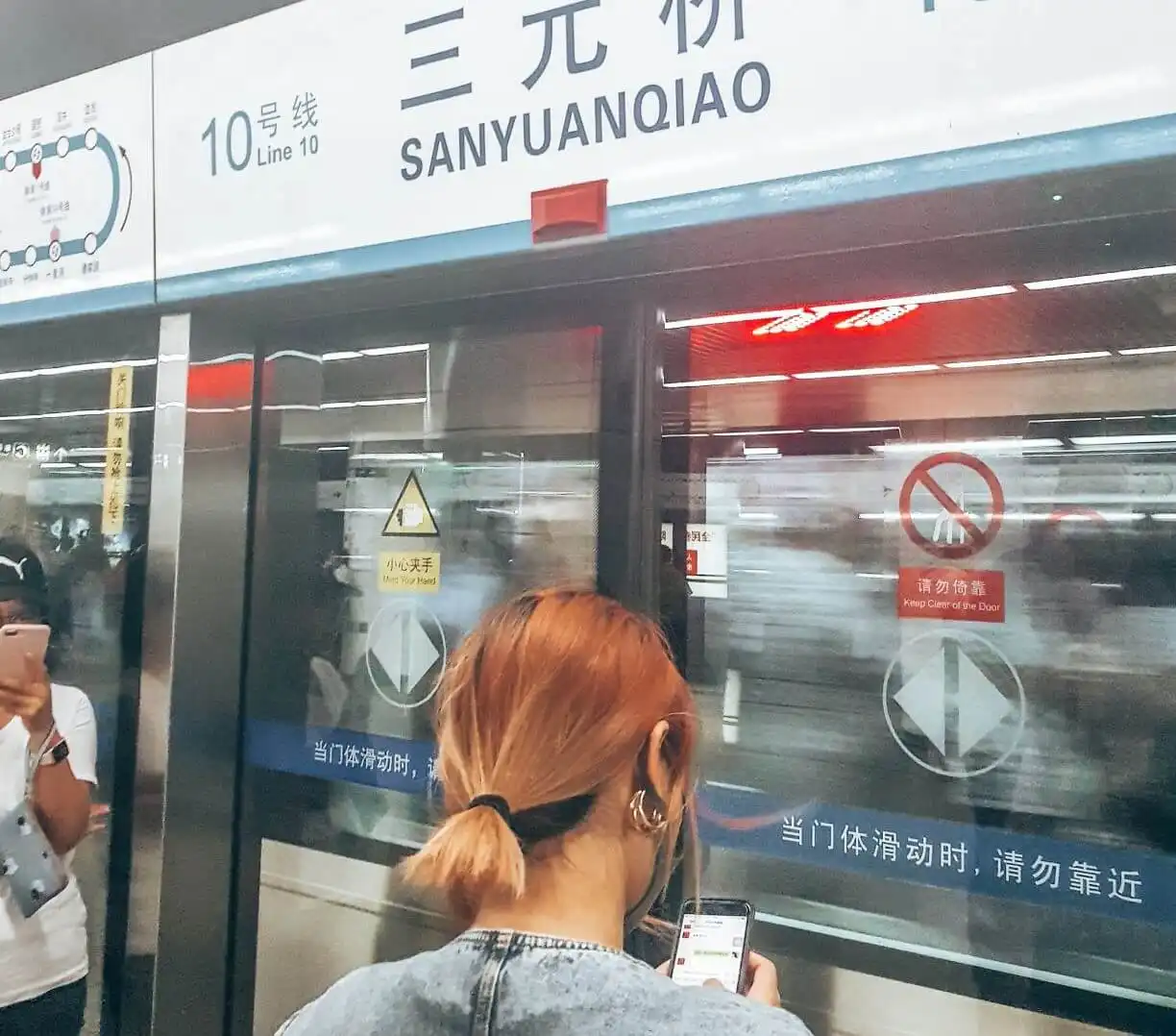
The app works all over China, so if you’re moving to other cities it’s also a real help!
Booking Train tickets in China
We are sure that this is a pretty simple process if you understand Chinese, and have a local number and ID. But for those arriving in China without these, it’s often good to book in advance through a trusted third party. We booked all our train tickets (10 of them) through China Highlights .
The service was really efficient, with a small mark up on each ticket, but they also provide email support. It’s handy to know that tickets go on sale for trains 30 days in advance and some trains can become fully booked, so just turning up at the station may not be the best idea.
What is really great is that once your tickets are booked, you’ll be able to pick them up from any station in China (it doesn’t matter what route you are taking).
The trains that we took were extremely clean, fast (we took some of the high speed/bullet trains that can go over 400km/h), on time and comfortable.
Insider tip: The train bathrooms are usually very clean but often don’t have toilet paper available, so carry some with you.
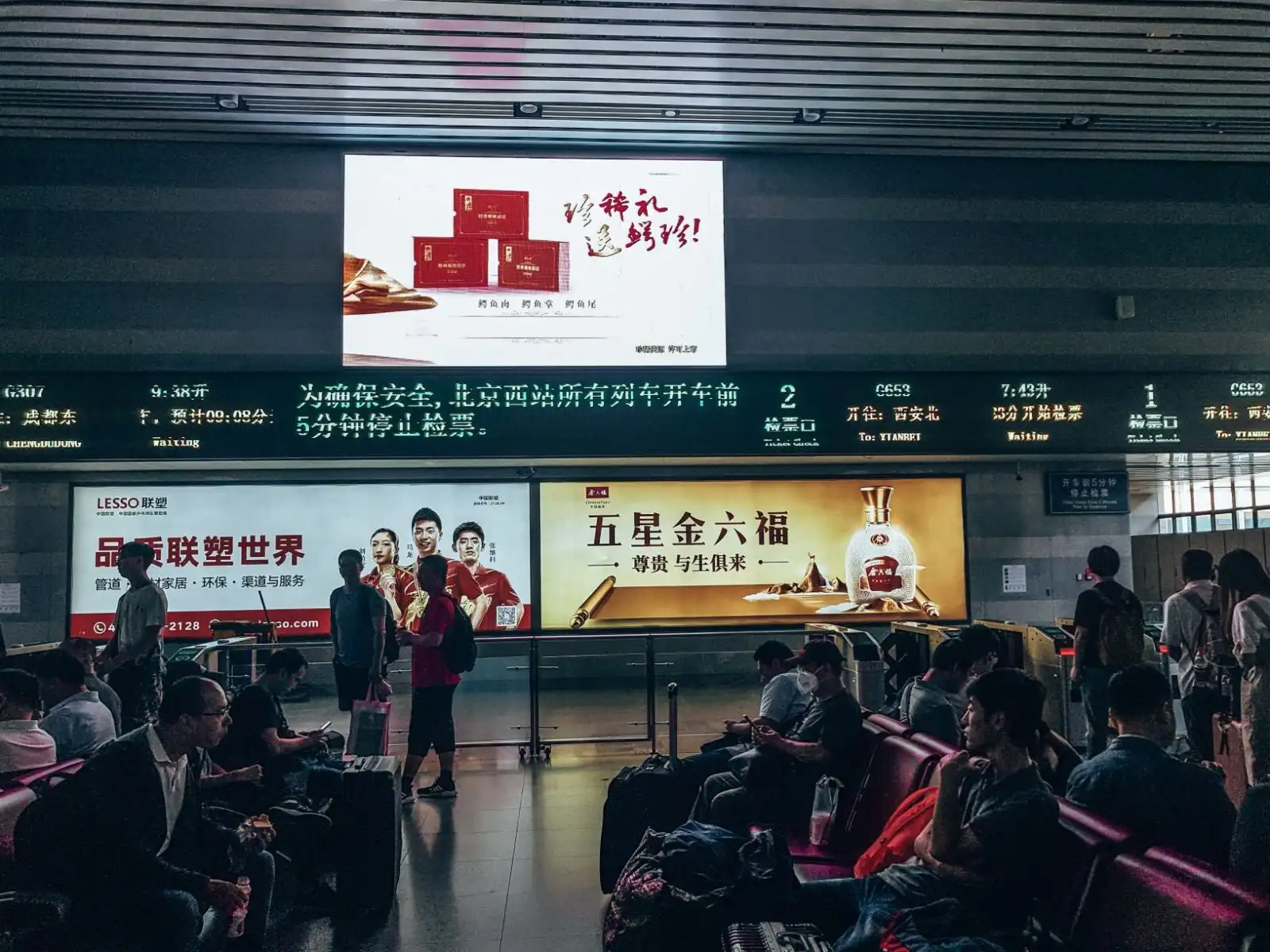
Getting a Sim Card
There are 3 main providers in China for mobile phone networks, and all offer pretty good service. However, we have been advised that China Telecom isn’t compatible with non-Chinese phones. So if you don’t have a Xiaomi or Huawei, then best go for China Unicom or China Mobile.
Ideally you should get your sim card at the airport but, if not, there are stores all over town, and generally the store assistants are really helpful in sorting out a sim card for you. But don’t forget that you need to take your passport with you to register. The cost for a sim is about 100 RMB (14 USD/ 11.50 GBP) for 30 days 10GB data, 300 minutes local calls and a bunch of SMS’s.
Must-have apps
Looking for some China travel tips ? We’ve put together a list of the must-have Apps for you to download before heading to China for four days in Beijing! We even have a separate full article with an in-depth guides to what apps you need . Aren’t we helpful? ?
The most important app to install before you head to China is a VPN, we’ve experienced using both ExpressVPN and NordVPN and although both work well, we’d say that Express just pips it in terms of quality of access that you get. Without a VPN you won’t be able to access any Google email, Google maps, Facebook, WhatsApp, Instagram… you get the picture.
Click here to get ExpressVPN – it’s the world’s number 1 VPN and we personally recommend it for your trip to China!
Although Google Maps is great, our favourite route planner is Maps.me . Download offline maps, and this app provides you with your positioning throughout China.
As mentioned in the Using the Beijing metro section, the metro is amazing to use, subway stations are super clean. It’s cheap and reliable. And to help you navigate it, you must install Metro Man ( Google / Apple ) to help you get around town.
As long as you have the VPN turned on, you’ll still be able to access Facebook, WhatsApp and Instagram, although these can be a bit slow. However, it’s definitely worth also downloading WeChat ( Google / Apple ). China’s answer to WhatsApp will allow you to stay in contact with people you meet in China plus you could even make payments through it, if you link your credit card.
Travel & Accommodation
So Uber (or Grab) don’t work in China, but they do have their own version – DIDI which basically works the same. If you get it from the US Apple store or the APK of the right version it’s available in English! Pretty handy…
And if you like to store all your accommodation bookings, train tickets, airplane trips into one place, then check out Tripit . This nifty little app automatically pulls in your bookings from email confirmations and then puts it all together in one trip itinerary. Win.
If you’re looking for the best accommodation options, then Agoda has to be the one for you. It has far more options than Booking.com in China.
Our favourite money planning app – Trabee Pocket – allows you to add in everything that you spend in a day, then shows you how you are doing on your daily budget. A really handy app to make sure you’re not blowing all your budget on the first couple of days…
Currency Converter
So you probably want to figure out what you’re spending along the way. We always find that XE is the perfect tool for a rough estimate on costs.
Translation
One of the most handy tools for travelling in Beijing is having a great translation app. English isn’t widely spoken and having Google Translate in your pocket will help you out immensely. Whether it’s directions, ordering the right dinner or checking something with a shop assistant before you make that purchase – this is a must.
Recommended: Hiking in Zhangjiajie National Forest – a must on any China trip.
What camera equipment and other gear do we use?
We’re living proof that you don’t need the most expensive gear to travel the world and take good photos. Here are some of our must have items that make it into the packing list for all our travels.
- Main Camera: Panasonic Lumix FZ1000
- Drone: DJI Mavic Air – Fly More Combo
- GoPro: Hero 7 Black
- GoPro Dive Case: Go Pro Housing
- GoPro Case: Smatree GoPro Carry Case – Small
- Packing Cubes: Eagle Creek Packing case
- Backpack: Osprey Farpoint 70
- Powerbank: Anker Powercore
- Phone: Xiaomi Mi 9
- Hard drive: Transcend Slim Storejet 2TB
- Laptop: Lenovo IdeaPad 720s
- Headphones: Bose Quiet Comfort 35
- Wifi Hotspot: GlocalMe G4
Useful Phrases
- Hello – nǐ hǎo
- Thank you – xiè xie
- You’re welcome – bú yòng xiè
- No – méiyǒu
- How are you? – nǐ hǎo ma?
- Good – hǎo de
- Not Good – bù hǎo
- I’m sorry – duì bu qǐ
Frequently Asked Questions
How bad is pickpocketing in Beijing?
Like any other major international city, Beijing does suffer from a bit of petty crime, particularly pickpocketing. Our advice is to use common sense: keep your belongings tucked away, if possible use anti-theft handbag or backpack, and don’t flash cash, jewellery or mobile phones unnecessarily. If you don’t look like an easy target, you won’t become one.
Is Beijing an undeveloped city?
Absolutely not. Beijing is one of the most modern cities in Asia with sleek infrastructure, cutting-edge technology and all the amenities you would expect of a world-class city. Beijing travel is particularly modern with the trains, trams and infrastructure some of the best we’ve ever encountered.
Where can I get the best view of Beijing city?
Most rooftop bars in Beijing will give you a great view of the skyline and city laid out before you. Highly recommended is the 18th floor of the CCTV Tower where you can see this on a rotating platform if you just purchase a few drinks. In the day time, you could of course head to Jinshan Park for practically free views.
What did you think of our 4 day itinerary for Beijing? Let us know about your trip to Beijing in the comments!
Want to save it for later? Why not pin it…

Leave a Reply Cancel reply
Your email address will not be published. Required fields are marked *
Website URL
You are both doing such a amazing job in reporting on all these places and providing such handy tips to make it easier for the traveler. Also, the photos are awesome. I have been telling everyone I know about it and a couple of people said, “how do they have the time to write all of this up and provide such detail”. My answer is – “they’re young and don’t need too much sleep”. I also saw the adorable pandas photos and videos that you sent to your mother. Now I’m starting to think about taking some of these trips. Take care and travel safe. Love, Vicki P.S. Marianne mentioned that you have not mentioned anything about security or cautions about certain areas or times when you shouldn’t go places. To me appears that security hasn’t been an issue– is that true?
Hi Vicki, thanks so much for your positive feedback! We’re really glad that you think that our writing and the tips we are providing are useful. We’ve seen quite a bit of traffic from the USA, so thank you also for helping us to up our numbers there :).
We definitely don’t feel that young at times, like after 3 days hiking in the Zhangjiajie National Forest which we have just done (our bodies are broken!)- but it was so worth it. We actually find that the work on the website is our downtime from travelling. That may sound a bit strange but it’s sometimes good to have time on the computer and escape the travels!
The Pandas in Chengdu are wonderful. We’ll have to write a blog post on that in the near future, as they were amazing and a real bucklist moment for us. In fact, China has been one of those completely unexpected places that has provided us so many highlights. There is so much to explore here, but so little time. Our favourte has to be hiking the Great Wall though, which without doubt is the most impressive manmade building we have ever seen.
You can let Marianne know that although we are continually being cautious, and have to keep your wits about you, that we have not experienced anything in our travels to be concerned about on the security front. Overall people have been amazingly hospitable and helpful – tourism is so important to many parts of Asia that I think you’re generally safer as a traveller/tourist than many other places.
Follow on Pinterest
Where are we now?
London, England
Our Favourite Post
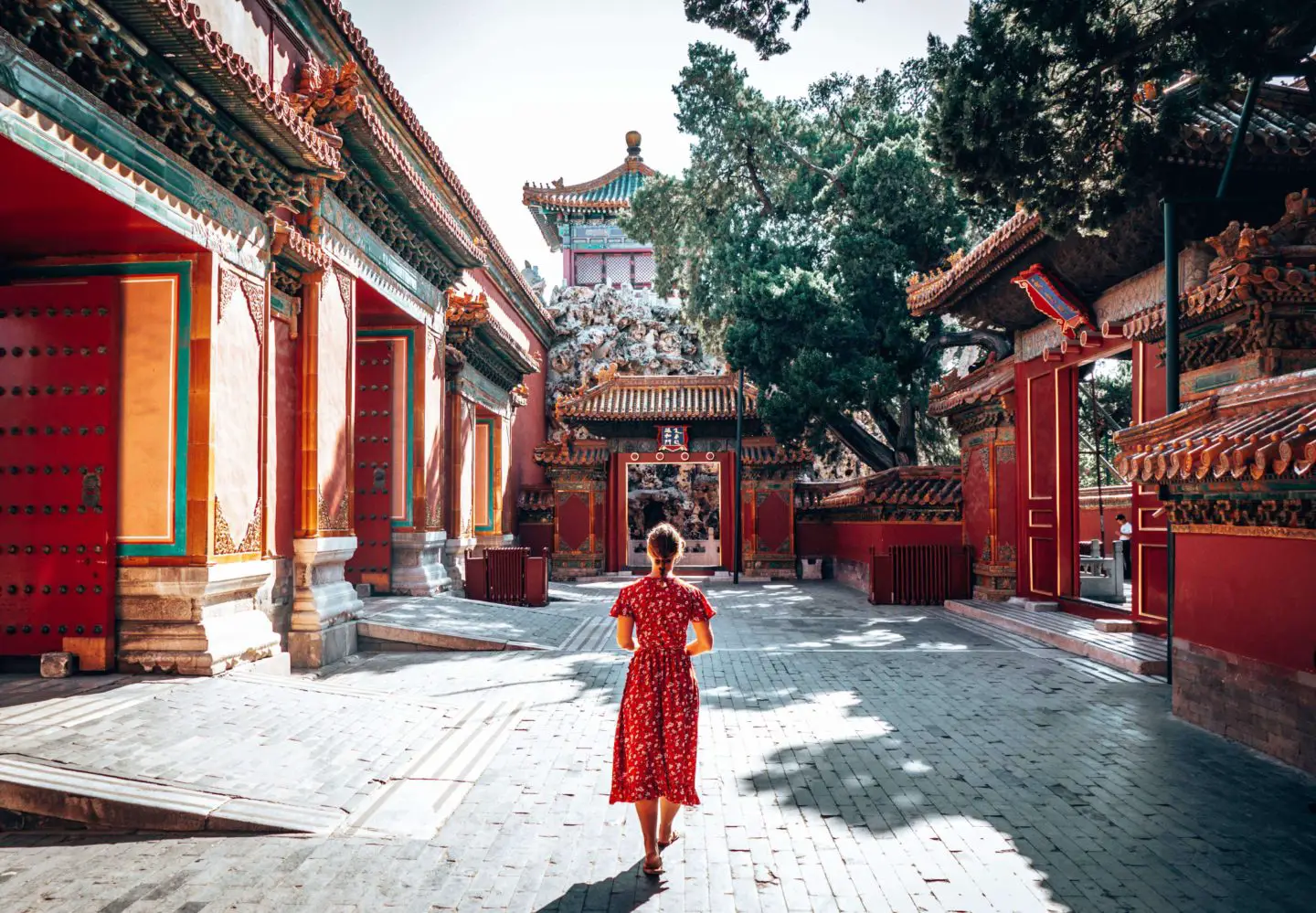
Beijing is massive. Third largest city in the world kind of massive. So how do you fit all that you need to see in the ancient city, formerly known as Peking? Well, we hope that…

Photo by Diem Nhi Nguyen
< Destinations
Updated, Feb 2024
One of the fastest growing economy, China is well known in many ways in the world. From Chinese dynasties to Great Wall and terracotta warriors among few notable attractions. To high rise buildings of financial capital Shanghai. China has grown so much, and there are many metro cities which eventually increased tourism in the country too.
China is fourth largest country in the world and has its borders with Russia and Mongolia in the north, Kazakhstan, Kyrgyzstan, Tajikistan, Afghanistan, India, Nepal and Bhutan in the West. Myanmar, Laos and Vietnam in the south and North Korea in the east. China is also neighbor of Japan and Taiwan across East China Sea and South Korea across Yellow Sea.
Capital city is Beijing, which also hosted 2008 summer Olympics. Most of the Chinese population lives around eastern part of the country. Other than Beijing and Shanghai, Guangzhou, Shenzhen, Chongqing, Tianjin, Wuhan, and also Hong Kong are among the biggest of cities administrated by China. China has diverse natural beauty.

Beijing is a city steeped in history and culture. See the Great Wall, Forbidden City, and Temple of Heaven. Enjoy traditional cuisine, visit the Summer Palace, and experience modern landmarks like the Bird’s Nest stadium and CCTV headquarters.

Hong Kong is a vibrant city with a unique blend of Eastern and Western culture. Visit Victoria Peak, the Big Buddha, and the markets of Mong Kok. Enjoy delicious food, world-class shopping, and exciting nightlife. Experience the stunning skyline and take a ride on the Star Ferry.

Shanghai is a modern metropolis with a rich history. Visit the Bund, Yu Garden, and Shanghai Tower. Enjoy local cuisine, explore the French Concession, and see performances at the Shanghai Opera House.

Xian is a historic city in China. See the Terracotta Warriors, the ancient city wall, and the Muslim Quarter. Enjoy local cuisine, visit temples and museums, and take in the city’s rich culture.
Population: 1.4 billion
Currency: Chinese Yuan Renminbi(CNY), ¥
Language: Chinese Standard & Mandarin
Religion: No religion & Atheist 60%, Regional (Taoist or Confucian) 25%, Buddhists and Others 15%
Time zone: UTC+8, China Standard Time(CST)
Electricity and Plug: Type A, C & I , AC, 220 volts, 50 Hz.
Emergency no: Police 110 Fire 119 Ambulance 120
Country code: 0086 or +86
guest blog 1

Top 10 Attractions in China

Best Time to Visit China: Your Seasonal Exploration Guide

7 day travel itinerary for China, Beijing-Xi’an-Shanghai

7 Best cities to visit in China
Privacy overview.

- ไลน์ : @china4trip
- เมืองกวางโจว
- เมืองเซินเจิ้น
- บริการของเรา
- เรื่องน่ารู้ของแม่ค้าจีน
- สินค้าเมืองกวางโจว
- สินค้าเมืองอี้อู
- ทัวร์ซื้อสินค้าสต๊อกที่จีน
- เกี่ยวกับเรา
- 02-070-5243
- [email protected]
รู้จักกับทัวร์แม่ค้าจีนของเรา Chinatrip4friend

- Facebook icon facebook
- Twitter icon twitter
- LINE icon line
China4trip บริการหลัก พาไปสั่งของที่จีนถึงแหล่งต้นตอที่จีน พาเข้าโรงงานจีน สั่งผลิตตามแบบที่ต้องการ One Stop Service พร้อมขนส่งนำเข้าจากจีนมาไทย พาไปสั่งของที่จีน หาล่ามสั่งของจีน แบบที่ไม่ต้องเดินทางไปจีนเอง
China4trip เป็นทัวร์แม่ค้าจีน รูปแบบใหม่เจ้าแรก ที่ฉีกแนวจากทัวร์ดั้งเดิมที่คิดเหมาหัว ราคาเดียวตายตัวเพื่อตอบสนองรูปแบบการเดินทางที่เปลี่ยนไป โดยเฉพาะตั๋วเครื่องบิน ที่นับวันจะมีแต่ถูกลงจุดนี้ จะช่วยให้ลูกค้า Save ค่าใช้จ่ายในการเดินทาง ด้วยการจองตั๋วเครื่องบินเอง และยังเป็นการเริ่มต้นลงมือทำด้วยตัวเองตั้งแต่ขั้นแรกอีกด้วย
วิธีการเดินทางมี 2 แบบ
ทัวร์แม่ค้าจีน ทริปเฉพาะกิจ.
- สิ่งที่ได้จากทริปของเรา
รีวิวตลาดจีนกับการเดินทางครั้งที่ผ่านมา
กรุ๊ปพิเศษปี 2014 ดูงานเสื้อผ้าโล๊ะสต๊อกที่จีน.
พาซื้อของจีน เหมาะสำหรับคนที่อยากเริ่มต้นทำธุรกิจ มองหาลู่ทางศึกษา เรียนรู้วิธีทำธุรกิจกับคนจีน และนำเข้าสินค้าจากจีนด้วยตัวเอง
….แบบจ่ายเองตามจริง……จ่ายเฉพาะสิ่งที่คุณใช้…
ปัญหาที่เจอบ่อยกับลูกค้ากรุ๊ปทัวร์แม่ค้า : สั่งของยังไม่เสร็จ ทำไมต้องรีบกลับโรงแรม เพราะว่าค่าอาหารเย็นรวมอยู่ในค่าใช้จ่ายเหมาหัวแล้ว (ไม่กินได้ไง จ่ายไปแล้ว)
ปัญหาเหล่านี้จะหมดไป ถ้าเดินทางกับเรา ChinAtrip4friend
เพราะเราคือทัวร์เดียว ที่ทำให้ …. ทุกการใช้จ่ายของคุณทั้ง โรงแรม ล่าม แม้กระทั่งตั๋วเครื่องบิน “คุณจ่ายเองกับมือ”
เริ่มต้นปี 2012 ทัวร์แม่ค้าจีนของเรา เหมาะสำหรับคนที่อยากเริ่มต้นทำธุรกิจกับประเทศจีน มองหาลู่ทางศึกษา เรียนรู้วิธีทำธุรกิจ และนำเข้า สินค้าจากจีนด้วยตัวเอง ไม่ว่าจะเป็น ทัวร์แม่ค้าที่กวางโจว ทัวร์โรงงานเมืองอี้อู ทัวร์โรงงานเมืองจงซาน ทัวร์โรงงานเฟอร์นิเจอร์เมืองฝอซานต้องการแบบไหน เราจัดให้ได้
เราบอกในสิ่งที่คุณควรต้องรู้ก่อนไปจีนไปจีนครั้งถัดไป คุณสามารถทำทุกอย่างด้วยตนเองได้
เราพาแม่ค้าไทยไปสั่งของที่จีน ดูโรงงานจีน แบบมืออาชีพ สอนการทำธุรกิจกับคนจีน โดยผู้เชี่ยวชาญซึ่งมีประสบการณ์ตรงในการทำธุรกิจกับจีน มากกว่า 15 ปี หากคุณกำลังอยากเริ่มต้นทำธุรกิจ อยากหาสินค้ามาขาย แต่ยังไม่รู้ว่าจะขาย อะไรดี?? ก็สามารถมาลงทัวร์แม่ค้าได้ เพื่อไปดูโรงงาน ไปสำรวจตลาดค้าส่งจริง กับเราก่อนได้ ทั้งยังเป็นการไปหาไอ เดียว่าจะนำสินค้าอะไรมาขายอีกด้วยเปิดทุกกลเม็ด แบบไม่มีเม้ม มั่นใจได้ว่า ไปจีนครั้งถัดไป คุณสามารถทำทุกอย่าง ด้วยตนเองได้
ChinAtrip4friend เป็นทัวร์แม่ค้า รูปแบบใหม่เจ้าแรก ที่ฉีกแนวจากทัวร์ดั้งเดิมที่คิดเหมาหัว ราคาเดียว ตายตัวเพื่อตอบสนองรูปแบบการเดินทางที่เปลี่ยนไป โดยเฉพาะตั๋วเครื่องบิน ที่นับวันจะมีแต่ถูกลง
จุดนี้ จะช่วยให้ลูกค้า Save ค่าใช้จ่ายในการเดินทาง ด้วยการจองตั๋วเครื่องบินเองและยังเป็นการเริ่มต้นลงมือทำด้วยตัวเองตั้งแต่ขั้นแรกอีกด้วย
1) เดินทางพร้อมทีมงาน (ตามรอบวันที่กำหนด)
– ลูกค้าจองตั๋วเครื่องบินได้เอง (จองให้ตรงตามวันที่กำหนดได้เลย)
– มีทีมงานดูแลตลอดการเดินทาง ตั้งแต่ไทย จนถึง จีน และให้คำปรึกษาตลอดทริปการเดินทาง
– สอนวิธีการเดินทางจากสนามบิน ไป โรงแรม เป็นขั้นตอน (ครั้งต่อไป สบายเลย มาเองได้ชัวร์)
2) เดินทางแบบส่วนตัว แบบไม่ต้องง้อทัวร์ (ลูกค้าเลือกวันเดินทางเอง)
– ลูกค้ากำหนดวันเดินทางเองได้
– จองตั๋วเครื่องบินเอง
– รีวิวการเดินทางอย่างละเอียด จากสนามบิน ไป โรงแรม
– ก่อนเดินทาง ลูกค้าจะได้คุยกับล่ามเพื่อ กำหนดรูปแบบการเดินทางในจีน (เลือกชมตลาดได้มากกว่า 1ตลาดใน1วัน)
– วันเดินทาง จะมีทีมงานเดินทางไปส่งที่สนามบิน (สุวรรณภูมิ หรือ ดอนเมือง)
**เสื้อผ้าจากจีนยกกระสอบ โล๊ะสต๊อก กับ ค่าขนส่งจากจีนมาไทย 23 บาทต่อกิโล** ลูกค้าขายเสื้อผ้าเกรดประตูน้ำกรุงเทพ ประตูน้ำขอนแก่น แพลตตินั่ม อินทรา โบ๊เบ๊อุดร รวมถึงลูกค้าที่ขายออนไลน์ ราคาถูกกว่า…..แน่นอน ซื้อมาขายปลีก ขายส่ง ได้ทั้งนั้น ถูกจริงๆ
ทาง”ChinAtrip4friend” จัดทำเพื่อพาลูกค้าที่สนใจทำธุรกิจที่จีน พาไปสั่งซื้อของที่จีน
ลูกค้าเป็นคนกำหนดเองได้ :หมดกังวลกับค่าใช้จ่ายที่มองไม่เห็น
เพราะคุณหยิบจ่ายมันด้วยตัวของคุณเอง เมื่อคุณตัดสินใจว่าอยากจะทำธุรกิจแล้ว ทำไมรอบแรกถึงเลือกไปกับเรา ” ChinAtrip4friend “nเดินทางง่ายนิดเดียว
ไปจีนสั่งของเองได้แบบไม่ต้องง้อทัวร์
- สอนเทคนิคการเดินทางในกวางโจว การนำเข้า
- การติดต่อการค้าขายกับคนจีน จากประสบการณ์ตรง(ช่วงสถานการณ์ปกตินำเข้าได้ทุกชนิด)
- พร้อมแบ่งปันความรู้ในการทำธุรกิจที่ไม่เหมือนใคร
- จากประสบการณ์ “พาไปซื้อของที่จีน” มากกว่า 15 ปี
“จ่ายเองตามจริง” ค่าตั๋ว ค่าโรงแรม ค่าเดินทางเท่าไรไม่ต้องกังวล ไม่ได้บวกเพิ่ม “ไปกับเรา หมดกังวล…!!!! ว่าถ้าต่อไป ไปกันเอง จะทำยังไง ไปไหนต้องเหมารถหรือ ต้องไปกับคนอื่นตลอดเวลาหรอ????เราพร้อมแนะนำ วิธีการสั่งซื้อและเดินทางแบบที่คนท้องถิ่นเค้าทำกัน ประหยัดต้นทุนกว่า 40-50% และได้ผลไม่แตกต่างแน่นอน
ไม่ว่าจะทำอะไร อาชีพอะไรก็ตาม ณ วันนึงคนเราต้องเรียนรู้ด้วยตัวเอง ทำไมไม่เริ่มตั้งแต่วันนี้ล่ะ….??? สอนครบพร้อมรีวิวการเดินทาง จากประสบการณ์การตรงมากกว่า15ปี เรียนรู้ข้อดีและข้อผิดพลาดมาหมดแล้ว

เหตุผลที่เลือกแอร์เอเชีย …. ในทริปแม่ค้าเดินทางพร้อมทีมงาน
- เสียเวลาน้อยที่สุด
- ลูกค้าไม่ว่าอยู่จังหวัดไหน ก็สามารถจองเองได้
ที่สำคัญ!!!! ไปถึง กลับดึก ทำให้ลูกค้าที่ทำงาน มีธุรกิจส่วนตัว ใช้เวลาเท่าที่จำเป็นเท่านั้น วันไปก็ยังทำงานได้ถึงบ่ายๆแล้วตามมาที่สนามบิน วันกลับก็กลับดึกๆ วันรุ่งขึ้นไปเคลียงานได้ตามปกติจ้า บริการ ครบวงจร ตั้งแต่เริ่มสั่งสินค้า ตลอดจนส่งของจากจีน-ถึงมือท่าน รอบถัดไปสามารถไปเองได้แน่นอน มั่นใจได้ว่าข้อมูลที่ท่านได้ จะไม่เหมือนใคร ไม่ต้องแอบถามใคร
เราพร้อมแชร์จากคนทำธุรกิจอยู่จริง ในทุกข้อสงสัยตลอดทริป
ตัดสินใจไปกับเราเพราะ…..
- เหมาะสำหรับคนอยากนำเข้าจากจีนด้วยตัวเอง อยากทำธุรกิจ ต้องการคำแนะนำคนพาไปซื้องที่จีน ทางเราพร้อมแชร์ ประสบการณ์จากคนทำธุรกิจจริงๆให้
- เหมาะสำหรับลูกค้าที่ต้องการไปดูตลาด สั่งจำนวนไม่มากในเบื้องต้น แต่ต้องการค่าส่งราคาถูก และมีผู้ให้คำแนะนำที่ประสบความสำเร็จในการทำธุรกิจ
- เหมาะสำหรับลูกค้าที่เคยสั่งซื้อผลิตจากแหล่งค้าส่ง แต่ต้องการหาต้นทุนที่ต่ำกว่าเพื่อไปขายส่งต่อ
- เหมาะสำหรับลูกค้าที่มีออเดอร์การสั่งซื้อ เลยถือโอกาสไปเปิดหูเปิดตา นำสินค้าติดไม้ติดมือกลับมา เพื่อเป็นต้นทุนในการทำธุรกิจรอบต่อๆไป
- เหมาะสำหรับลูกค้าที่อยากหาอาชีพเสริม หาธุรกิจที่มีช่องทางเพื่อเป็นธุรกิจหลักในอนาคต
มั่นใจได้ว่า….
- ธุรกิจของท่านจะเป็นความลับ ไม่มีการเปิดเผยรูปลูกค้า(สำหรับลูกค้าที่ไม่ต้องการ)
- ทุกท่านจะได้รับคำตอบที่มาจากประสบการณ์มากว่า10ปี จากผู้ดูแลทริปและล่ามส่วนตัว
- เพื่อผลประโยชน์สูงสุดของลูกค้า แนะนำว่าควรแจ้งรายละเอียดสินค้าที่ต้องการเพื่อจัดการล่ามที่มีประสบการณ์ โดยตรงในสินค้านั้นๆ
- ทางเรามีโกดัง มีเจ้าหน้าที่ตรวจเชคสินค้า และจ่ายเงินจริงตามบิล
- ทางเราบริการแลกเงินถึงโรงแรม และ โอนเข้าบัญชีร้านค้าที่จีนเพื่อความสะดวกกรณีลูกค้าสั่งทาง social network
- ทางเราบริการเปิดรหัสลูกค้า ล่ามส่วนตัว ขนส่งไทย-จีน ที่ลูกค้าติดต่อได้เองหลังจากกลับมาไทย

สิ่งที่ได้จากทริปของเรา : เดินทางพร้อมทีมงานตามวัน-เวลาที่ระบุ
- ทางเราพร้อมช่วยดำเนินทุกอย่างตลอดทริป แนะนำ อบรม ไกด์ไลน์การซื้อขาย วิธีการสั่งของทั้งรีออเดอร์และสั่งตรงจากร้านค้า แชร์ประสบการณ์ตรง เป็นผู้ช่วยออกไอเดียในการนำเข้าสินค้าชนิดต่างๆ(ได้ในสินค้าบางชนิด จากประสบการณ์โดยตรง)
- ทางเราบริการเปิดรหัสลูกค้า Code เพื่อใช้การสั่งสินค้าครั้งนี้และครั้งต่อๆไป(แม้เดินทางมาเอง/หรือรอบต่อไปไม่ได้เดินทางมาด้วยตัวเอง) ในเรทค่าขนส่งจากจีนมาไทย กับบริษัทที่มาตรฐานใหญ่ที่สุดของจีน ในราคาเริ่มที่กิโลละ 18 บาท
- บริการโอนเงินไปจีน ในอัตราแลกเปลี่ยนที่ต่ำกว่าแบงค์ (เชคเรทได้ทุกวันก่อนโอน)
- บริการเสริม ในกรณีที่ลูกค้าต้องการซื้อซิมโทรศัพท์ที่พร้อมใช้งานได้ทันที และลงทะเบียนซิมตามกฏหมายเรียบร้อยแล้ว (ราคา60-70 เหรียญ พาไปซื้อถึงแหล่ง ไม่ถูกชาร์ตเพิ่ม) หรือเดินทางไปเมืองอื่นต่อ ทางเราบริการพาไปซื้อตั๋วเครื่องบิน ในราคาที่คุณจ่ายเองตรงนั้นเลย หมดห่วงเรื่องค่าใช้จ่ายแอบแฝงใดๆทั้งสิ้น << Updated 11/2014
- ล่ามผู้เชี่ยวชาญ ที่ต้อนรับลูกค้าคนไทยเกือบทุกวัน รู้แหล่งตลาดสินค้าเป็นอย่างดี สื่อสารภาษาไทย-จีนได้ พาท่านเดินดู เลือกซื้อสินค้าได้ทั้งวัน ตามหาสินค้าที่ท่านต้องการจนพอใจ ค่อยสั่งซื้อ (ไม่บังคับซื้อ)
- เมื่อกลับมาถึงไทย บริการ Re-order ฟรี และขนส่งกลับไทยด้วยระบบการขนส่งที่มีมาตรฐาน
- ทางเราพร้อมแนะนำการเดินทาง แหล่งช้อปปิ้งเพื่อเปิดประสบการณ์ใหม่ๆไม่ให้จำกัดอยู่ใน”กรอบ”แคบๆ คุณจะได้เจอในสิ่งที่คุณไม่เคยเห็นและไม่มีทัวร์ที่ไหนให้คุณได้ คำแนะนำเกร็ดเล็กเกร็ดน้อยที่จะช่วยเติมสีสันให้กับทริบค้าขายของคุณให้ไม่ช่ายเป็นเพียงแต่ทริบค้าขาย แต่ยังเป็นทริบท่องเที่ยว ช้อปปิ้งอีกด้วย ตลอดทริปเรายินดีให้คำปรึกษาหากตอนเย็น (หลังจากเดินชมตลาดทั้งวัน) ต้องการไปแบบส่วนตัว เช่น อยากไปถนนคนเกาหลี (เหมือนสุขุมวิทบ้านเรา)ที่เต็มไปด้วยร้านอาหารเกาหลีรสชาติดั้งเดิม จะปิ้งจะย่างมีหมดค่ะ และยังมีซุปเปอร์มาเก็ตที่ขายของ ขนมเกาหลีล้วนๆ ในราคาย่อมเยาว์อีกด้วย อยากไปช้อปปิ้งยี่ห้อที่หาในเมืองไทยยาก หรือเที่ยวต่อ แบบตัวต่อตัว (ยินดีหาข้อมูลเพิ่มเติมให้ จากประสบการณ์ของทรายนะคะ)
- ทุกทริป มีเจ้าหน้าที่เดินทางไปดูแลท่าน
- บริการเพิ่มเติม แชร์ประสบการณ์ค้าขายกับคนจีน ทั้งทางพรีออเดอร์และทางหน้าโรงงานร้านค้าที่จีน เพื่อเป็นข้อมูลสำหรับท่านในการทำธุรกิจในรอบถัดๆไป ไม่ยากอย่างที่คิด หากเรารู้เขา รู้เรา มีชัยไปกว่าครึ่งแล้วค่ะ
รอบต่อไปและตลอดไป สิ่งที่ได้
- ได้รับบริการขนส่งสินค้าจากจีนมาไทยในเรทมาตรฐานพ่อค้าแม่ค้าใช้กันเยอะ
- มีโกดังเองที่จีน
- ค่าขนส่งจีนไทยในราคาส่งที่ถูกกว่า พร้อมบริการเคลียร์ภาษีให้ครบหรือนำเข้าจากจีนในนามของลูกค้า #ชิปปิ้งจีนที่ใหญ่ที่สุด
- ทางบริษัทมีผู้วางระบบที่มีความพร้อมในการตรวจสอบสินค้าทุกขั้นตอน มั่นใจได้ว่าในอนาคตบริษัทและลูกค้าจะพัฒนาไปพร้อมๆกัน
สิ่งที่ท่านต้องเตรียมตัว
*** เตรียมตัวที่เรียนรู้สิ่งใหม่ๆ และพร้อมทำทุกอย่างด้วยตัวเอง ***
หลักๆ ทางเรา เน้นให้ทุกคนที่ไป รอบต่อไป ไปเองได้จริง (ไม่เข้าใจถามตรงนั้นเลย) ซึ่งสำคัญมากๆ จุดนี้เราได้ให้ท่าน ลงมือจองตั๋วเครื่องบินเอง และได้สัมผัสว่าไปถึงที่จีน เราต้องดำเนินการอย่างไร จ่ายอะไรบ้าง ทุกอย่างผ่านมือท่าน ทำให้เติมเต็มความมั่นใจในรอบถัดไปท่าน) และช่วยให้ท่านคำนวณต้นทุนในการทำธุรกิจด้วยตัวของท่านเองค่ะ
ที่ตลาดจีน มีสินค้าแทบทุกชนิด อาทิ อุปกรณ์ไฟฟ้า เคสมือถือ เสื้อผ้า รองเท้า สแตนเลส ไฟLED เครื่องครัว ของ20บาท เข็มขัด ไม้แขวน ตู้ตกแต่ง เฟอร์นิเจอร์ รถจักรยานยนต์ สกู้ตเตอร์ เครื่องมือแพทย์ อะไหล่เครื่องบินบังคับ เกมส์ มือถือ เคสมือถือ
อุปกรณ์ตกแต่งเสื้อผ้า(กระดุม คริสตัล มุก ริบบิ้น ด้าย) ชุดแต่งงาน ผ้าเป็นม้วน กระเป๋าเป้ หนัง วิกผม ตุ้มหู น้ำยาทาเล็บ อุปกรณ์เกี่ยวผม เครื่องสำอางค์ แปรงแต่งหน้า พลาสติก อุปกรณ์เครื่องจักร น็อต เครื่องมือช่าง

ทีมงานบริการนำท่านและล่ามส่วนตัวไปถึงแหล่งที่ถูกที่สุด ต้นทุนเสื้อผ้าของท่าน จะถูกกว่าใครๆ พร้อมเทคนิคการนำเข้าสุดประหยัด ด้วยประสบการณ์ทำด้านเสื้อผ้ามากกว่า 15 ปี

บริการพาไปสั่งของที่จีน ซื้อของที่จีน “เมืองกวางโจว” ในราคาโรงงานค้าส่ง ถึงแหล่งที่ใหญ่ที่สุดในจีนอยากทำธุรกิจ ขายอะไรดี หาคนพาไปซื้อของที่จีน หาพาไปสั่งของที่จีน ทัวร์แม่ค้าจีน อยากหาธุรกิจเสริม ขายอะไรที่ขายดี อยากนำเข้าสินค้าจากจีนเอง รับหาสินค้าจีน พาไปดูตลาดสั่งซื้อของที่จีน ทัวร์ดูสินค้าที่โรงงานจีน ทัวร์แม่ค้า พาไปแหล่งขายส่งที่จีน ทัวร์แม่ค้ากวางโจว ทัวร์แม่ค้าพาไปซื้อของ ทัวร์แม่ค้าจีน เดินทางทุกเดือนพร้อมผู้ดูแลตลอดทริป อยากทำธุรกิจfacebook ขายอะไรดี หาคนพาไปซื้อของที่จีน หาพาไปสั่งของที่จีน ทัวร์แม่ค้าจีนfacebook อยากหาธุรกิจเสริม ขายอะไรที่ขายดี อยากนำเข้าสินค้าจากจีนเอง รับหาสินค้าจีน พาไปดูตลาดสั่งซื้อของที่จีน facebook ทัวร์ดูสินค้าที่โรงงานจีนfacebook นำเข้าสินค้าจากจีน ง่ายกว่าที่คิด กวางโจว facebook สั่งของจากจีนมาขาย facebook แม่ค้าอยากขายส่ง ขายส่งอะไรดีfacebook จะไปจีนนำเข้ามาขายfacebook ทัวร์แม่ค้าที่กวางเจา พาไปซื้อของที่จีนfacebook พาไปสั่งของที่จีนกับคาร์โก้ facebook บริษัทขนส่งจากจีนาไทยค่าส่งถูกมากfacebook สั่งของจากเมืองจีนราคาถูก พาไปสั่งของที่จีน ทัวร์แม่ค้าfacebook พาไปแหล่งขายส่งที่จีนfacebook ไปกวางโจวสั่งของมาขาย อยากสั่งของจากจีนมาขายกำไรดีทัวร์แม่ค้ากวางโจวfacebook กวางเจาfacebook บริการทัวร์จีน มีล่ามหาซื้อสินค้าราคาถูก มีไกด์พาเดินหาสินค้าจากโรงงานfacebook อยากไปซื้อของเมืองจีนมาขาย แนะนำไปสั่งของที่จีน facebook ทัวร์แม่ค้าไปสั่งของที่เมืองจีน สำหรับคนไม่รู้จะทำยังไง ค้าขายเริ่มต้นยังไงfacebook มีคนจัดการนำเข้าจากจีนให้ครบวงจร อยากทำธุรกิจ หาอาชีพเสริม ขายของจากจีน แม่ค้ามือใหม่หัดสั่งของจากเมืองจีนfacebook อยากสั่งของจากจีนมาขายfacebook ทัวร์แม่ค้าที่กวางโจวfacebook สั่งของจากจีนมาขาย แม่ค้าอยากขายส่งfacebook ขายส่งอะไรดี ชิ้ปปิ้งจีน จะไปจีนนำเข้ามาขาย ทัวร์แม่ค้าที่กวางเจา พาไปซื้อของที่จีน พาไปสั่งของที่จีนกับคาร์โก้บริษัทขนส่งจากจีนมาไทยค่าส่งถูกมาก สั่งของจากเมืองจีนราคาถูก
- ทัวร์ทั้งหมด
- ติดตามสถานะสินค้าจากจีน
- ประกันการเดินทาง
- วิธีการขนส่งจีน-ไทย
- เงื่อนไขการสั่ง และส่งสินค้า
- เสียงตอบรับจากลูกค้า
เข้าสู่ระบบ
ชื่อผู้ใช้หรือที่อยู่อีเมล *
รหัสผ่าน *
จำฉันไว้ เข้าสู่ระบบ
คุณจำรหัสผ่านไม่ได้?
ชื่อผู้ใช้ *
อีเมล *
เราใช้ข้อมูลส่วนตัวของคุณเพื่อรองรับประสบการณ์การใช้งานเว็บไซต์, การจัดการบัญชี รวมถึงจุดประสงค์อื่นๆ ตาม นโยบายความเป็นส่วนตัว

‘Joy Ride’: Four friends road trip through China in this raunchy comedy
“Joy Ride” aims to be a crude road trip comedy; for a while, it succeeds at delivering the raunchy goods. Adele Lim casts her directorial debut with four very game actors who are down for whatever debauchery writers Cherry Chevapravatdumrong and Teresa Hsiao plot for them. This includes a ménage à trois, a strategically placed tattoo of Satan, and a scene where they do more blow than Tony Montana and Cocaine Bear combined.
The catalyst for all this ribaldry is the story of hotshot lawyer Audrey (Ashley Park from Netflix’s “Beef”) deciding to locate her birth mother during a work trip to Beijing. She was adopted as an infant in China by her white parents (Annie Mumolo and David Denman). Joining her on this journey are her childhood friend Lolo (Sherry Cola), her college roommate, Kat (Oscar nominee Stephanie Hsu from “Everything Everywhere All at Once”), and gamer Deadeye (Sabrina Wu), all of whom were originally there to party while Audrey worked.
To the credit of the filmmakers, they treat the birth mother plotline with the seriousness it requires. Unfortunately, Lim can’t blend the risqué and the heartfelt together seamlessly. One minute, we’re laughing about public reaction to a dirty viral video, and the next, a main character gets some life-changing news that would shake the average person to their core. The tonal shifts are jarring.
The film begins in 1998, with young Audrey (Lennon Yee) befriending young Lolo (Belle Zhang) on the playground. They are the only two Asian kids in the neighborhood. Their bond is forged when Lolo beats up a racist little boy. The resulting friendship helps them get through numerous other racial incidents and microaggressions.
Audrey grows up to be a high-profile attorney who navigates a work environment that’s as racially toxic as her old neighborhood. She also befriends Kat as an undergrad, forging as strong a bond with her as she has with Lolo. Kat becomes a star in China by acting in a popular costume drama called “The Emperor’s Daughter.” Lolo also goes into the arts — she sculpts and paints phallic artwork.
The road trip kicks off when Audrey is sent to Beijing to close a deal. Lolo joins her as her “translator,” though her Mandarin is somewhat questionable. Unbeknownst to Lolo, Audrey also plans to spend time with Kat in Beijing, which will incite a rivalry between Kat and Lolo. Unbeknownst to Audrey, Lolo has also invited their mutual acquaintance, Deadeye, whose video game connections in China can help them out in a pinch — provided those Internet friends really do exist.
The birth mother thread starts when Audrey’s client threatens to kill the deal because Audrey has no relatives in China and is adopted. Lolo blurts out that Audrey knows her mother, who is in Beijing. The client demands that she attend a party and bring her mother along.
Under the guise of the potential deal-closing (though we know Audrey secretly does want to discover her roots), Audrey agrees to a brief detour to her mother’s hometown of Haiqing. The two plotlines merge as this journey becomes the film’s true road trip. Just like every other road trip you’ve seen in the movies, it’s bound to go disastrously awry.
The actors are all uniformly good, though Wu and Hsu stand out as the film’s MVPs. Wu brings a sweet longing for friendship to Deadeye, and Hsu is a crowd-pleasing comic force to be reckoned with in every scene, especially when her character is battling Cola’s for bragging rights as Audrey’s best friend. Park brings a relatable hurt and confusion to her dramatic scenes. It’s also great to see a film about four Asian American friends.
When this movie goes for laughs, it’s often very funny. There are several sequences that go to unexpected extremes, including the aforementioned coke scene and another where the protagonists sexually decimate an entire basketball team. There’s a refreshing sex positivity (both queer and straight) throughout, even in the subplot where Kat has to hide her sexual past from her virginal fiancé.
Ultimately, “Joy Ride” is an uneasy melding of “Girls Trip” and “ Return to Seoul ”; it’s two pieces that work well by themselves but clash when forced to collaborate. A famous actor shows up in a surprise cameo that elevates the adoption drama while Wu concludes the comedic side with a movie-ending bang that’s audacious in its punch line. I wished I were watching either one of these films by themselves.
It’s a near miss for me, though to be honest, it’s hard to stay mad at a movie whose centerpiece is a K-Pop rendition of Cardi B and Megan Thee Stallion’s filthy rap hit “WAP,” complete with animation.
Directed by Adele Lim. Written by Cherry Chevapravatdumrong and Teresa Hsiao. Starring Ashley Park, Sherry Cola, Stephanie Hsu, Sabrina Wu, Annie Mumolo, David Denman, Lennon Yee, Belle Zhang. 95 minutes. At AMC Boston Common, Landmark Kendall Square, and suburbs. Unrated (the devil is in the dirty details)


- Entertainment
- Rex Reed Reviews
- Awards Shows
- Climate Change
- Restaurants
- Gift Guides
- Business of Art
- Nightlife & Dining
- About Observer
- Advertise With Us
Elon Musk Visited China for a Day and Secured a Major Deal with an Old Friend
"we have known each other now for many years, since early shanghai days," musk said of his relationship with china's second-in-command..

Elon Musk was in China for less than 24 hours, he revealed in an X post yesterday (April 28). The Tesla CEO met with Chinese Premier Li Qiang and appeared to have swiftly won the Chinese top official’s backing for Tesla’s FSD (short for “ full-self driving”) software to be rolled out in the country. The surprise trip is seen as a desperate move to tap new revenue streams and restore investor confidence as Tesla’s electric vehicle sales continue to slow.
Sign Up For Our Daily Newsletter
Thank you for signing up!
By clicking submit, you agree to our <a rel="nofollow noreferer" href="http://observermedia.com/terms">terms of service</a> and acknowledge we may use your information to send you emails, product samples, and promotions on this website and other properties. You can opt out anytime.
Currently, a less advanced version of Tesla’s driver-assistance program, Autopilot, is available to all drivers, but FSD is not yet available to Chinese customers for data security reasons. Tesla reportedly plans to partner with Chinese technology conglomerate Baidu on data collection, which moves the U.S. electric vehicle company closer to FSD being fully approved in China. Since 2021, Chinese regulators have limited foreign companies from moving data collected domestically across borders, which curtails Tesla’s ability to train its A.I. self-driving systems on Chinese data in order to improve its FSD capabilities, as per Reuters .
Honored to meet with Premier Li Qiang. We have known each other now for many years, since early Shanghai days. pic.twitter.com/JCnv6MbZ6W — Elon Musk (@elonmusk) April 28, 2024
Musk has cultivated a strong relationship with the Chinese Premier. Li was pivotal in signing off the opening of Tesla’s Shanghai Gigafactory in 2018, when he served as the Communist Party’s chief in Shanghai. In a bid to attract foreign investment and boost domestic economy, Li offered Tesla generous tax incentives and unprecedentedly allowed the U.S. company to be the sole owner of its manufacturing plant. All other non-Chinese automakers operate in the country through joint ventures with local carmakers. Li described Tesla as a “successful model” for U.S.-China partnerships.
Musk’s surprise trip to China came days after Tesla reported disappointing earnings last week (April 23). The once trillion-dollar company reported a 13 percent year-over-year decline in revenue during the quarter ended March 31. While Tesla hails itself as an A.I. and technology company, it has a lower operating margin than General Motors. Still, with promises of cheaper car models and future technologies like fully autonomous ride-sharing, Tesla’s stock rose 4.9 percent post-earnings .
“I still don’t understand why Tesla jumped after earnings. Numbers were bad, and I am shocked that investors are buying the hype around the Model 2 and Robotaxis,” Zaid Admani , host of the Public’s Rundown podcast whose financial news coverage has received more than 100 million views on social media, told Observer.
Musk’s successful trip to China sent Tesla’s stock price to jump more than 15 percent today after the market open. Adding icing to the cake, a statement released yesterday by the China Association of Auto Manufacturers said Tesla’s Model 3 and Y had passed China’s data security requirements, providing further confidence to investors.
China is Tesla’s largest market outside the U.S. and the largest market for EVs overall (around 60 percent of global EV sales occur in China). Tesla faces fierce competition from homegrown EV makers, including BYD, which briefly overtook Tesla as the world’s largest EV seller last year. BYD’s market share fell back behind the U.S. automaker in the most recent quarter.

- SEE ALSO : FCC Chair Jessica Rosenworcel Supports TikTok Ban, Calls Lack of Oversight ‘Stunning’
We noticed you're using an ad blocker.
We get it: you like to have control of your own internet experience. But advertising revenue helps support our journalism. To read our full stories, please turn off your ad blocker. We'd really appreciate it.
How Do I Whitelist Observer?
Below are steps you can take in order to whitelist Observer.com on your browser:
For Adblock:
Click the AdBlock button on your browser and select Don't run on pages on this domain .
For Adblock Plus on Google Chrome:
Click the AdBlock Plus button on your browser and select Enabled on this site.
For Adblock Plus on Firefox:
Click the AdBlock Plus button on your browser and select Disable on Observer.com.
We've detected unusual activity from your computer network
To continue, please click the box below to let us know you're not a robot.
Why did this happen?
Please make sure your browser supports JavaScript and cookies and that you are not blocking them from loading. For more information you can review our Terms of Service and Cookie Policy .
For inquiries related to this message please contact our support team and provide the reference ID below.
Elon Musk comes out fighting as China throws Tesla a lifeline
- Elon Musk made a surprise visit to China, meeting officials and striking a deal with Baidu.
- The deal brings Tesla a step closer to introducing its self-driving features in cars sold in China.
- Tesla's sales in China have struggled amid rising competition from Chinese makers and a price war.

Elon Musk 's surprise visit to China appears to have paid off.
The billionaire unexpectedly traveled to Beijing over the weekend, meeting with high-ranking officials and striking a deal with the Chinese search giant Baidu.
The whirlwind visit came just a week after the billionaire decided not to make a planned trip to India to meet Prime Minister Narendra Modi, citing Tesla -related "obligations."
Instead, Musk with Premier Li Qiang, China's second-highest-ranking politician, in Beijing to discuss the rollout of Tesla's Full Self-Driving technology in the world's biggest auto market. Bloomberg reported that the electric-vehicle maker was expected to get the green light for the tech in China, citing an unnamed source.
Approval of FSD software could help boost Tesla's sales in China, which have slumped amid steep competition from local rivals and suffered elsewhere from rising anxiety about EVs.
'Golden opportunity'
The partnership with Baidu revolves around mapping and navigation functions for Tesla's autonomous-driving software.
Bloomberg reported that Baidu's lane-level navigation and mapping was likely to let Tesla make its autonomous-driving services available in China.
Related stories
Such a move could be a much-needed boost for Tesla, which has lost its market leadership in the world's largest EV market.
Tesla has had difficulty keeping up with a brutal price war against Chinese suppliers. In 2023, it lost its title as the world's top EV seller to BYD , which is also planning to release its own autonomous-driving technology.
China's sluggish economy and property-market woes have also dampened consumer demand and made some wary of big-ticket purchases.
Approval for FSD could have a significant impact on Tesla's revenues, given it charges $8,000 in the US for it or $99 a month for a subscription.
In an interview with Bloomberg TV, the Wedbush analyst Dan Ives said of the deal, "This could open up FSD in China, which I view as unlocking what could be, really, the golden opportunity for them."
Chinese authorities also said Tesla's cars made in the country now passed data-security requirements. In 2021 Beijing cracked down on the use of Teslas by state personnel over security concerns posed by the vehicles' cameras.
Musk's battle plan
Musk's China visit came amid tough times for Tesla.
The EV maker reported its first decline in quarterly revenue since 2020 in its earnings call last week, missing Wall Street's already-low expectations. The revenue drop represented the first major decline since the pandemic disrupted vehicle production and deliveries.
Telsa has also been laying off 10% of its workforce , or about 14,000 employees, and has had to recall recently launched Cybertrucks.
Despite the miserable earnings, the company's stock jumped after the news that Tesla's long-awaited cheaper EVs were coming soon. Musk didn't give many specifics on the new vehicles, such as exactly how much they'd cost or when they'd be available, but it was enough to soothe nervous investors.
The stock surge confirms that Musk's promises still have meaning for many investors. Tesla is set to rise again by close to 10% when trading begins on Monday.
The combined might of China's car makers is a formidable adversary, but Musk's visit shows he's coming out fighting.
Tesla didn't immediately respond to a request for comment from Business Insider, made outside normal working hours.
Watch: What happens when Elon Musk moves markets with a tweet
- Main content
- Newsletters
- Help Center
Things to Do
- Arts & Culture
- Events in Atlanta
- Georgia Entertainment Scene
- 50 Years of Atlanta Hip Hop
- Black History Month
How to make friends when you’re older, and why you need to
Spending time with friends is important to not only your mental but also to your physical health. Having a strong social network can help significantly lower your risk of early death; if you’re socially isolated and lonely, you have a higher risk of heart disease, dementia and depression, according to Psychology Today .
It’s popular on social media to say making friends is harder as you get older; that’s because there is some truth behind it. Friendships are often easy to form at school and work, but once these options are no longer a part of your life, it can be tougher to meet new people and bond with them. You may also have lost friendships while you were busy raising a family or if you moved to downsize or be closer to family.
Although it can be more of a challenge to make friends as an older adult, it’s still quite possible. These tips will help you form new bonds and friendships as you age.
Choose an activity or class that meets regularly
As you attend an activity or class on a regular basis, you’ll see the same people repeatedly, making it easier to form a bond. You’ll also already have a shared interest, so it shouldn’t be too difficult to strike up a conversation. In addition, a retired surgeon told huffpost.com , if you don’t show up to the event one week, people may ask about your absence when you get back or even call or text to check on you if they have your number.
Take a group trip
Many organizations offer group trips for people around the same age. These excursions offer the chance to form friendships while having an adventure, according to WebMD . Opportunities can range from a local day trip to regional tours to international travel, and you may even see the same travelers on multiple outings.
Ask your friends for help
Bestlifeonline.com suggests reaching out to your current friends to help you make new ones. After all, since you get along with your friend, chances are good you’ll make an easy connection with their pals. Ask your current friends to set you up on friend dates with people they think you’ll hit it off with.
Become a volunteer
Volunteering can be a great way to help your community while meeting potential friends, seniorservicesofamerica.com says . Consider helping out at a local school, Meals on Wheels Atlanta or another chapter of the organization, or at one of the many places listed at handsonatlanta.org . The site lets you search by organizations near you, as well as by your subjects of interest, such as arts and culture, health and wellness, and hunger and food insecurity.
Use social media
Many older adults form new friendships in online communities that reflect their interests and through social media networks, according to WebMD . You can use technology not only to help you make new friends, but also to reestablish contact with friends from your past. For example, you can check out alumni associations or pages online for the high school and/or college you attended.
Take your dog to a park
If you have a dog, you not only have a great companion, you also have an easy way to meet people. Dog parks have become social hubs that make it easy for you to form bonds with other owners as your pups romp and play. You’ll also already have an easy built-in topic of conversation as you compare notes about your pets and ask one another for tips.
Strike up conversations with strangers
Don’t be afraid to talk to people you don’t know, even if it can be intimidating. Silver Sneakers recommends diving in with a comment or question relevant to the situation. For example, if you’re at a smoothie bar, ask which type they recommend. Or find something about them to compliment, such as an article of clothing or piece of jewelry. If it goes well, ask to meet up with them over lunch, coffee or another smoothie.
Attend religious services
Attending a church, mosque or synagogue in person or online is a great way to make friends, according to seniorservicesofamerica.com . You’ll immediately have a shared connection and can get to know other people before or after services, in a study group, at an event sponsored by the religious institution or at other opportunities. Similar groups are also available if you are spiritual, but not religious.
About the Author

Credit: Courtesy SaveRoswellHistory.Com

Credit: AJC, AP

Credit: Steve Schaefer /

Credit: Natrice Miller / Natrice.Miller@
Credit: Courtesy of Kaniyah Allen

- Election 2024
- Entertainment
- Newsletters
- Photography
- Personal Finance
- AP Investigations
- AP Buyline Personal Finance
- AP Buyline Shopping
- Press Releases
- Israel-Hamas War
- Russia-Ukraine War
- Global elections
- Asia Pacific
- Latin America
- Middle East
- Election Results
- Delegate Tracker
- AP & Elections
- Auto Racing
- 2024 Paris Olympic Games
- Movie reviews
- Book reviews
- Personal finance
- Financial Markets
- Business Highlights
- Financial wellness
- Artificial Intelligence
- Social Media
Pair of giant pandas set to travel from China to San Diego Zoo under conservation partnership
A pair of giant pandas will soon make the journey from China to the US, where they will be cared for at the San Diego Zoo as part of an ongoing conservation partnership between the two nations.
This photo released by the San Diego Zoo shows giant panda Yun Chuan on Thursday, April 25, 2024, in the Sichuan province of China. A pair of giant pandas will soon make the journey from China to the U.S., where they will be cared for at the San Diego Zoo as part of an ongoing conservation partnership between the two nations, officials said Monday, April 29. (Ken Bohn/San Diego Zoo via AP)
- Copy Link copied
This photo released by the San Diego Zoo shows giant panda Xin Bao on Thursday, April 25, 2024, in the Sichuan province of China. A pair of giant pandas will soon make the journey from China to the U.S., where they will be cared for at the San Diego Zoo as part of an ongoing conservation partnership between the two nations, officials said Monday, April 29. (Ken Bohn/San Diego Zoo via AP)
SAN DIEGO (AP) — A pair of giant pandas will soon make the journey from China to the U.S., where they will be cared for at the San Diego Zoo as part of an ongoing conservation partnership between the two nations, officials said Monday.
The San Diego Zoo Wildlife Alliance said its caretakers recently visited China to meet the giant pandas, Yun Chuan and Xin Bao, ahead of their planned trip to Southern California. An exact date for the handoff hasn’t been set.
Yun Chuan, a mild-mannered male who’s nearly 5 years old, has “deep connections” to California, the wildlife alliance said. His mother, Zhen Zhen, was born at the San Diego Zoo in 2007 to parents Bai Yun and Gao Gao.
Xin Bao is a nearly 4-year-old female described as “a gentle and witty introvert with a sweet round face and big ears.”
“Our conservation partners in China shared photographs and personality traits of Yun Chuan and Xin Bao, but meeting them in person was so special,” said Dr. Megan Owen, the alliance’s vice president of conservation science. “It’s inspiring as people from around the world come together to conserve, protect, and care for these special bears, and we can’t wait to welcome them to San Diego.”
The San Diego Zoo Wildlife Alliance has a nearly 30-year partnership with leading conservation institutions in China focused on protecting and recovering giant pandas and the bamboo forests they depend on.
- Work & Careers
- Life & Arts
Become an FT subscriber
Try unlimited access Only $1 for 4 weeks
Then $75 per month. Complete digital access to quality FT journalism on any device. Cancel anytime during your trial.
- Global news & analysis
- Expert opinion
- Special features
- FirstFT newsletter
- Videos & Podcasts
- Android & iOS app
- FT Edit app
- 10 gift articles per month
Explore more offers.
Standard digital.
- FT Digital Edition
Premium Digital
Print + premium digital, weekend print + standard digital, weekend print + premium digital.
Today's FT newspaper for easy reading on any device. This does not include ft.com or FT App access.
- Global news & analysis
- Exclusive FT analysis
- FT App on Android & iOS
- FirstFT: the day's biggest stories
- 20+ curated newsletters
- Follow topics & set alerts with myFT
- FT Videos & Podcasts
- 20 monthly gift articles to share
- Lex: FT's flagship investment column
- 15+ Premium newsletters by leading experts
- FT Digital Edition: our digitised print edition
- Weekday Print Edition
- Videos & Podcasts
- Premium newsletters
- 10 additional gift articles per month
- FT Weekend Print delivery
- Everything in Standard Digital
- Everything in Premium Digital
Essential digital access to quality FT journalism on any device. Pay a year upfront and save 20%.
- 10 monthly gift articles to share
- Everything in Print
Complete digital access to quality FT journalism with expert analysis from industry leaders. Pay a year upfront and save 20%.
Terms & Conditions apply
Explore our full range of subscriptions.
Why the ft.
See why over a million readers pay to read the Financial Times.
International Edition

IMAGES
VIDEO
COMMENTS
China Tour Packages. Enjoy a China travel package with us and discover real China. Whether you're after exotic and interesting, culturally stimulating or naturally exquisite, a flexible China tour package booked online or through our experienced travel consultants can encompass it all. Especially designed for western travelers wanting a real ...
Take a Private Tour. 6. Check Out Visa Policy. 7. Getting to/around China. 1. Choose Where to Go. With our knowledge of China and feedback from our customers, we suggest you visit Beijing, Xi'an, and Shanghai for your first trip, extending it to Guilin and/or Chengdu if you have the time.
Price from $1757. More Tours ». 12 Days Shanghai Yangtze Cruise Xian Beijing China Tour. Shanghai / Yichang / Yangtze Cruise / Chongqing / Xian / Beijing. Price from $2,132. 10 Days Most Classic China Tour. Beijing / Xian / Guilin / Yangshuo / Shanghai. Price from $1,999. 13 Days China Superb Landscape Tour including Zhangjiajie.
14. The Yangtze River. 15. Inner Mongolia. 1. The Great Wall — Top Landmark of China. The Great Wall is an absolute must-see when visiting China, particularly for first-time travelers. This ancient and magnificent military defense project, spanning tens of thousands of kilometers, continues to emanate a distinct allure.
Some of the best places to visit in China during the spring include: Beijing: The Forbidden City, the Great Wall of China, and the Temple of Heaven are all must-see attractions in Beijing. During the spring, the city's parks and gardens are also in full bloom. Shanghai: Shanghai is a vibrant city with a lot to offer visitors.
9.6 Visiting the Beijing Olympic Park. 9.7 798 Art District. 9.8 Where to stay in Beijing. 10 Great Wall of China: Day 3. 10.1 How to get to the Great Wall of China. 11 Suzhou: Day 4. 12 Shanghai: Day 5-6. 12.1 Visit the Bund and Modern Shanghai. 12.2 Explore the French Quarter.
19 Days | Experience the nuanced essence of China from Beijing to Hong Kong. 4.8 out of 5 based on 19 reviews submitted. Explorer. From. USD $3,519. Add to my wishlist. View dates and book. Show all the images.
The top 15 famous tourist attractions in China include the famous Great Wall, Terracotta Army, the Forbidden City, and more. See more information and photos. ... Best (& Worst) Times to Visit China, Travel Tips (2024/2025) How to Plan a 10-Day Itinerary in China (Best 5 Options) 8 Days in China: Top 15 Tours and Itineraries (2024/2025)
Day 1 - 5: Shanghai & Suzhou. We started our China itinerary in Shanghai. From Pudong airport, we got on the Maglev train (300 kilometers in 8 minutes, single fare is 50 CNY) to the city center. We had booked a tiny apartment at Jiangsu Road. Our host had sent us some handy directions.
In this post, I've created an awesome 2 to 4-week travel itinerary for China to help you plan your trip. Let's get right into it! Contents. 1 A 2-Week China Itinerary. 1.1 Beijing (Days 1 to 4) ... I made some great friends here! Delicious hot pot in Chengdu Yangshuo (Days 11 to 14)
Home China Tours. China Tours 2024/2025: Private and Tailor-Made China Vacations. From December 1st, 2023 to November 30th, 2024, visitors from France, Germany, Italy, Netherlands, Spain, Singapore, and Malaysia can stay in China for up to 15 days without a visa for travel, business, transit, or visiting friends and family.
5. Use a VPN. I'd say this is one of the best tips for your first trip to China. Most people have heard of the Great Firewall of China, a tool employed by the Chinese Government to block citizens from accessing certain online content. You might think a couple of weeks' break from Facebook is a good thing.
Start planning your tailor-made holiday to China by contacting one of our specialists. Once inquired, you'll get a response within 0.5~23.5 hours. Vijay, his family and friends enjoyed 19 China trips from 2014-2017 and visited Beijing, Xian, Yunnan, Guilin, Chengdu, etc. with Wonder's great service.
Mr. Per Thor has been working in Shanghai and is very interested in Chinese culture. Xi'an and Luoyang can well meet his demands. So I arranged this 4 days tour for Mr. Per Thor and his wife and a friend. The trip is from September 26th - 29th, right before the national holiday of China to avoid the crowds. Day 1 Xi'an Arrival
Qianmen walking street. Day 2 Beijing Itinerary - Summer Palace & Temple of Heaven. Summer Palace. Temple of Heaven. Day 3 Beijing Itinerary - Day trip to the Great Wall of China. Simatai. Gubeikou & Jinshanling. Day 4 Beijing Itinerary - Tombs and Temples. Ming Dynasty Tombs.
China Photo by Diem Nhi Nguyen < Destinations Updated, Feb 2024 One of the fastest growing economy, China is well known in many ways in the world. From Chinese dynasties to Great Wall and terracotta warriors among few notable attractions. To high rise buildings of financial capital Shanghai. China has grown so much, and there […]
ขั้นตอนการเปิดบัญชีที่จีนง่ายๆ #สามารถโอนออนไลน์จากไทยไปจีนได้. ข้อดี : ค่าเปิดพร้อมทำบัตรแค่5-10หยวน / ใช้ง่าย / เมนูอังกฤษ ...
line; ทางเรา Chinatrip4friend มีบริการพาไปสั่งซื้อสินค้าถึงแหล่งโรงงาน-ค้าส่งที่จีน ประสบการณ์พาแม่ค้าคนไทยมากกว่า 15 ปี 10,000 กรุ๊ป เลือกเดินทางกับเรา
รู้จักกับทัวร์แม่ค้าจีนของเรา Chinatrip4friend. Posted on 17/05/2023 by admin. 17. พ.ค. China4trip บริการหลัก พาไปสั่งของที่จีนถึงแหล่งต้นตอที่จีน พาเข้าโรงงานจีน ...
JOY RIDE. Directed by Adele Lim. Written by Cherry Chevapravatdumrong and Teresa Hsiao. Starring Ashley Park, Sherry Cola, Stephanie Hsu, Sabrina Wu, Annie Mumolo, David Denman, Lennon Yee, Belle ...
Musk's surprise trip to China came days after Tesla reported disappointing earnings last week (April 23). The once trillion-dollar company reported a 13 percent year-over-year decline in revenue ...
China4trip ทัวร์แม่ค้าจีน, Bangkok, Thailand. 189,165 likes · 148 talking about this. พาไปสั่งสินค้าที่จีน เจ้าแรก100%เข้าถึงต้นตอ ค่าส่งเริ่มที่ 18 บ/KG...
The return of China's travelers has long been awaited in the travel industry, which is expected to surpass pre-pandemic levels this year by contributing $11.1 trillion to the global economy. The ...
Musk makes his second trip to China in less than a year to hurry along self-driving tech rollout, reports say. Cameron Manley. 2024-04-28T12:46:51Z An curved arrow pointing right. Share. The ...
SHANGHAI (AP) — U.S. Secretary of State Antony Blinken has begun a critical trip to China armed with a strengthened diplomatic hand following Senate approval of a foreign aid package that will provide billions of dollars in assistance to Ukraine, Israel and Taiwan as well as force TikTok's China-based parent company to sell the social media platform -- all areas of contention between ...
Elon Musk's weekend trip to Beijing resulted in a deal that brings the rollout of Tesla's autonomous-driving technology in China one step closer. Menu icon A vertical stack of three evenly spaced ...
"If China won't act, we will," Blinken said. The top U.S. diplomat did not say how Chinese leaders replied in private. But in public, China's foreign ministry rejected the American's advice ...
Explore Being single doesn't mean you have to travel alone Ask your friends for help. Bestlifeonline.com suggests reaching out to your current friends to help you make new ones. After all, since ...
This photo released by the San Diego Zoo shows giant panda Yun Chuan on Thursday, April 25, 2024, in the Sichuan province of China. A pair of giant pandas will soon make the journey from China to the U.S., where they will be cared for at the San Diego Zoo as part of an ongoing conservation partnership between the two nations, officials said Monday, April 29.
4. The yen strengthened sharply against the dollar earlier today in Asia, triggering speculation that Japanese authorities had intervened to support the currency after weeks of warnings. In less ...